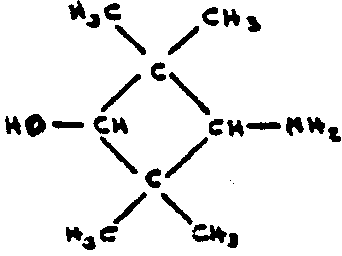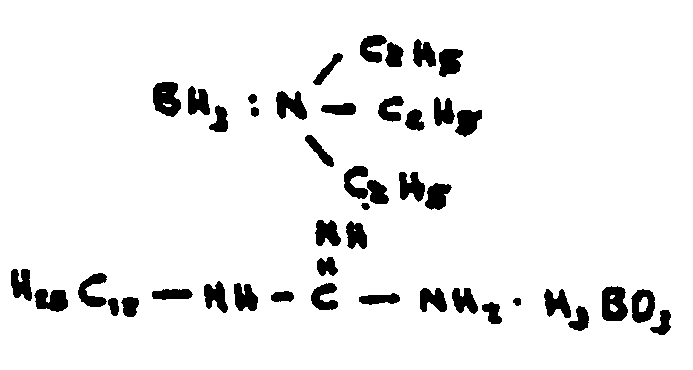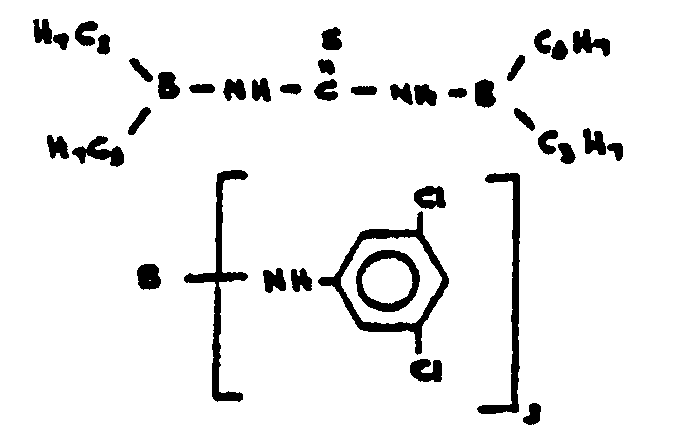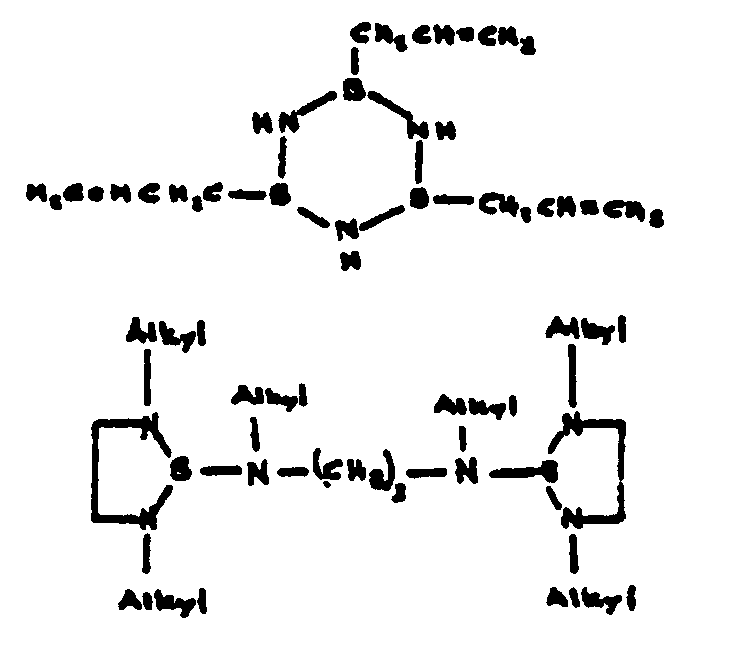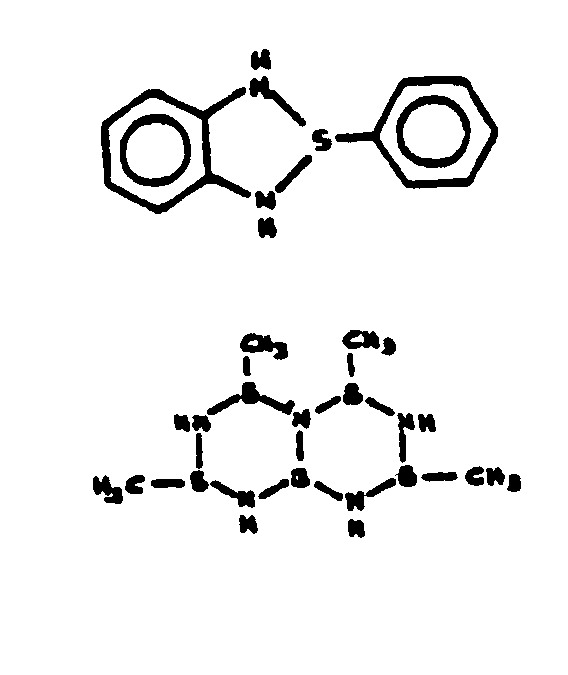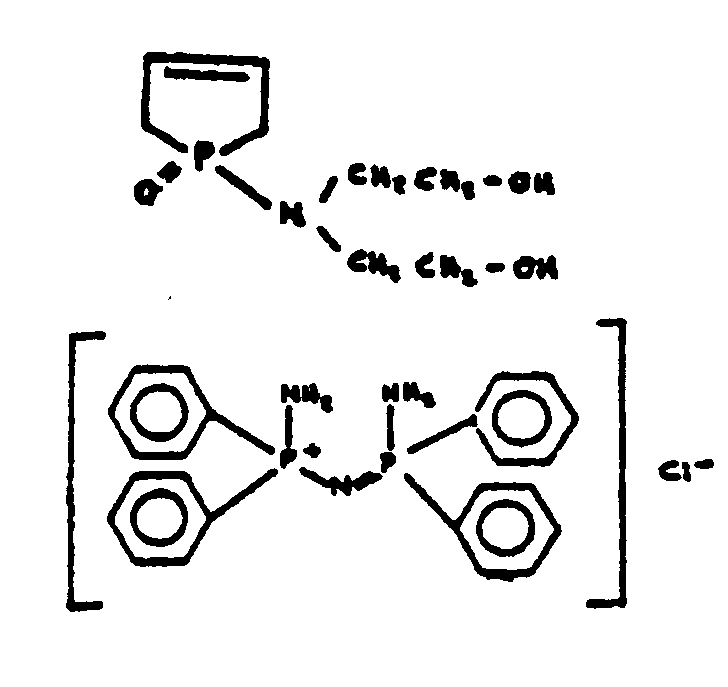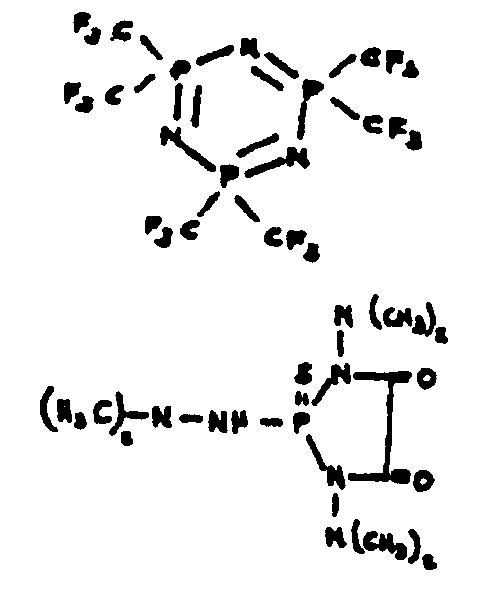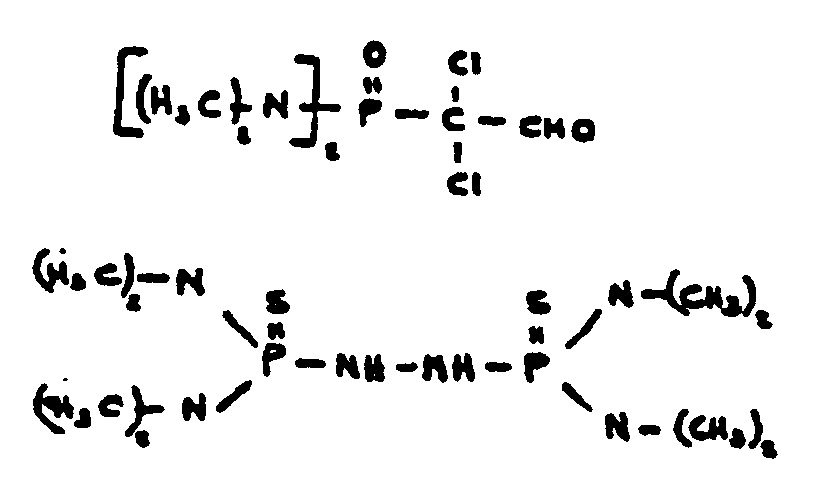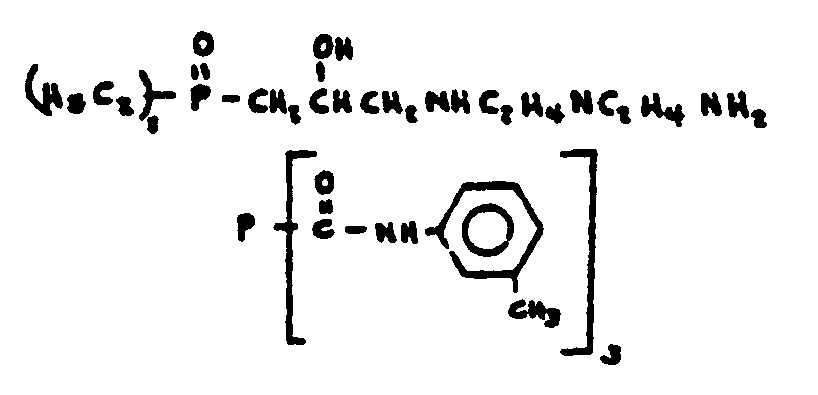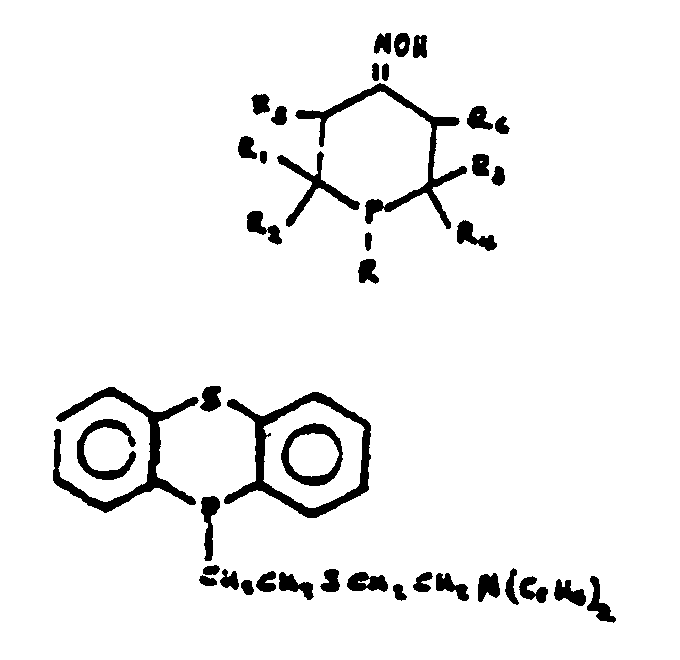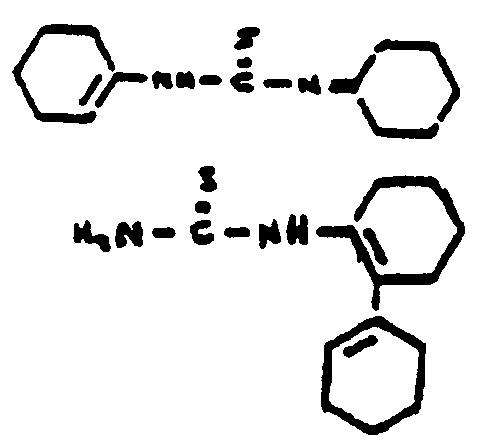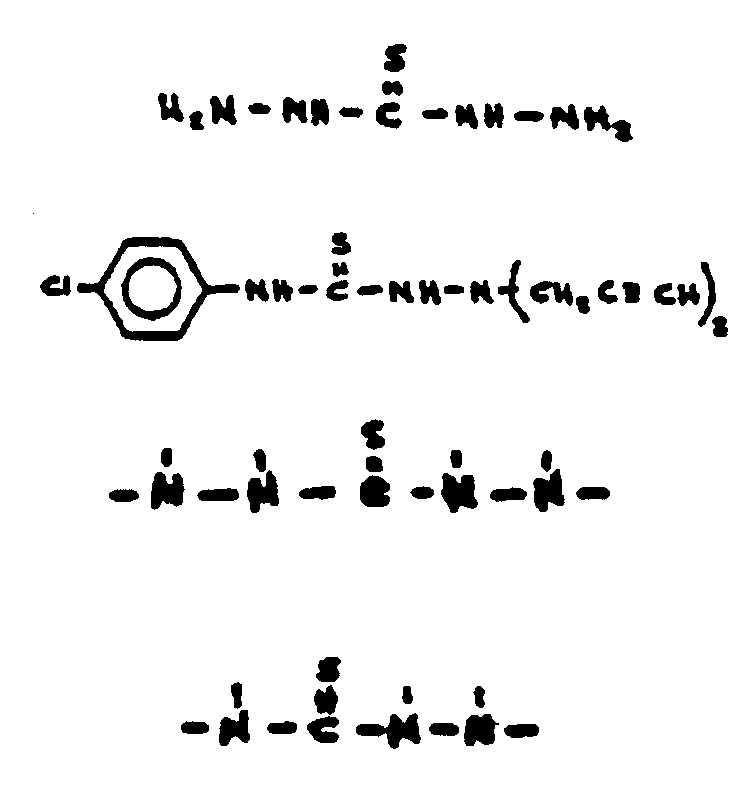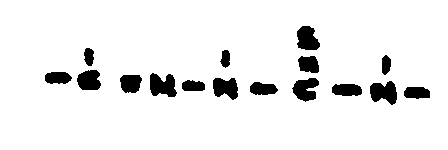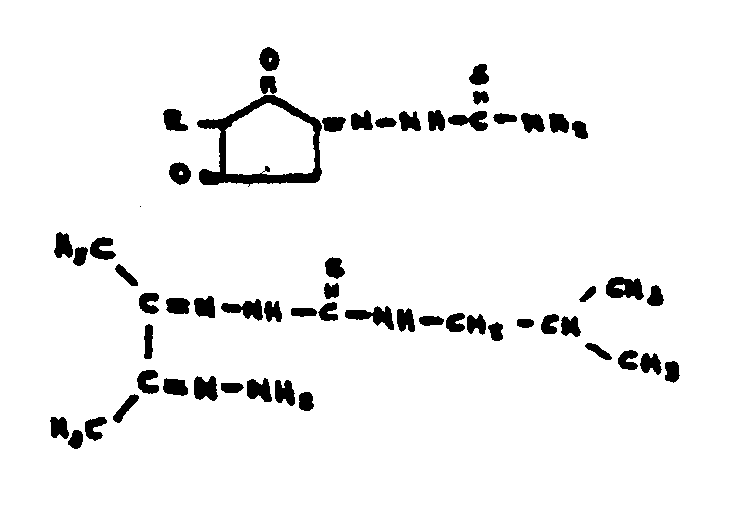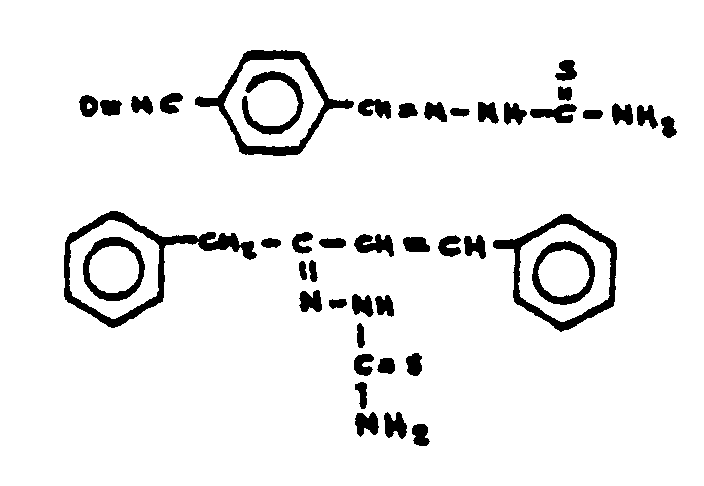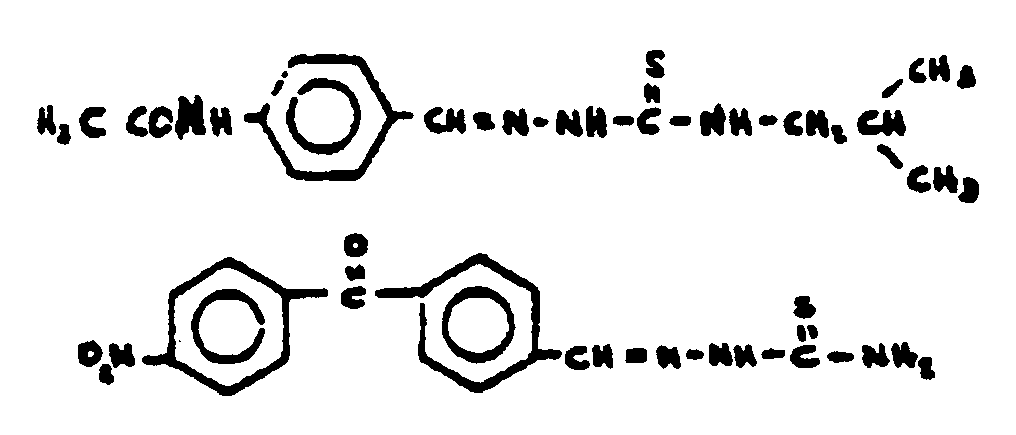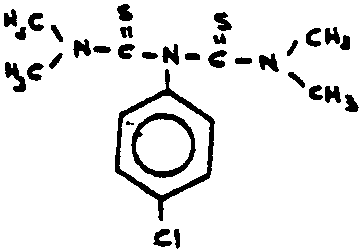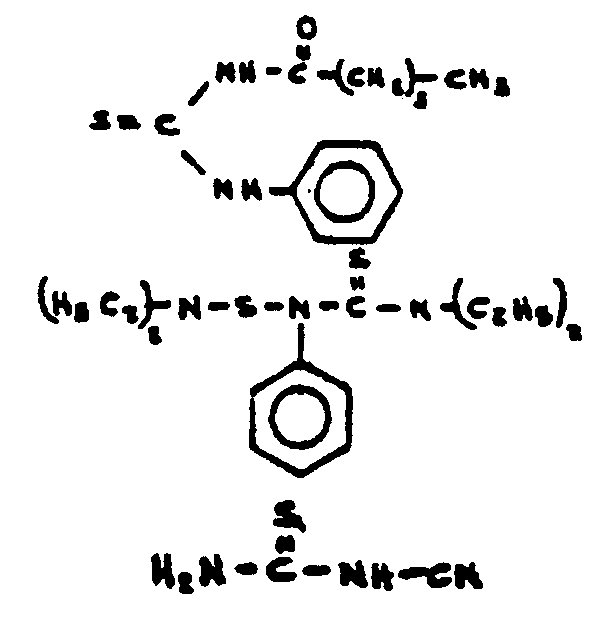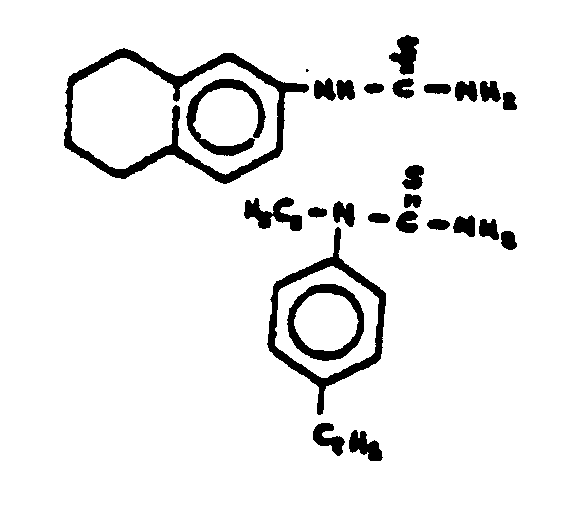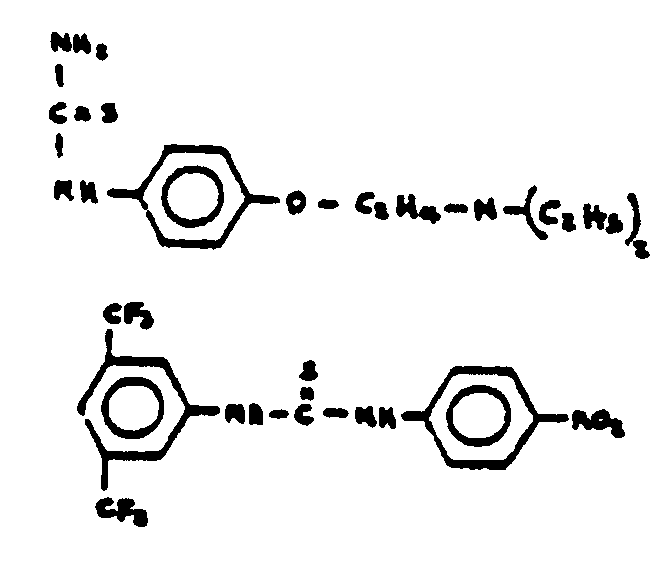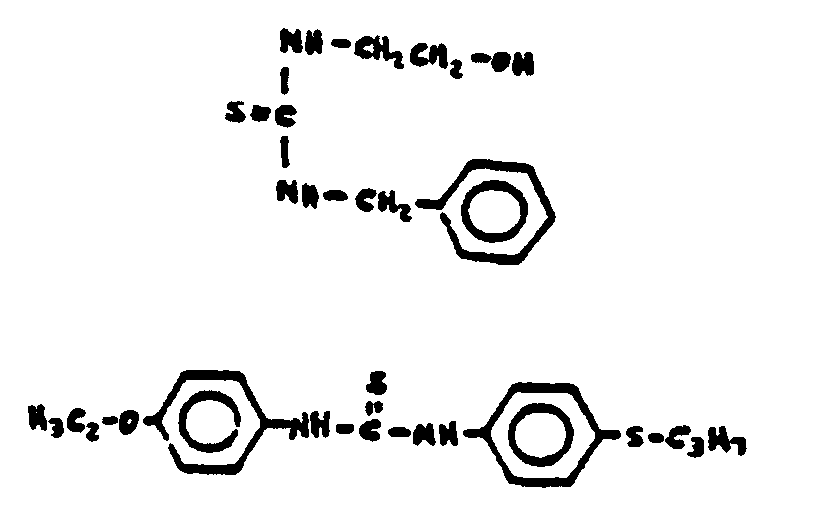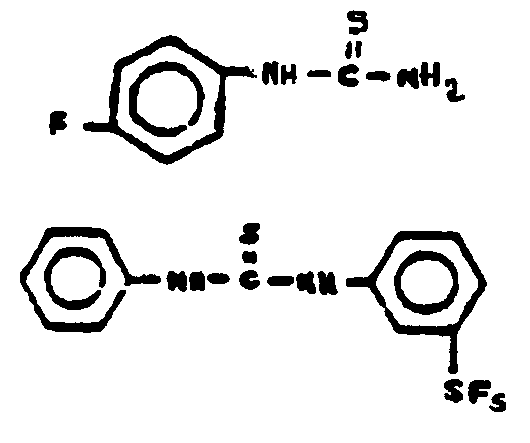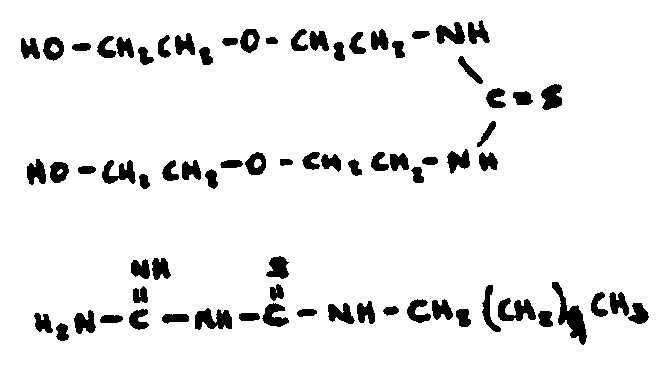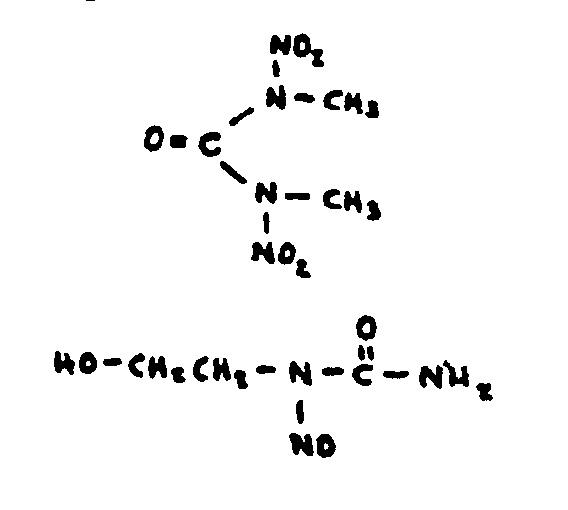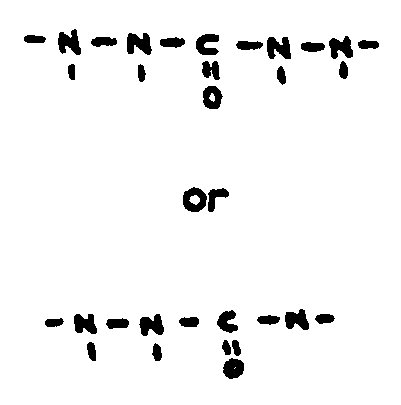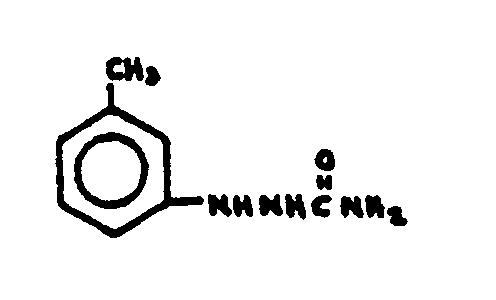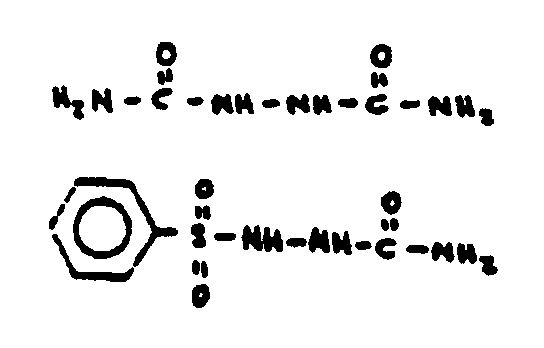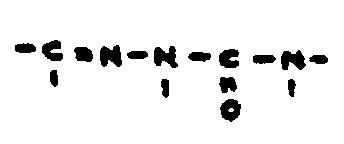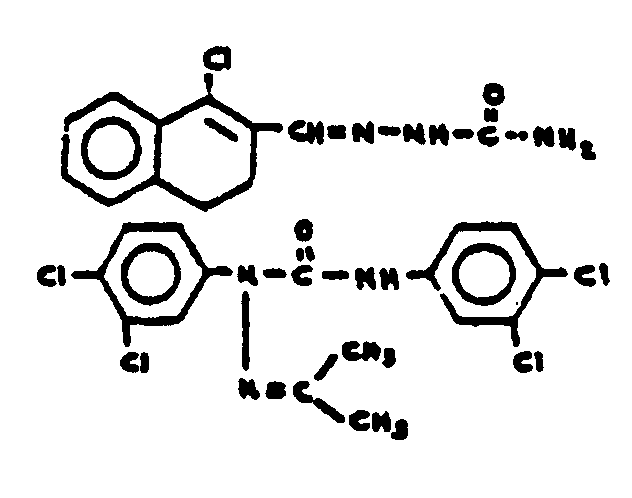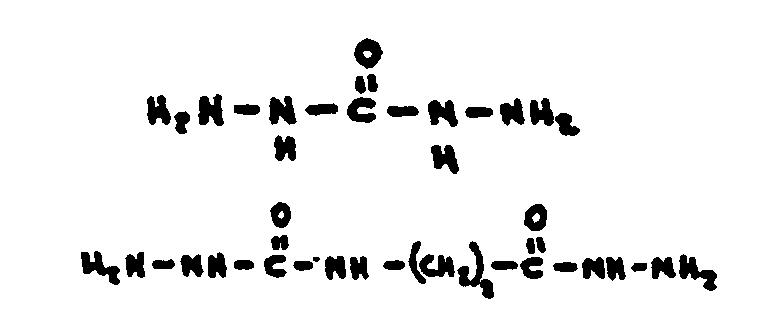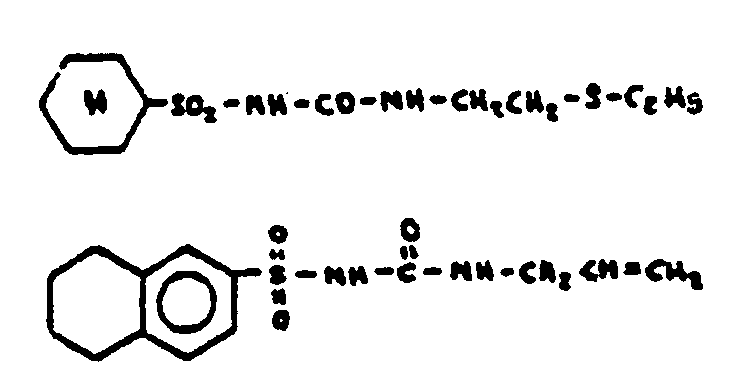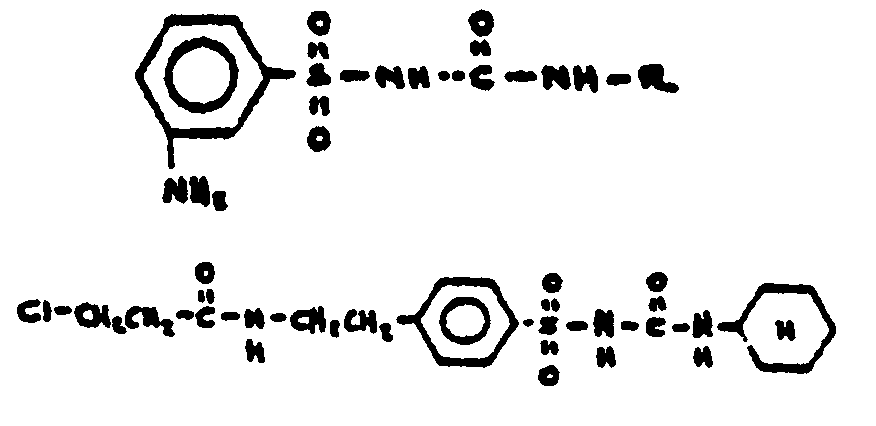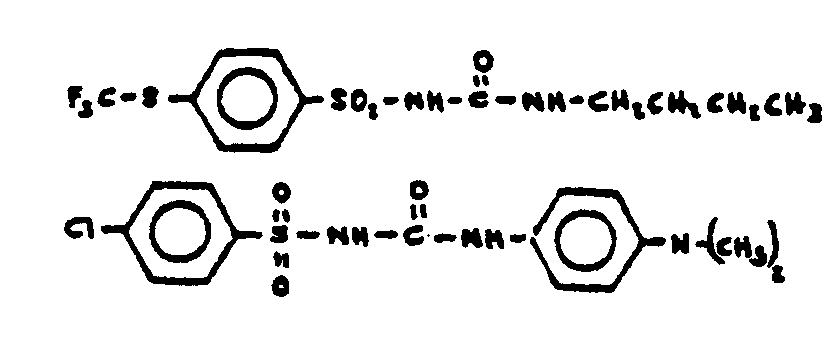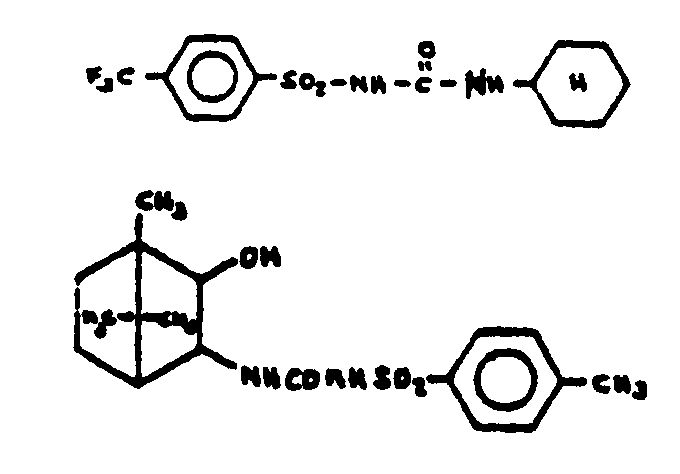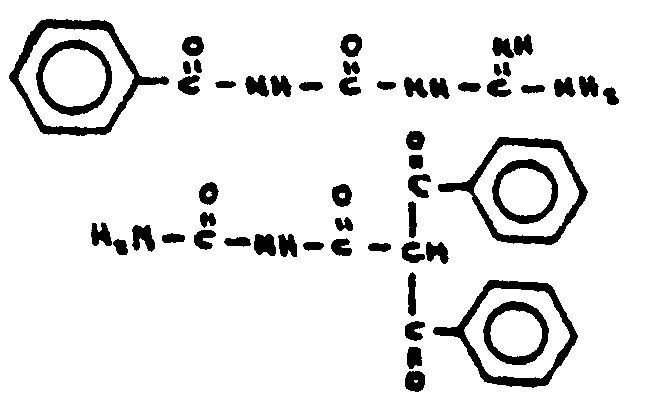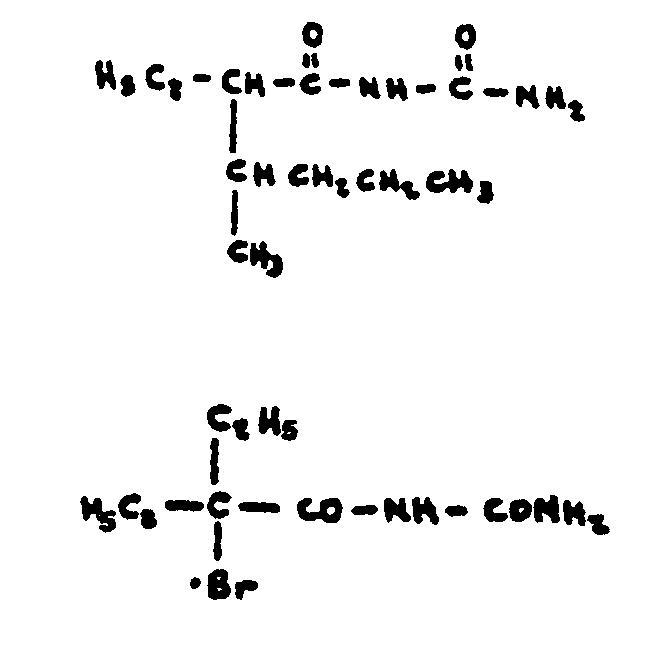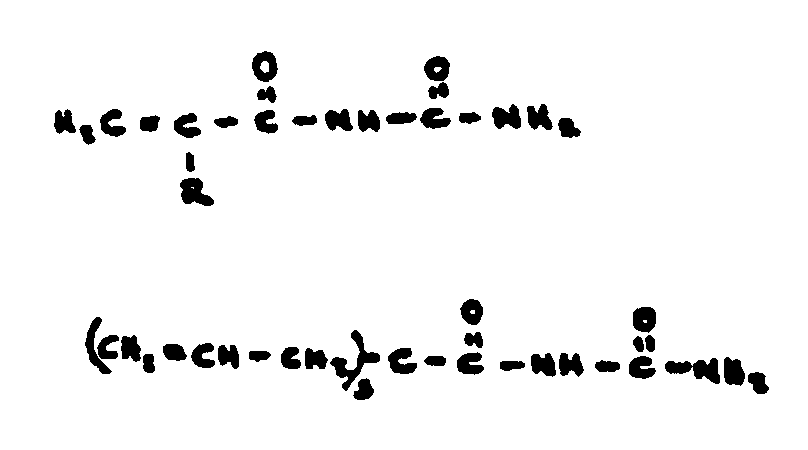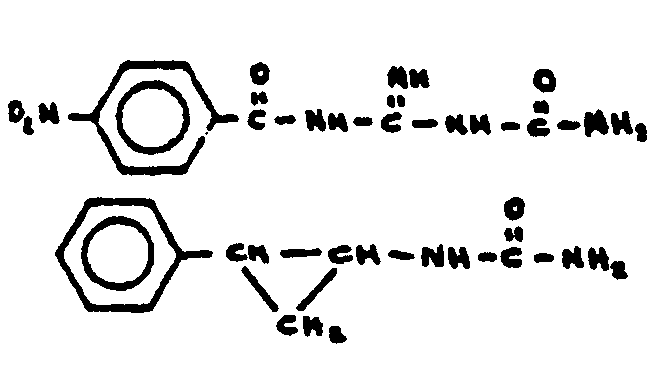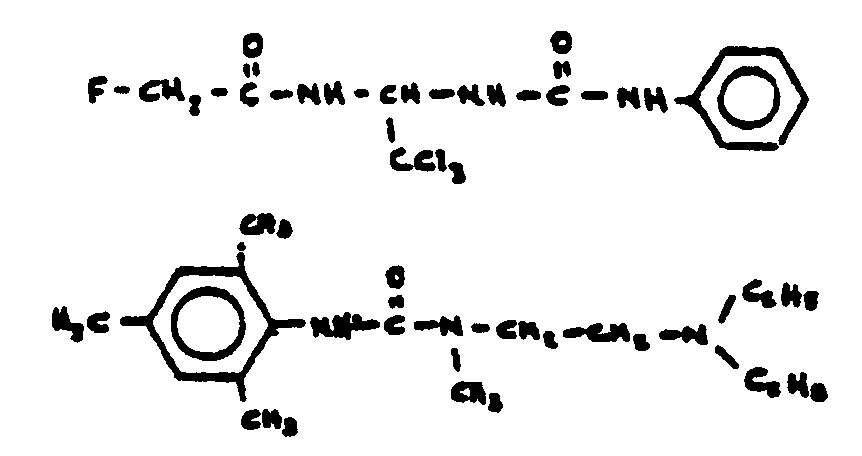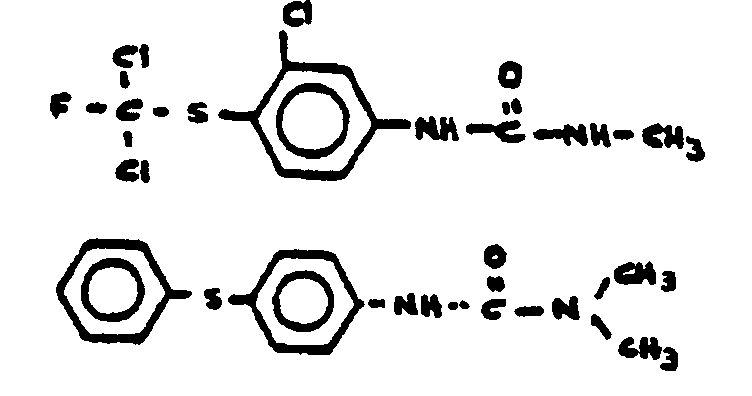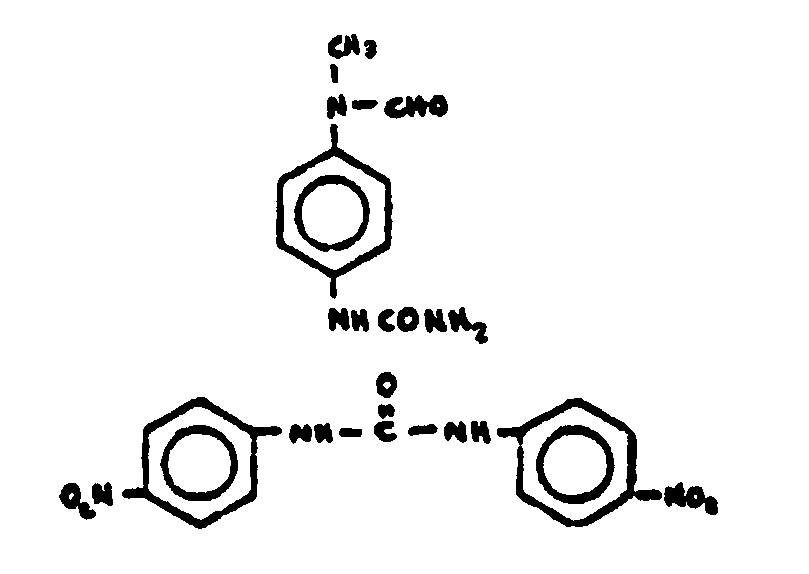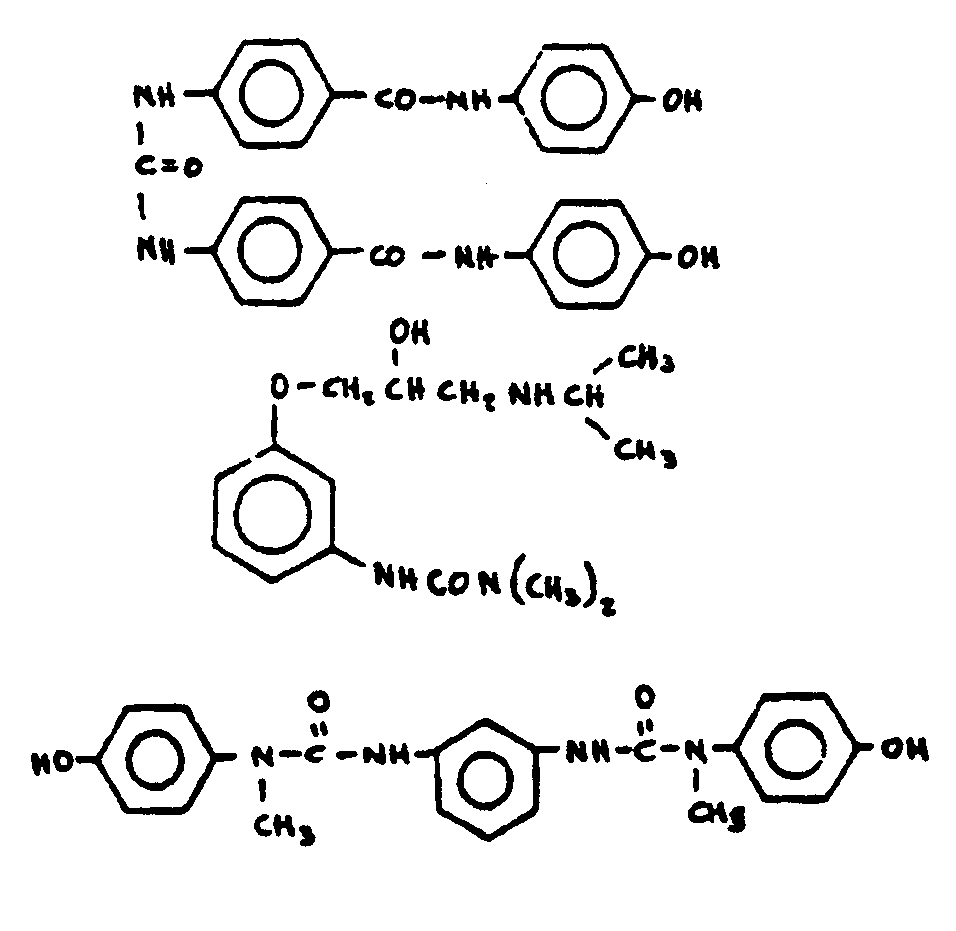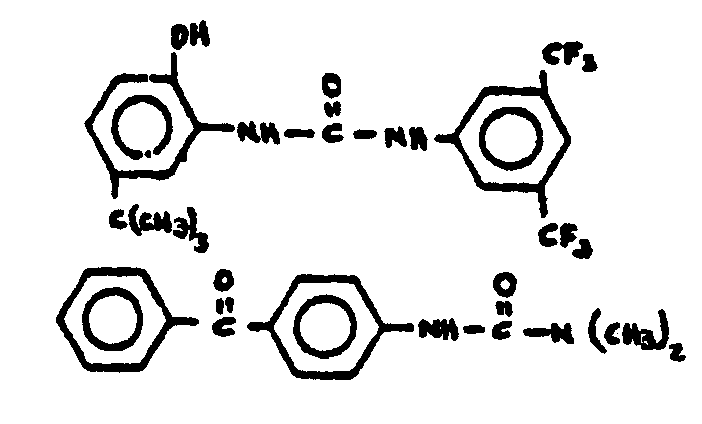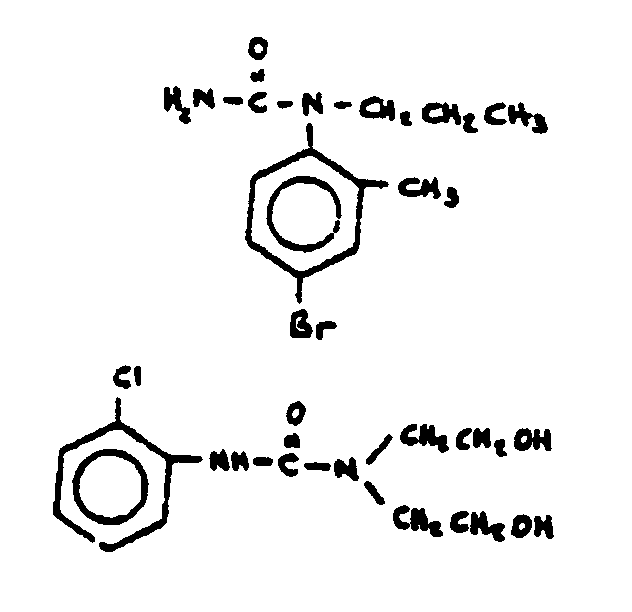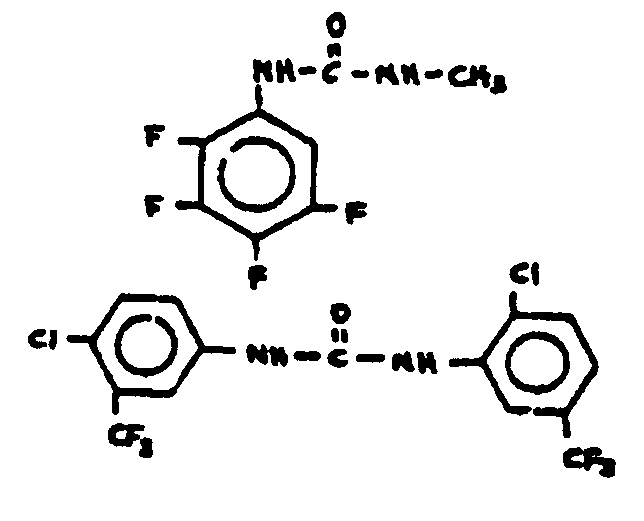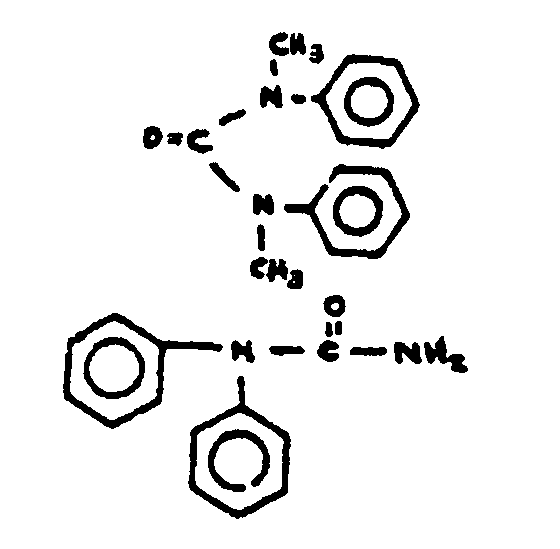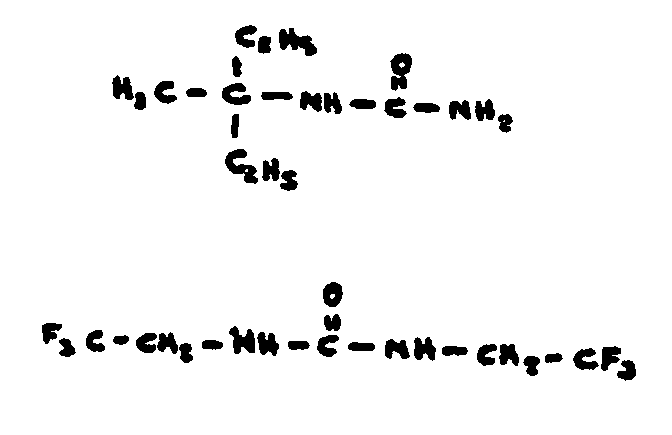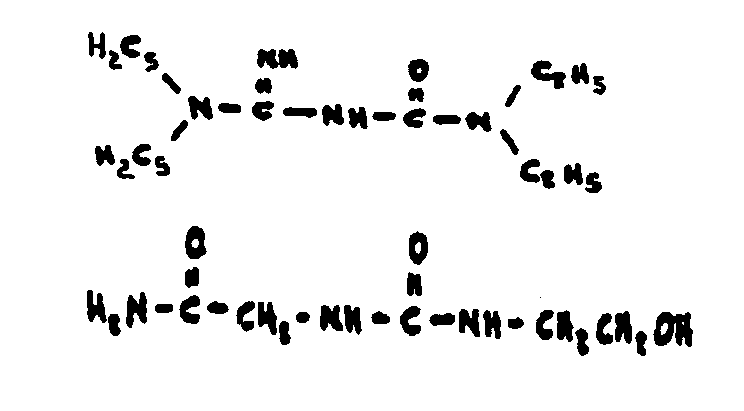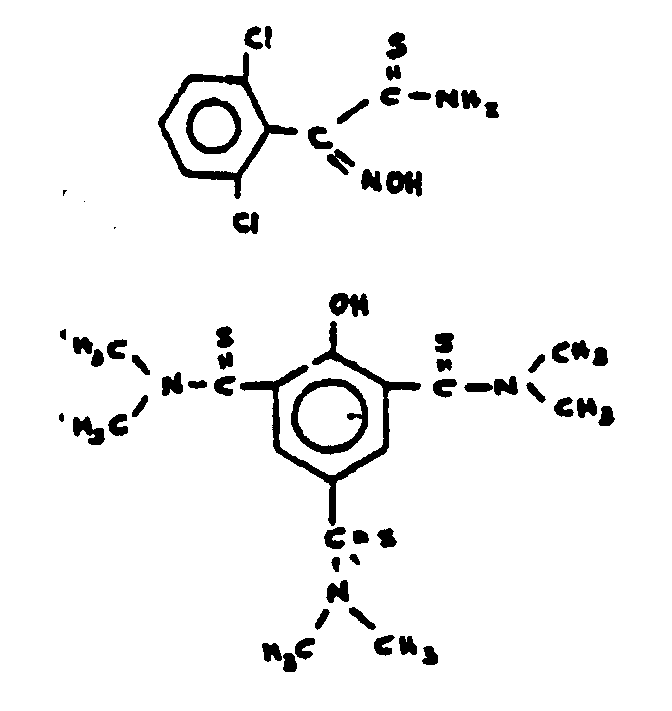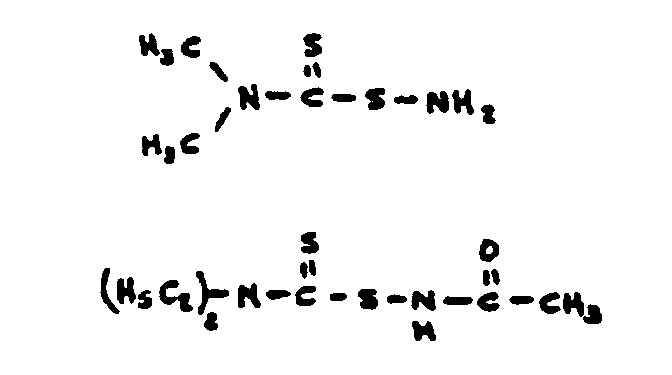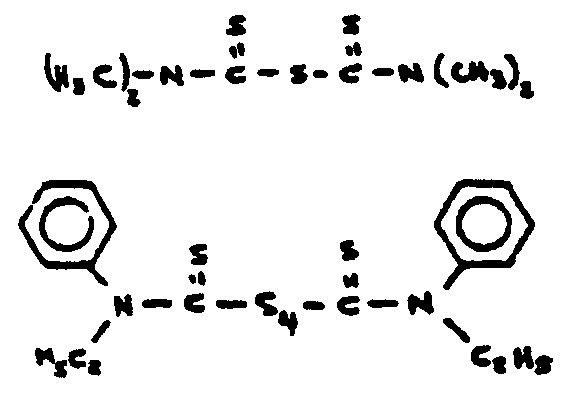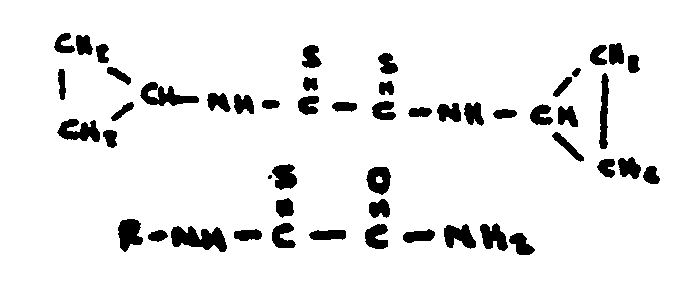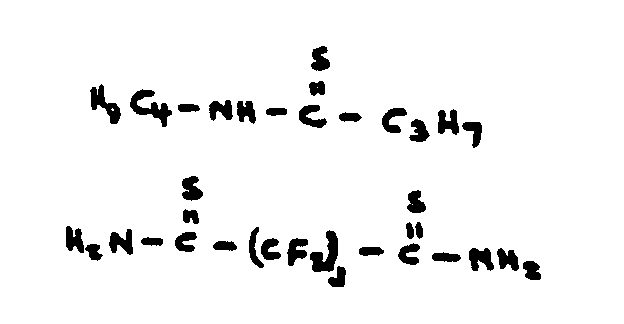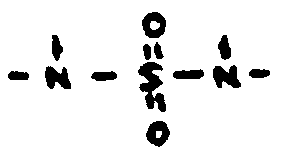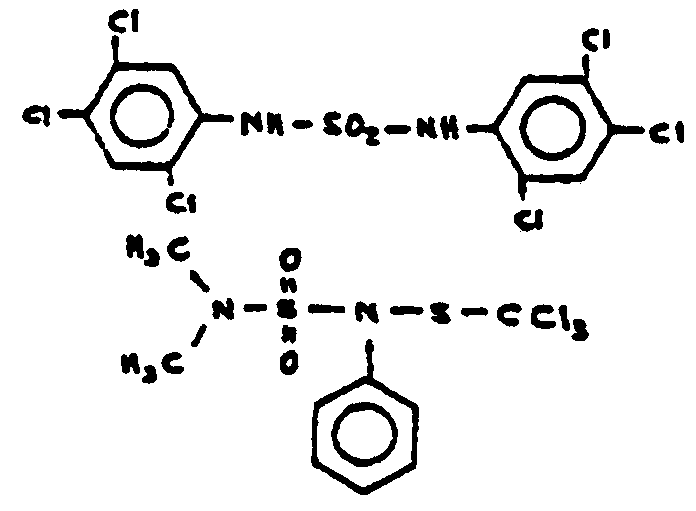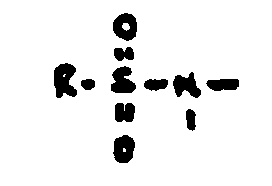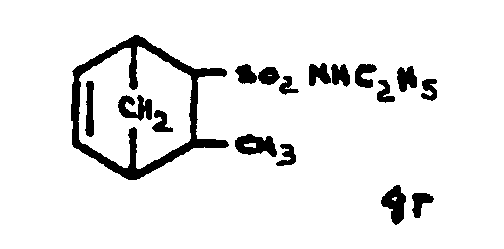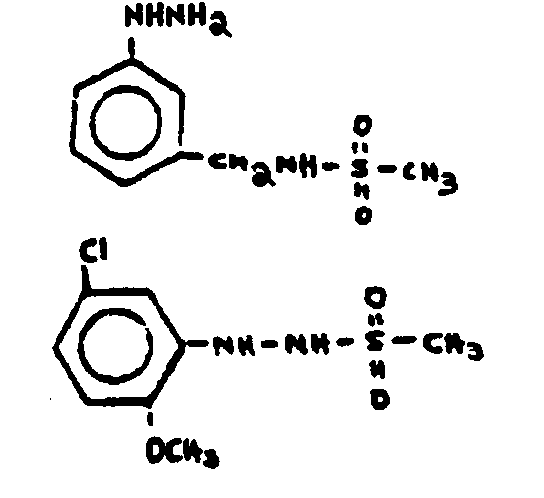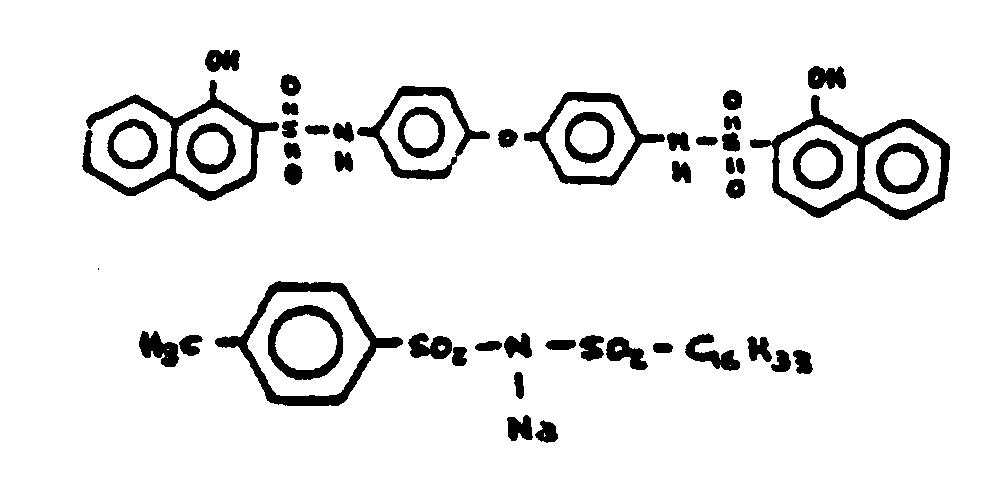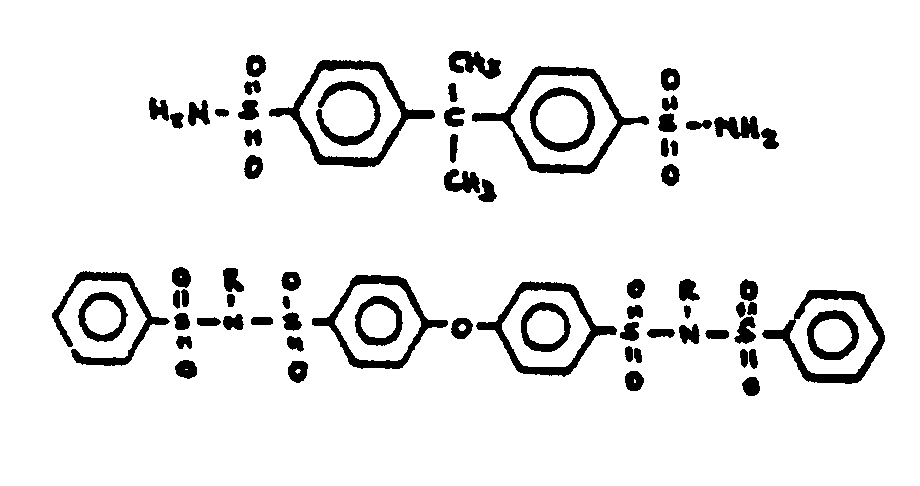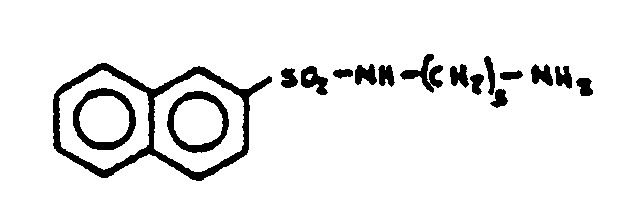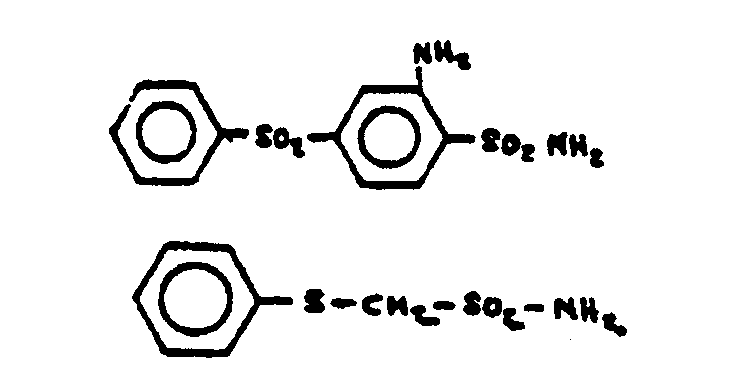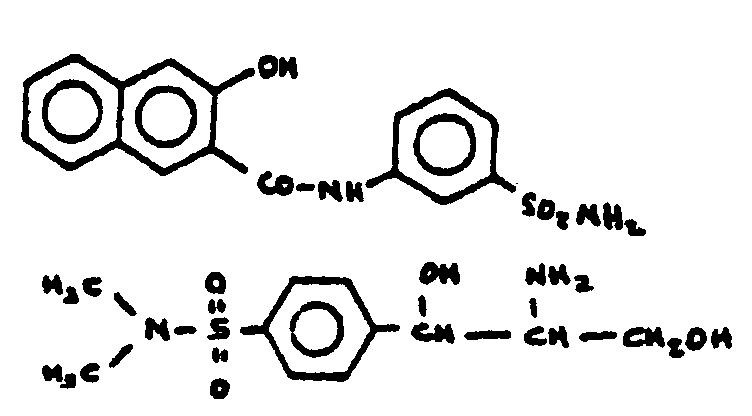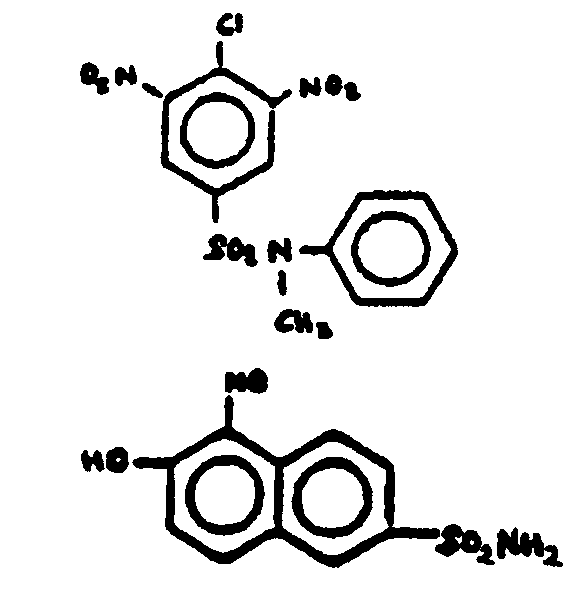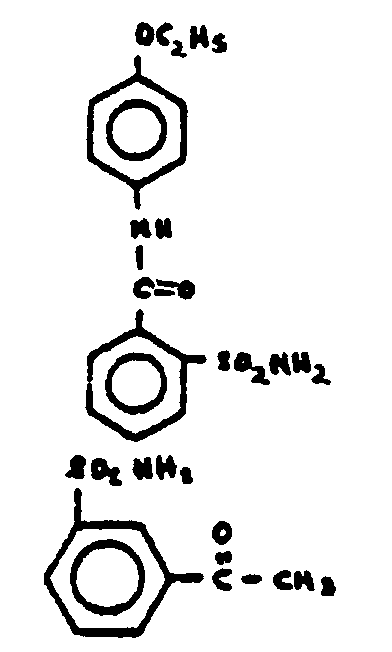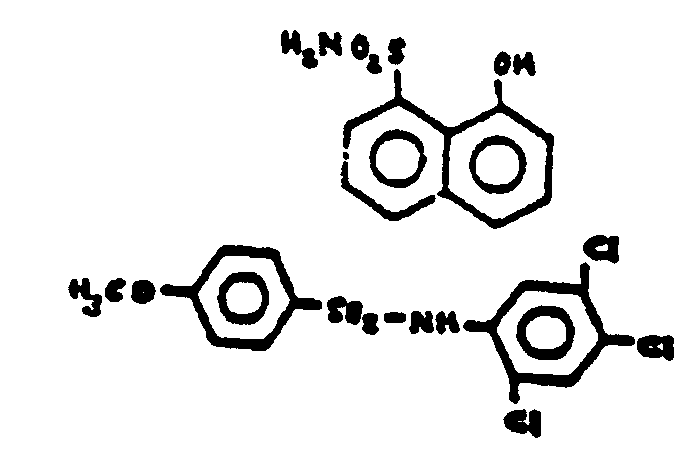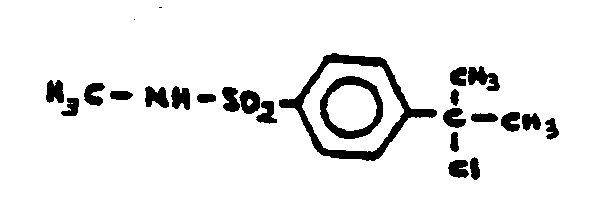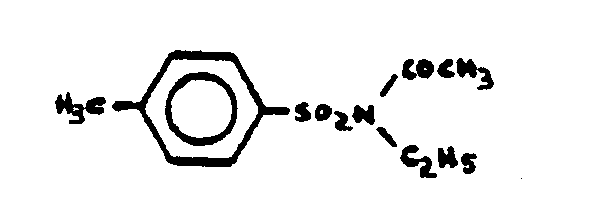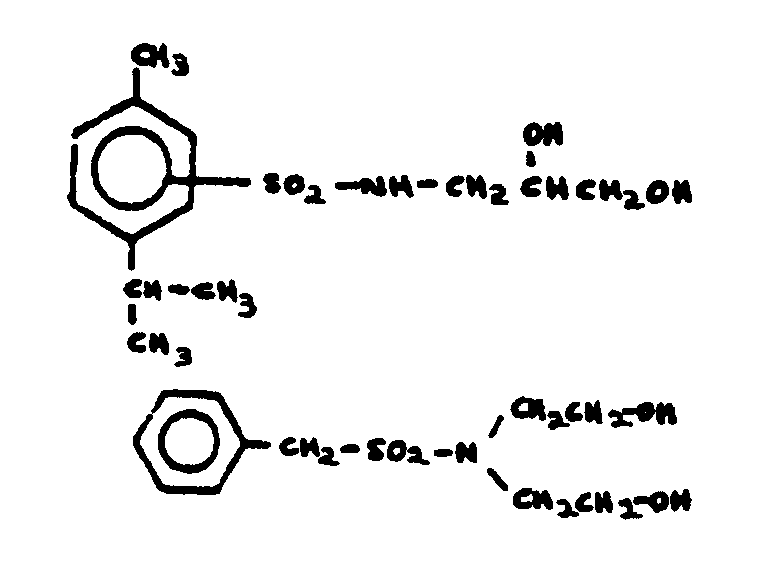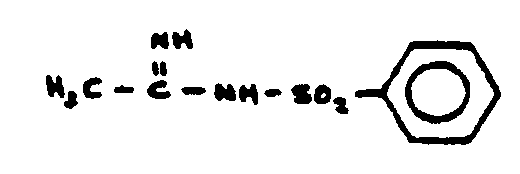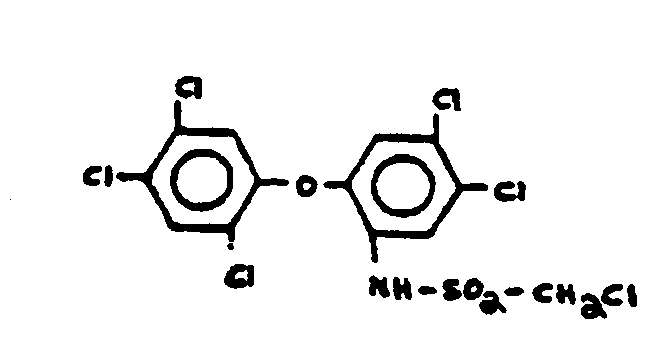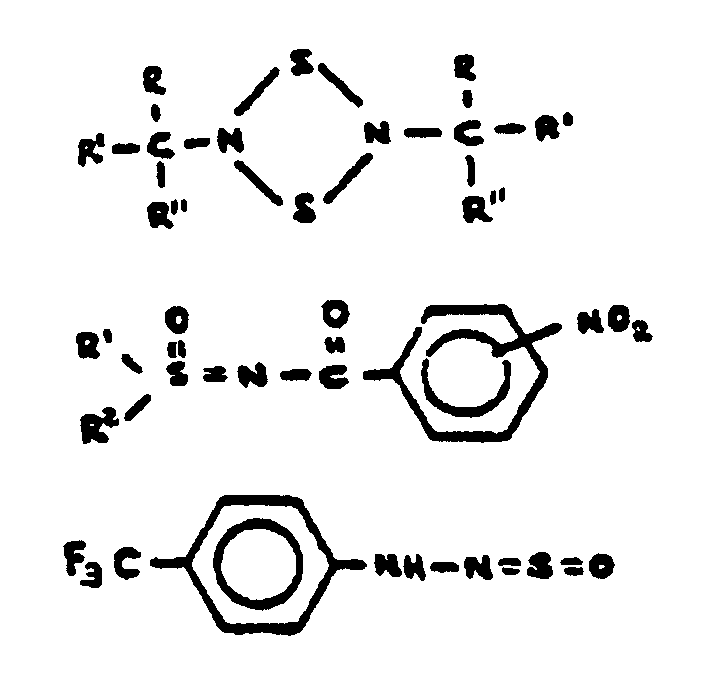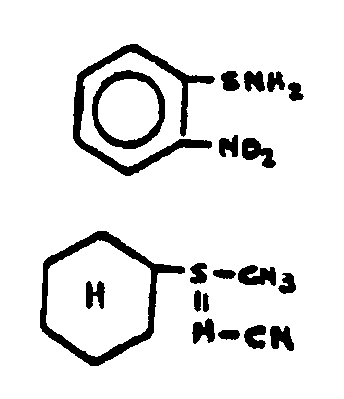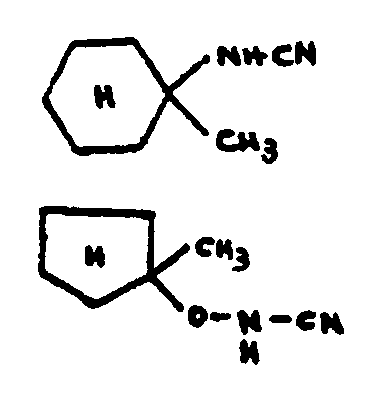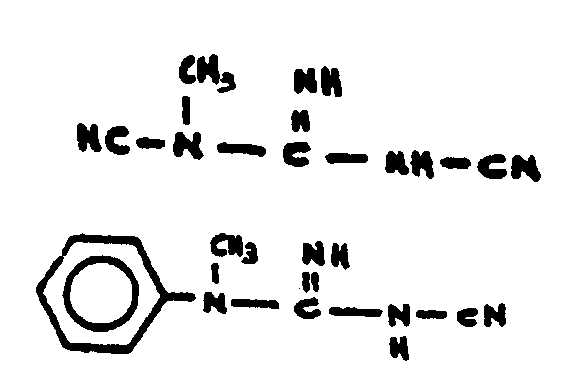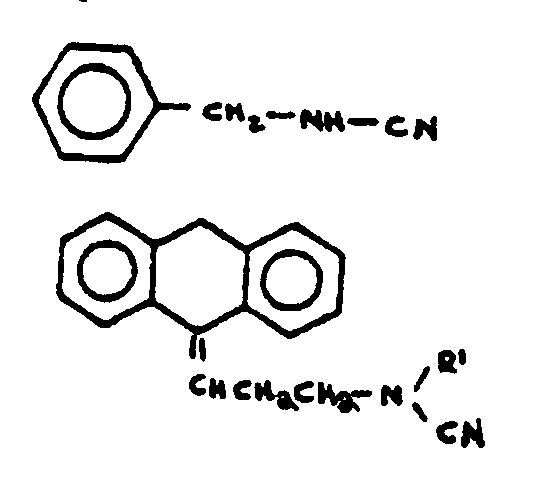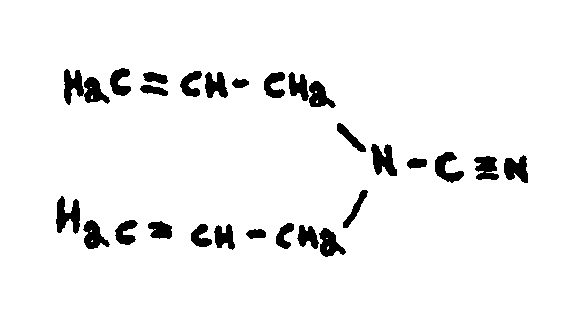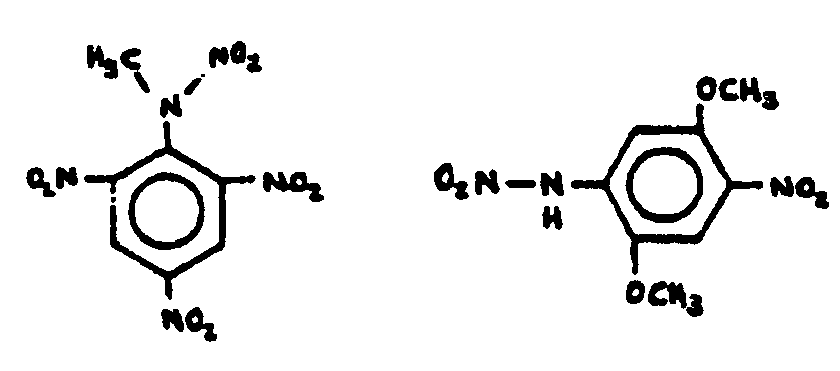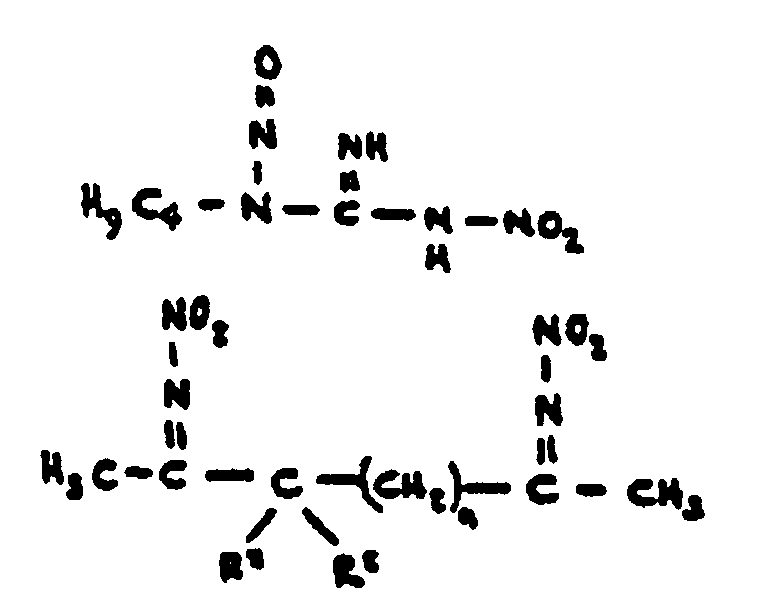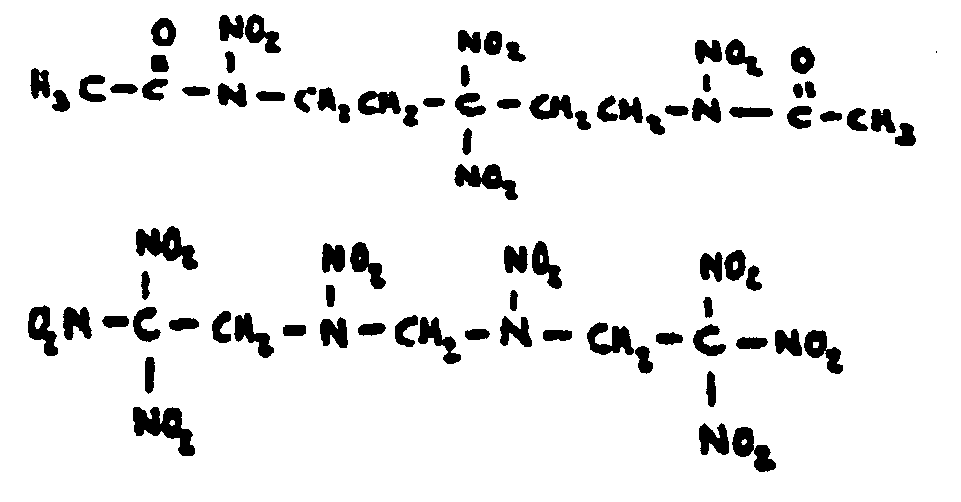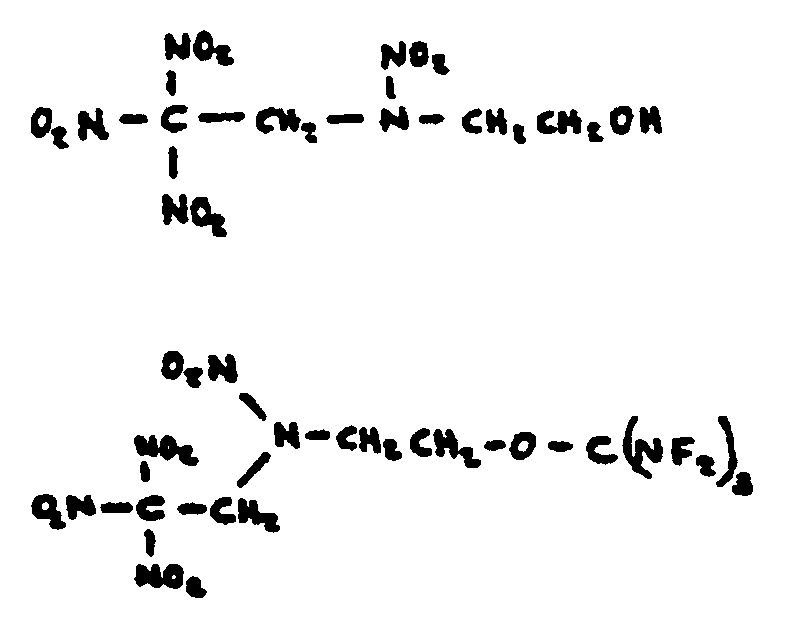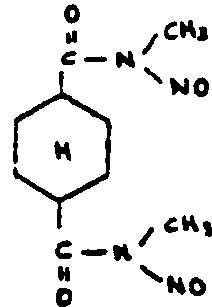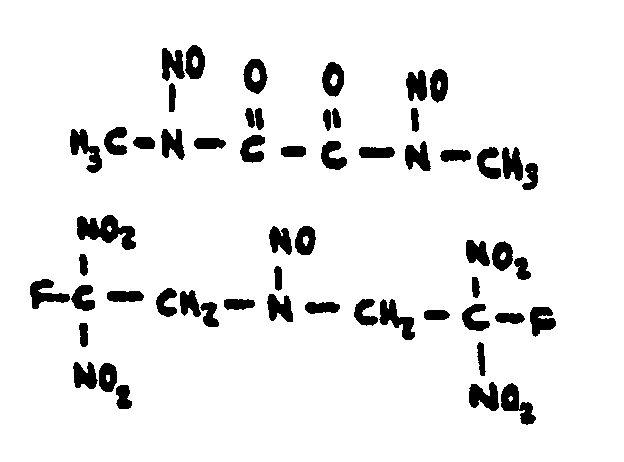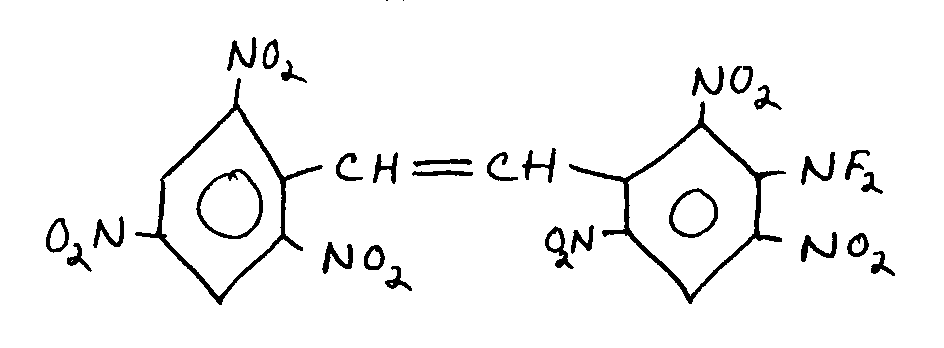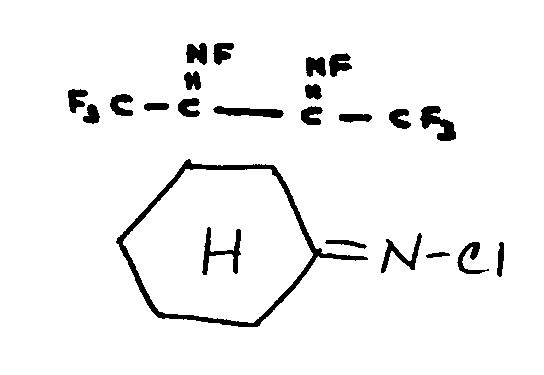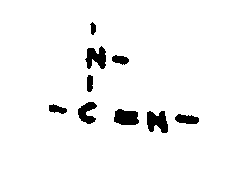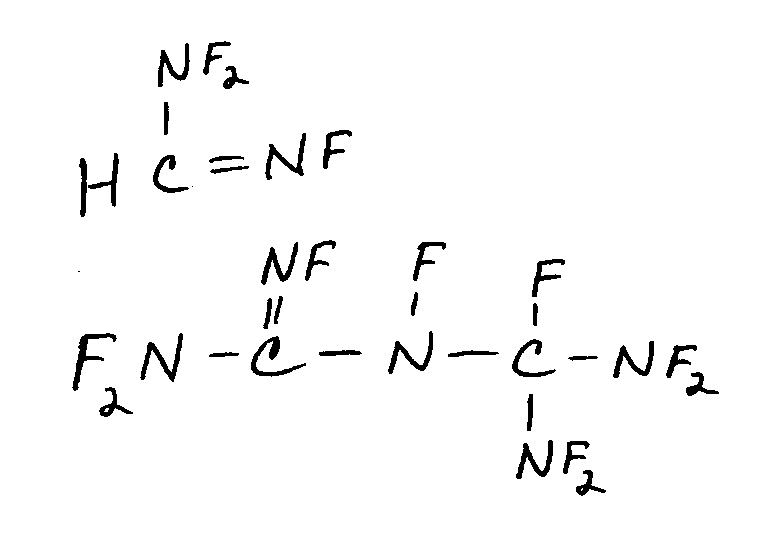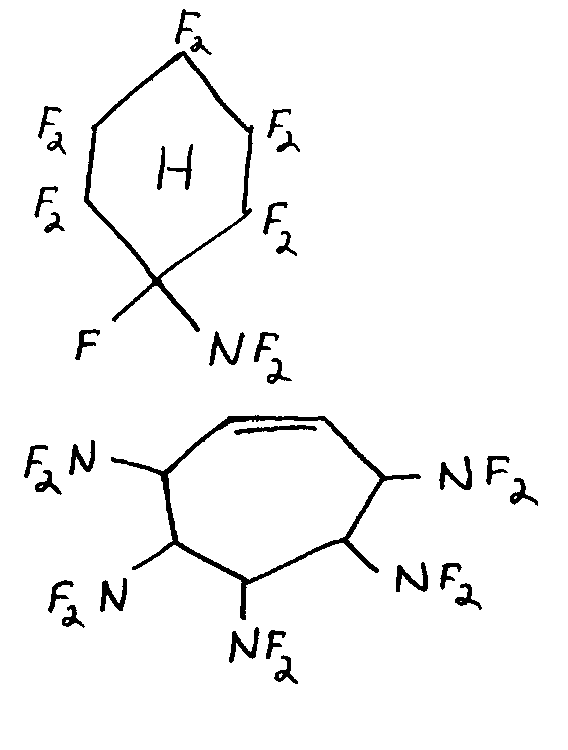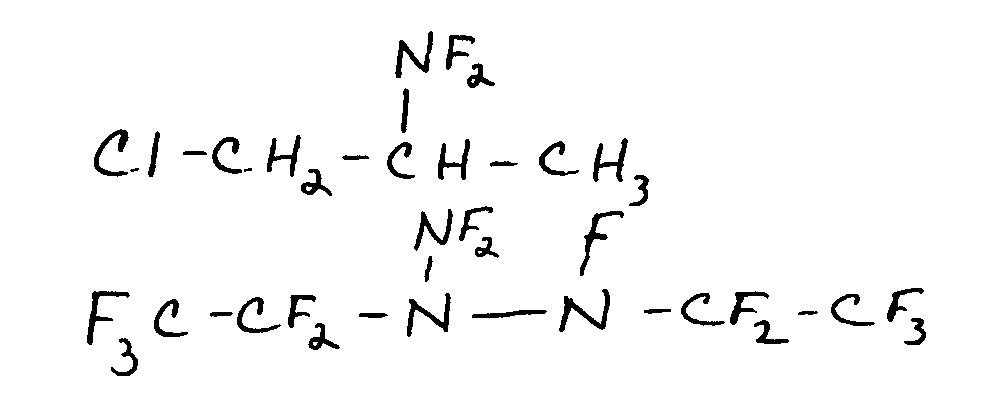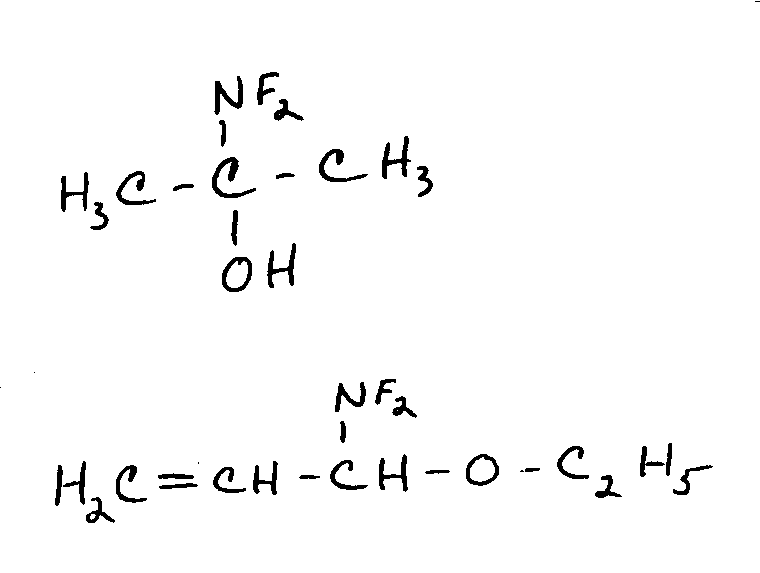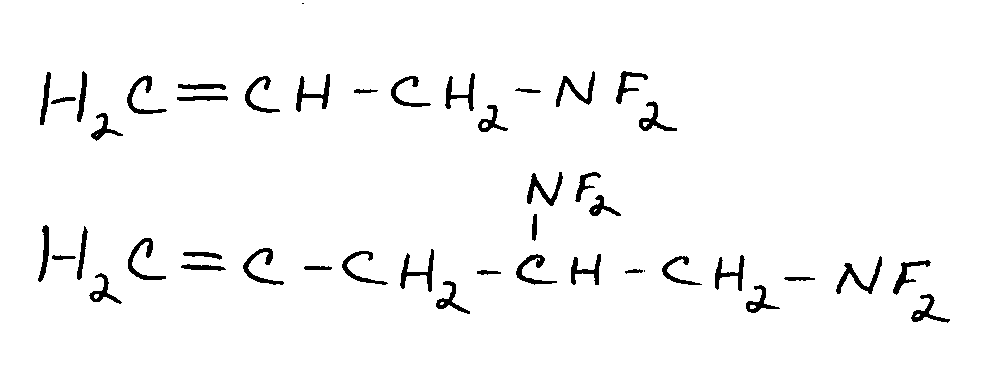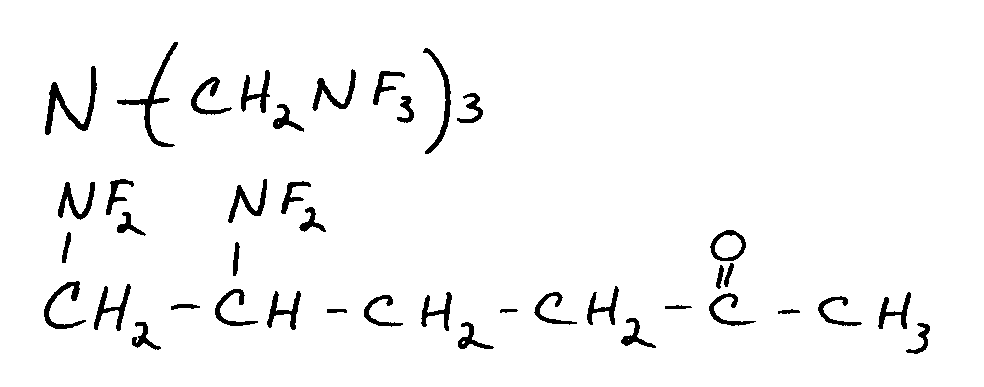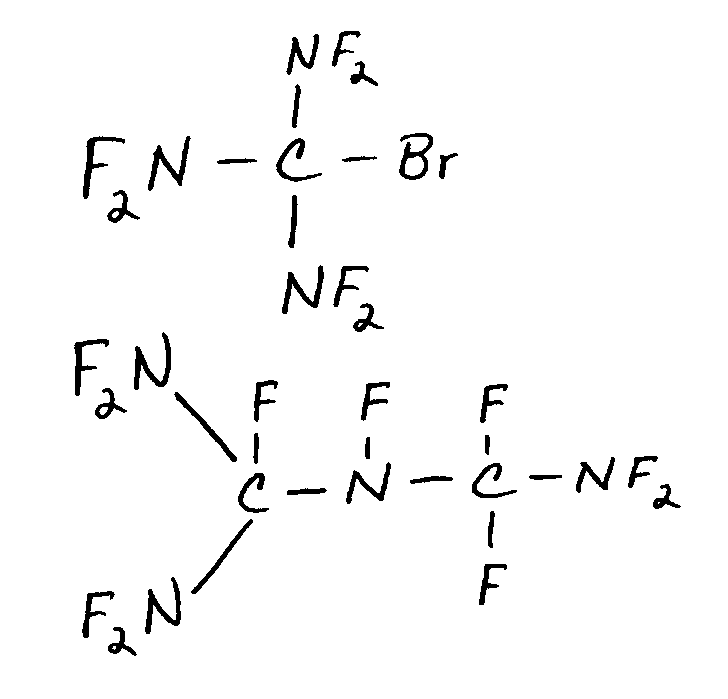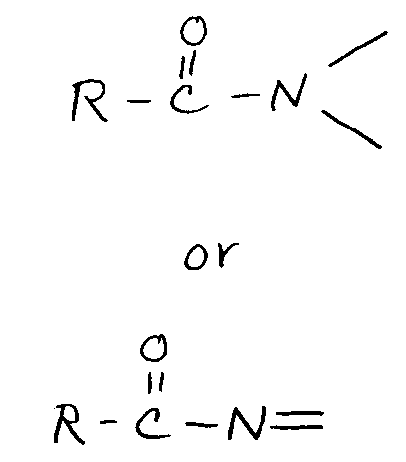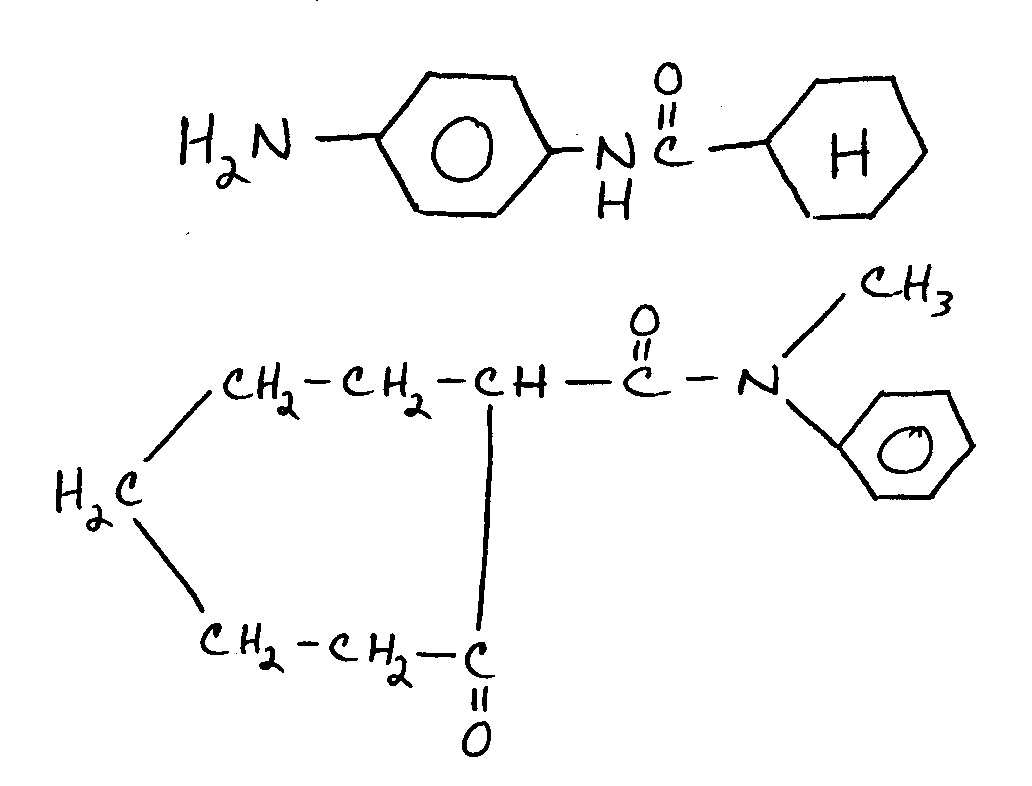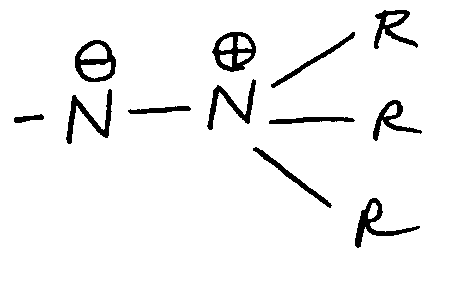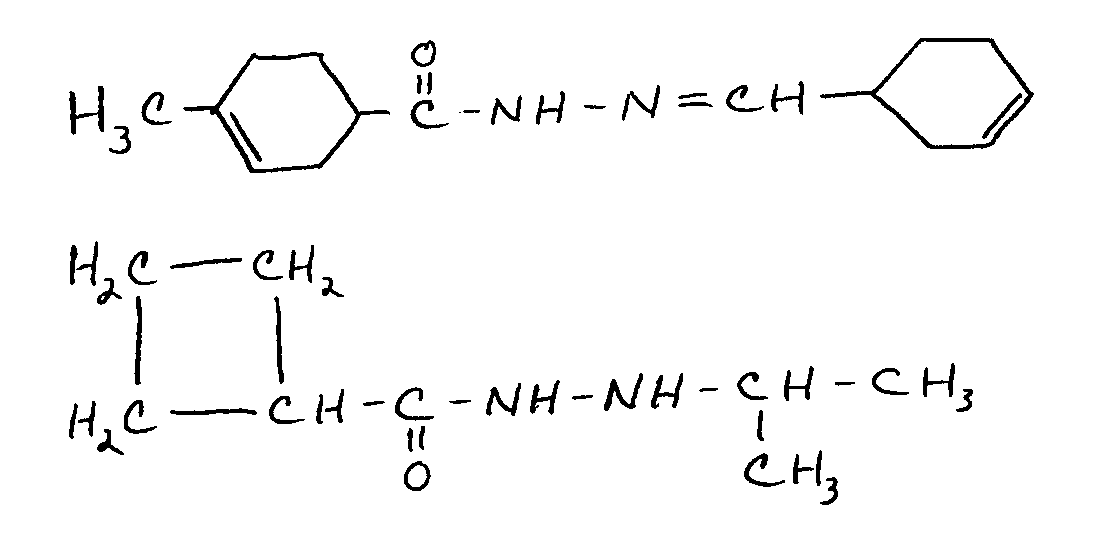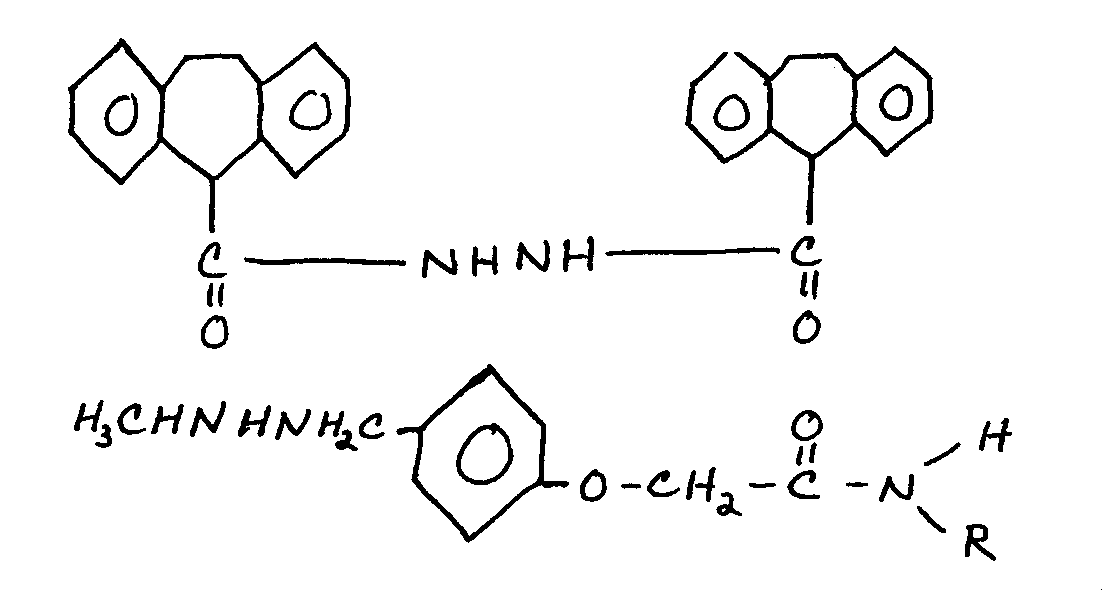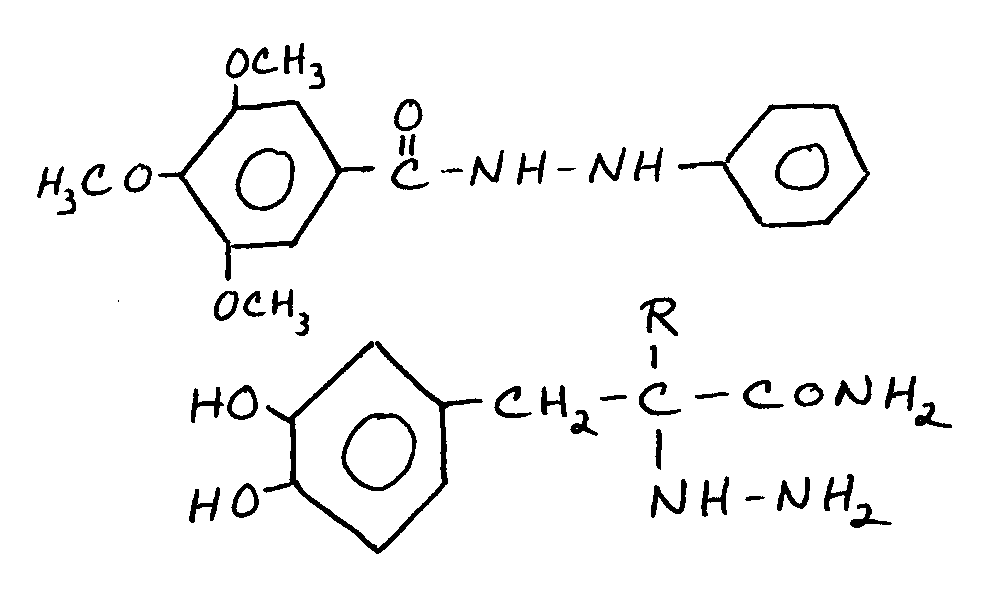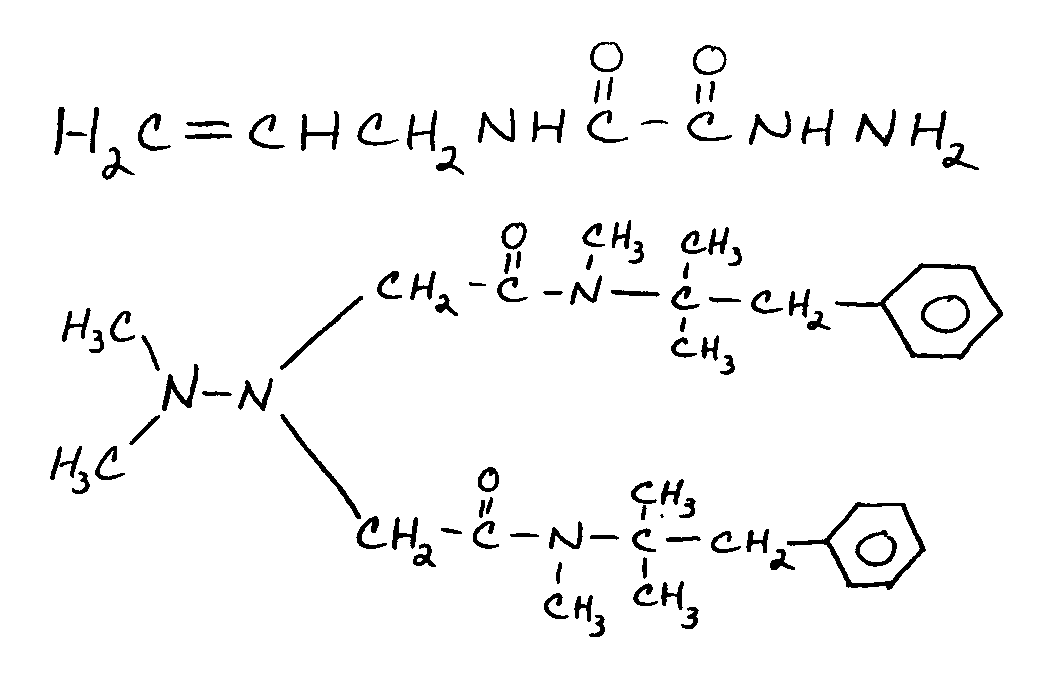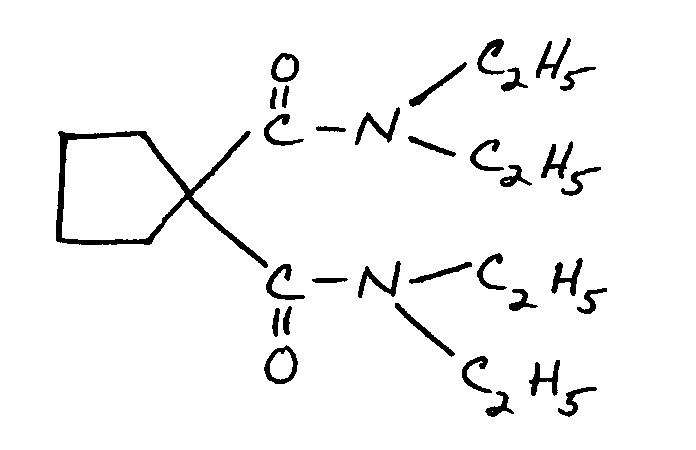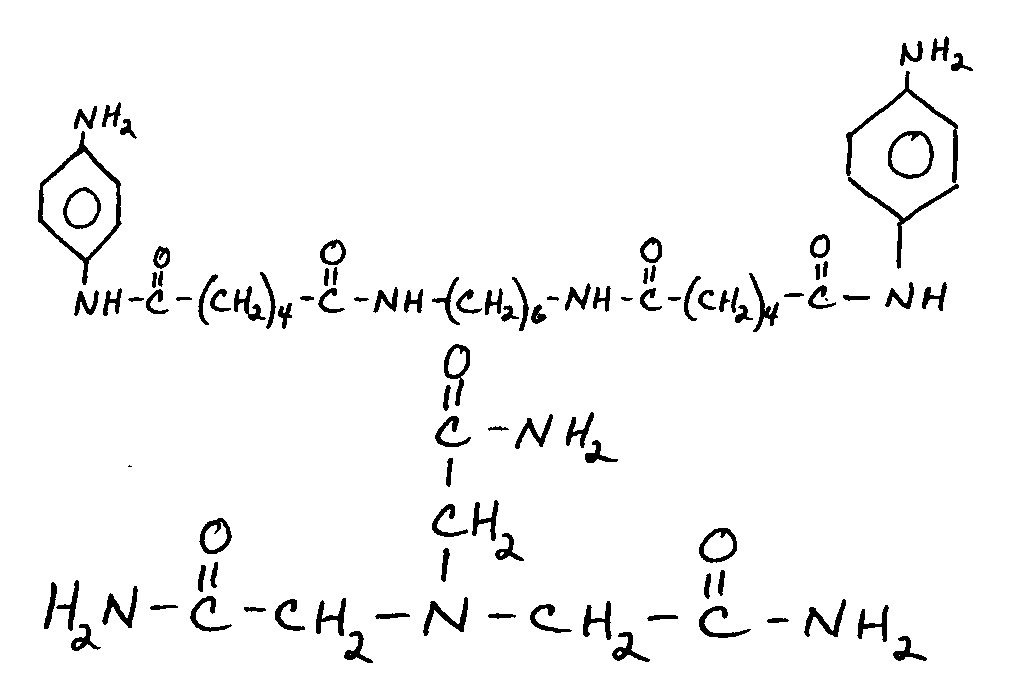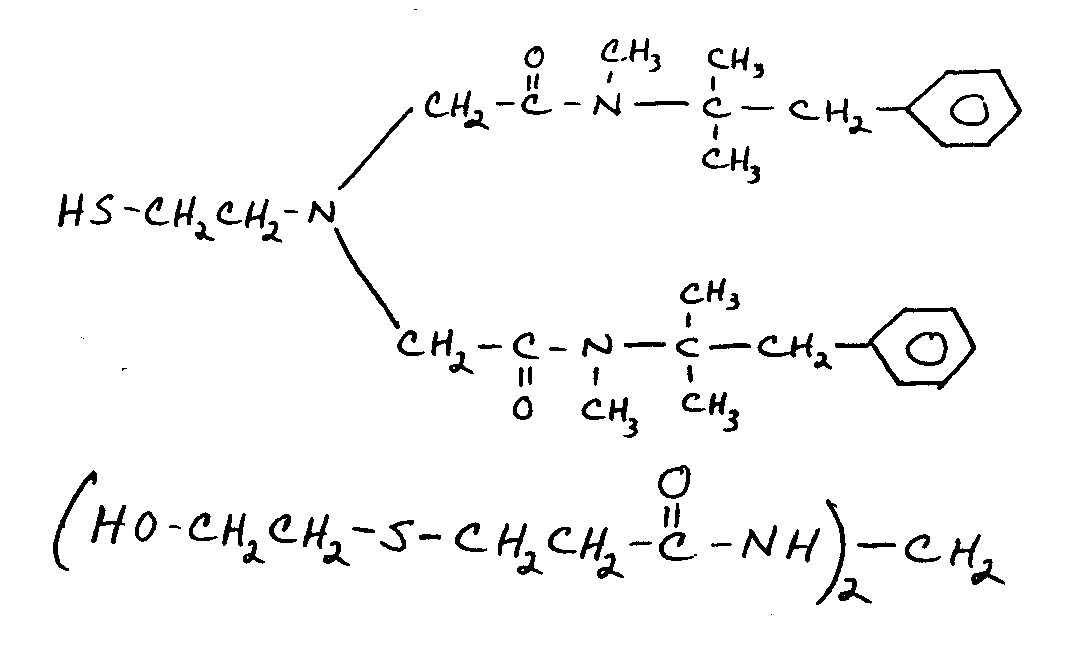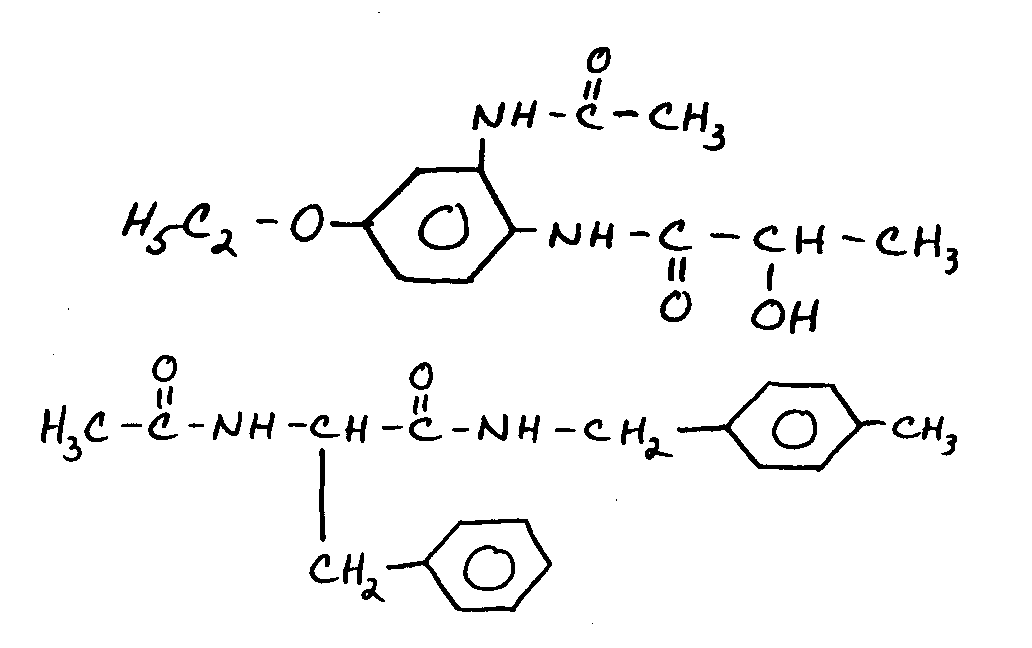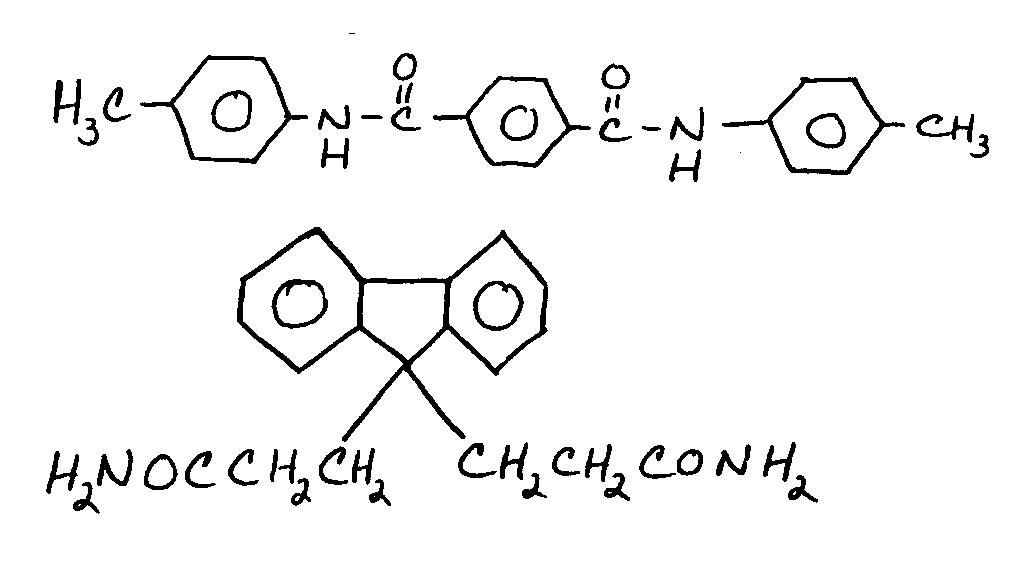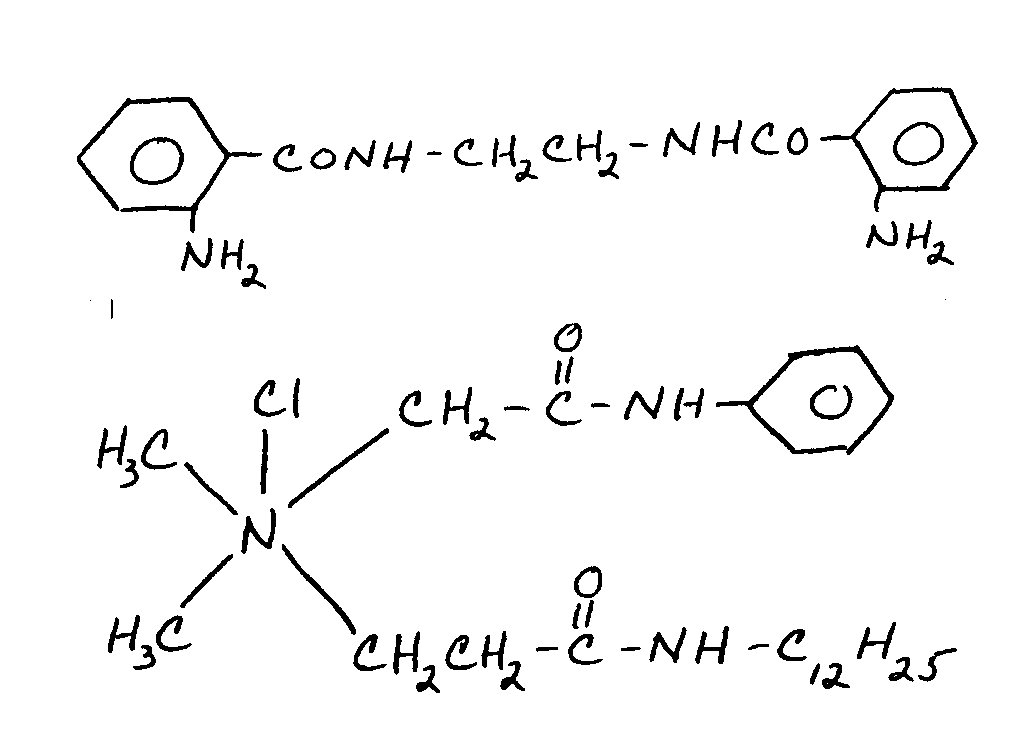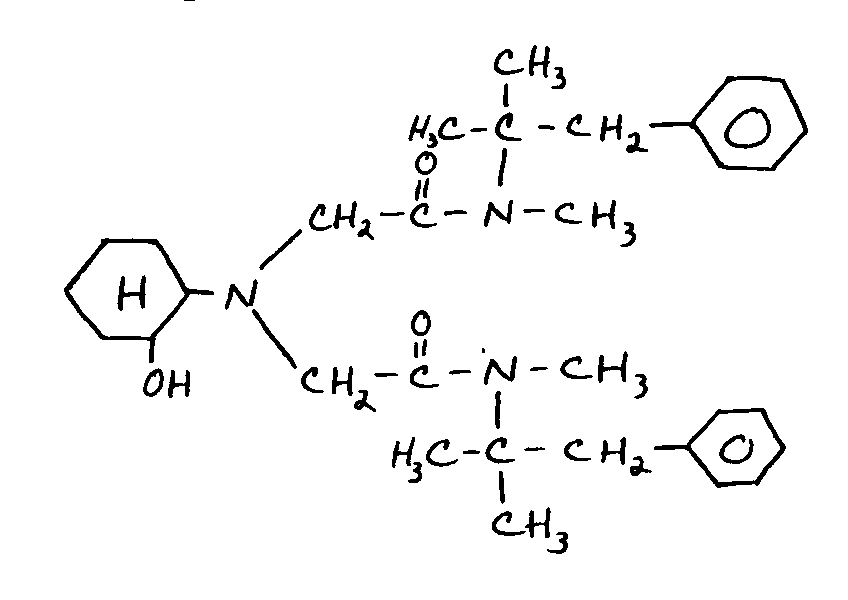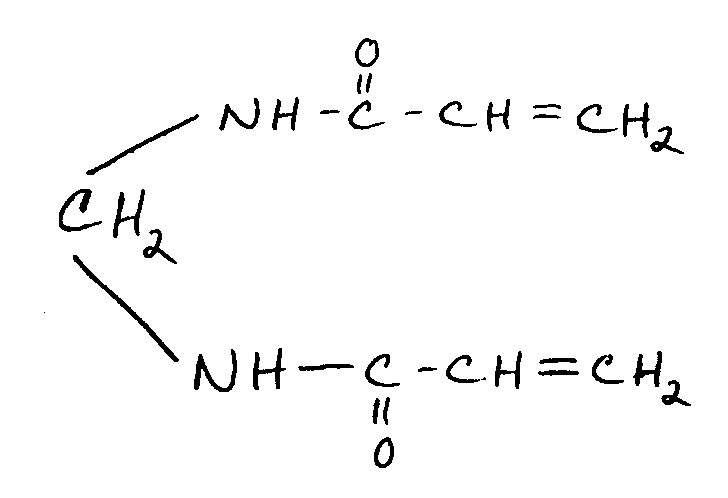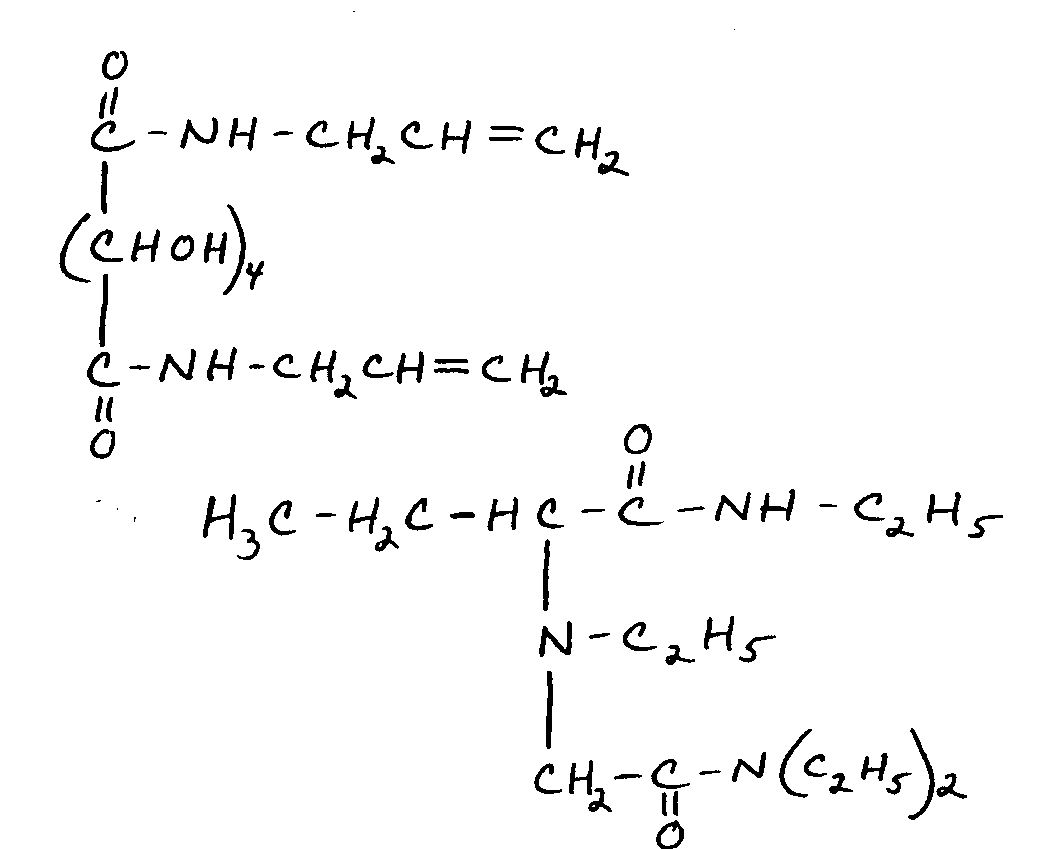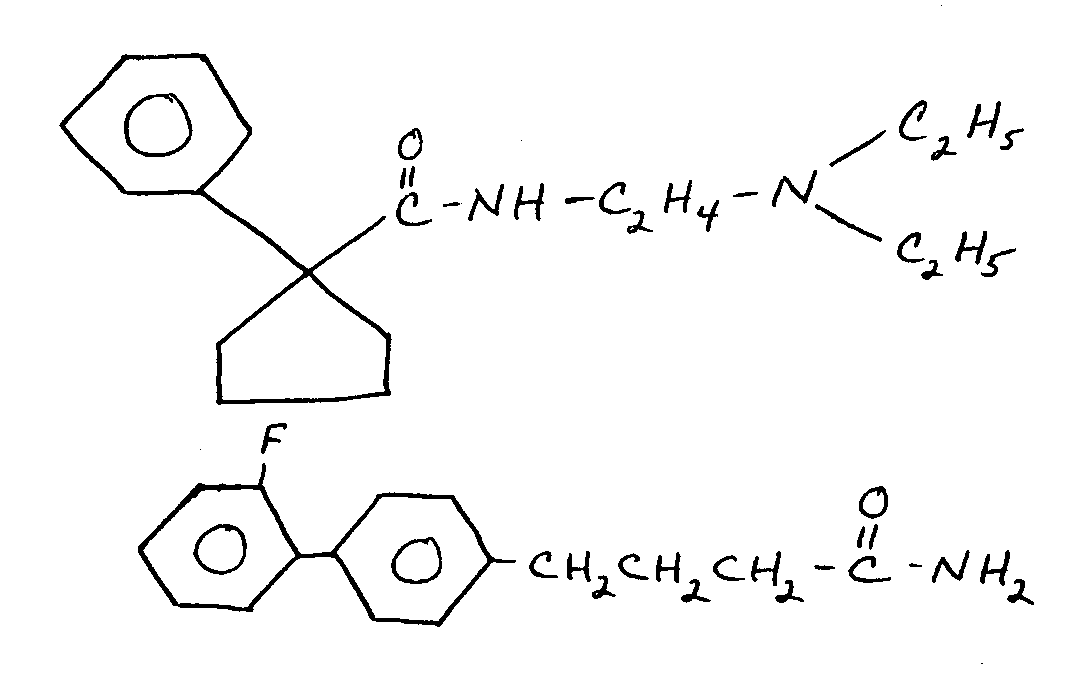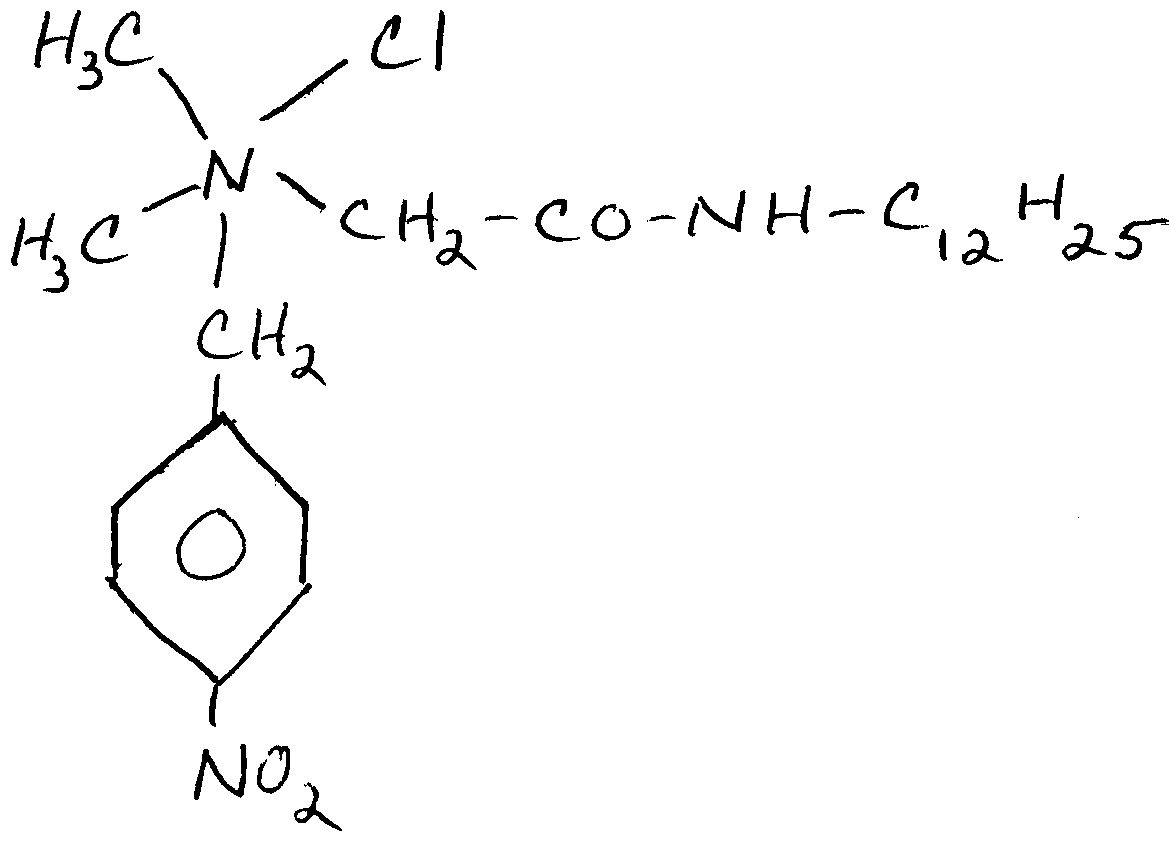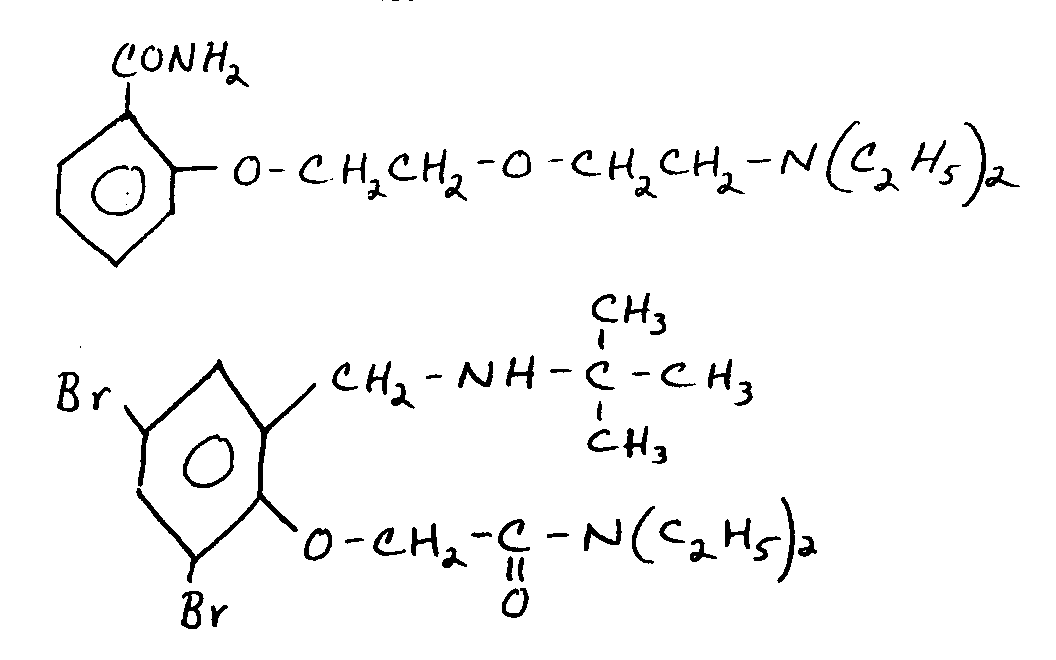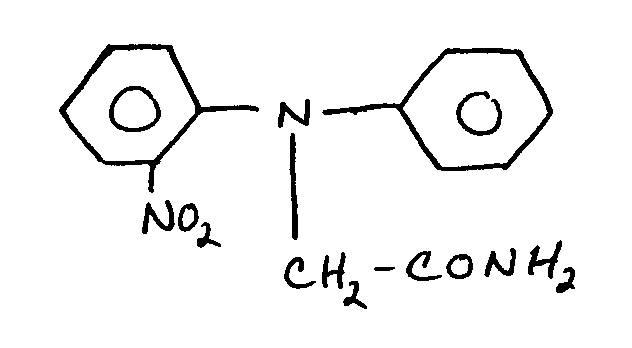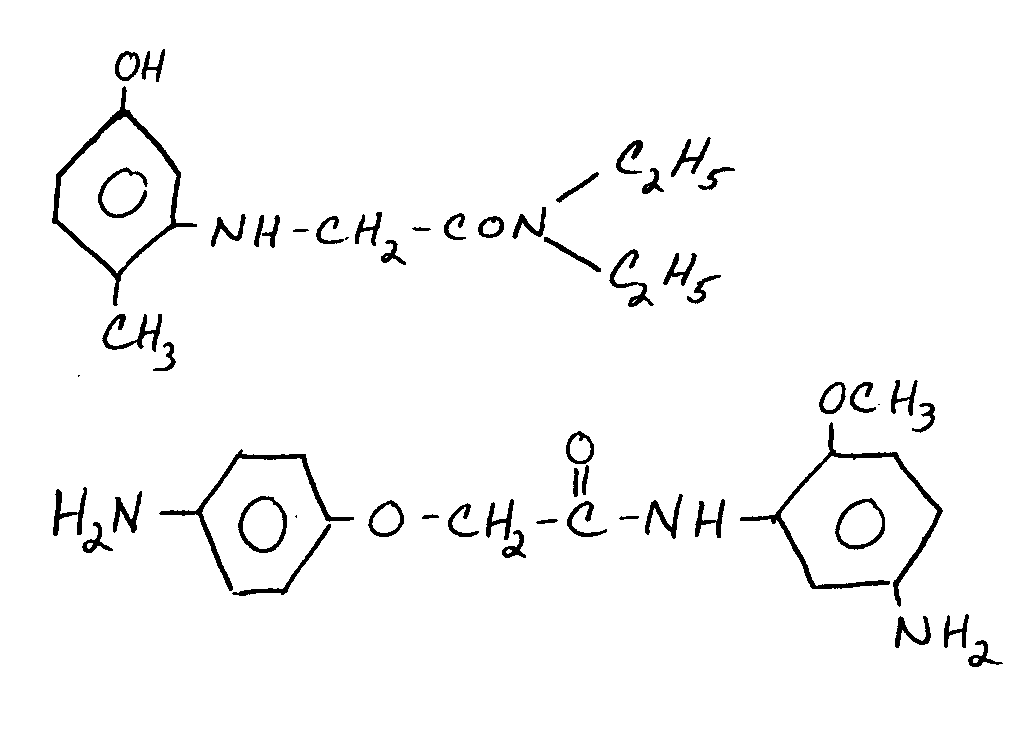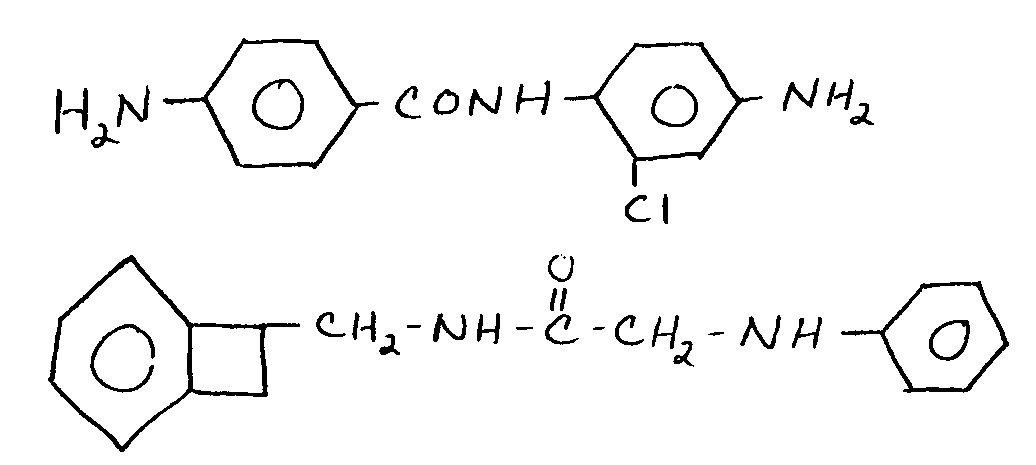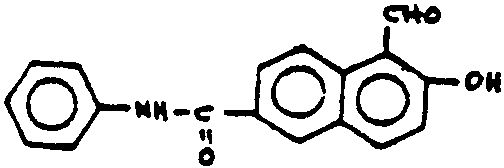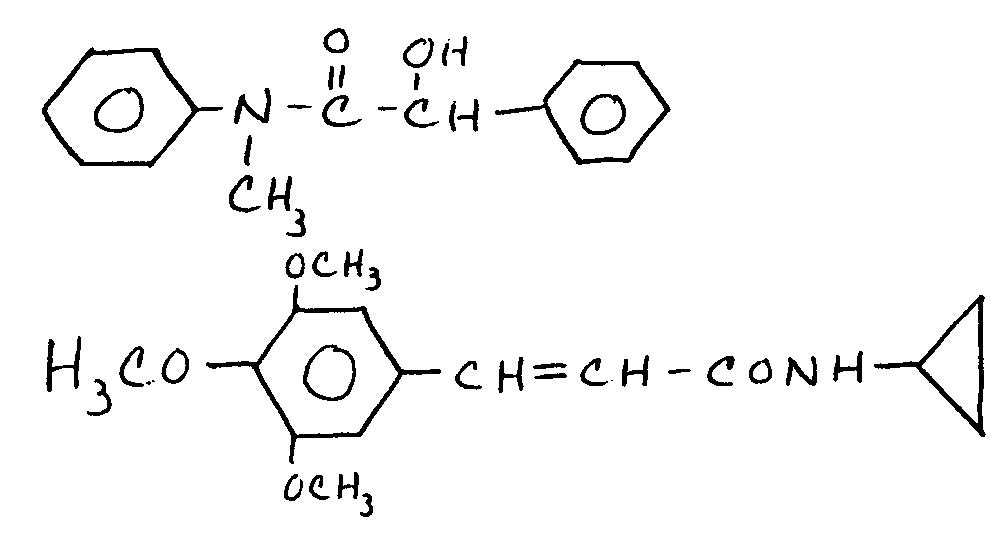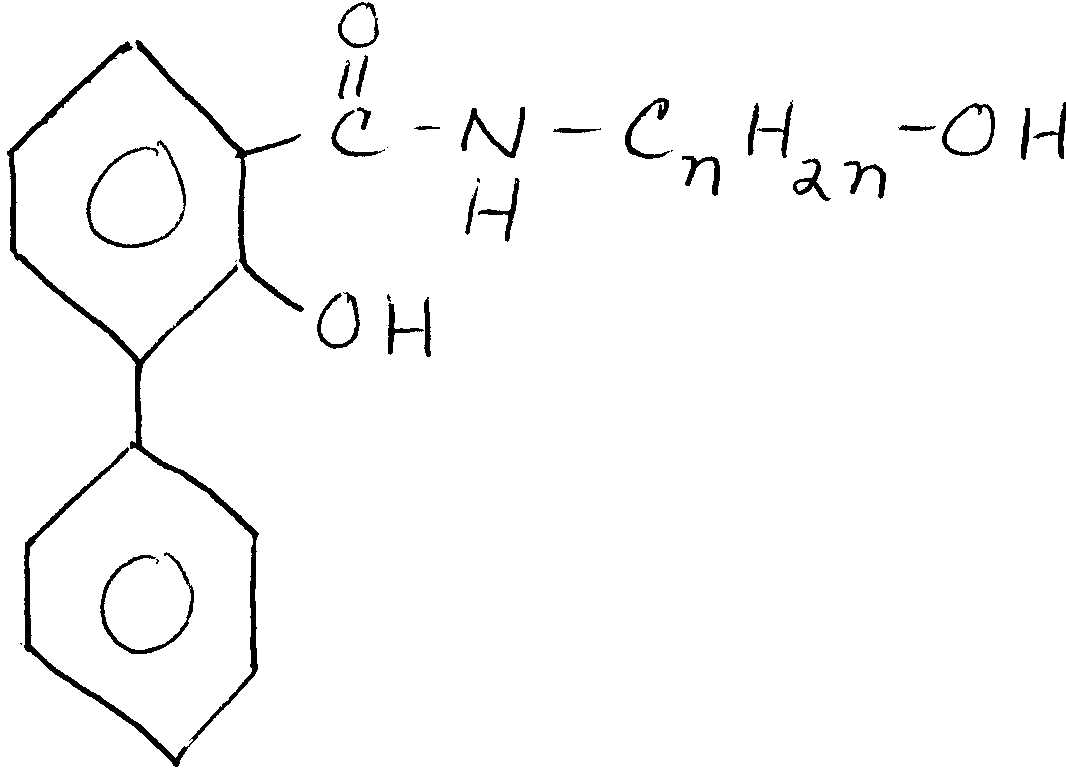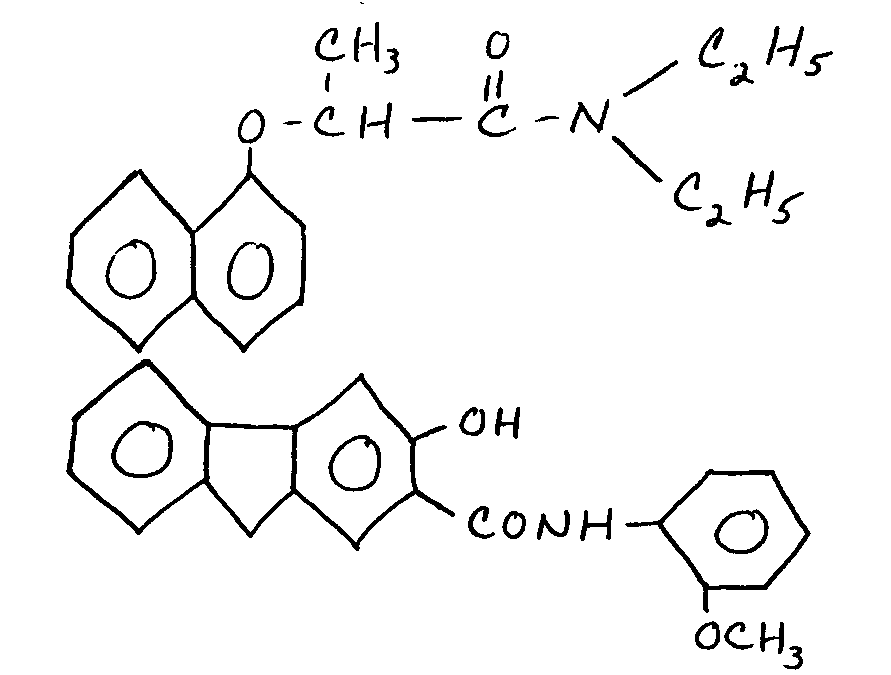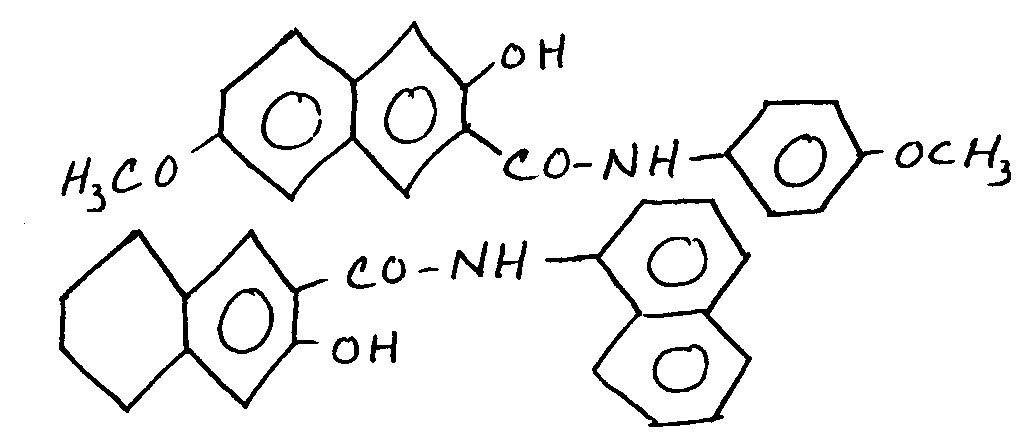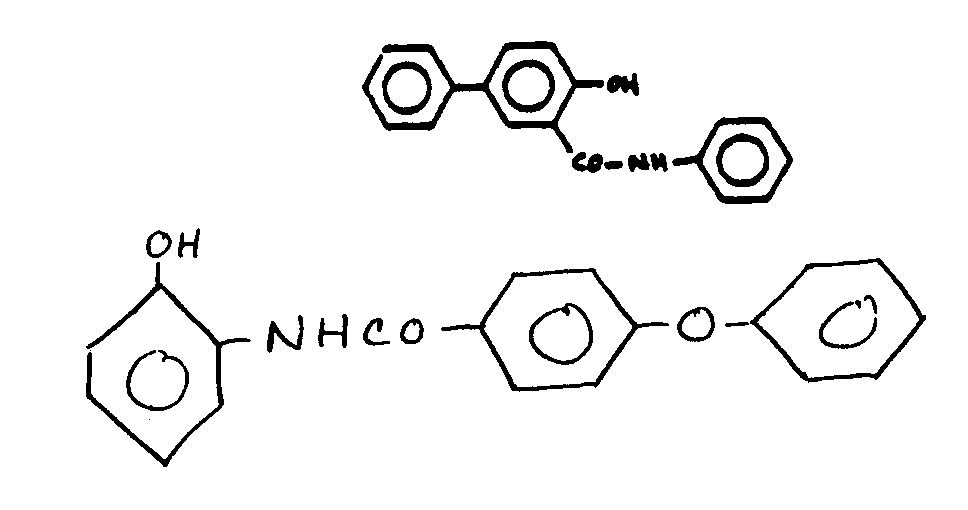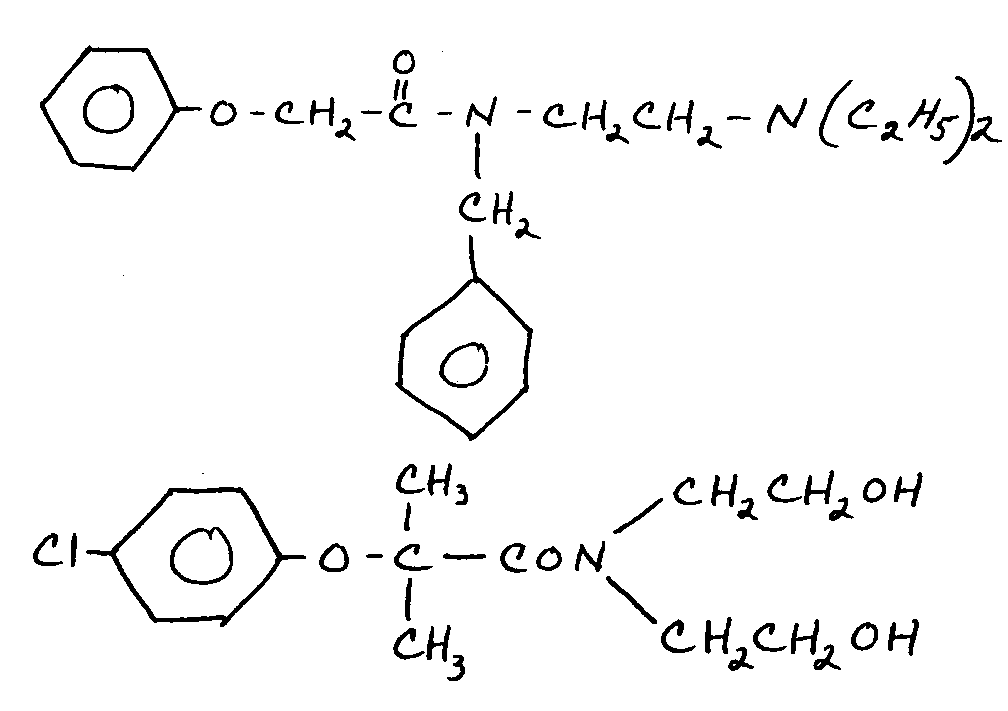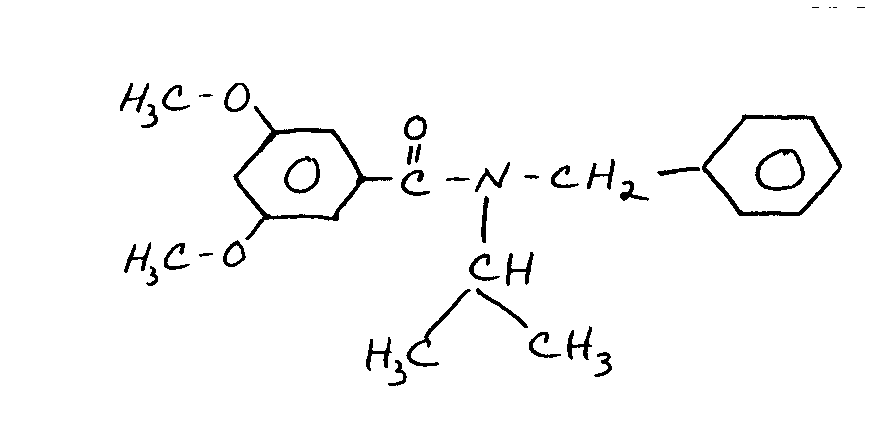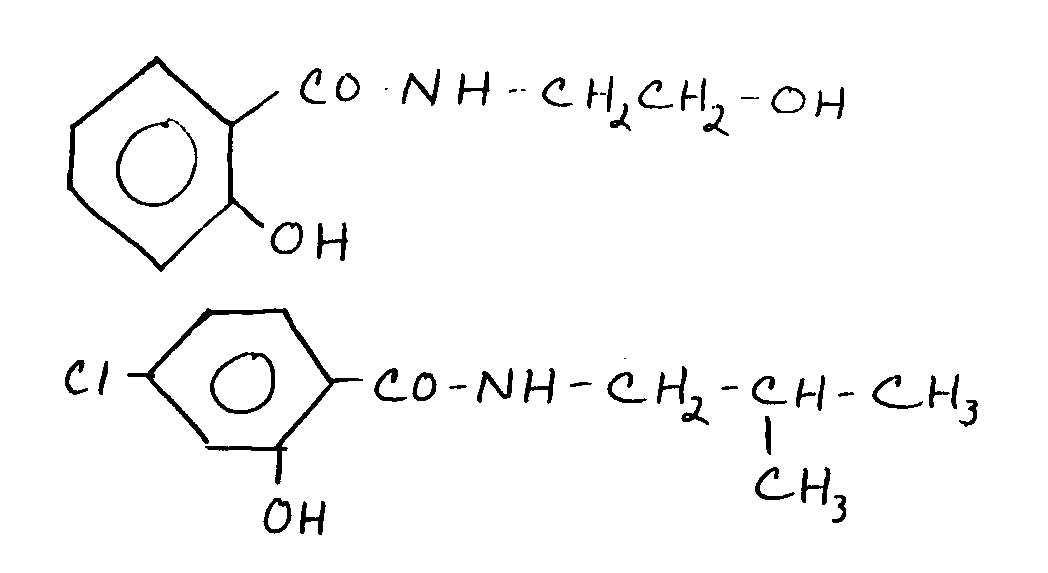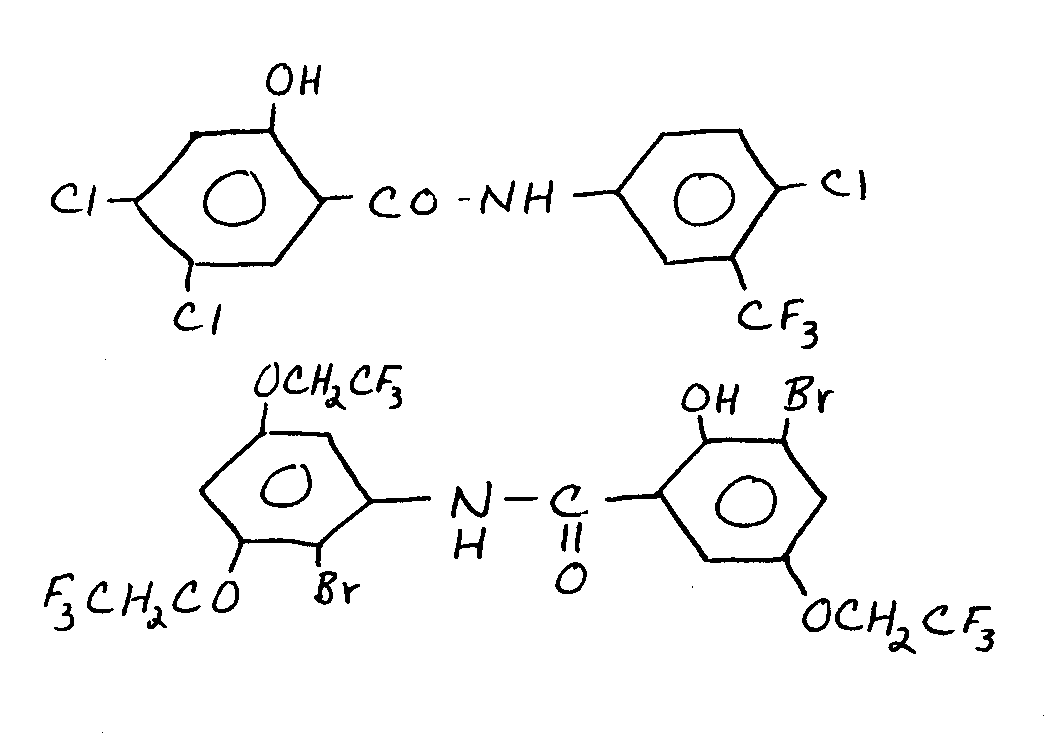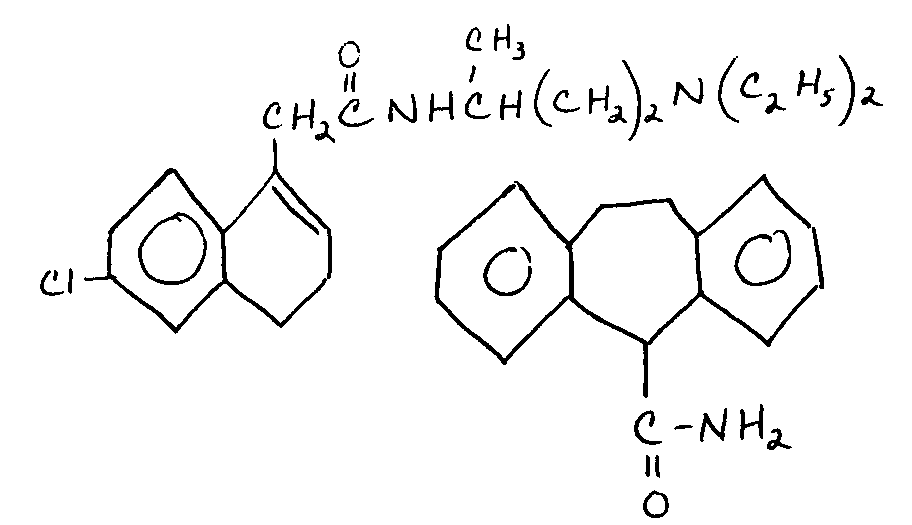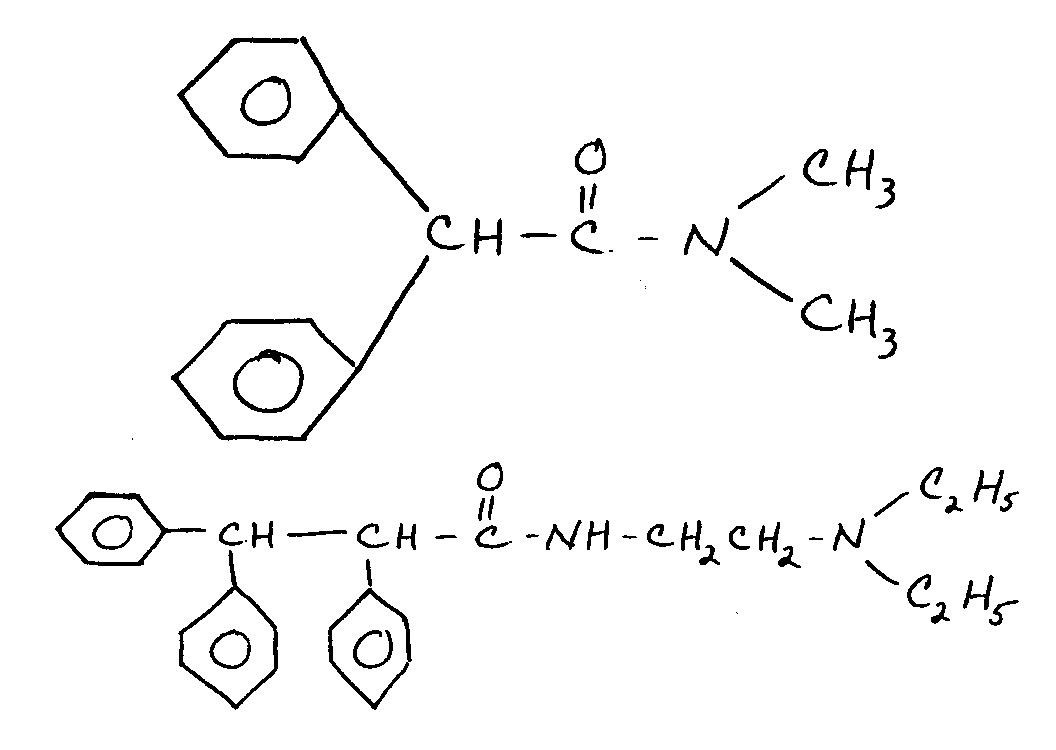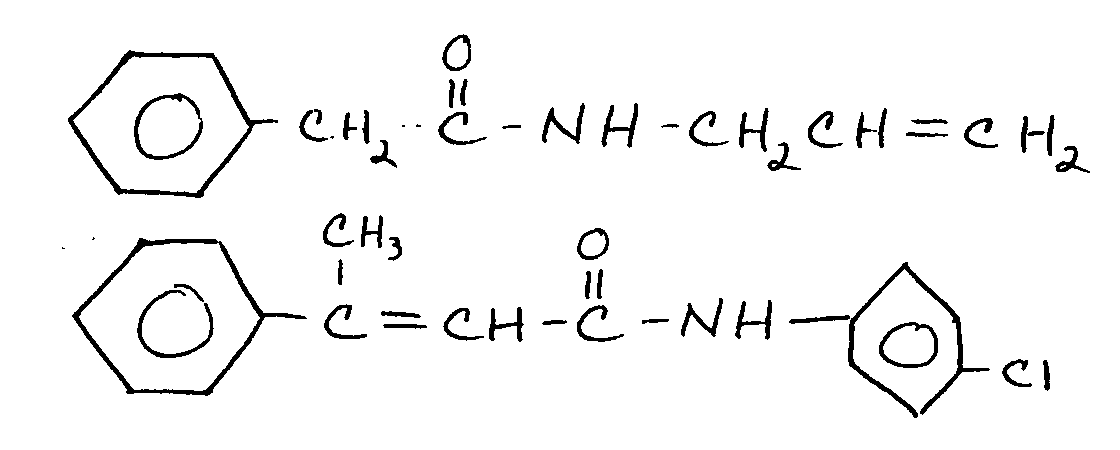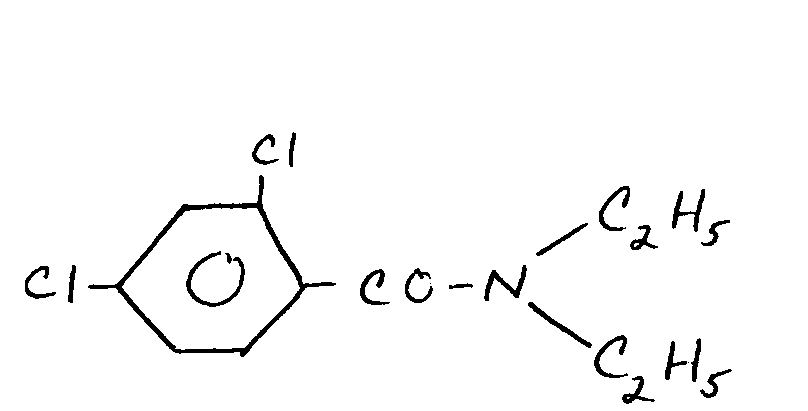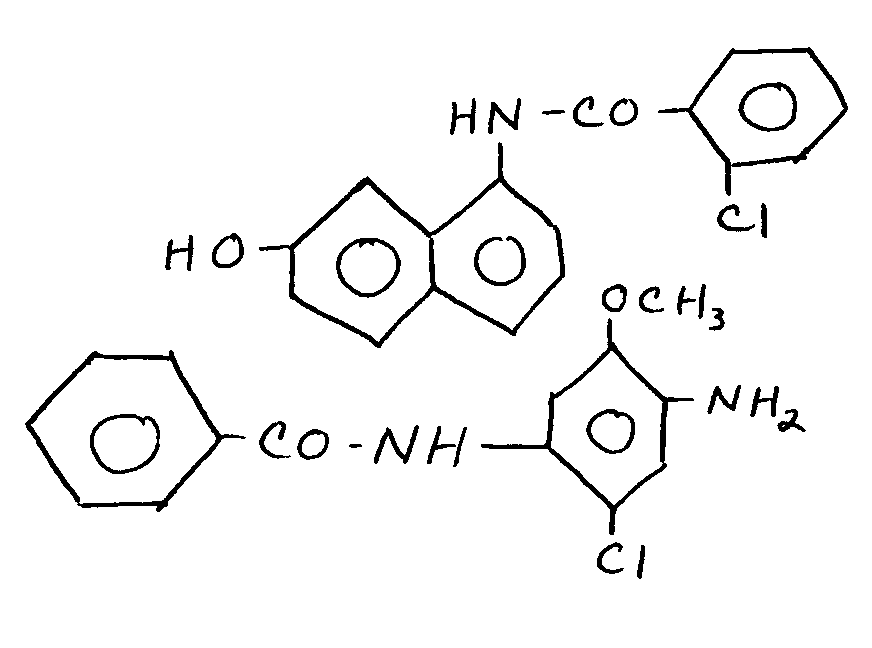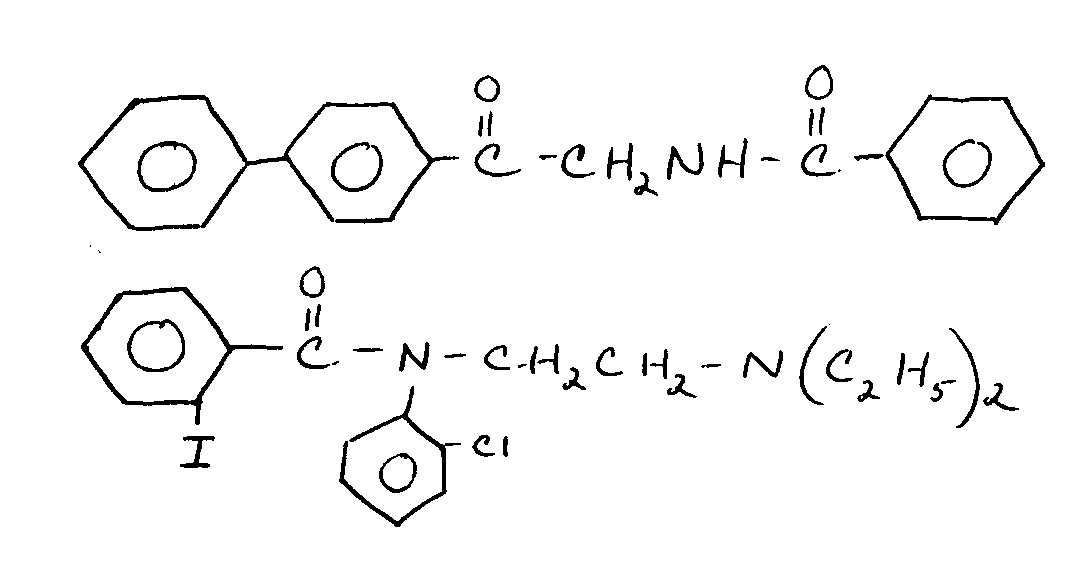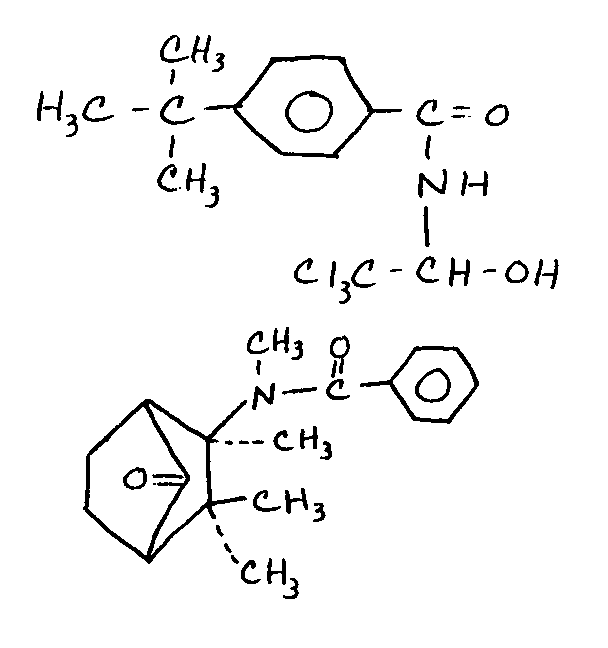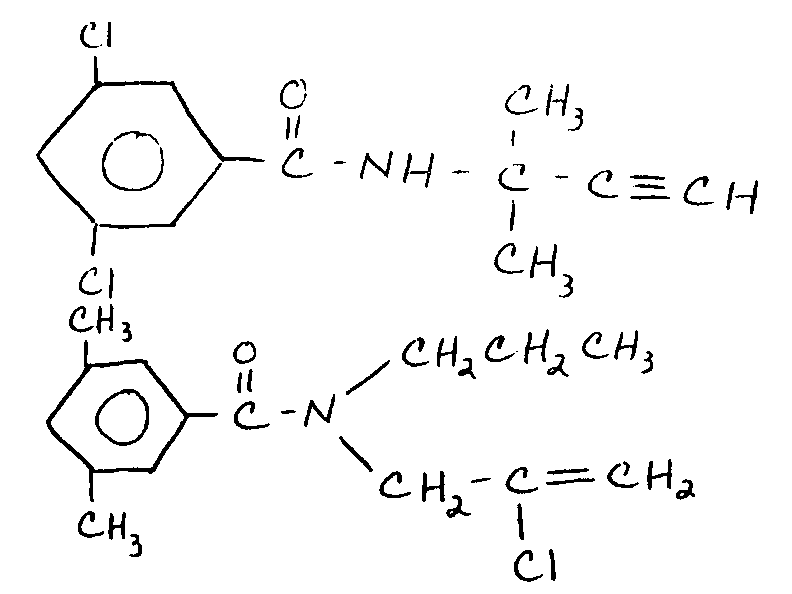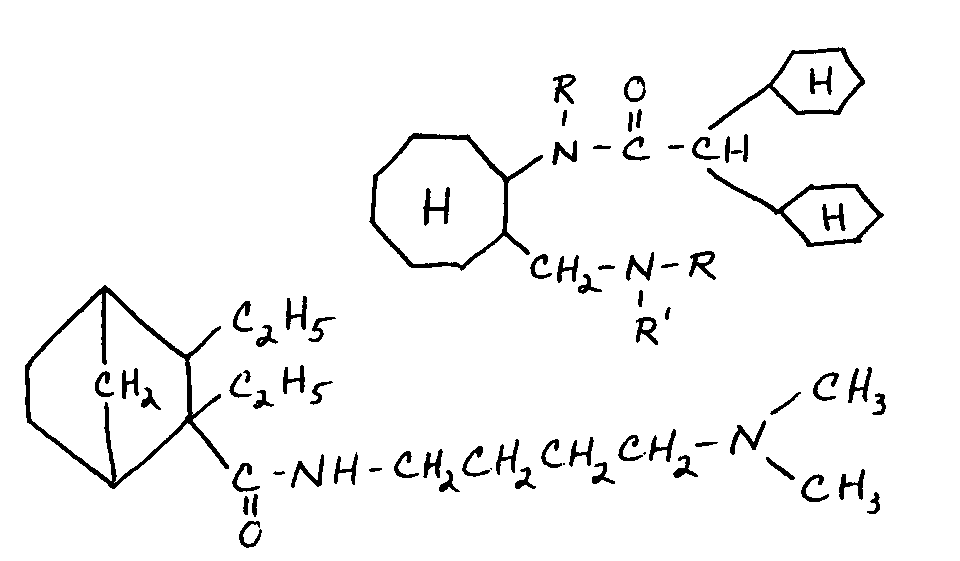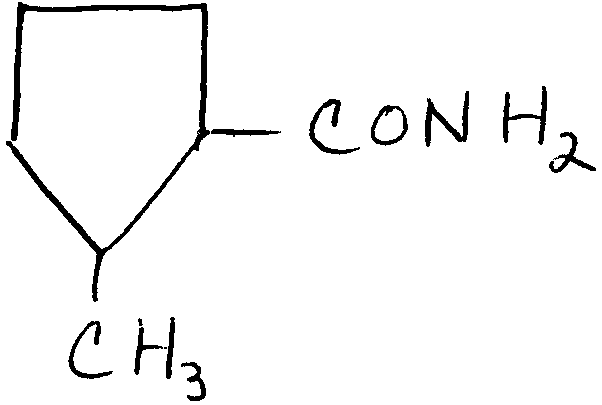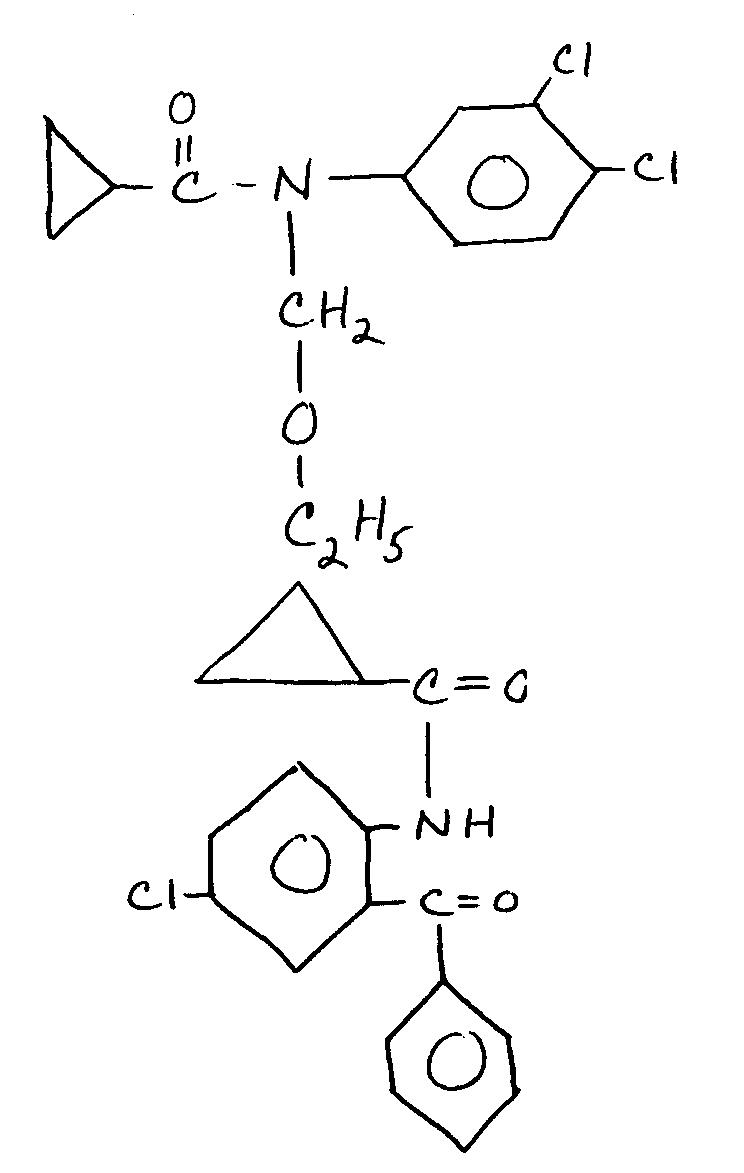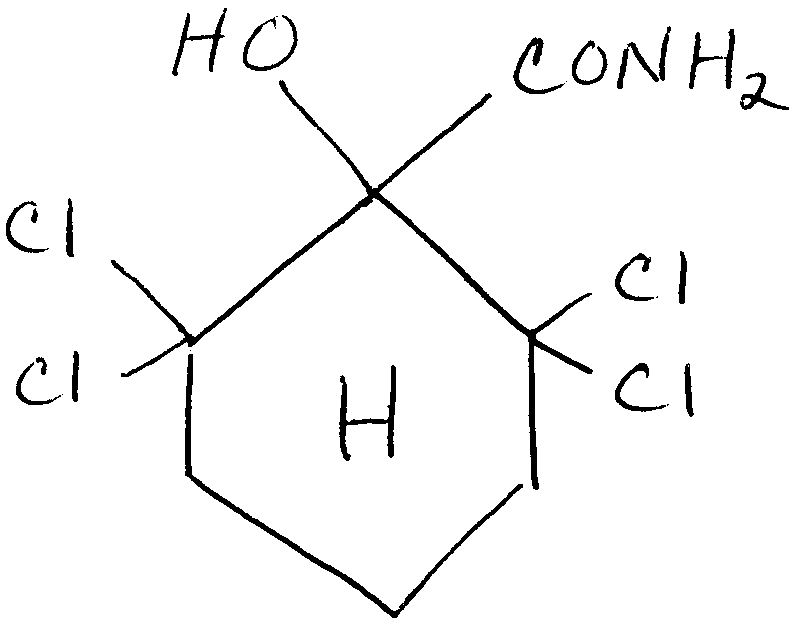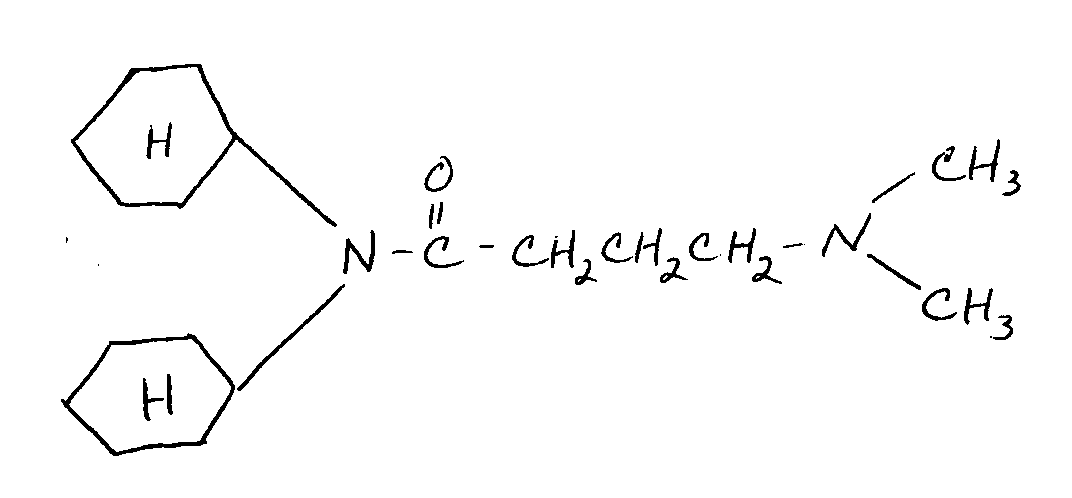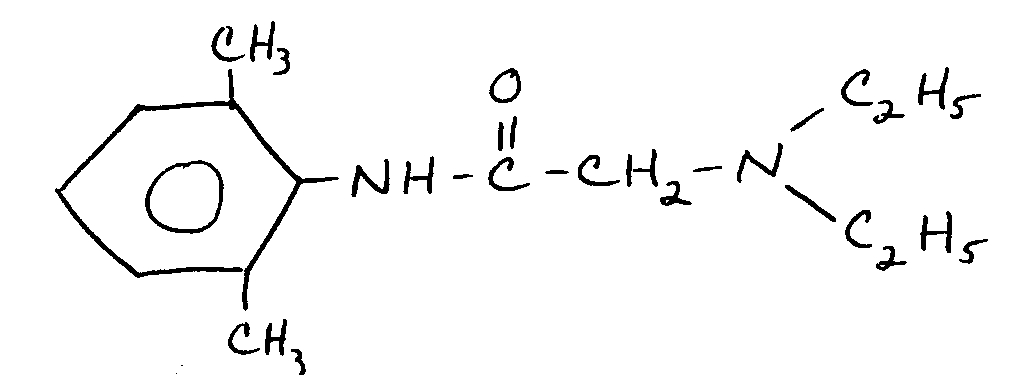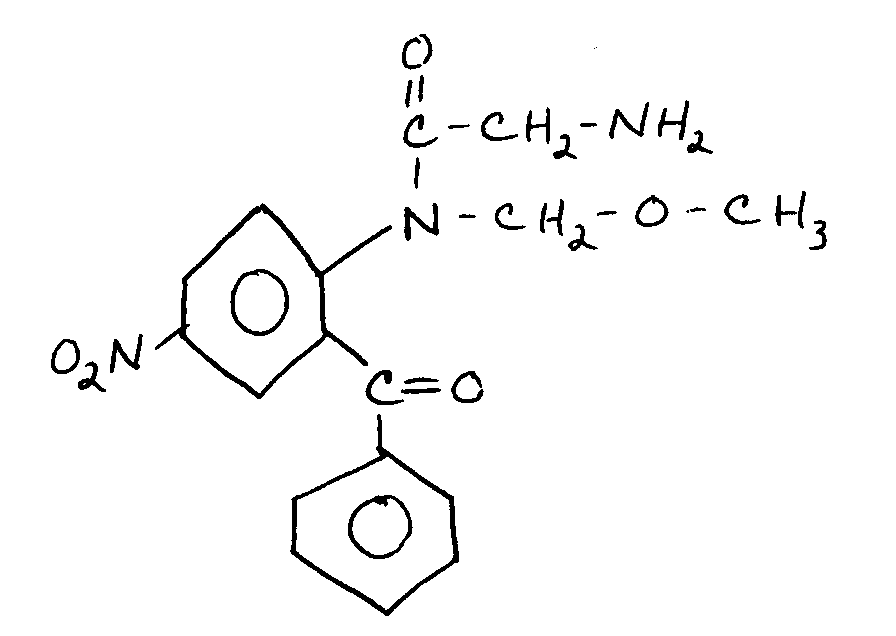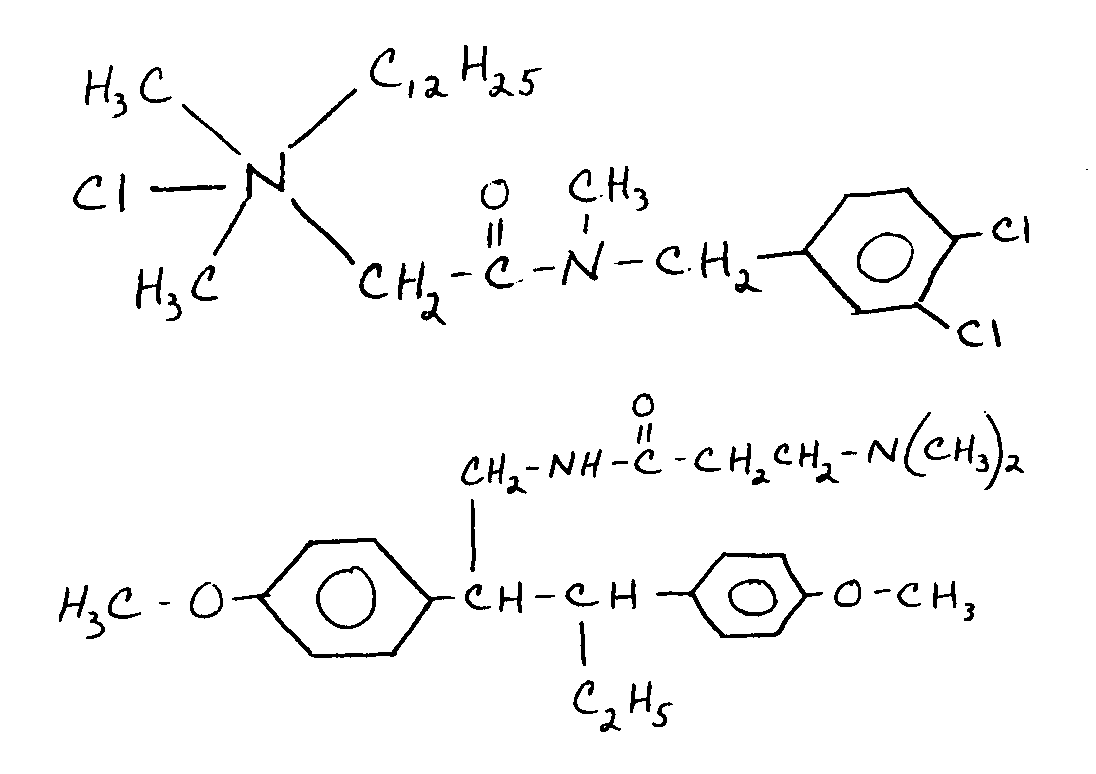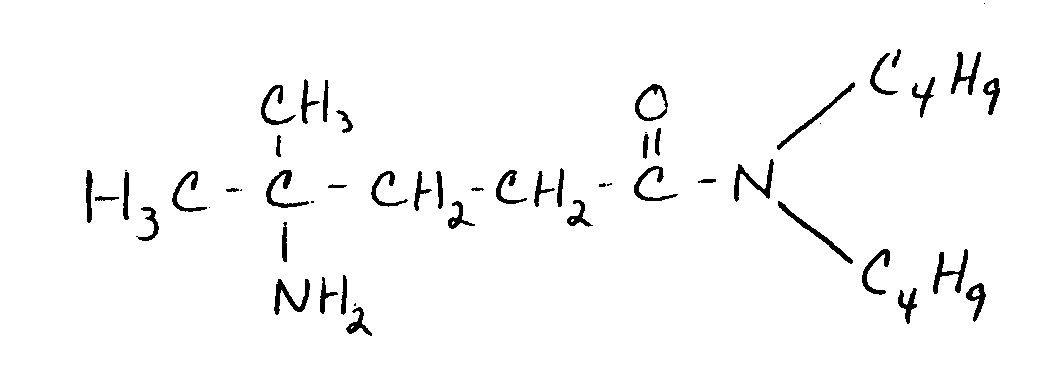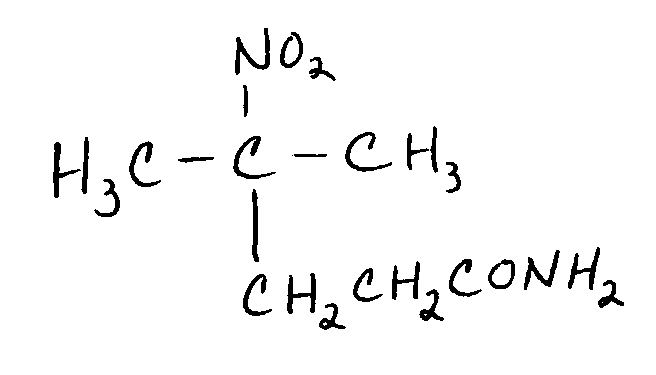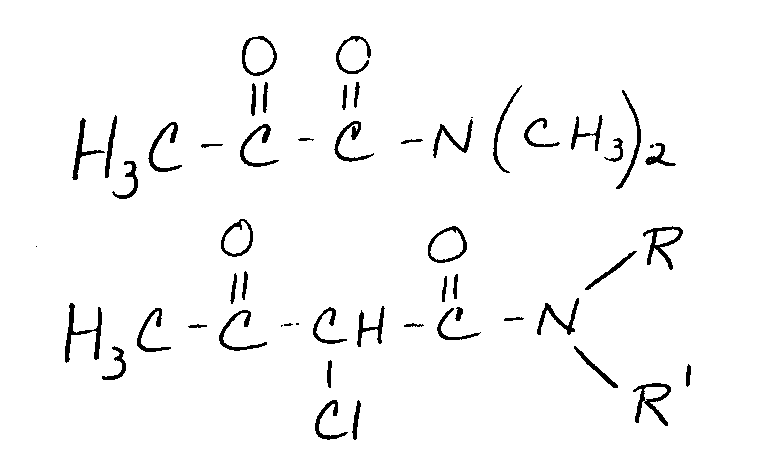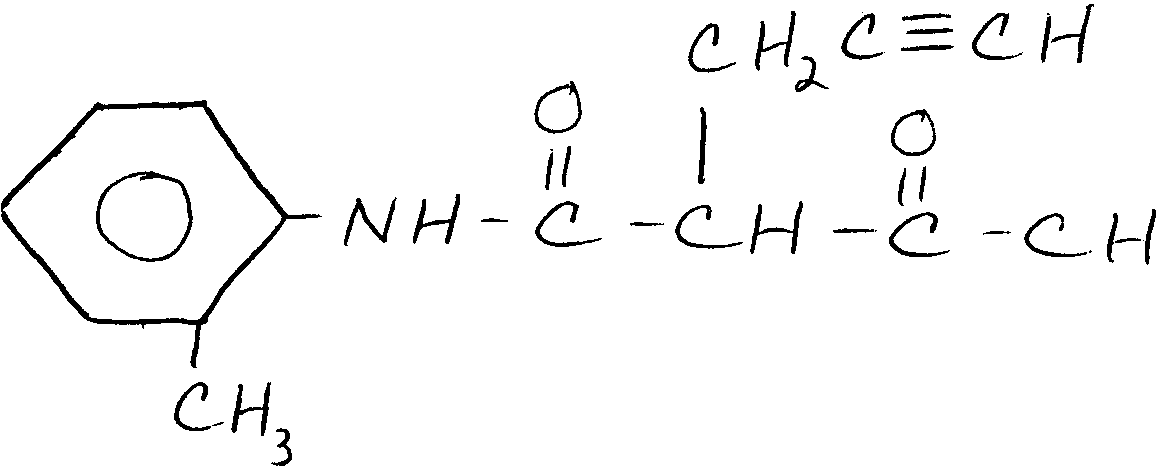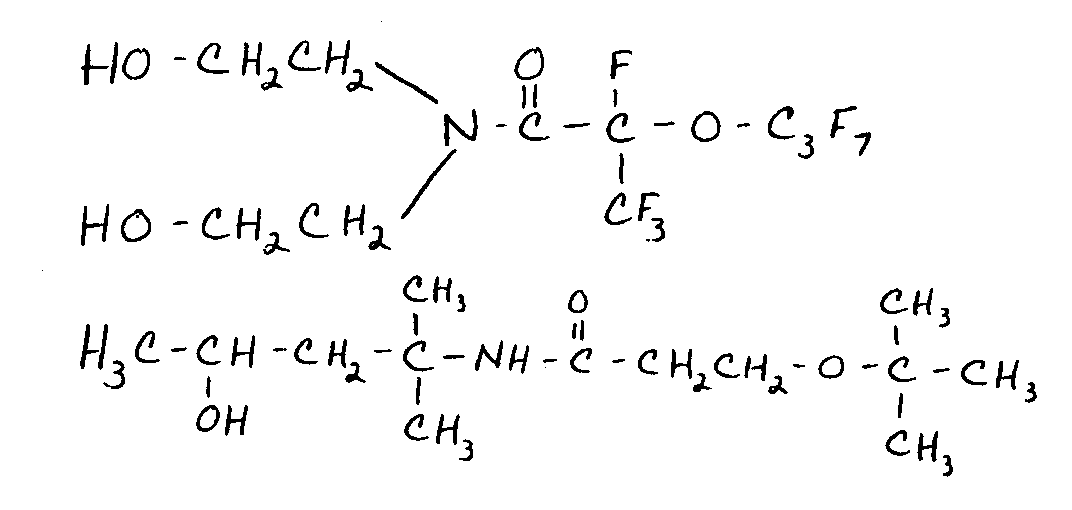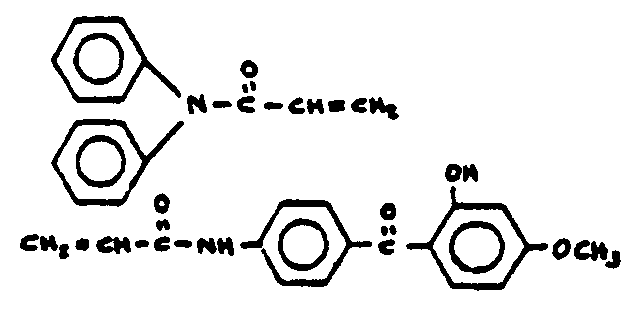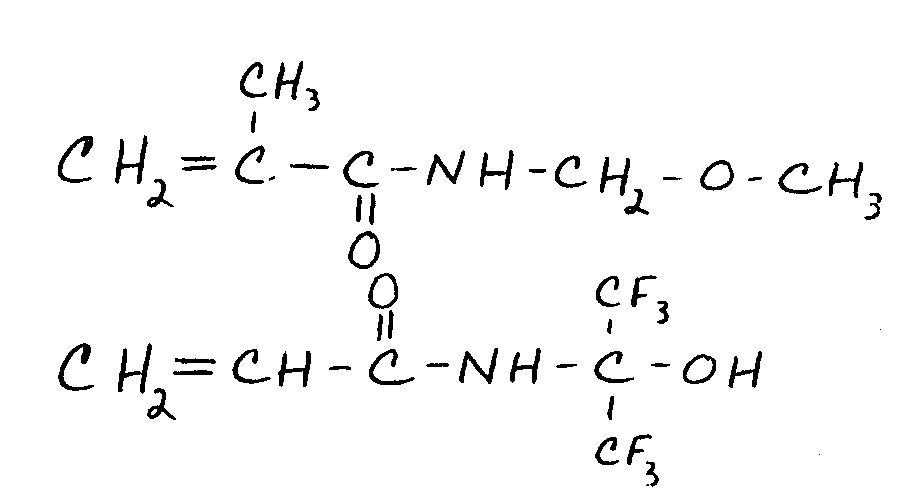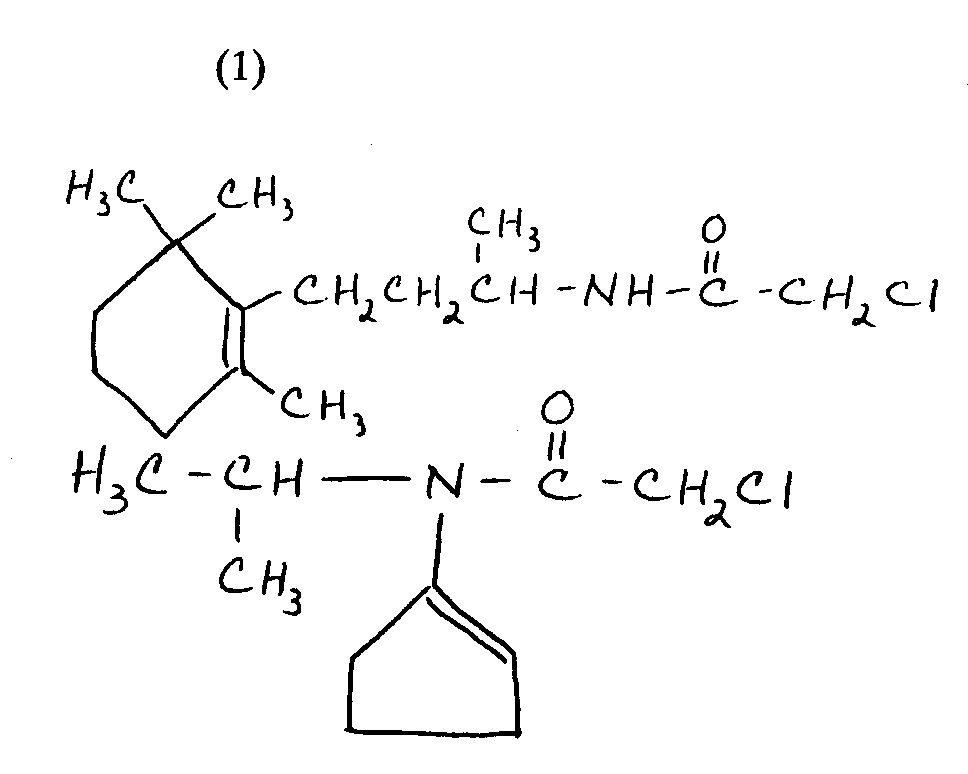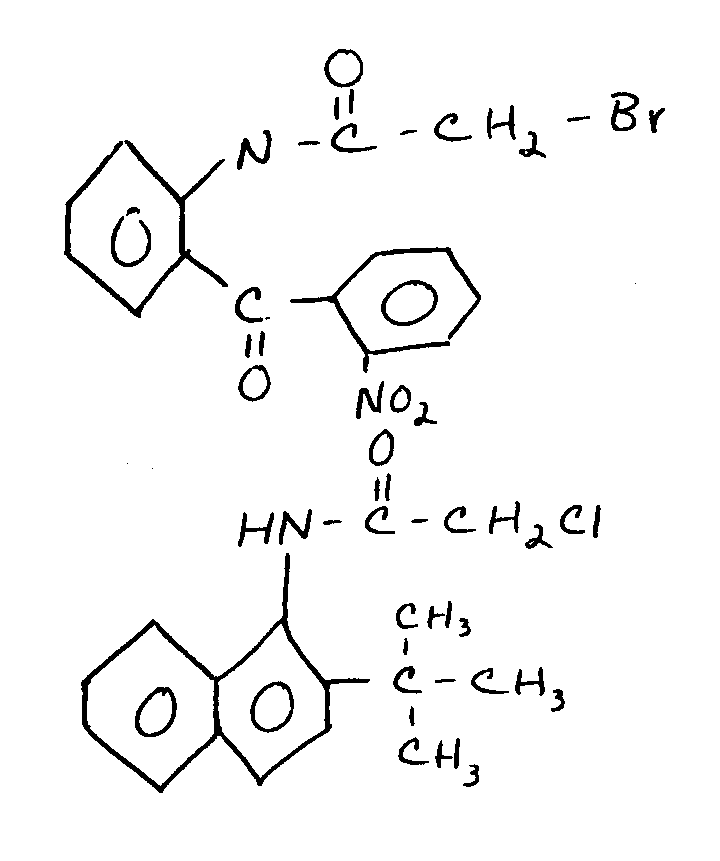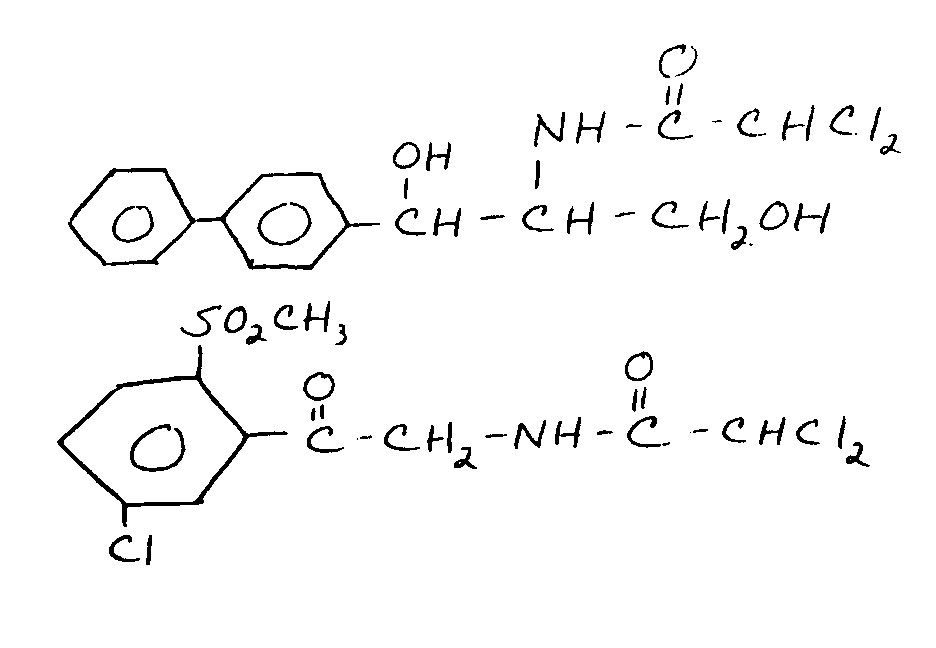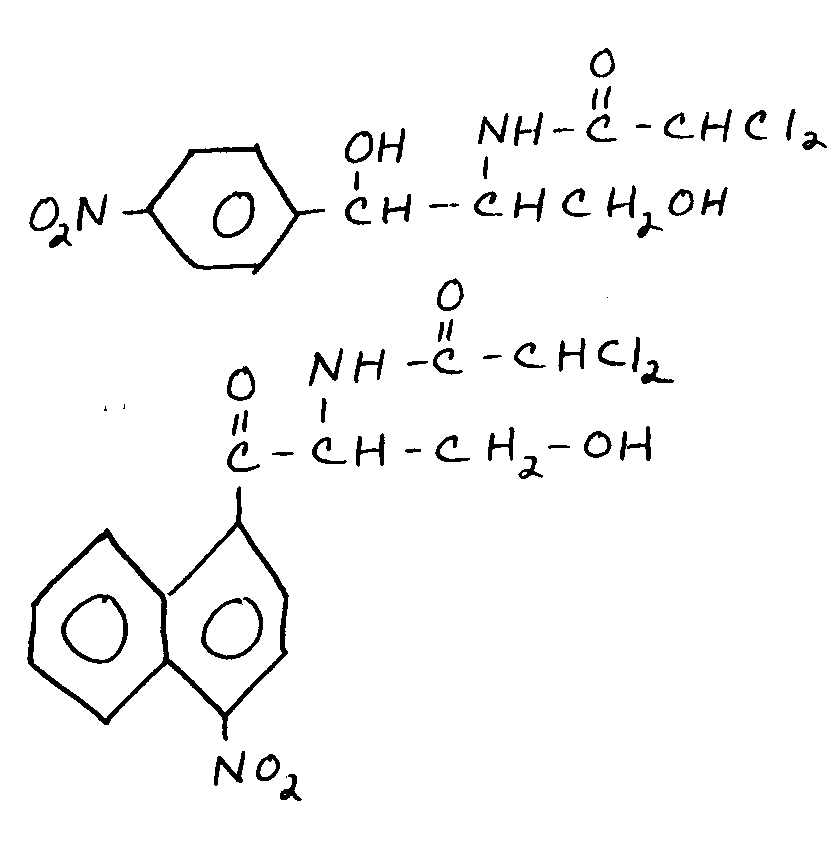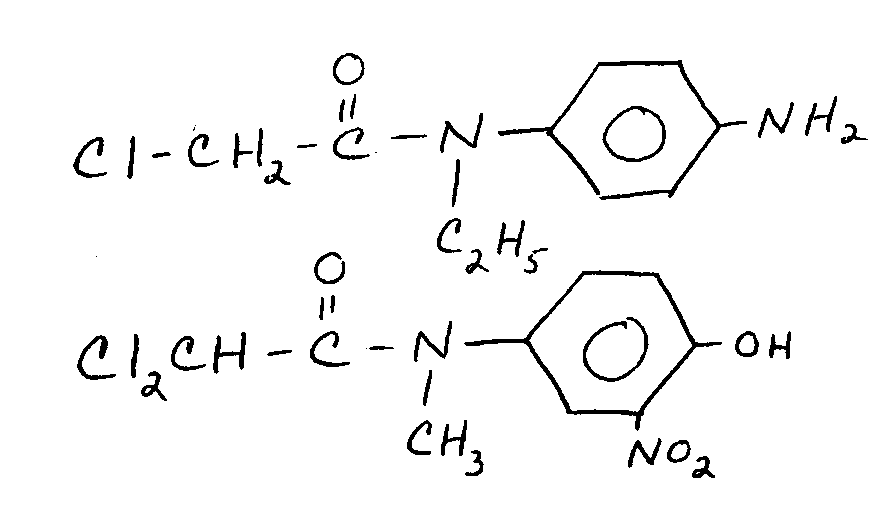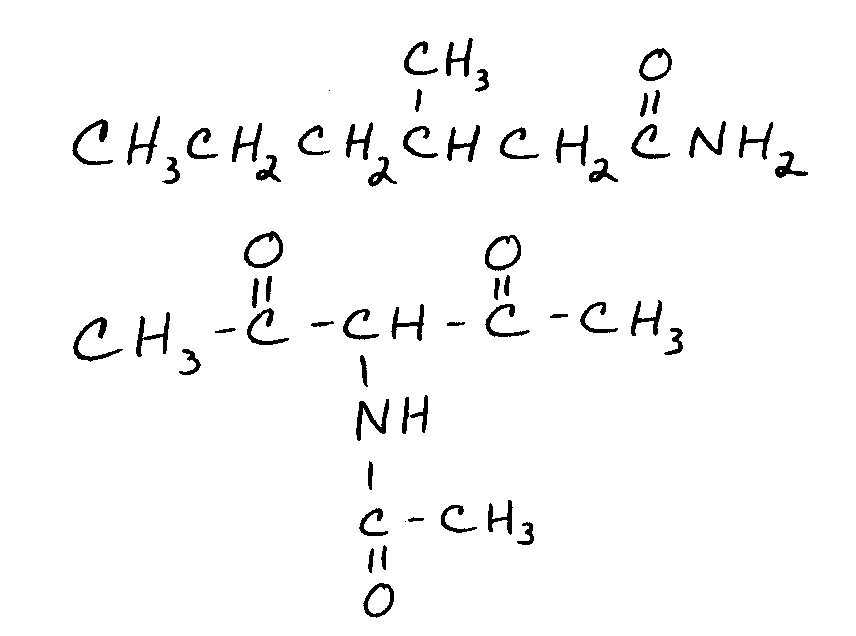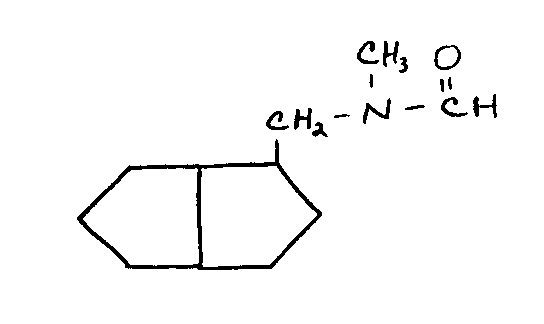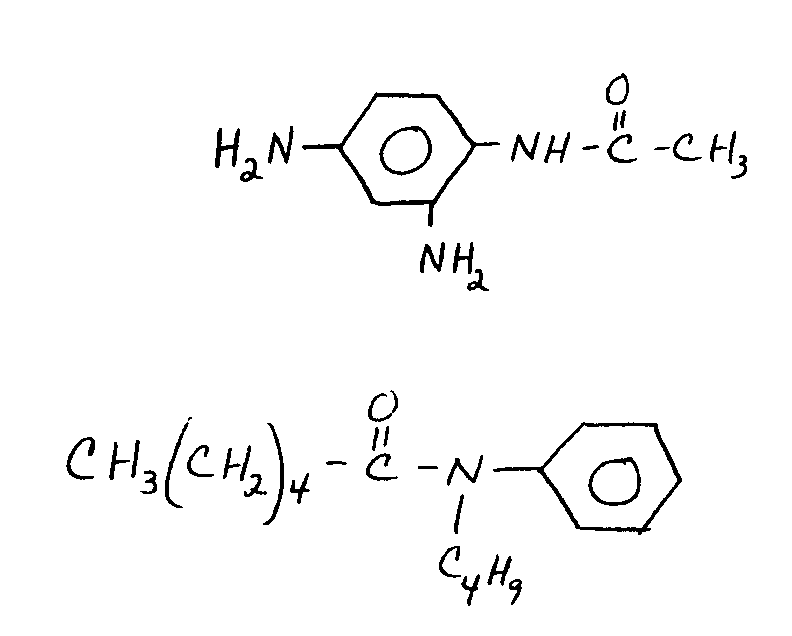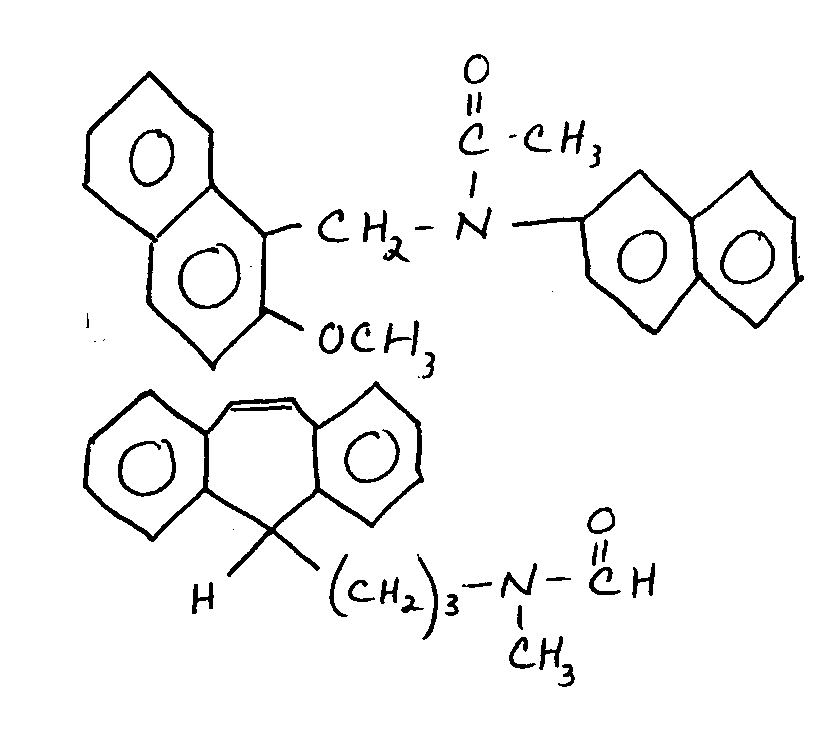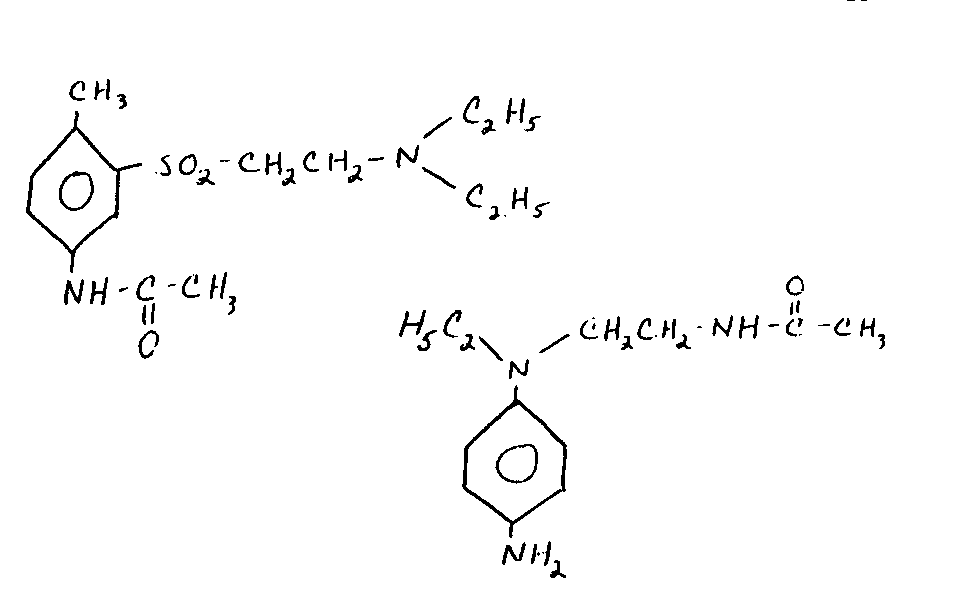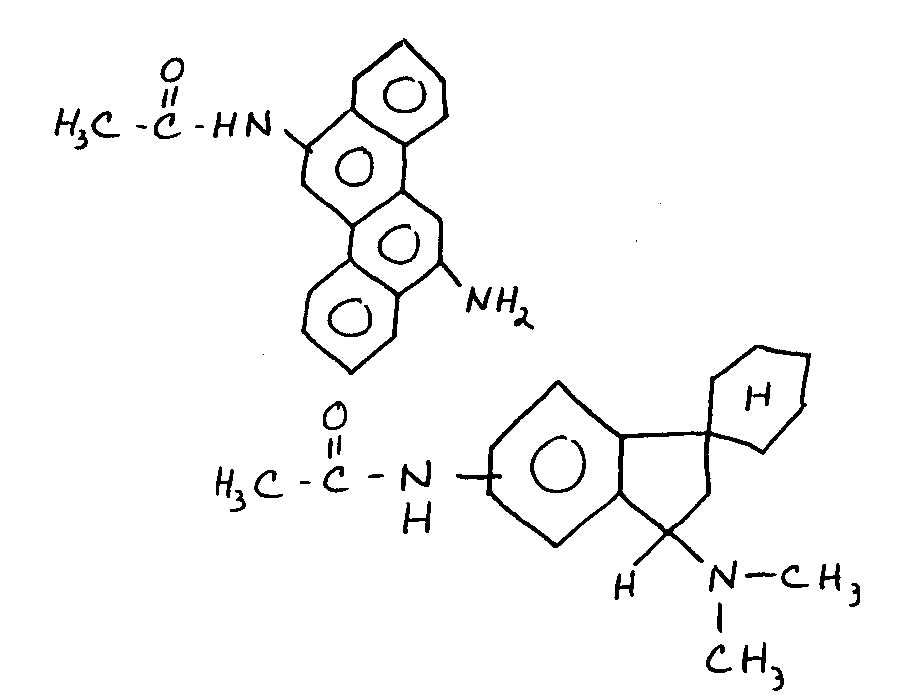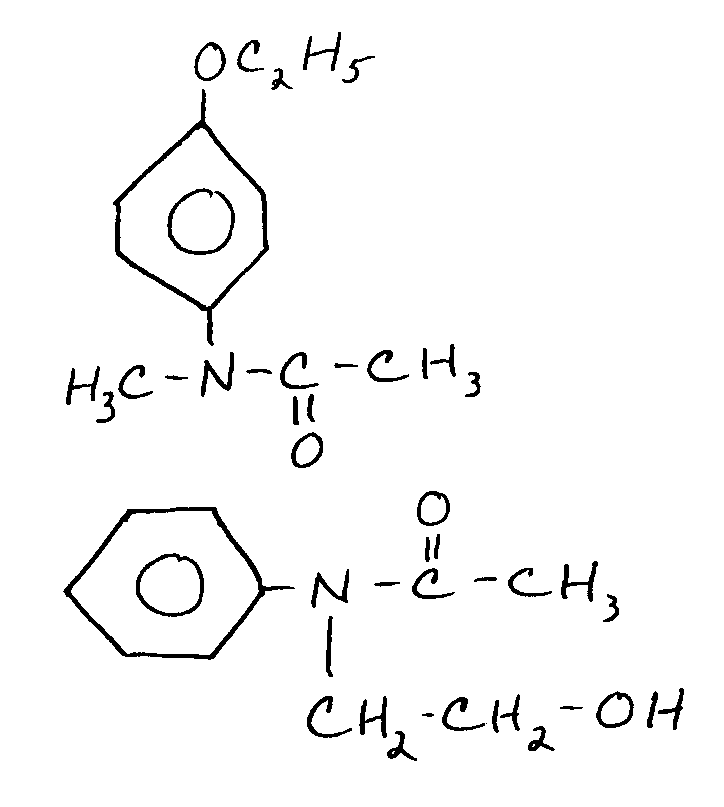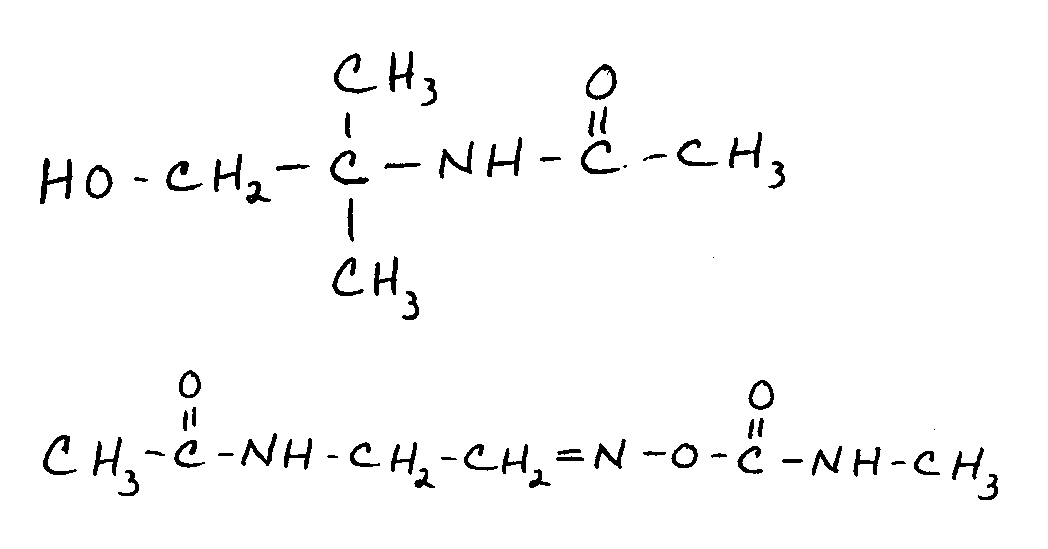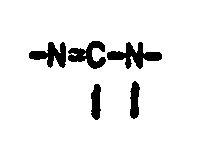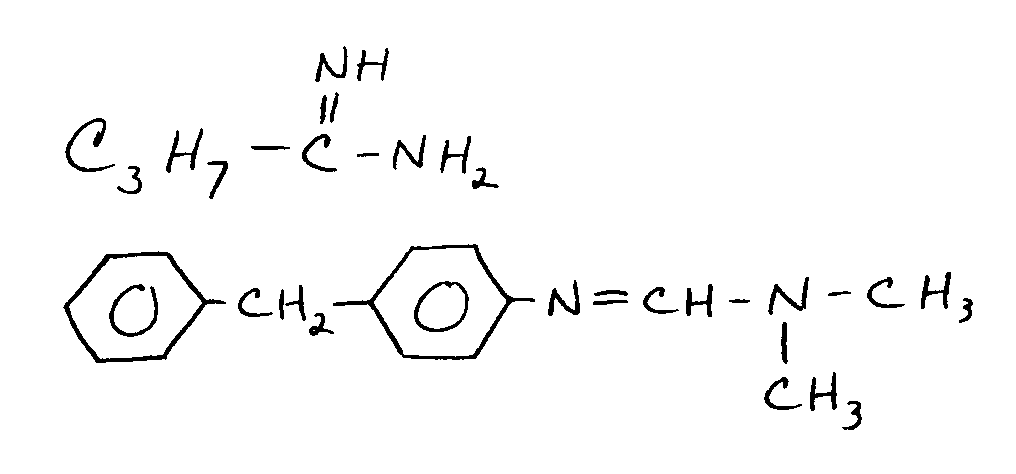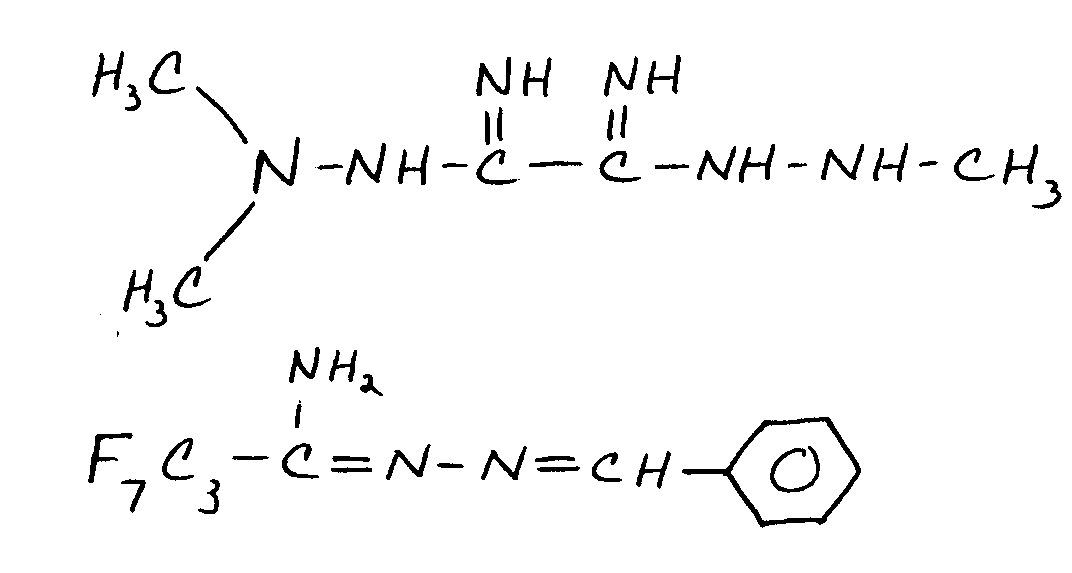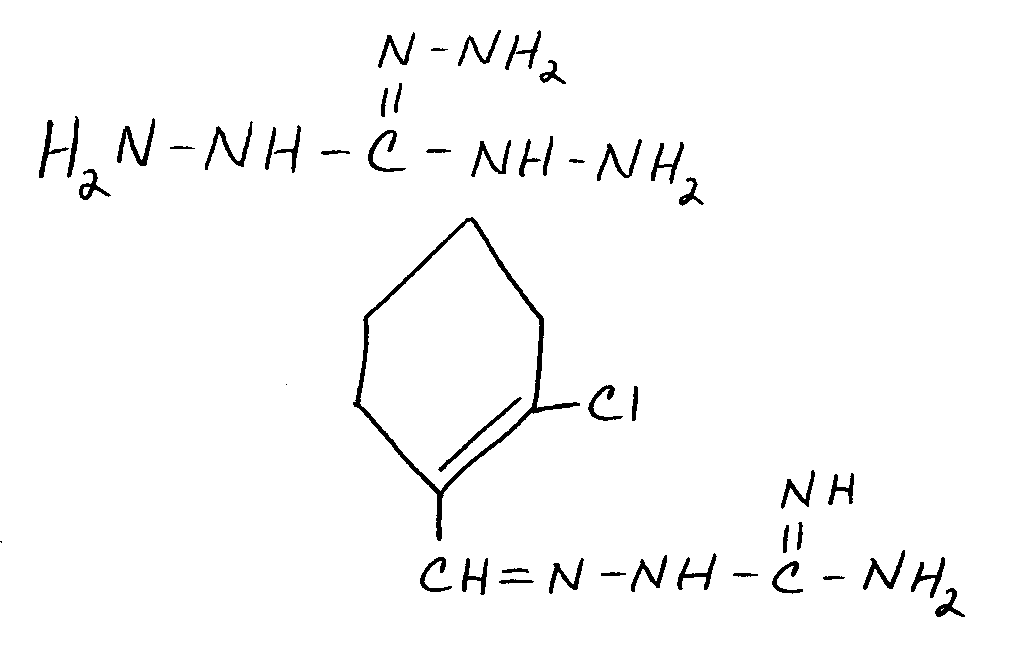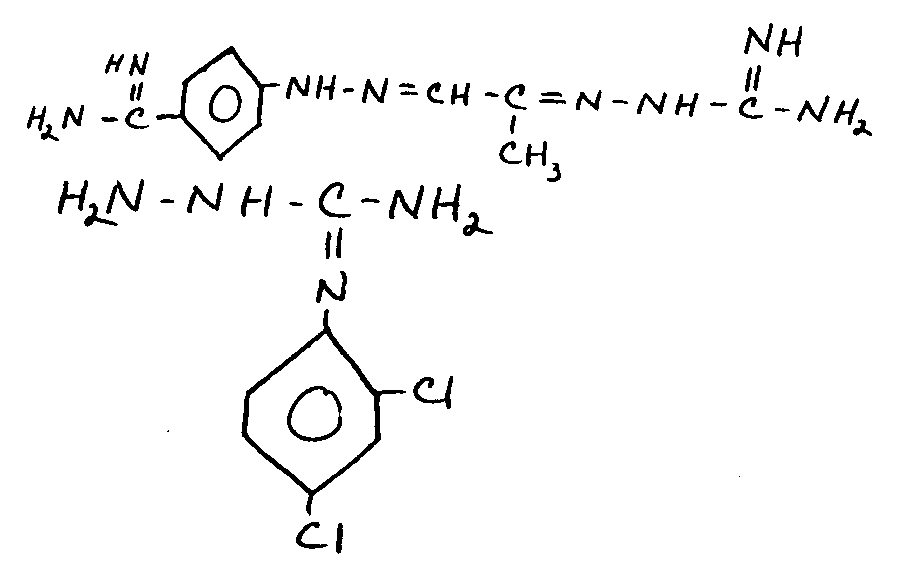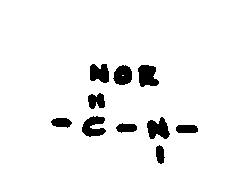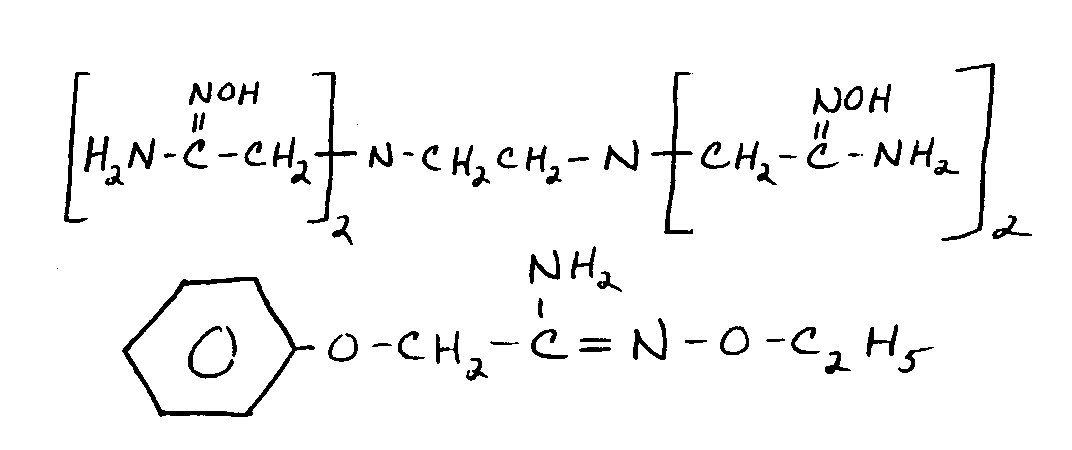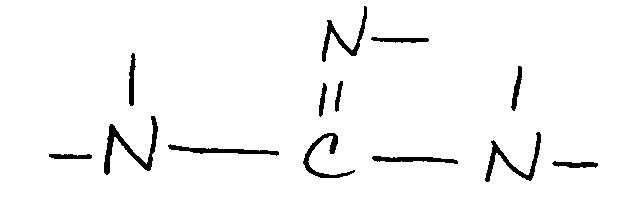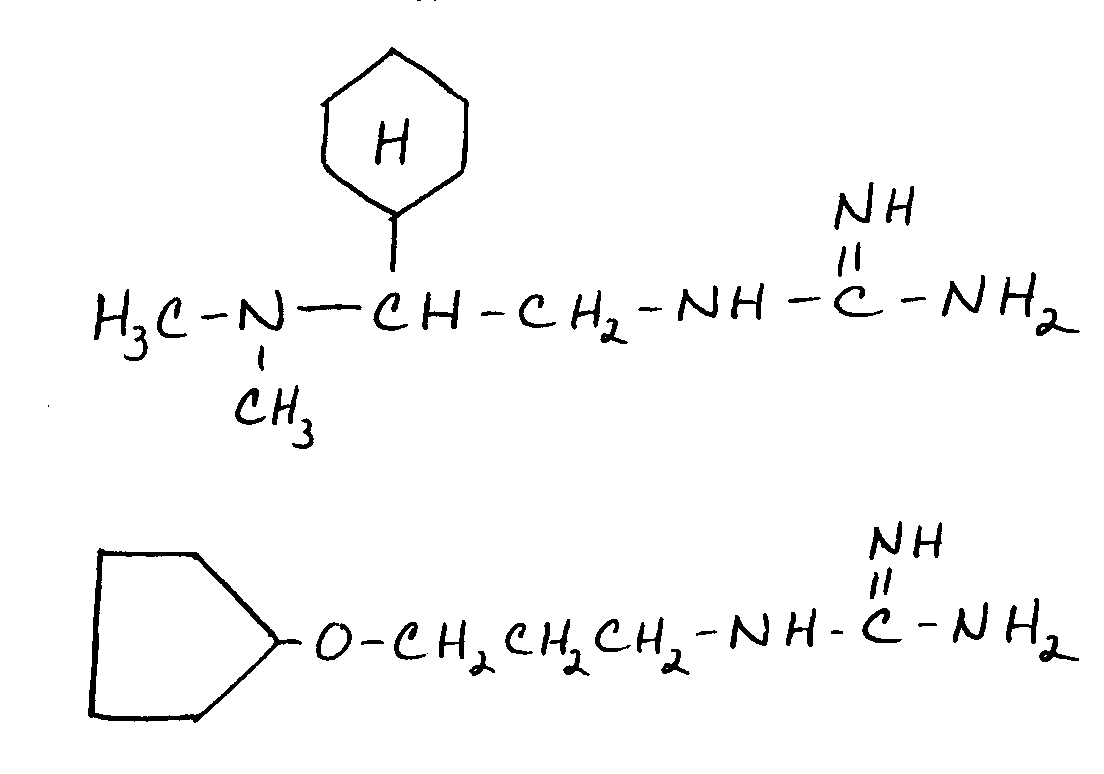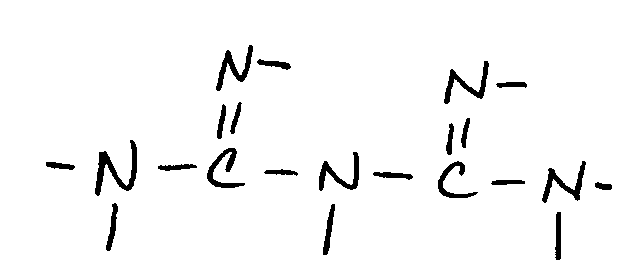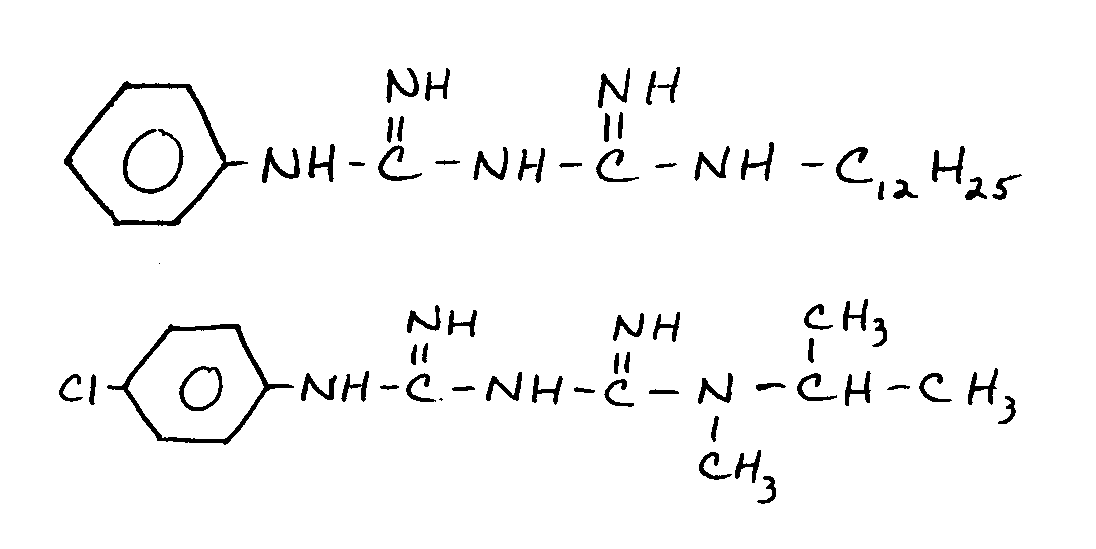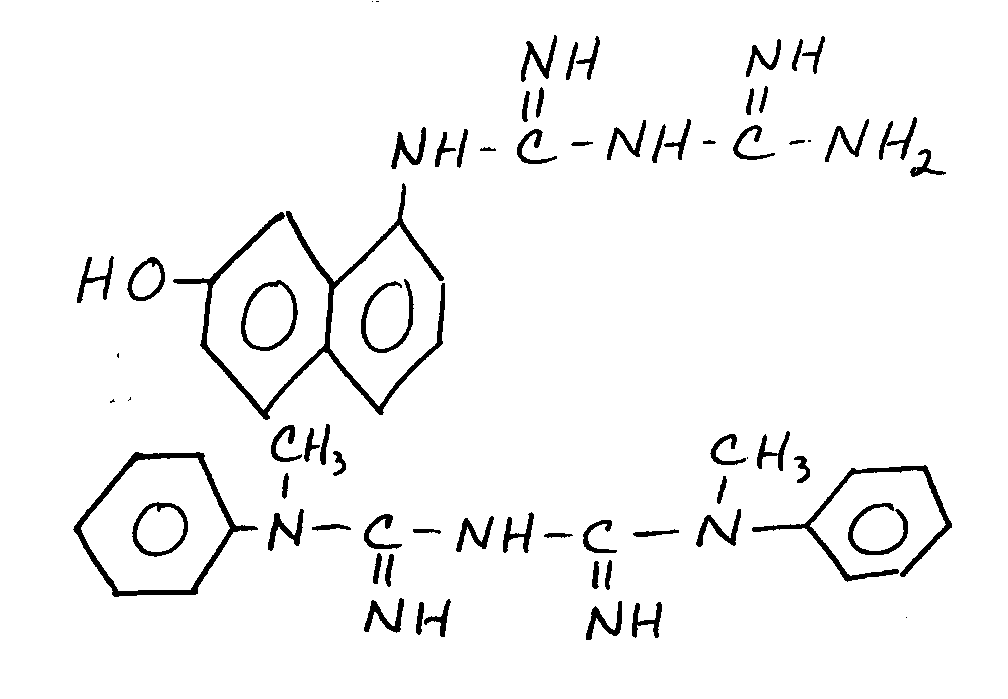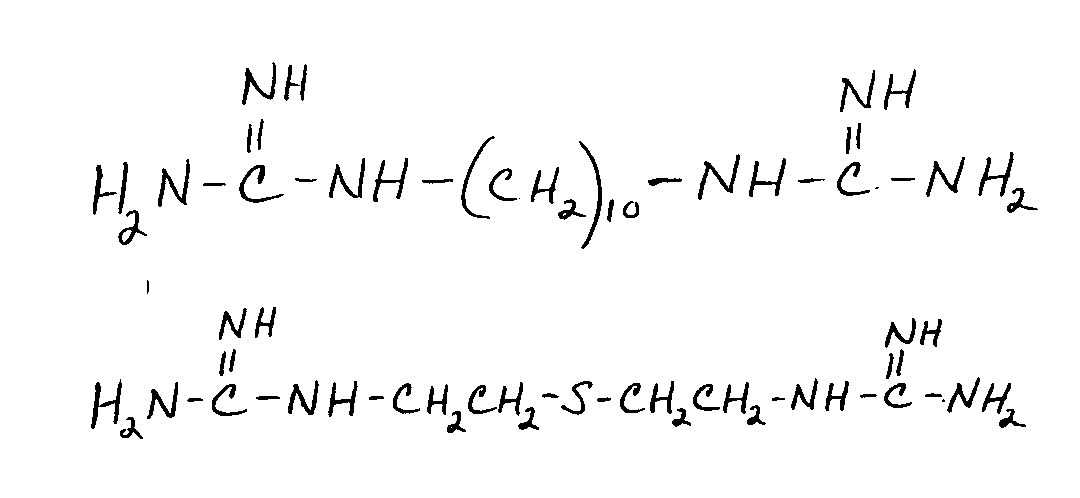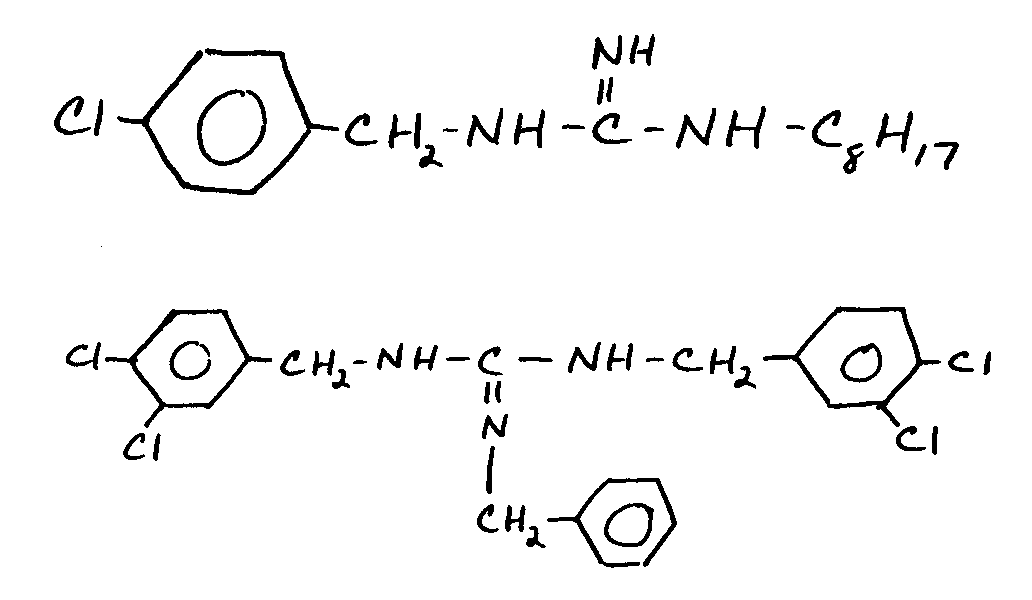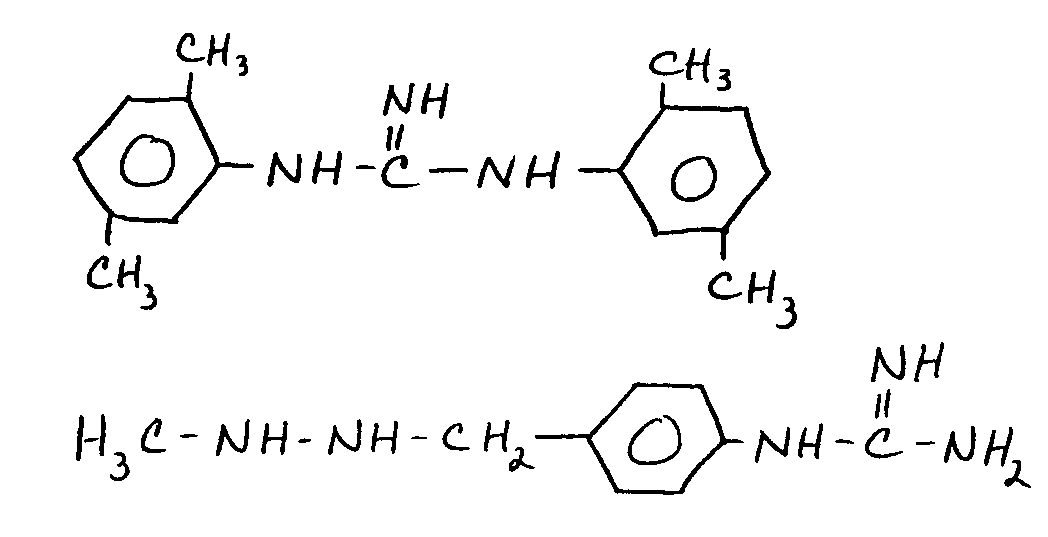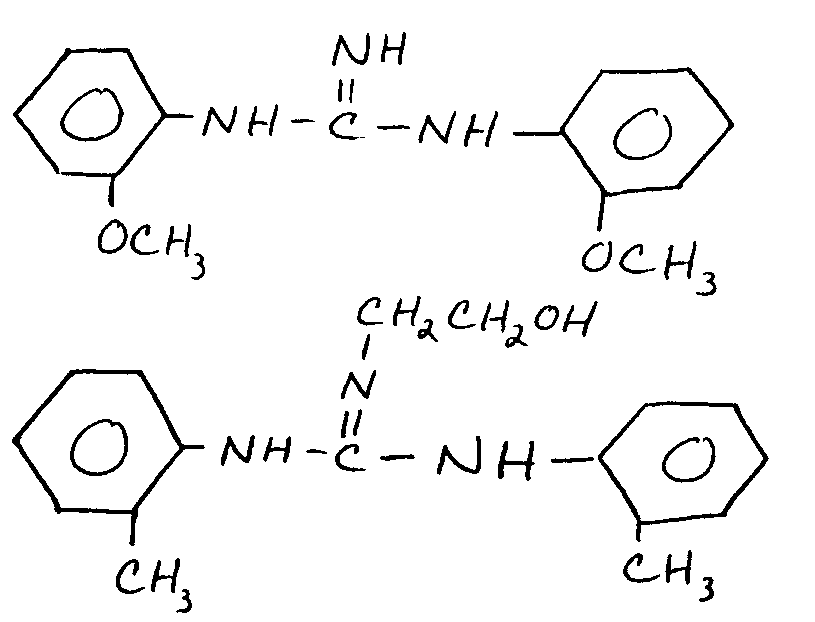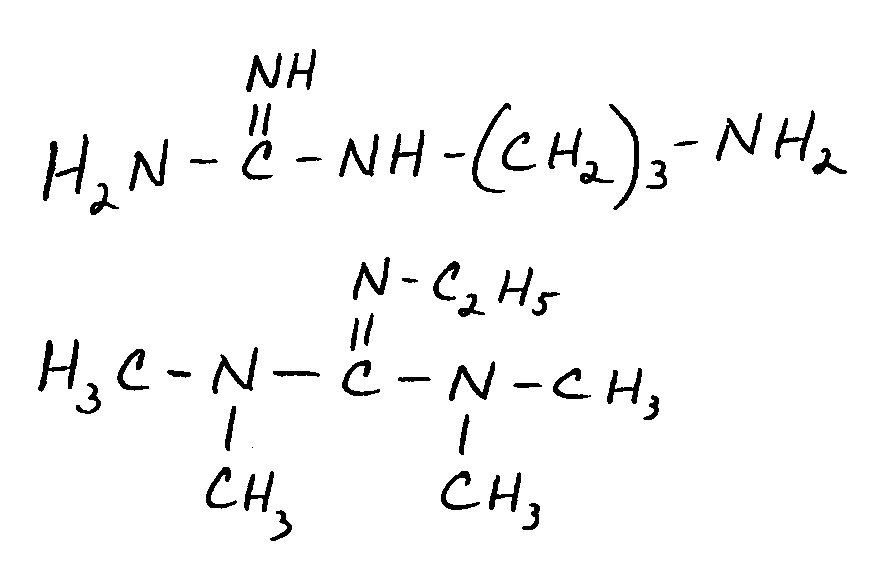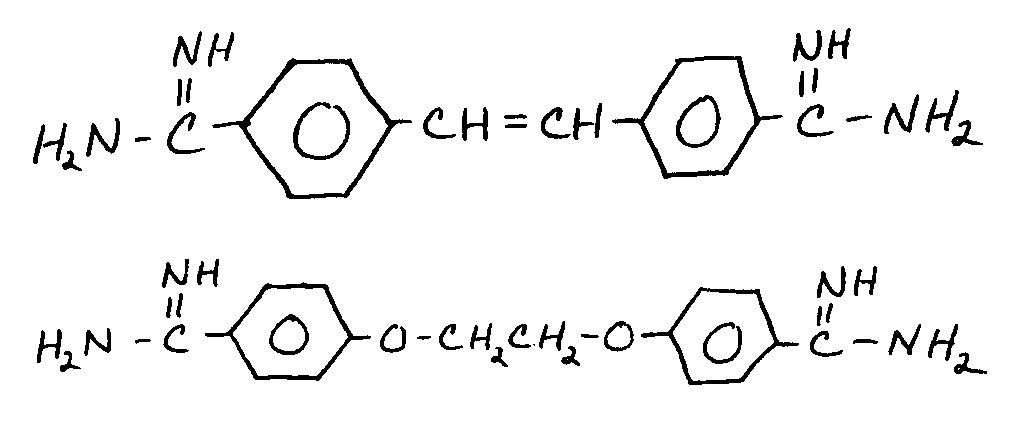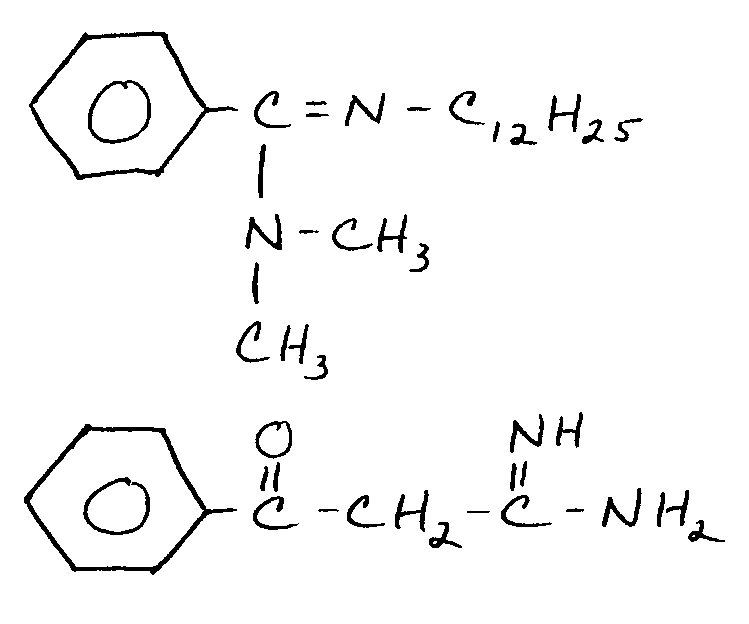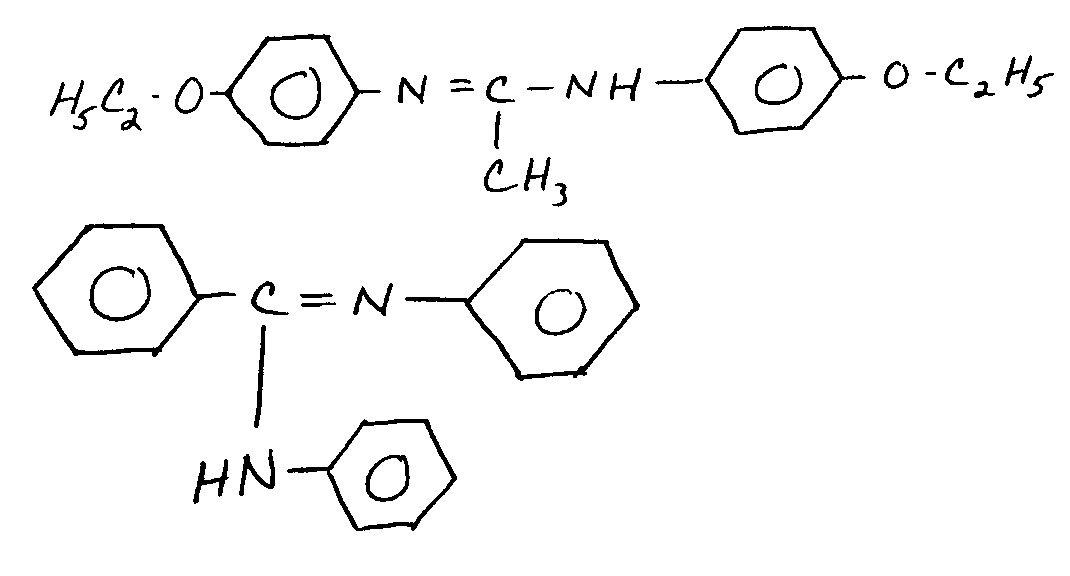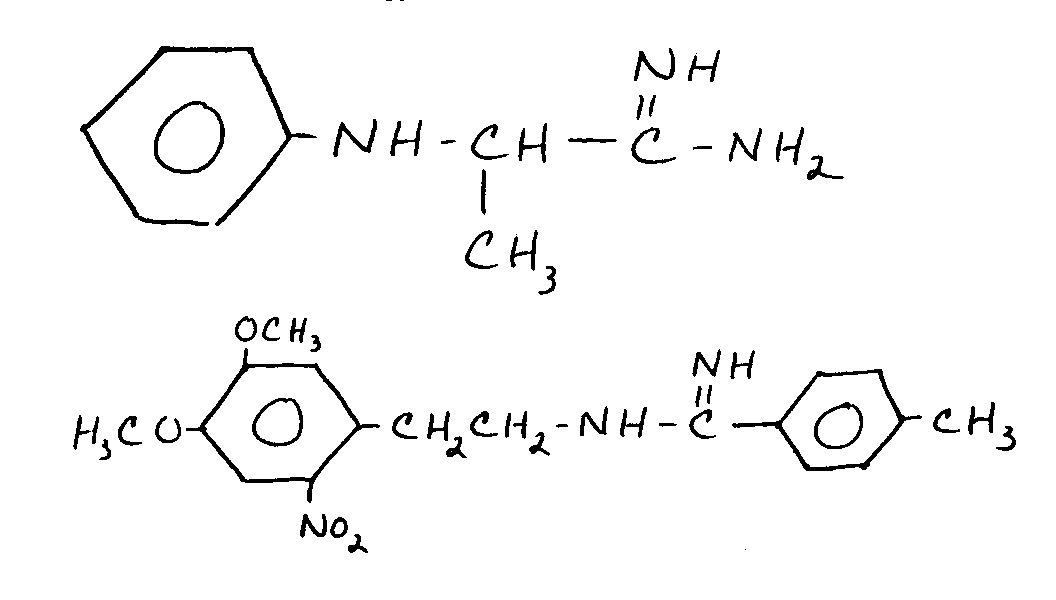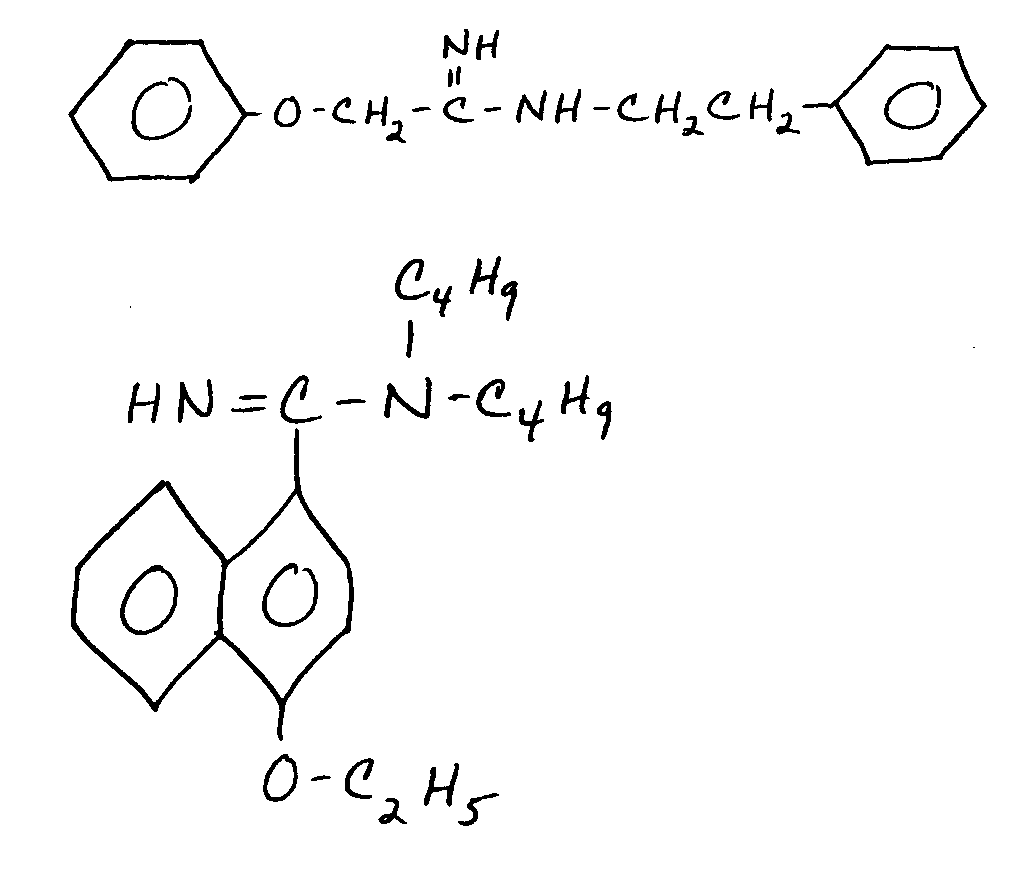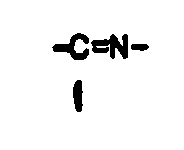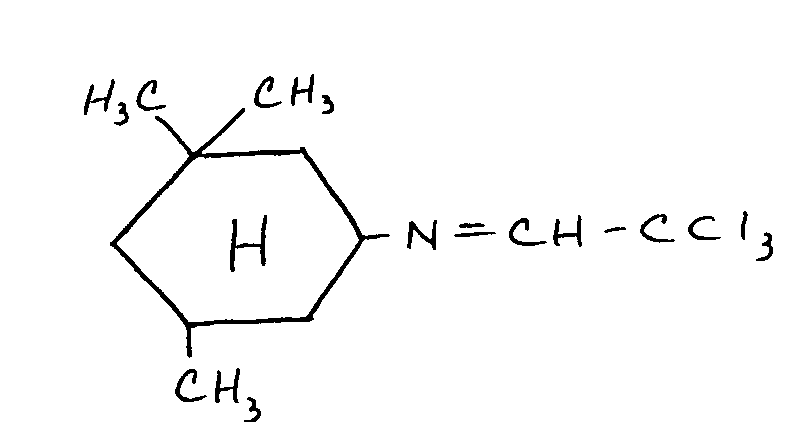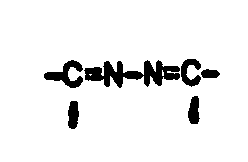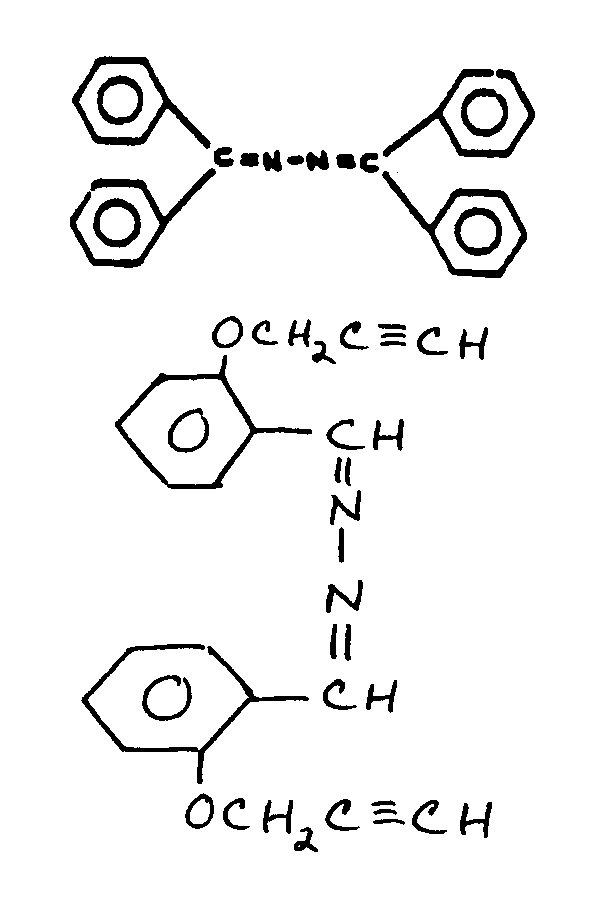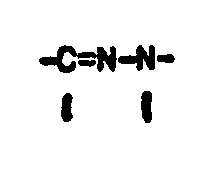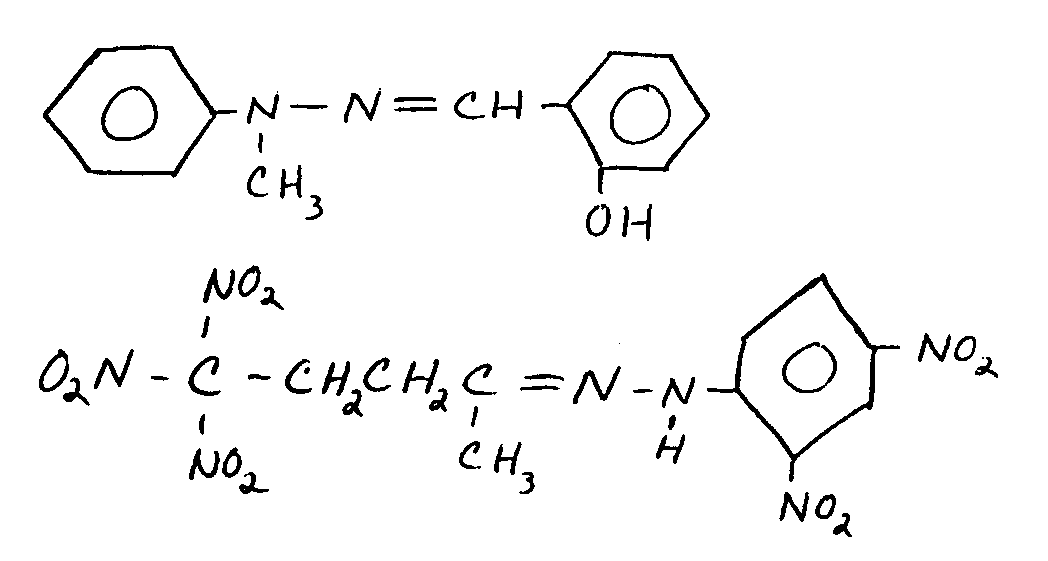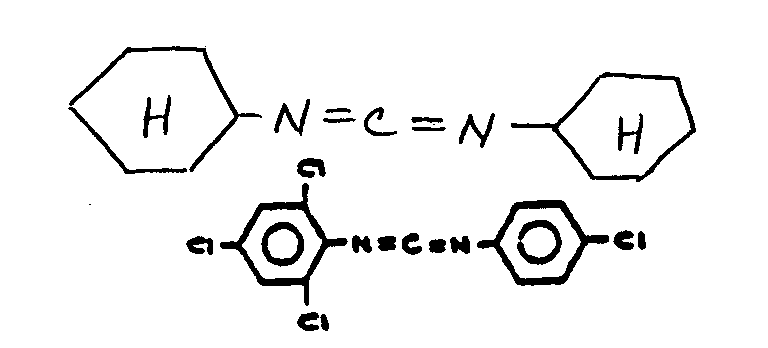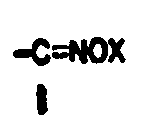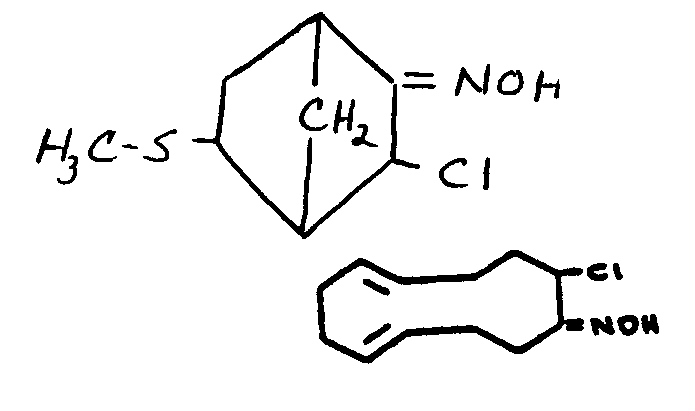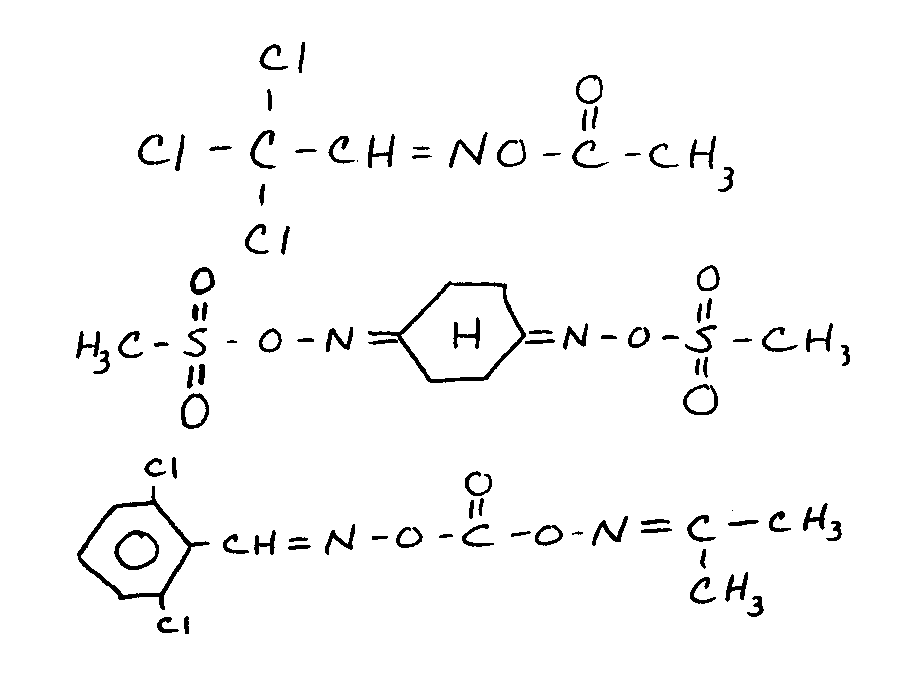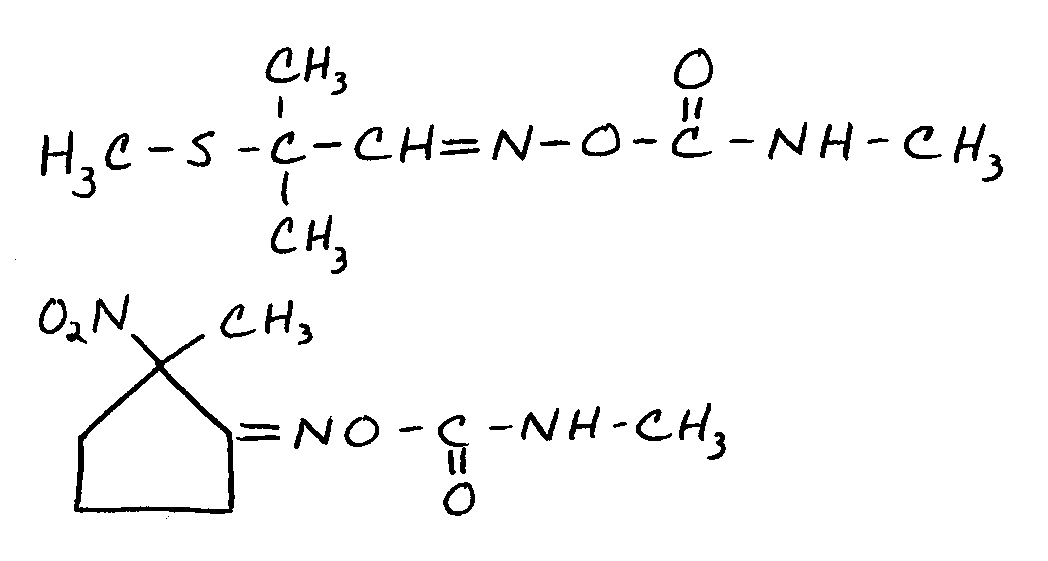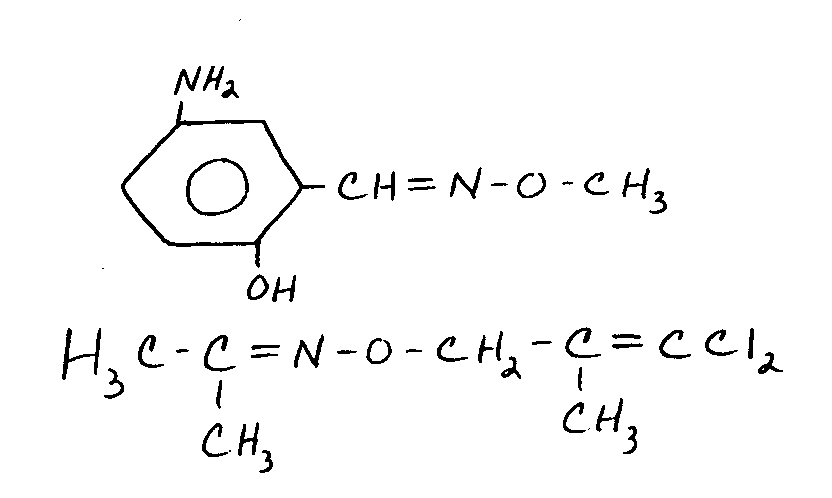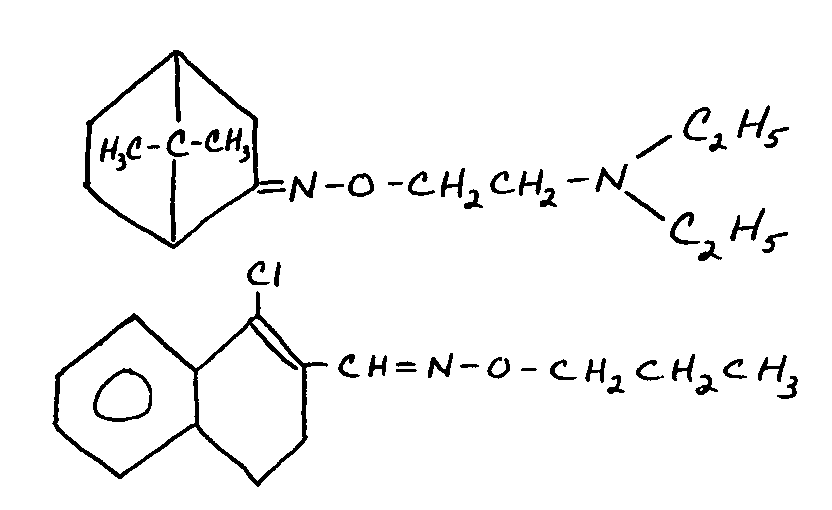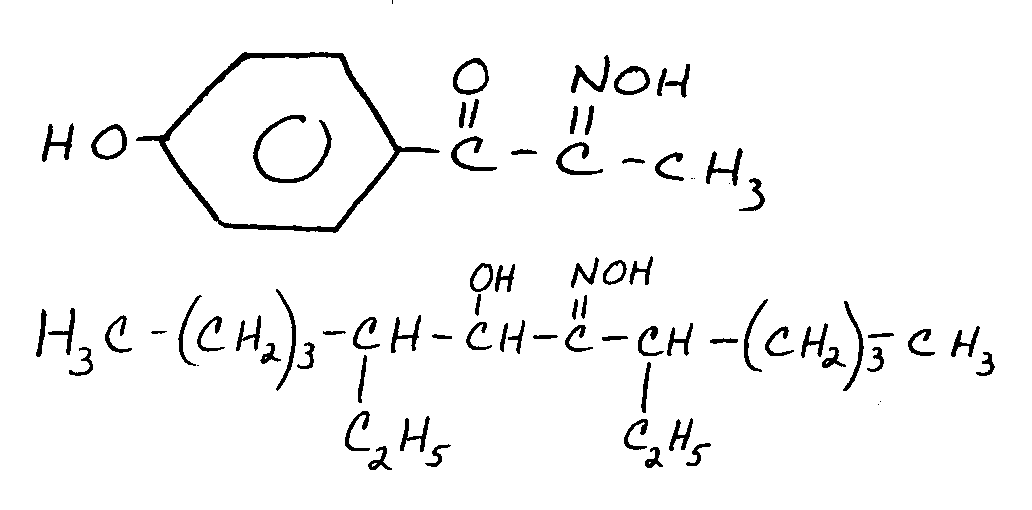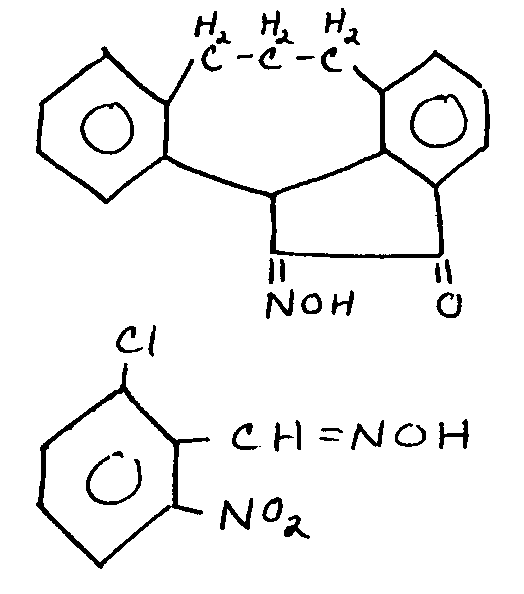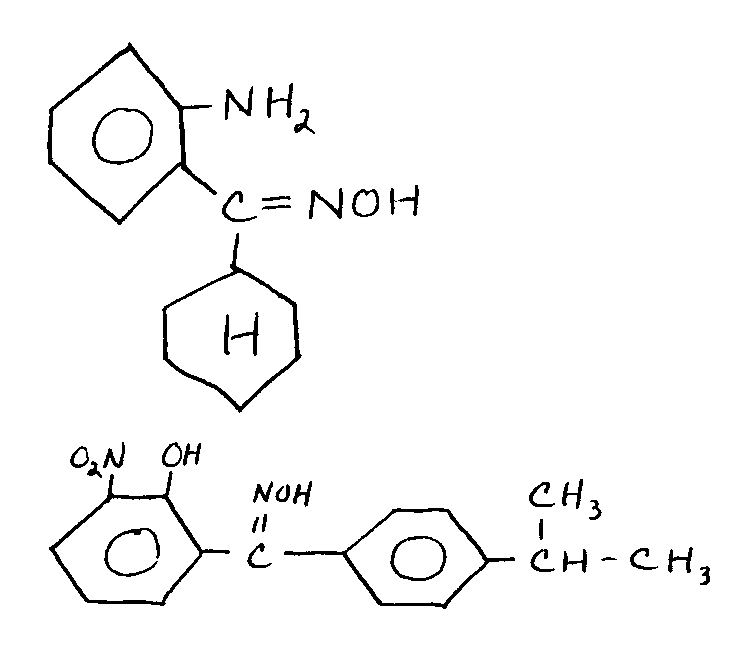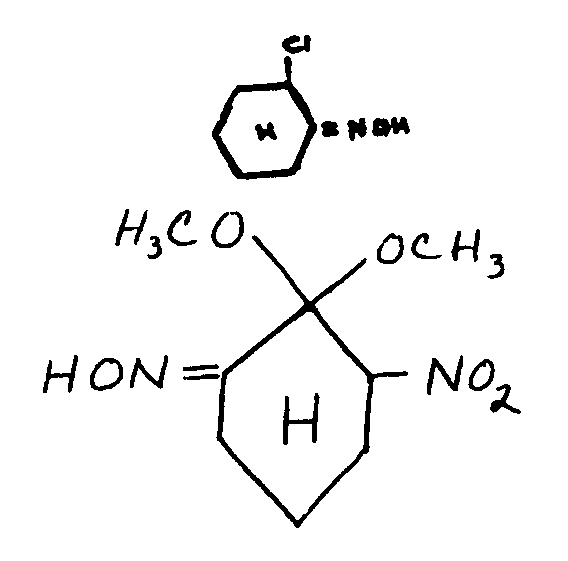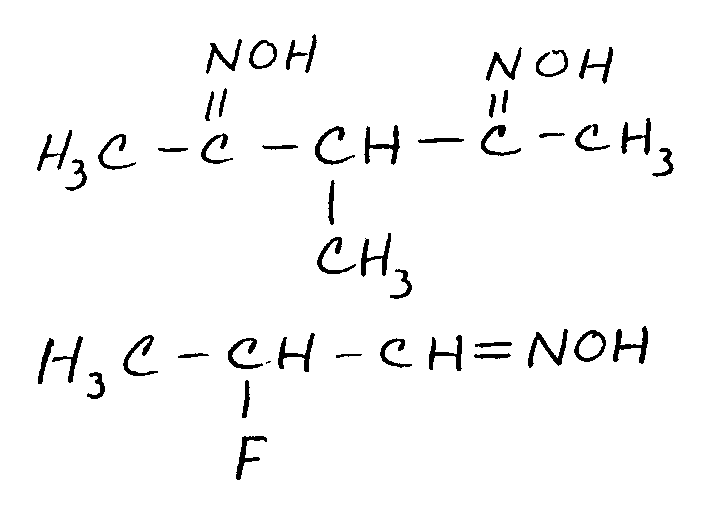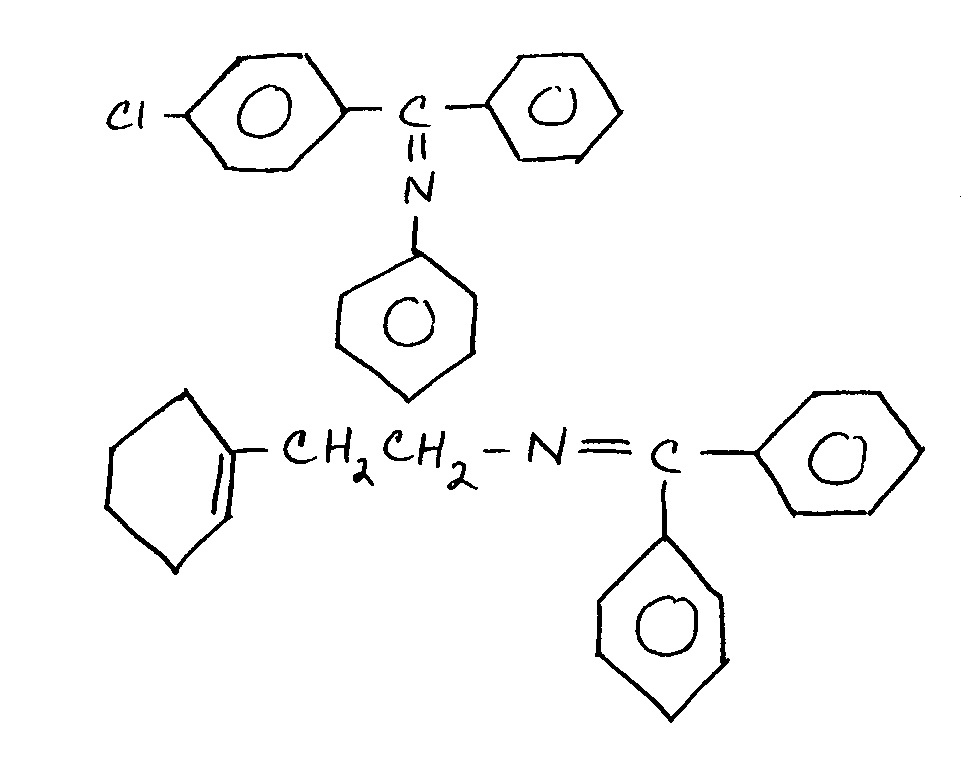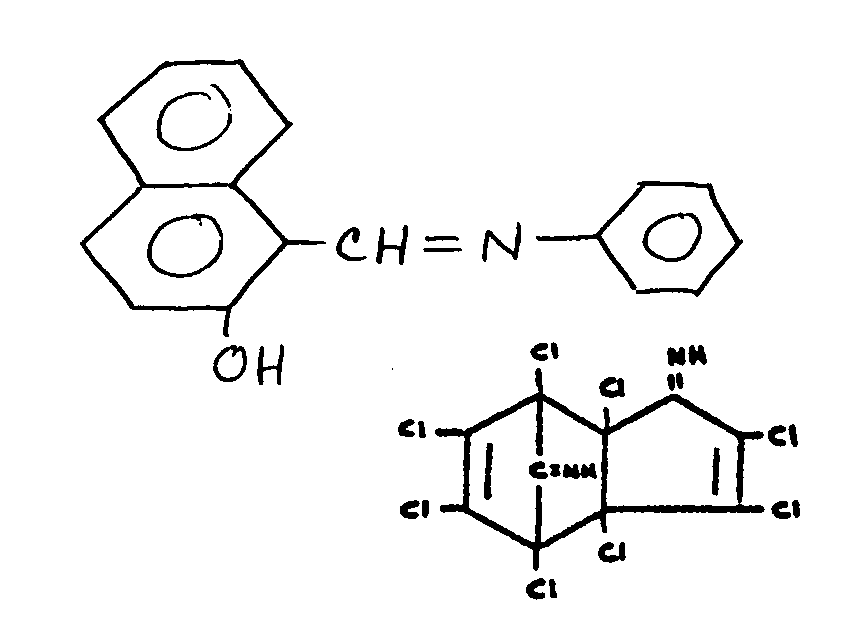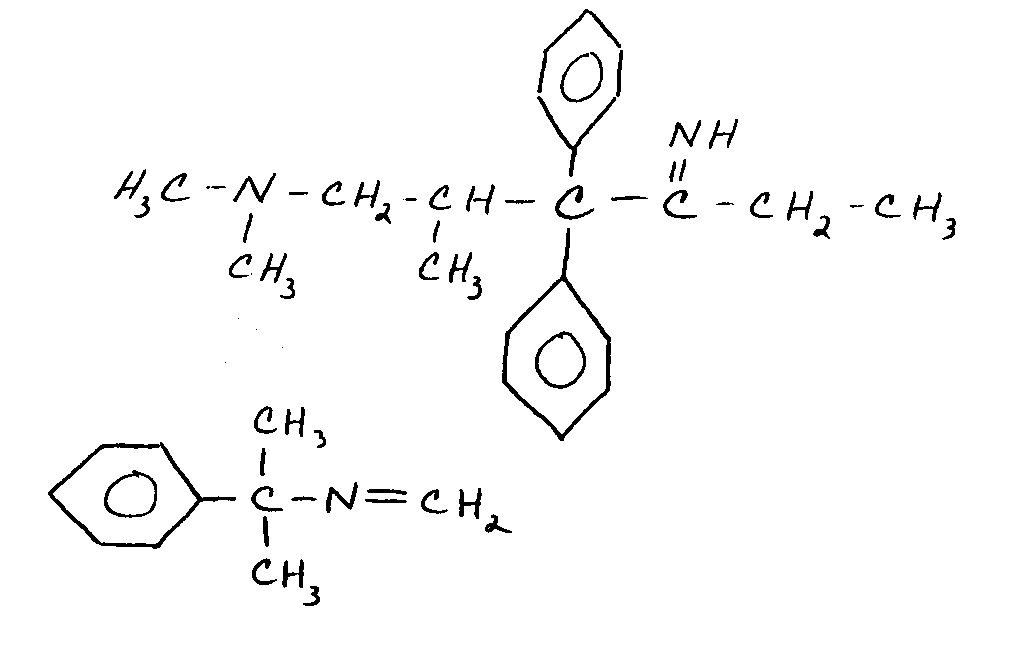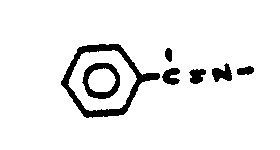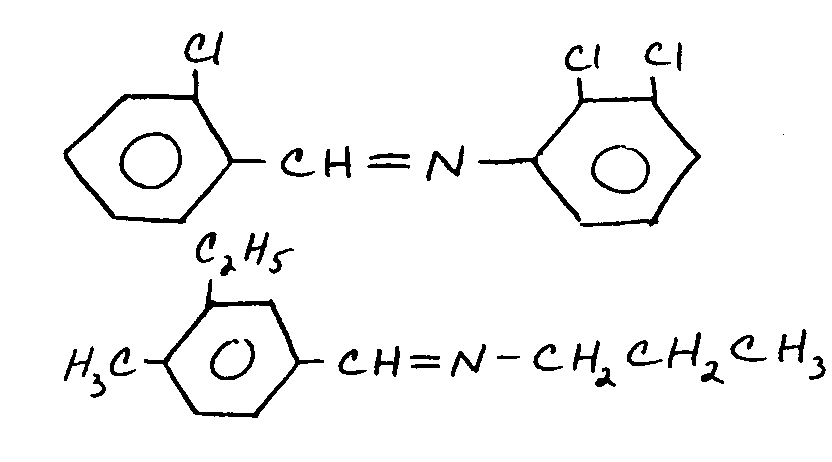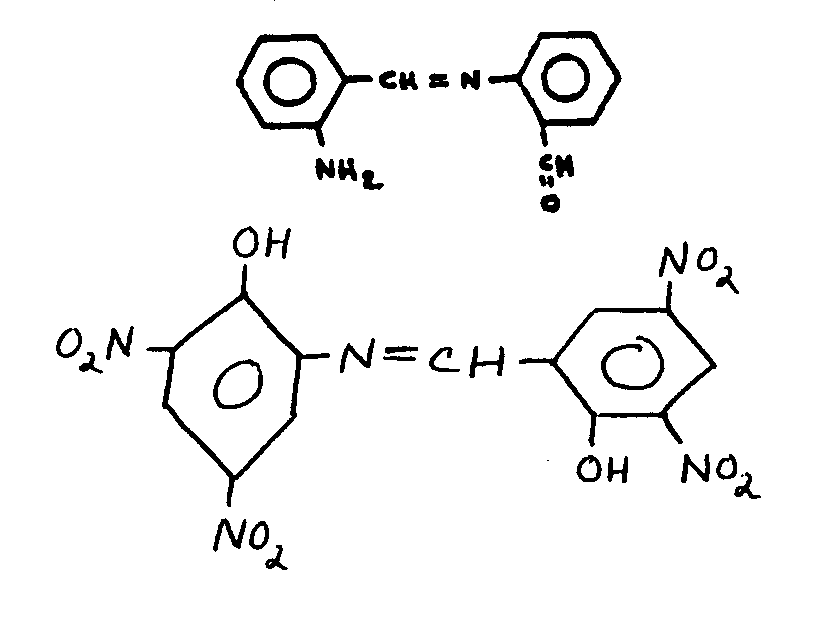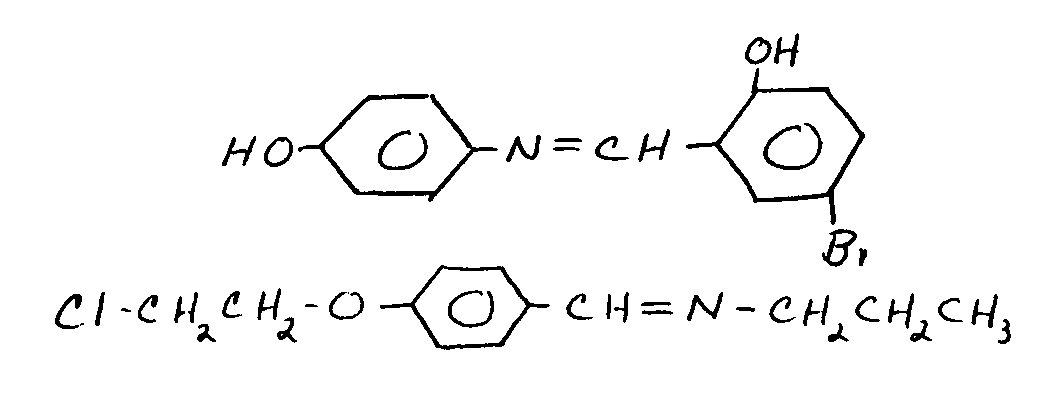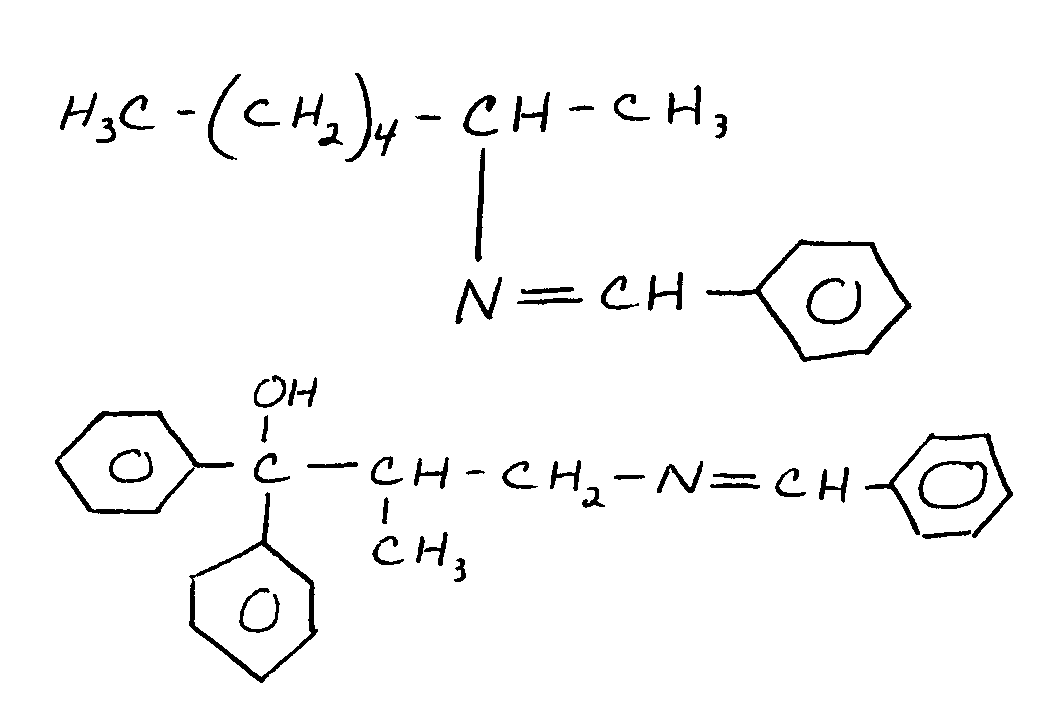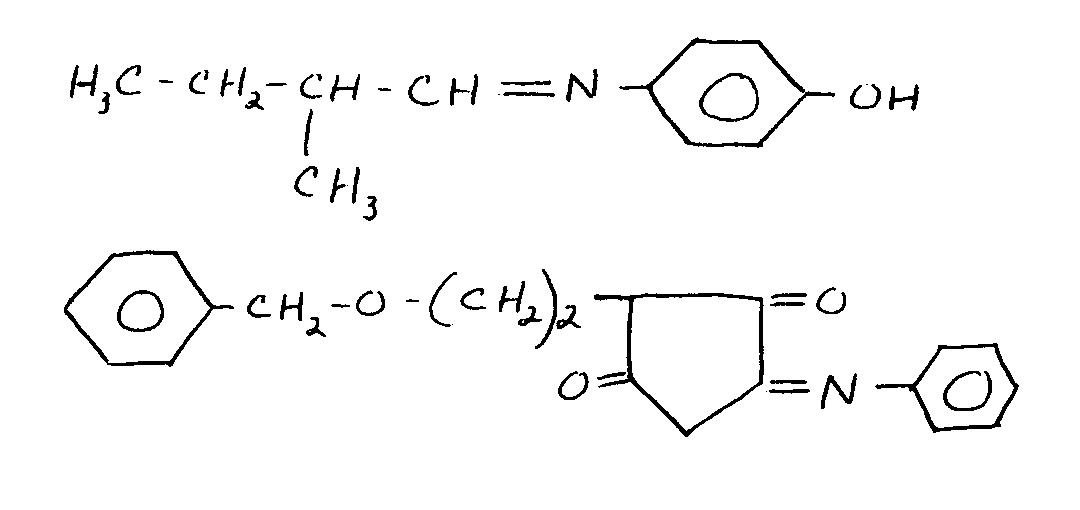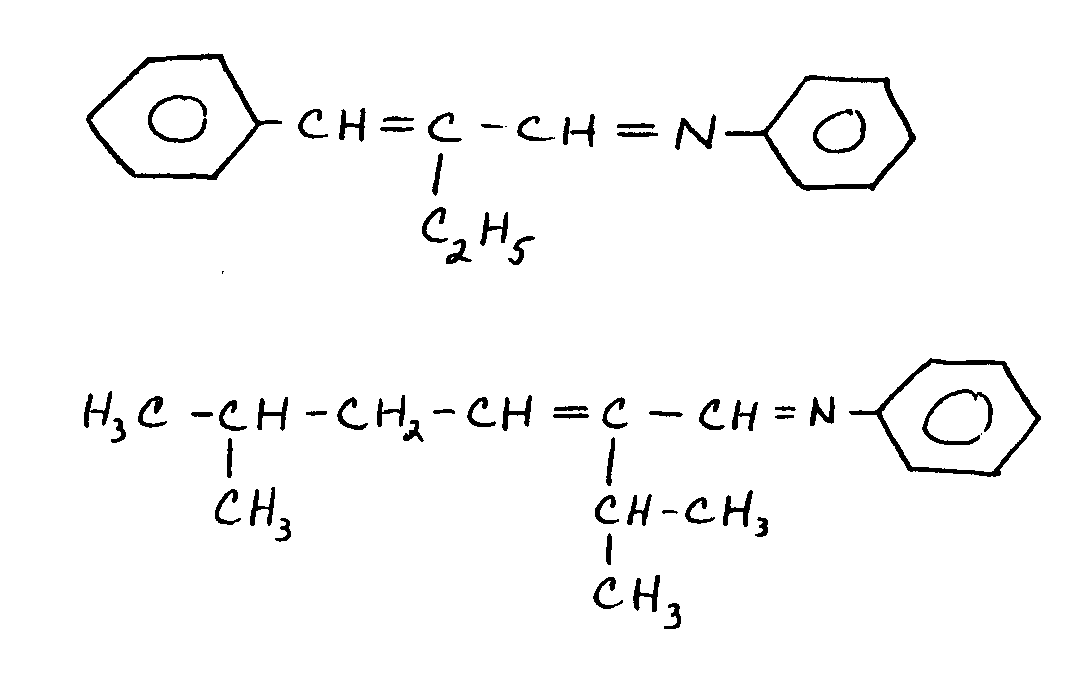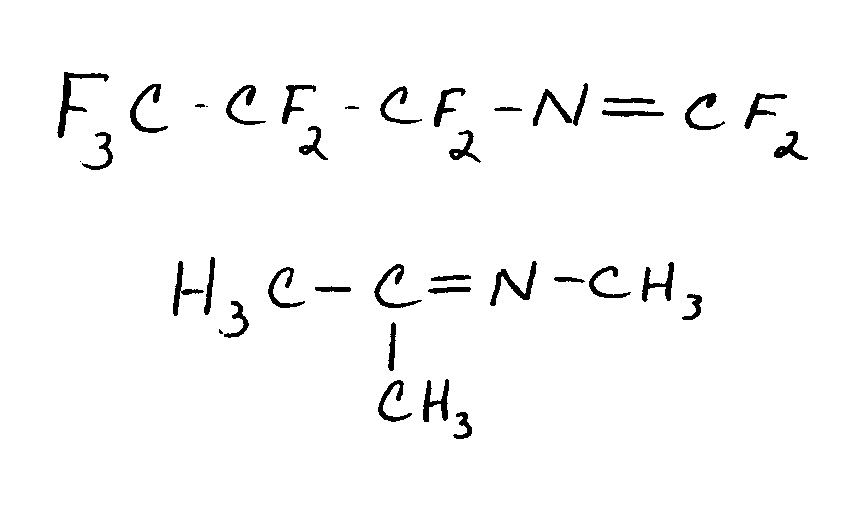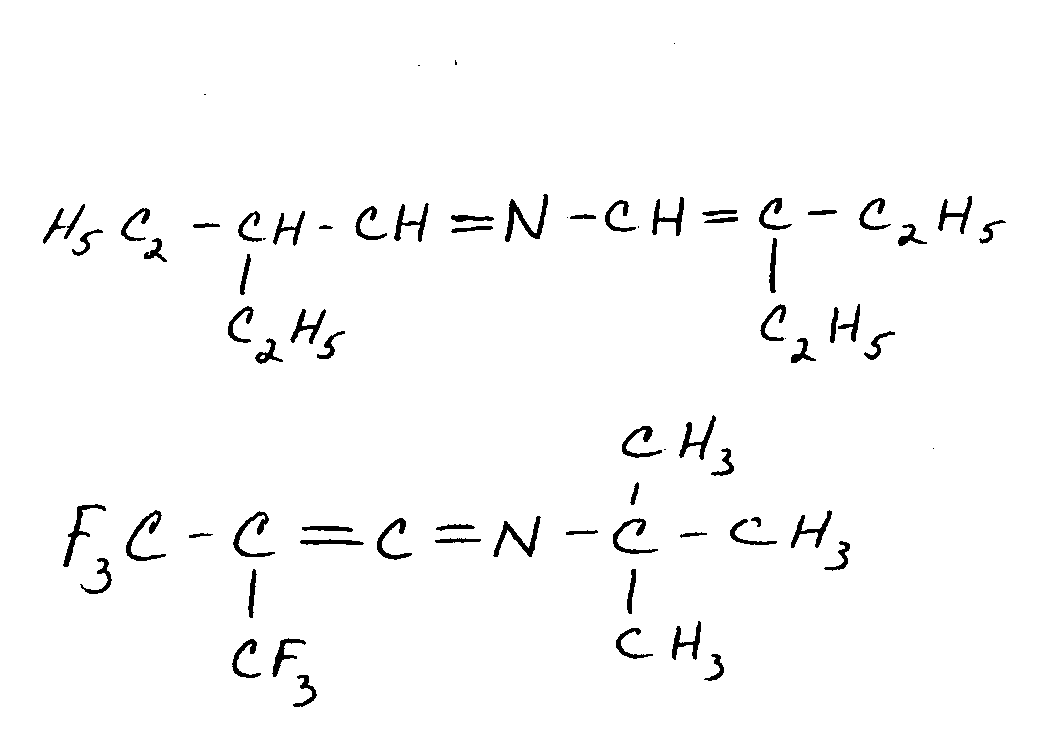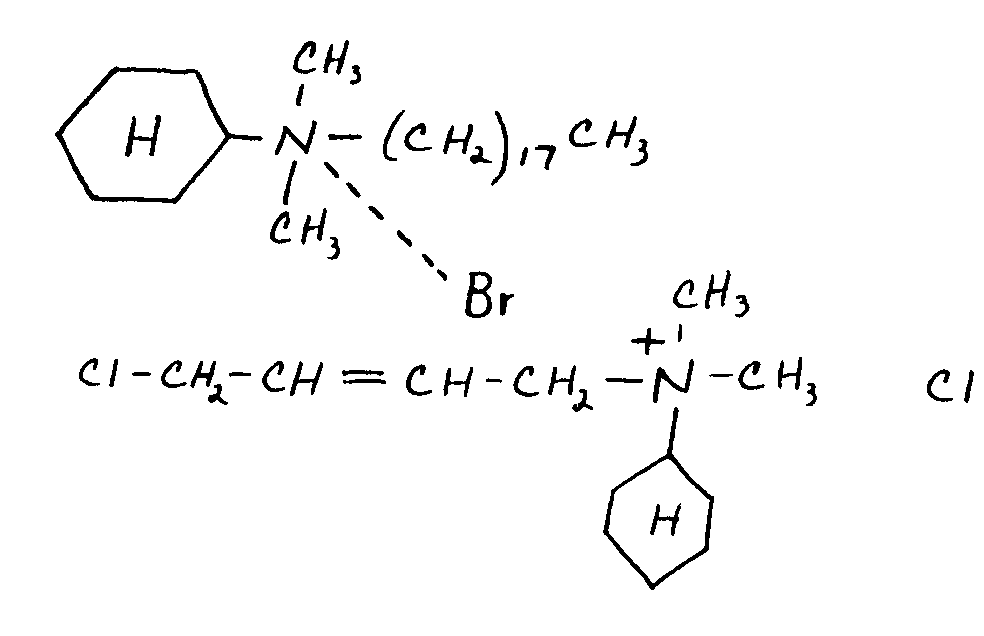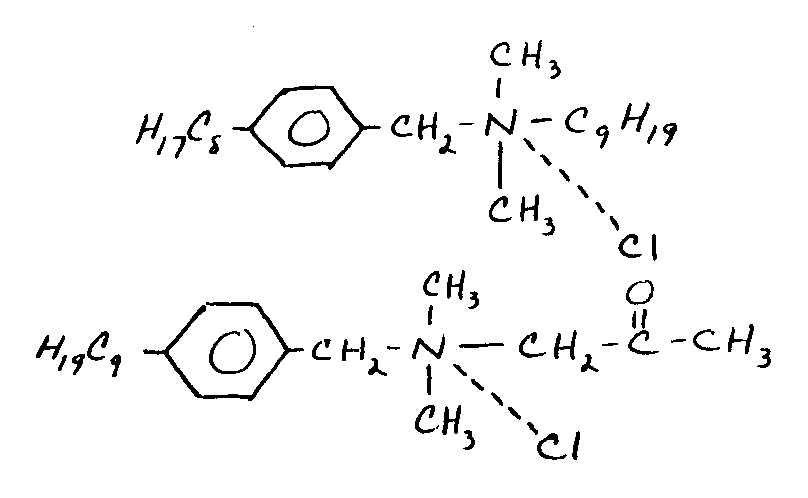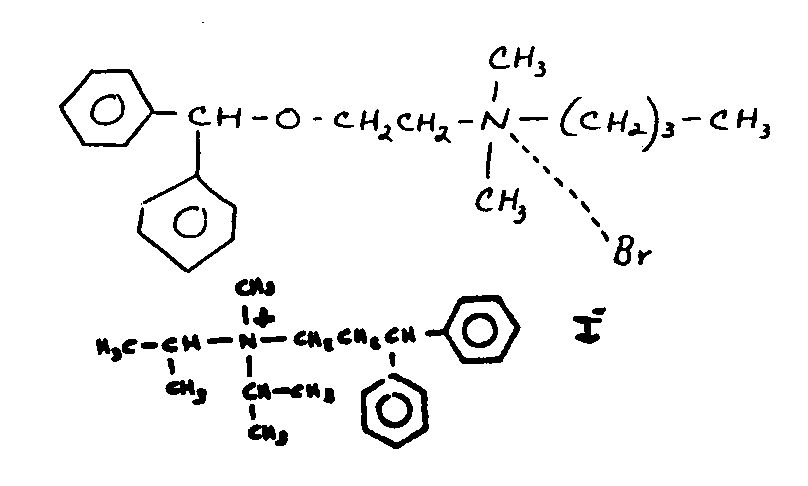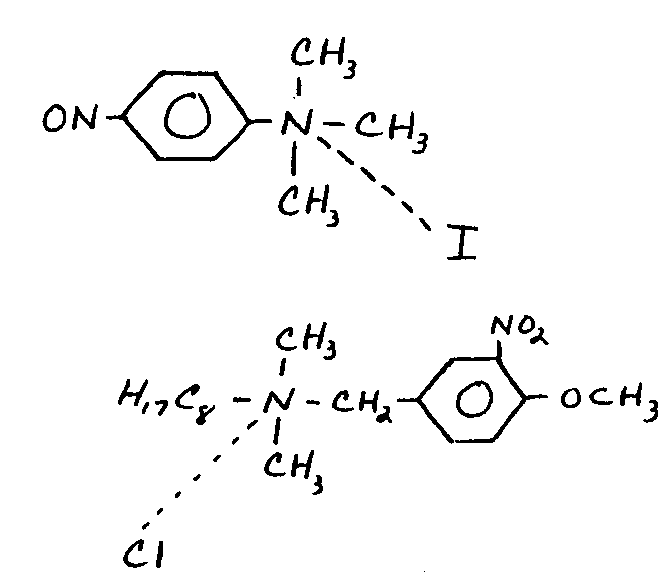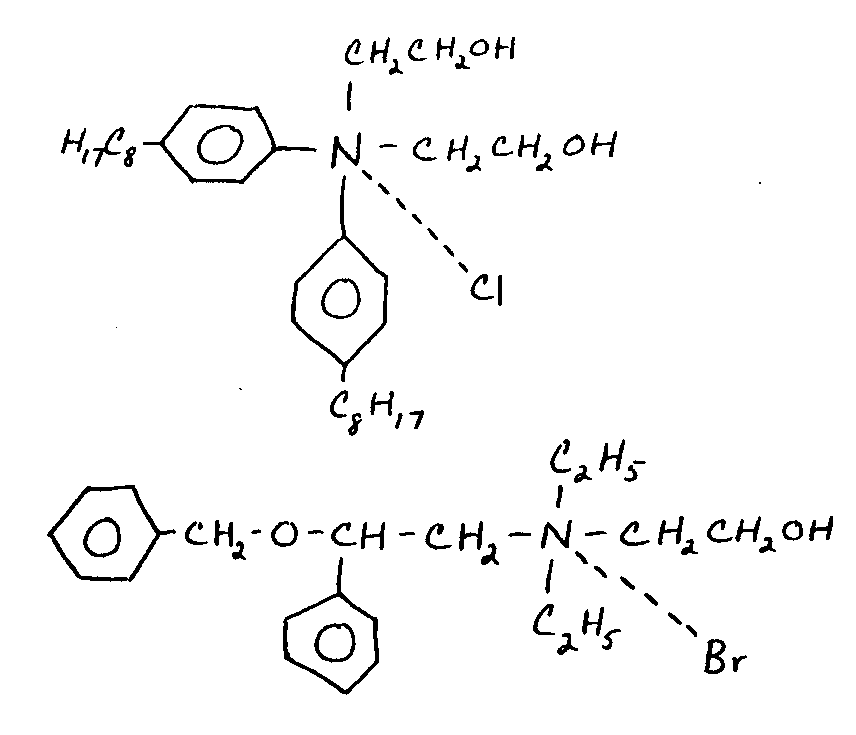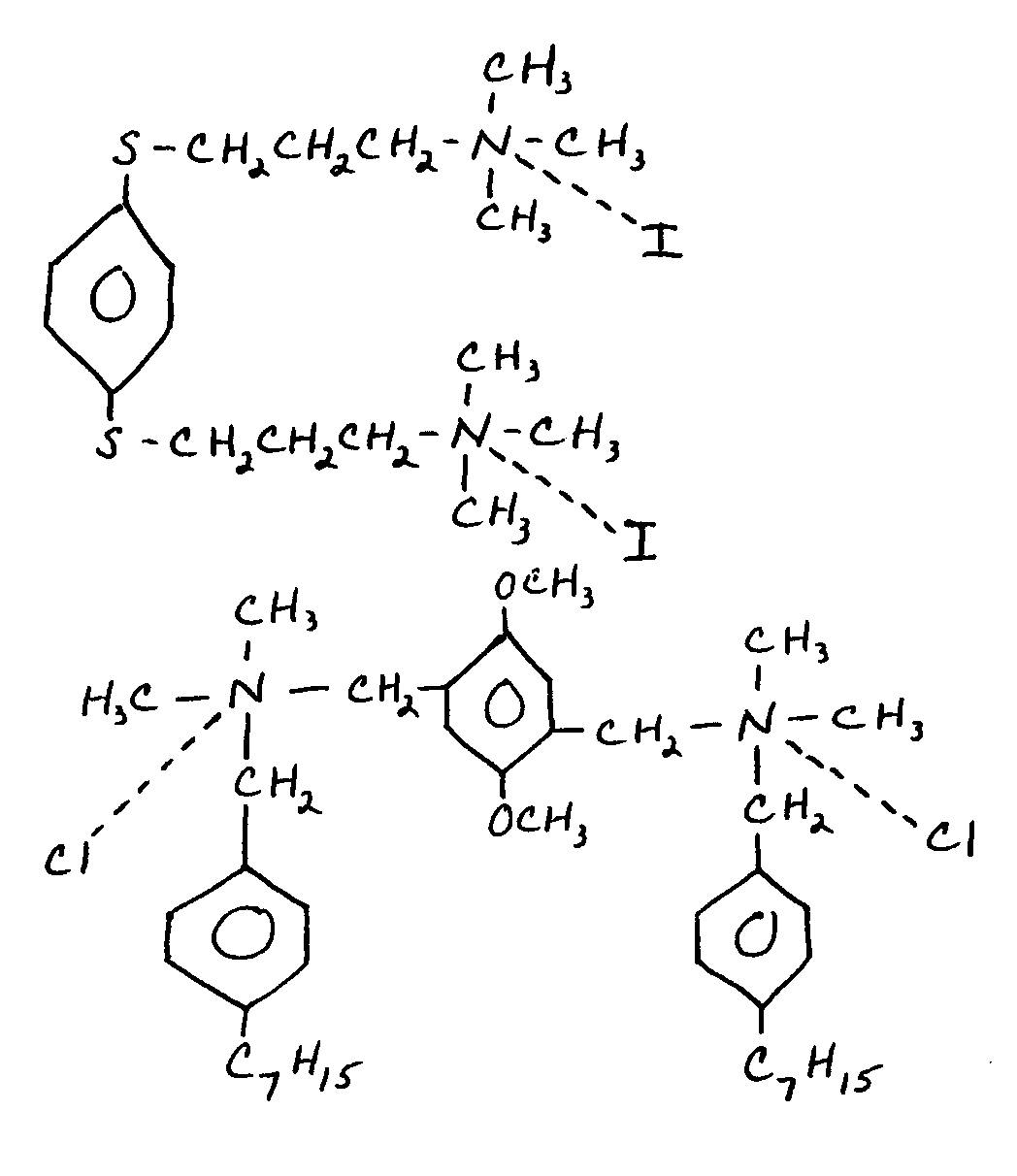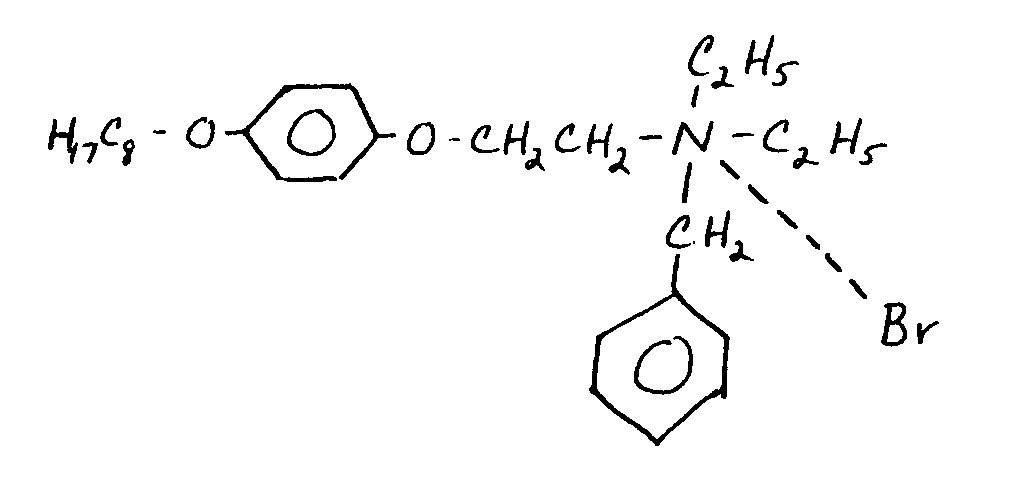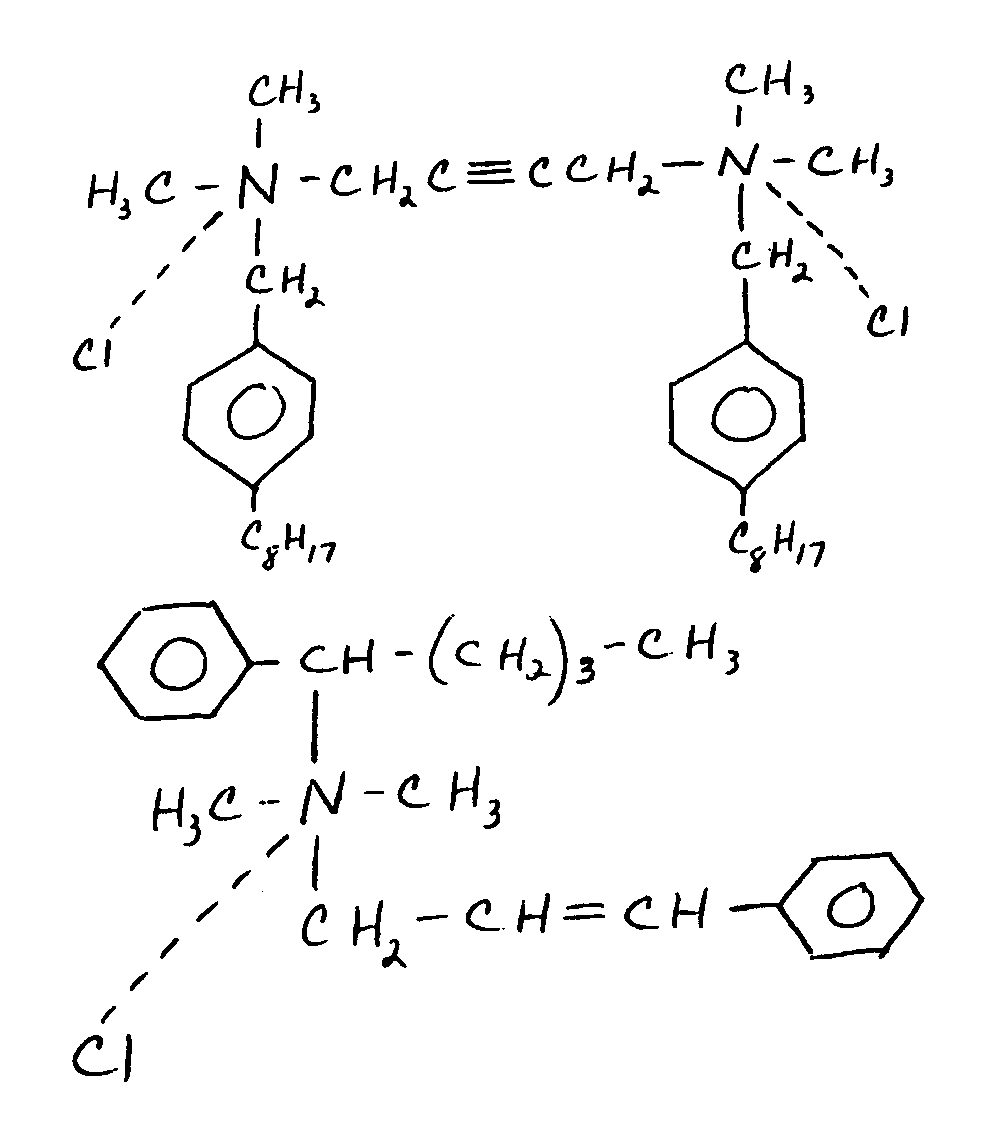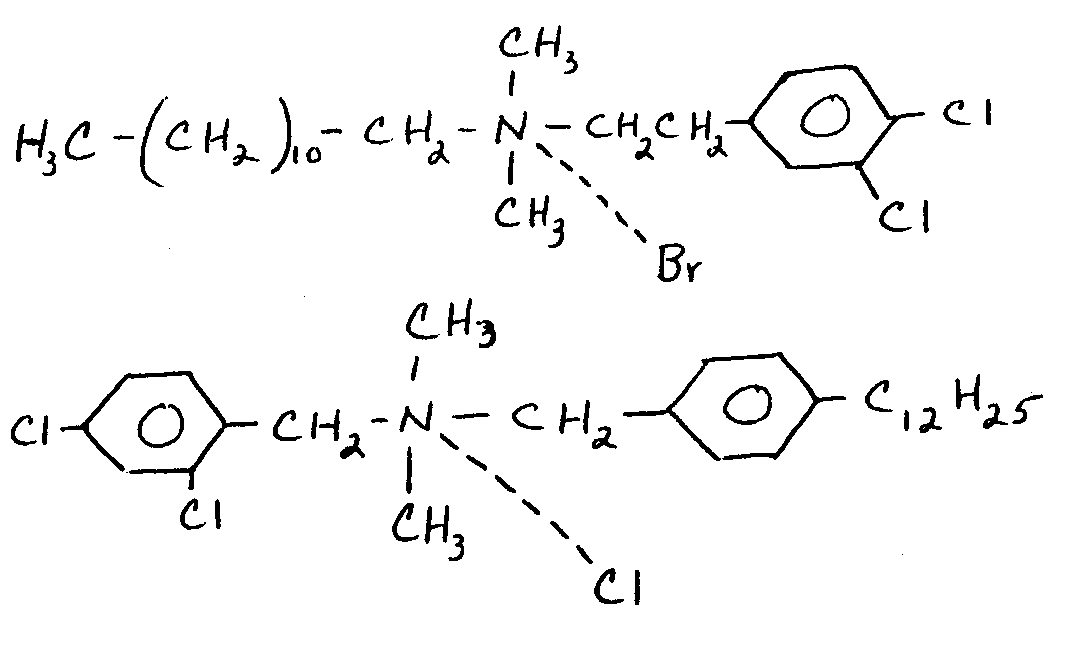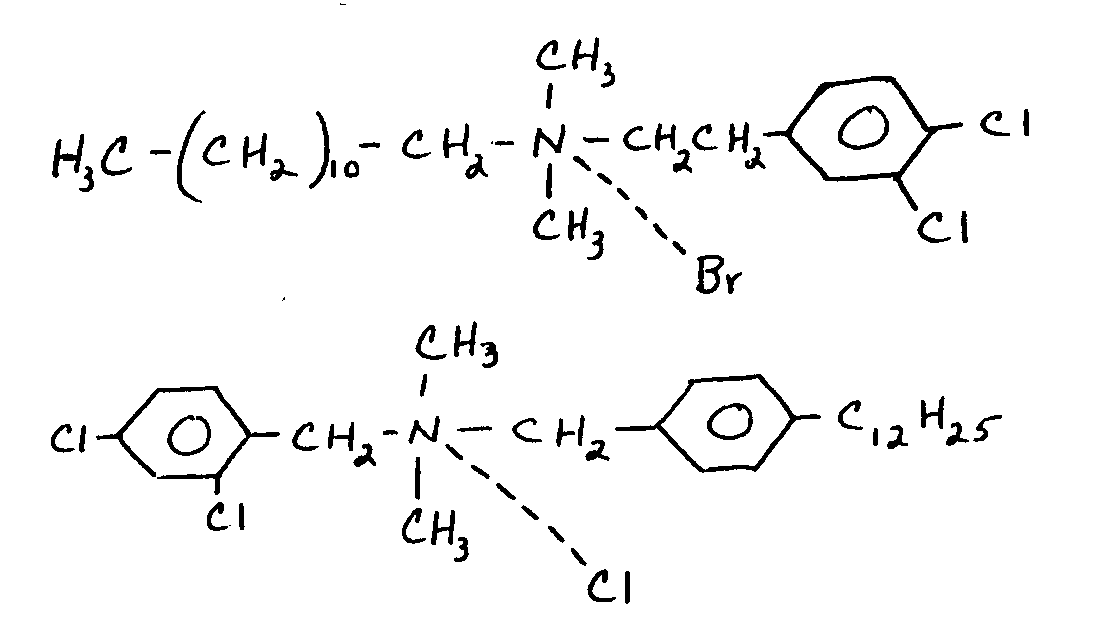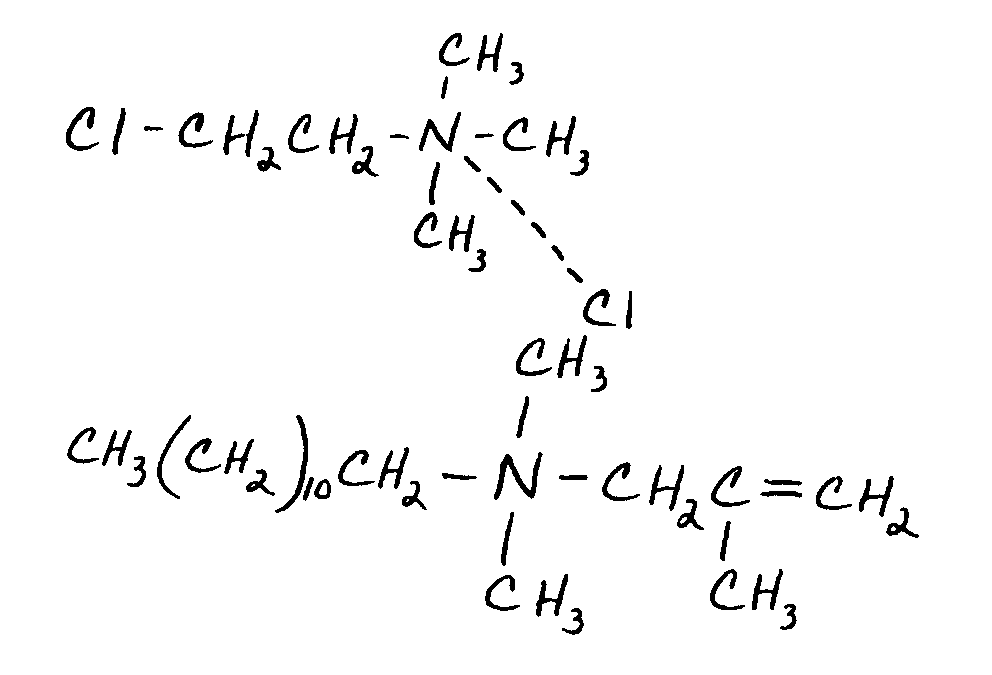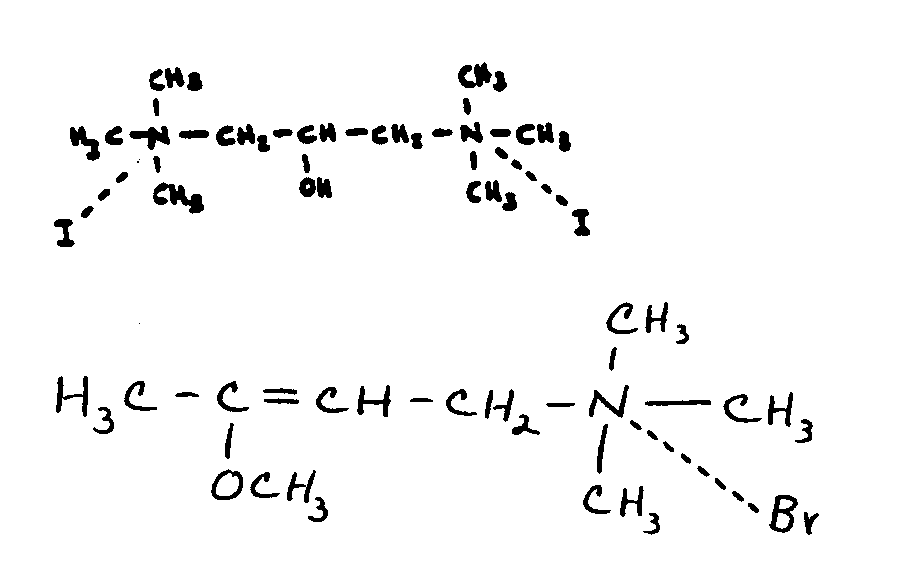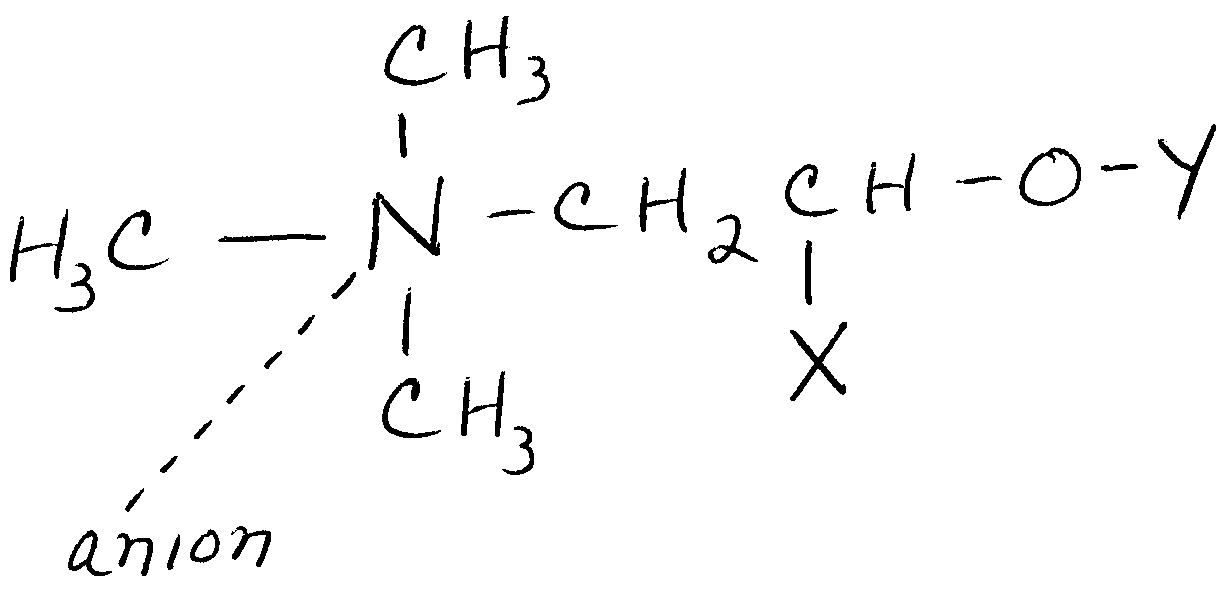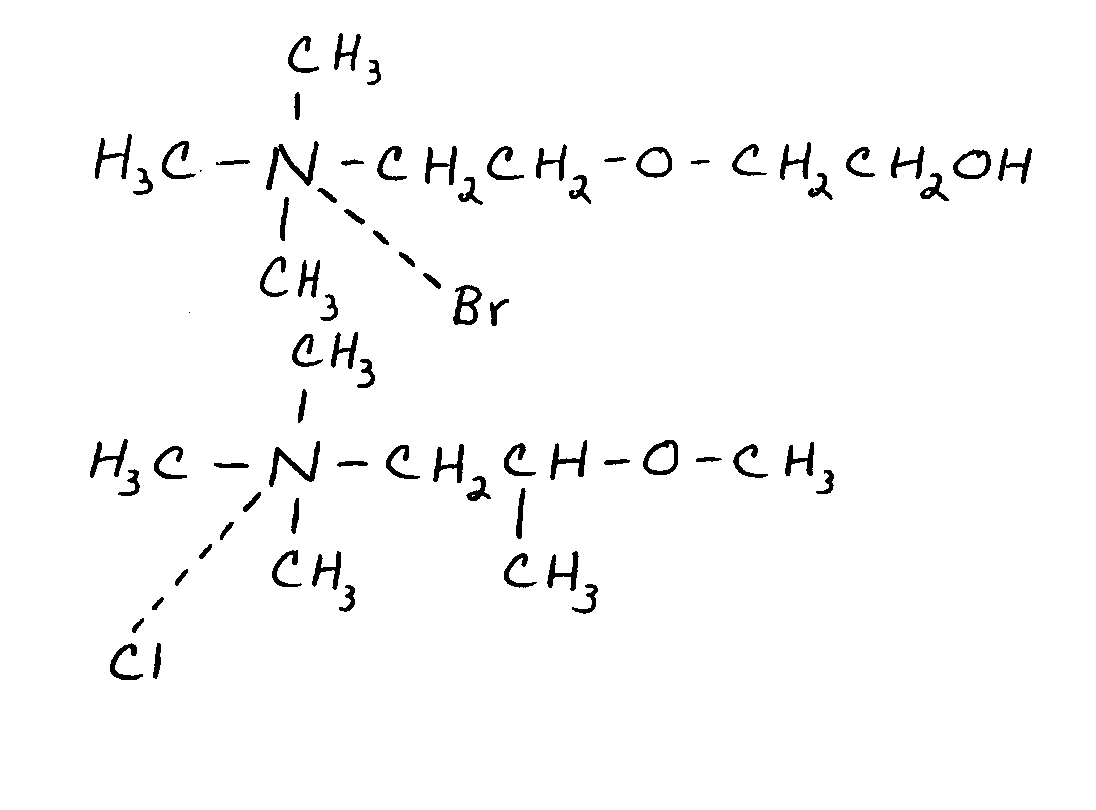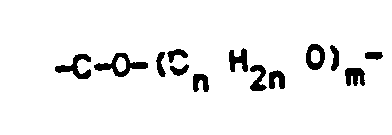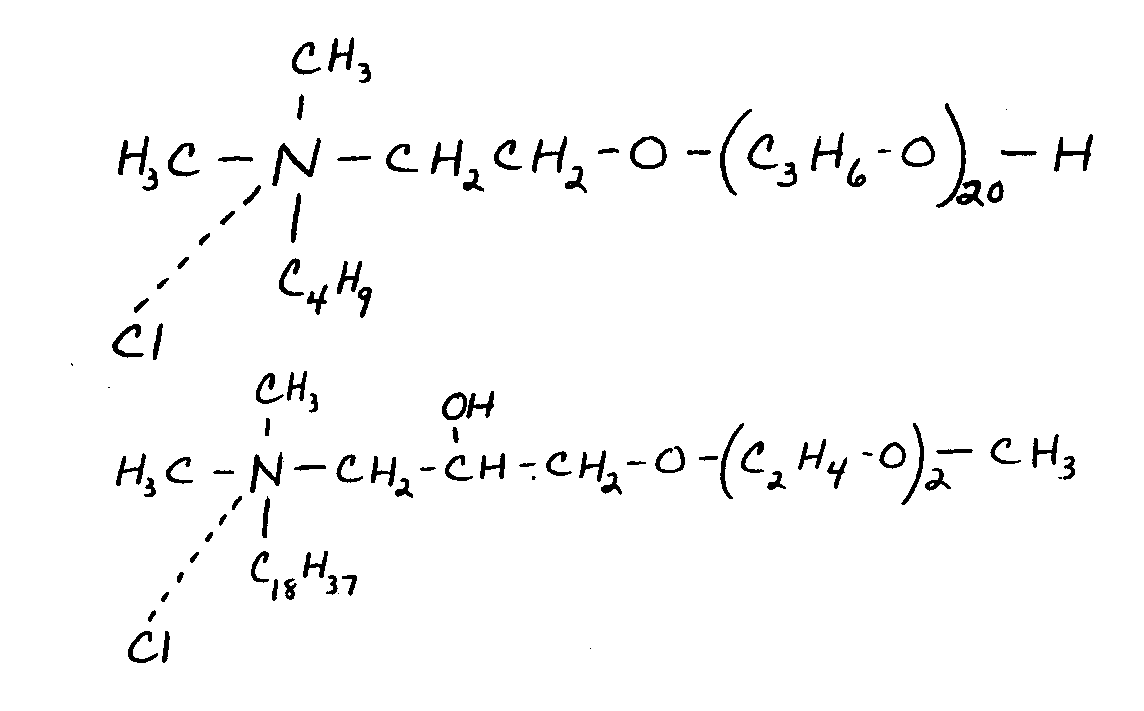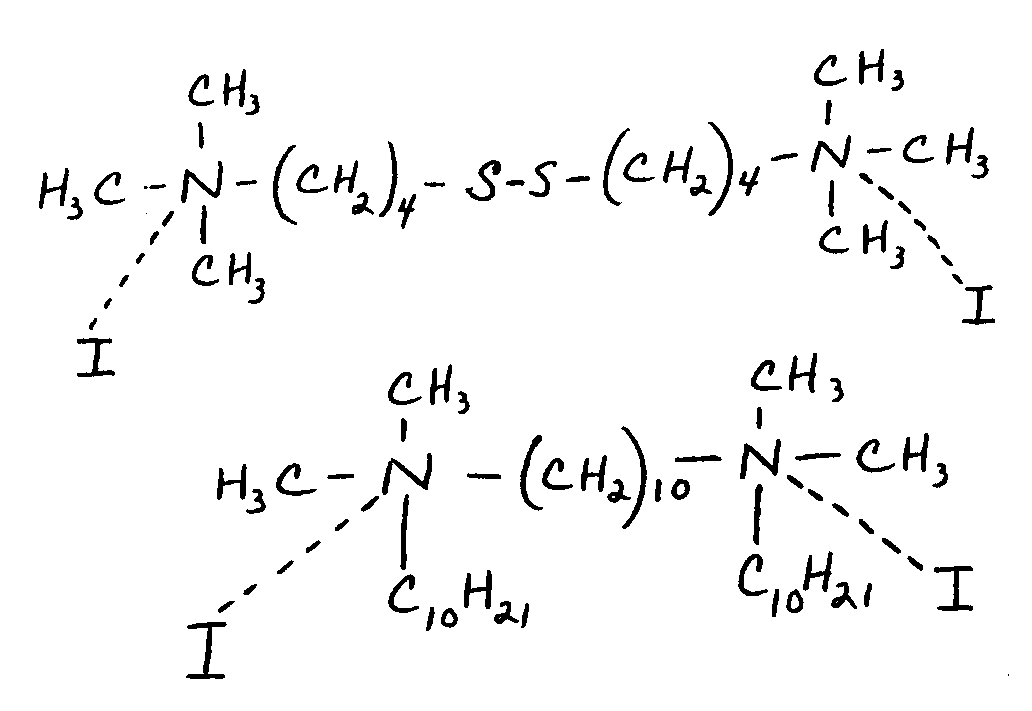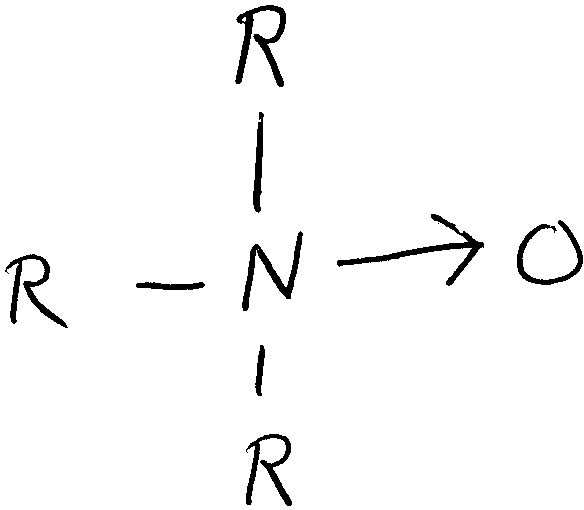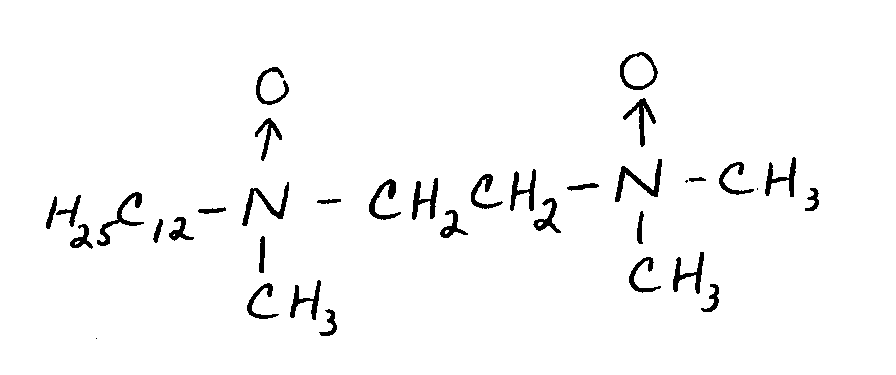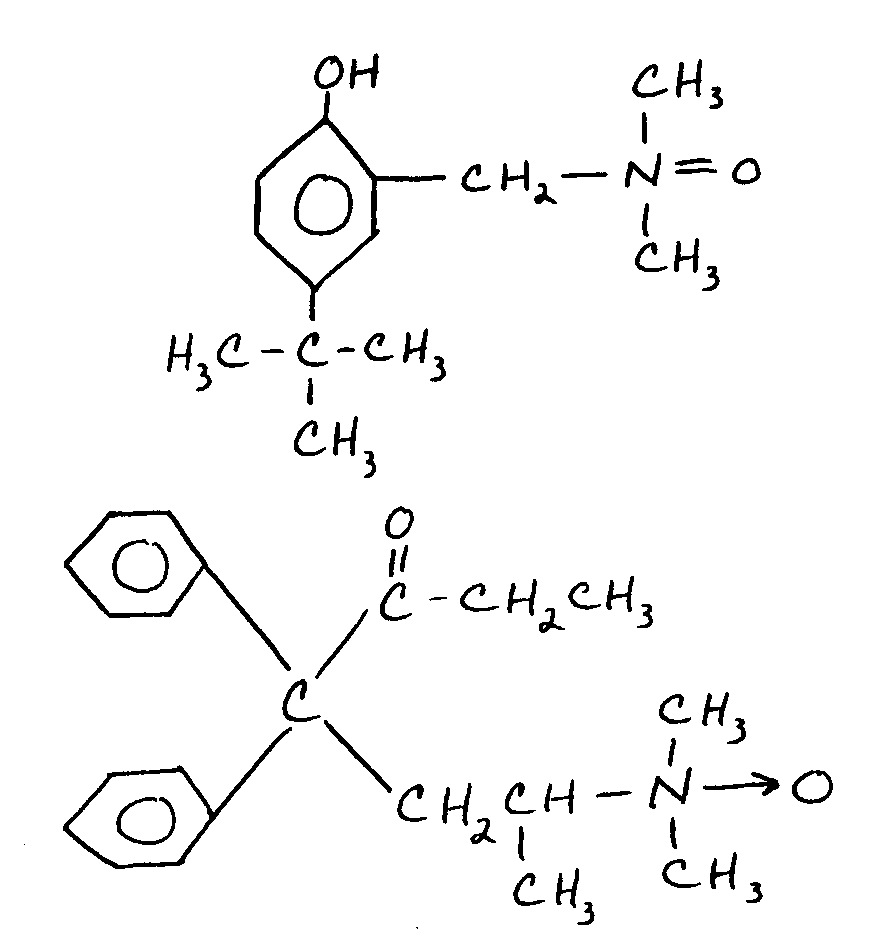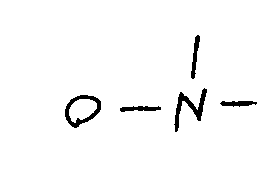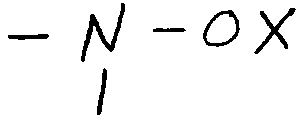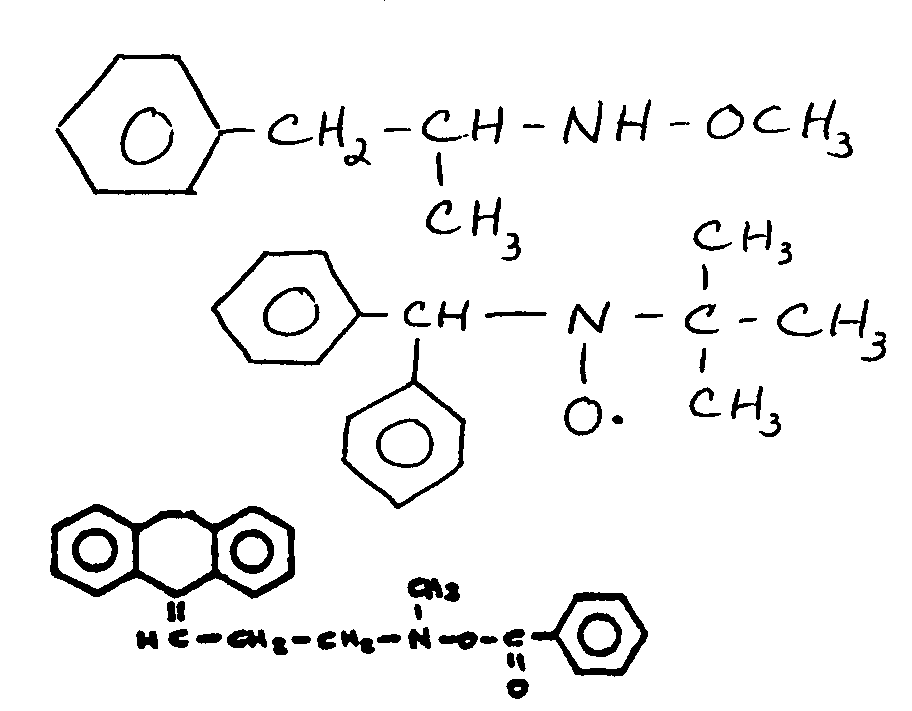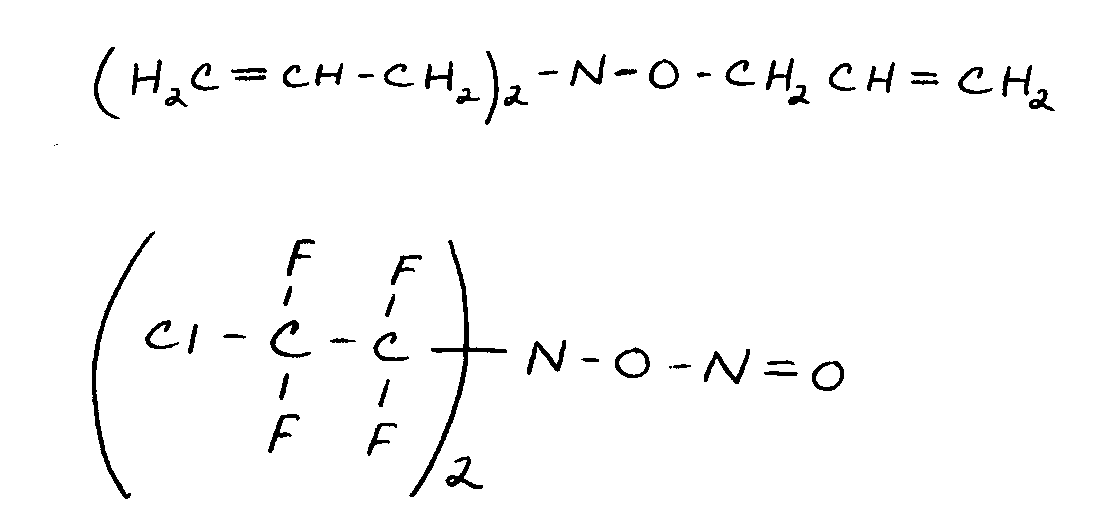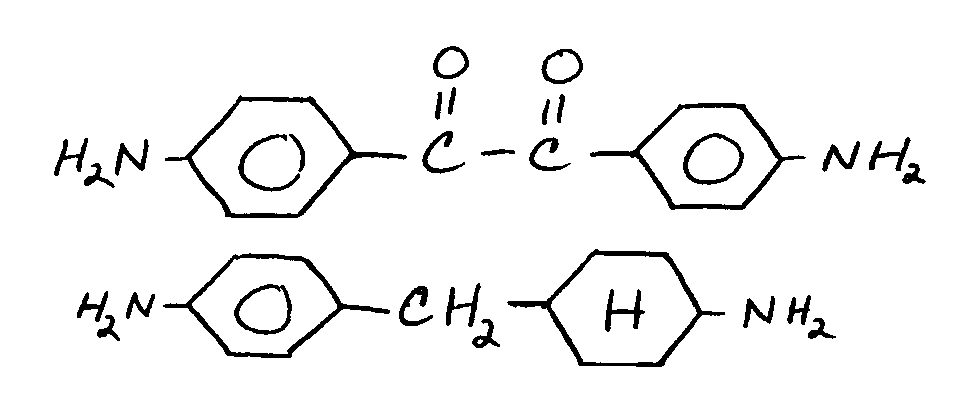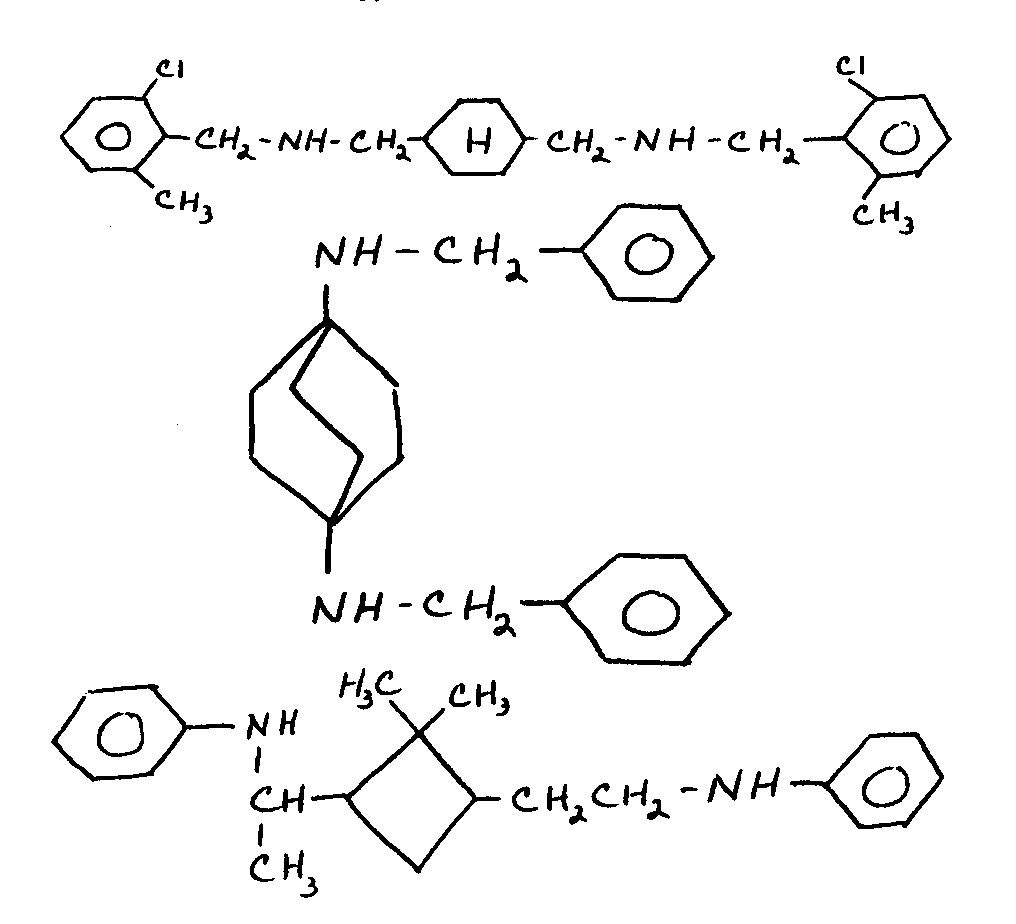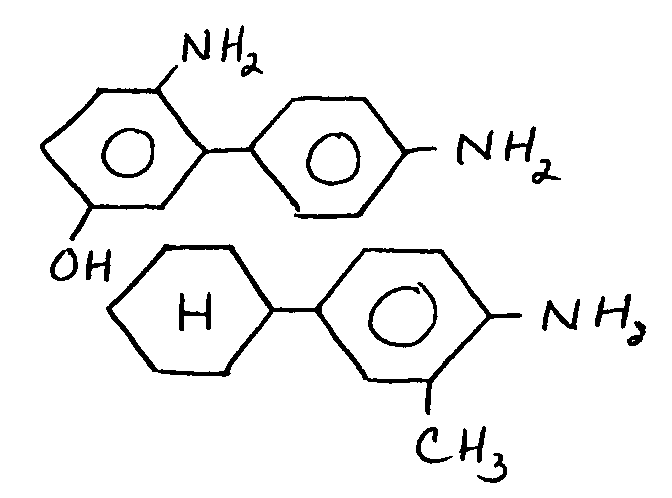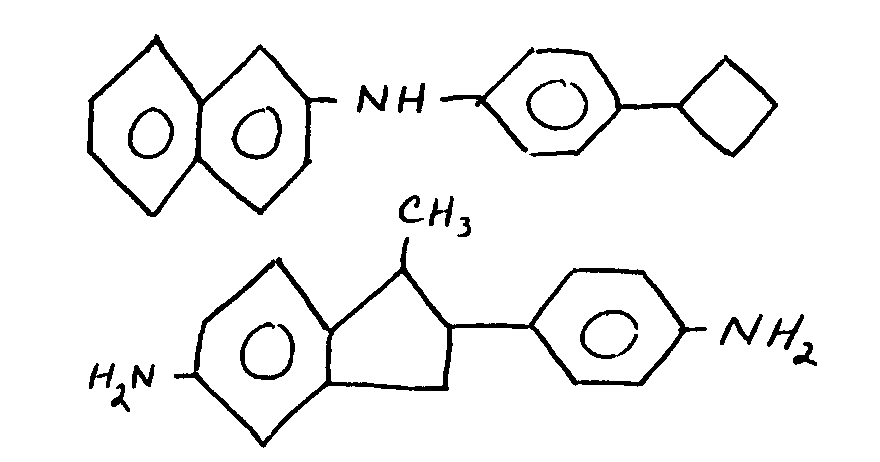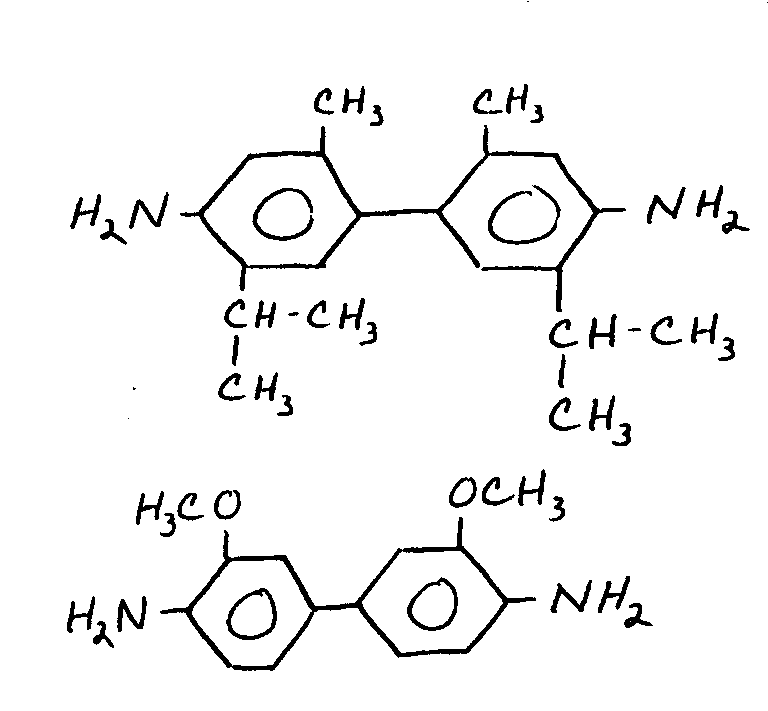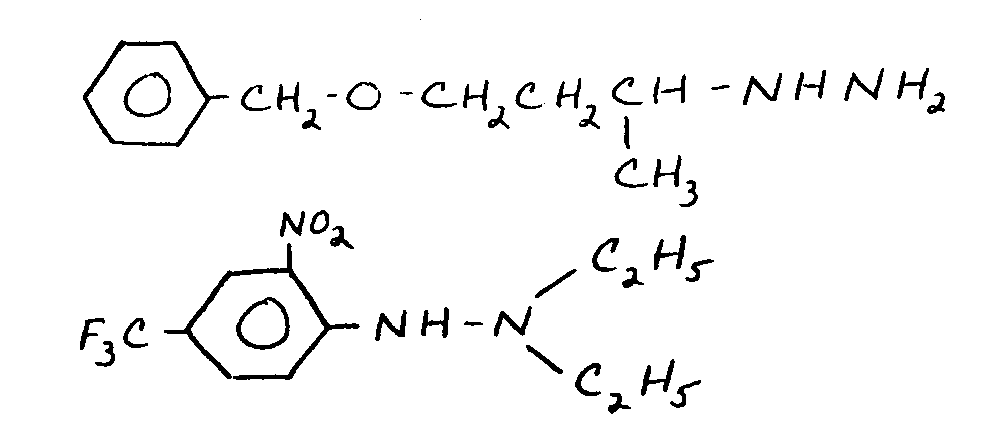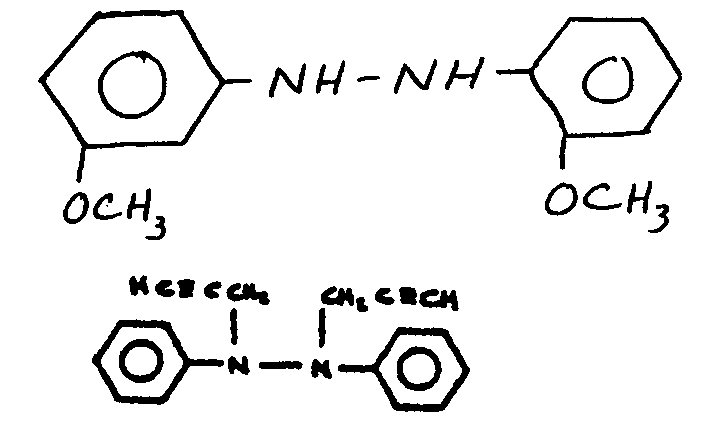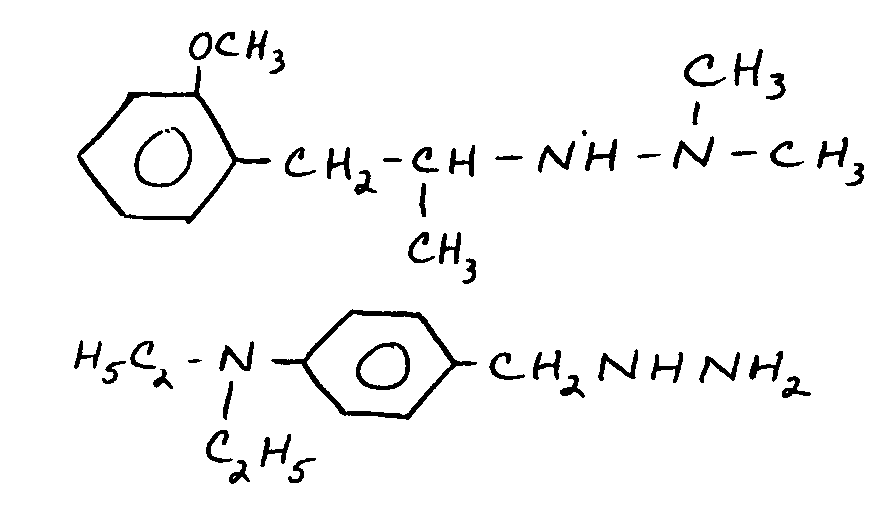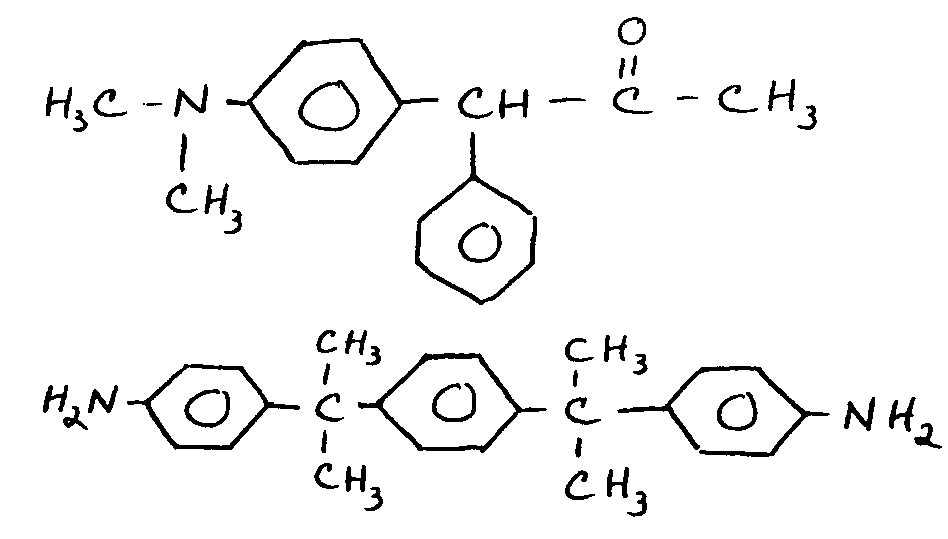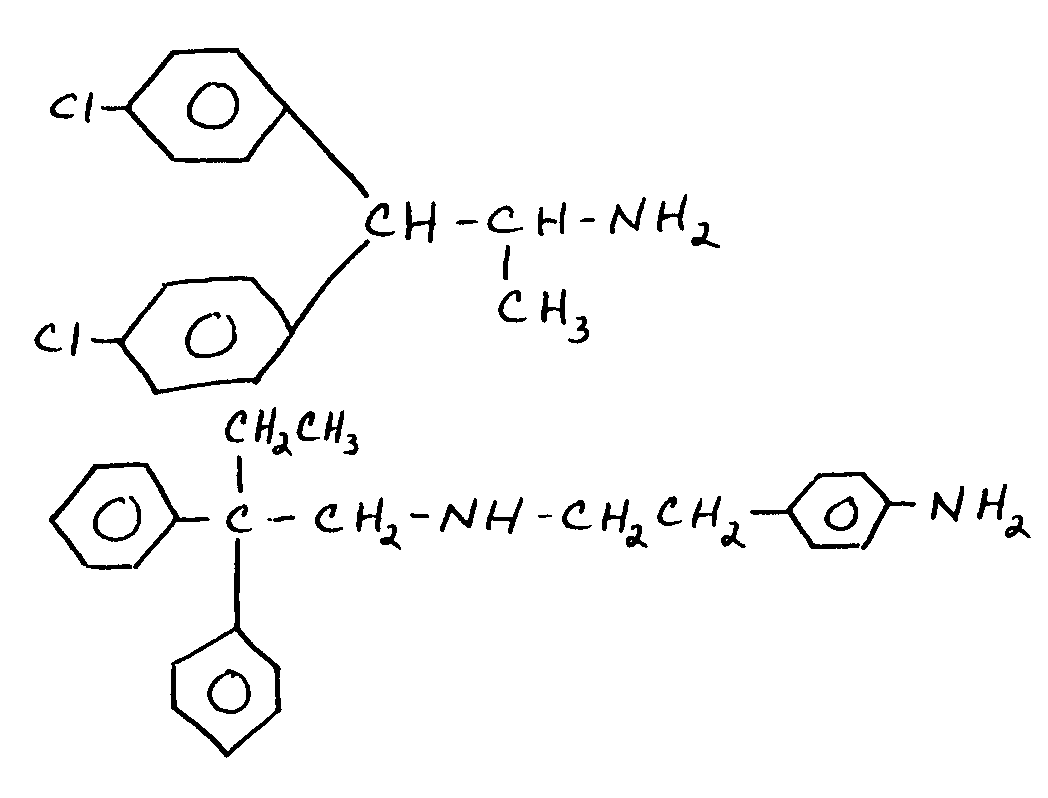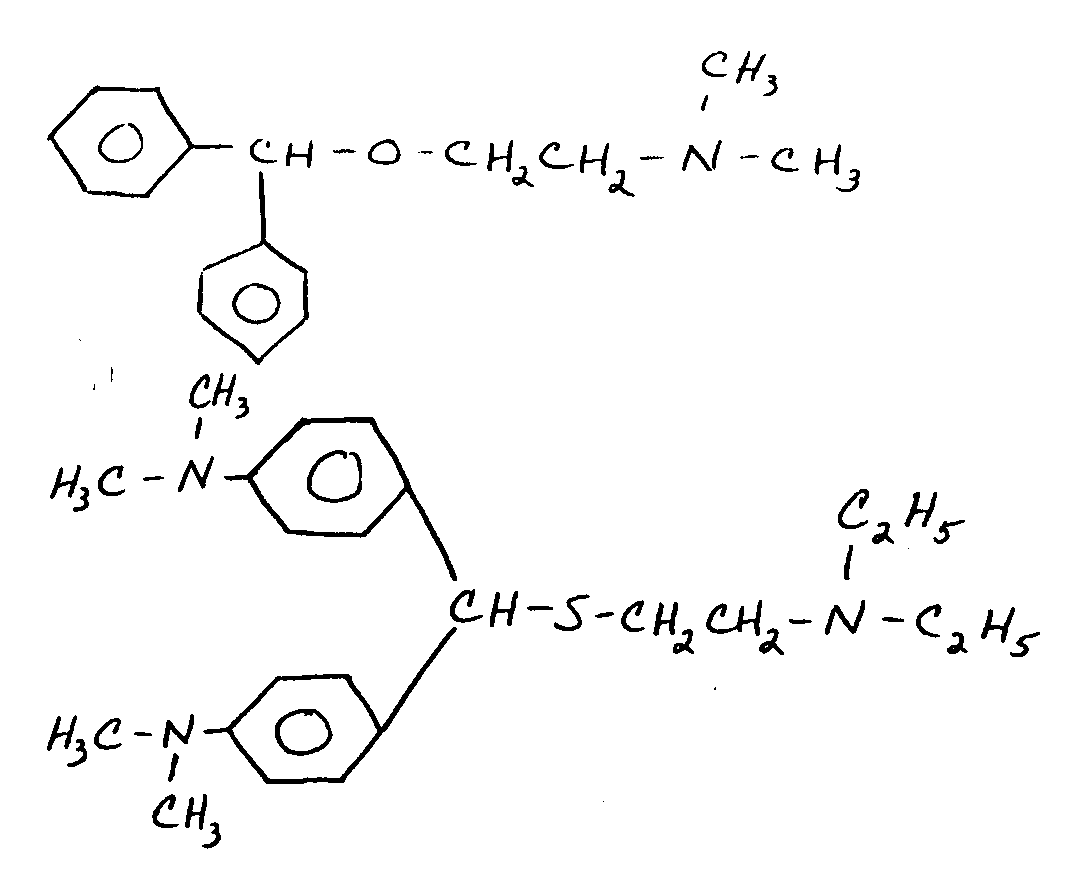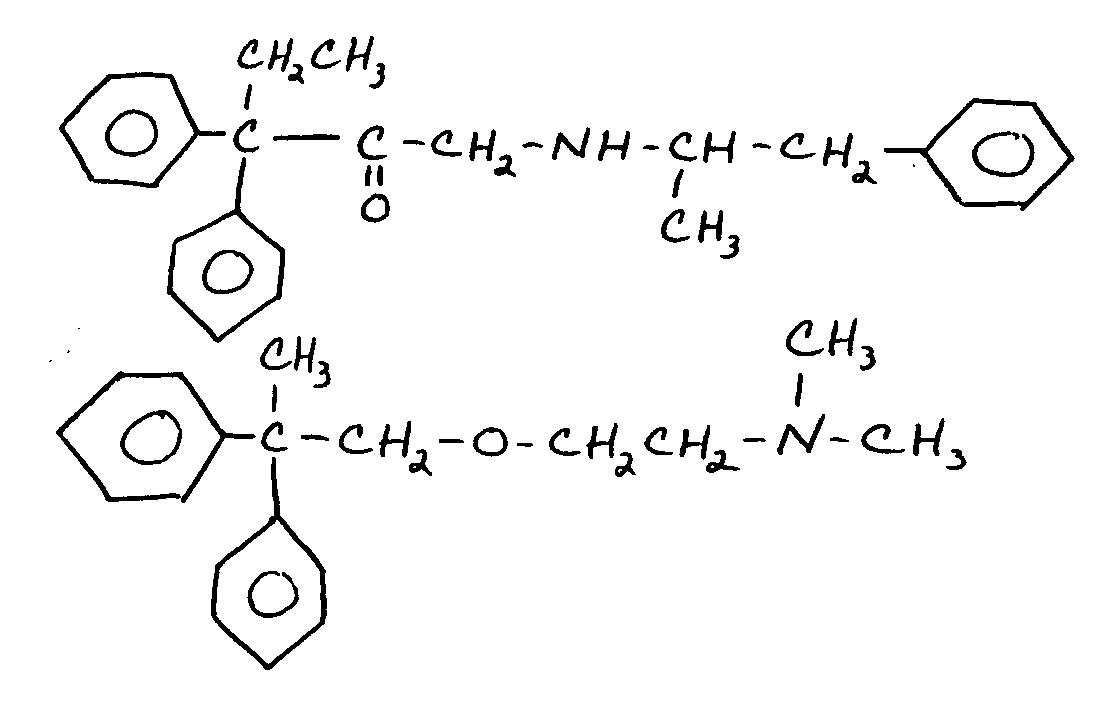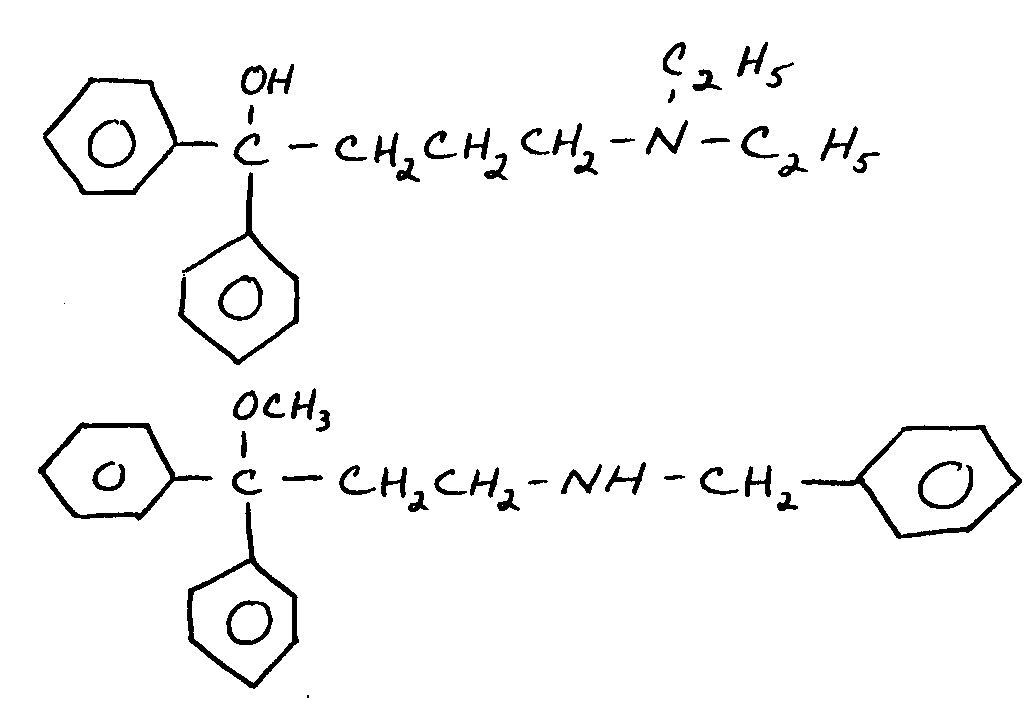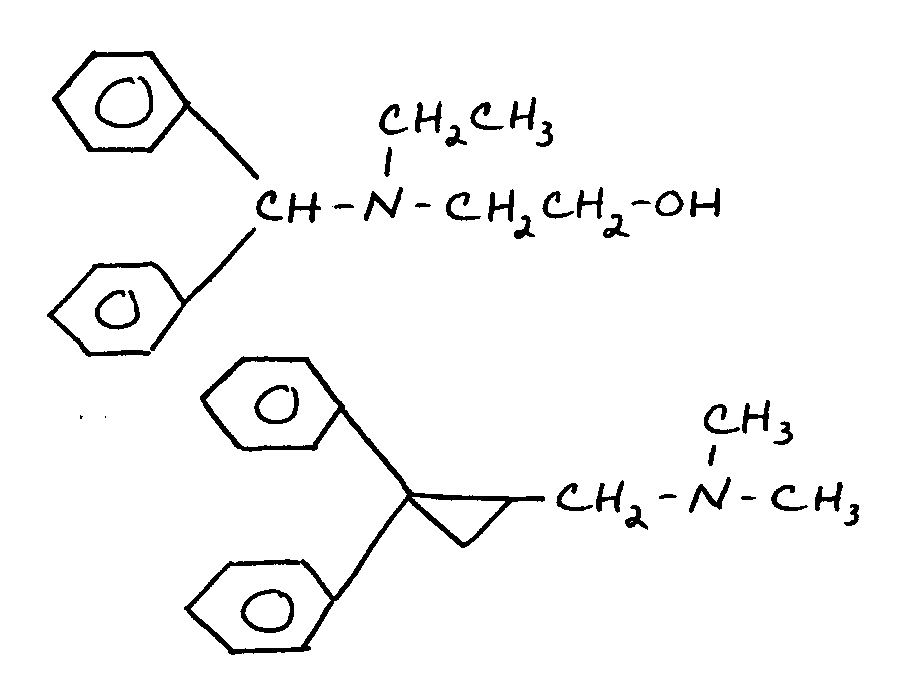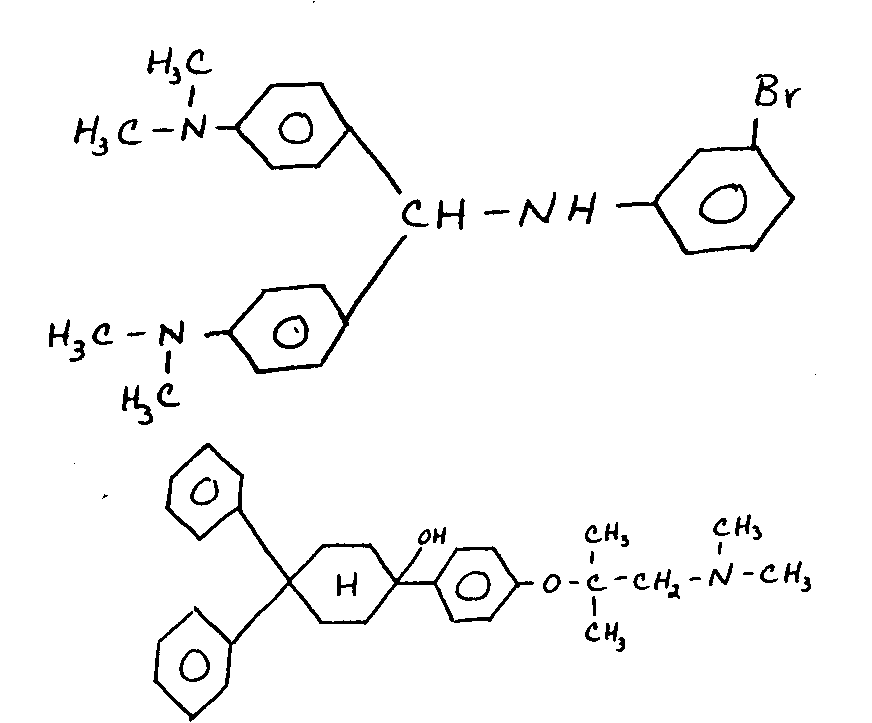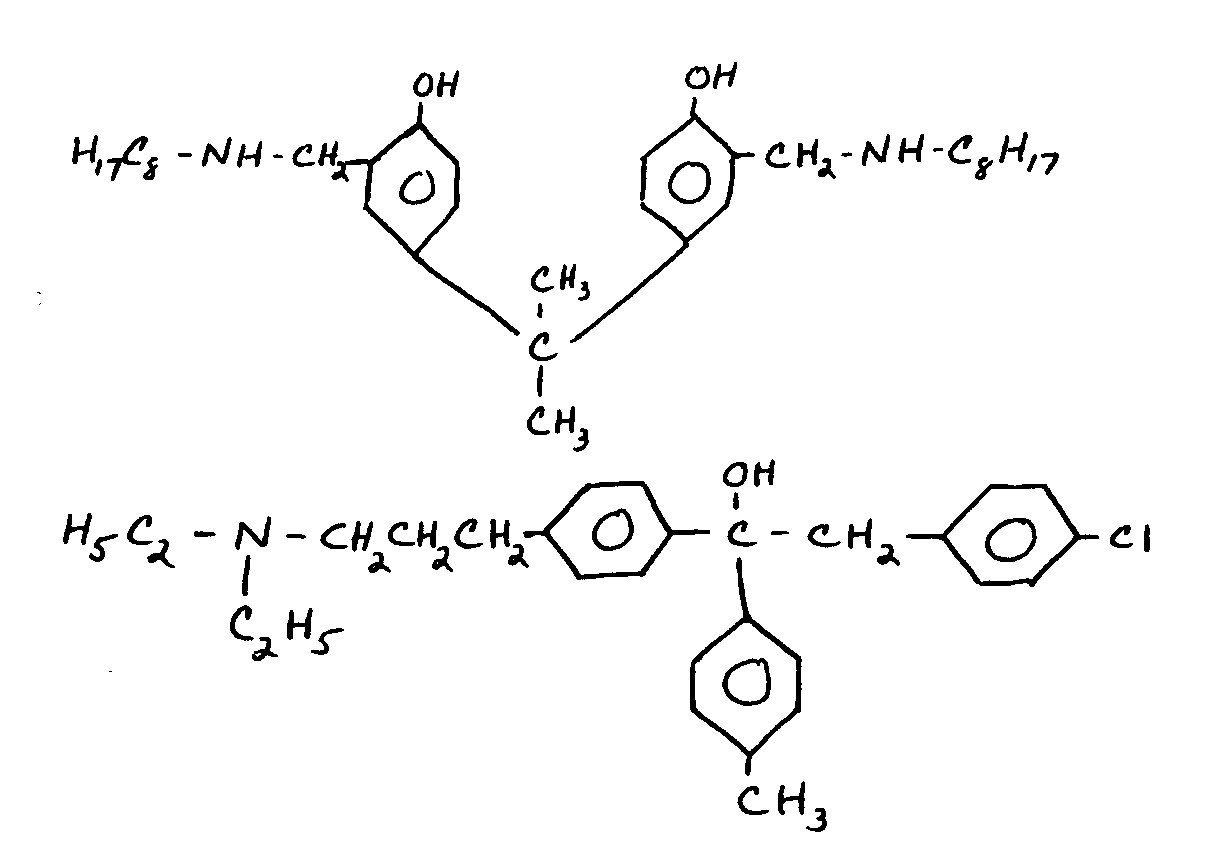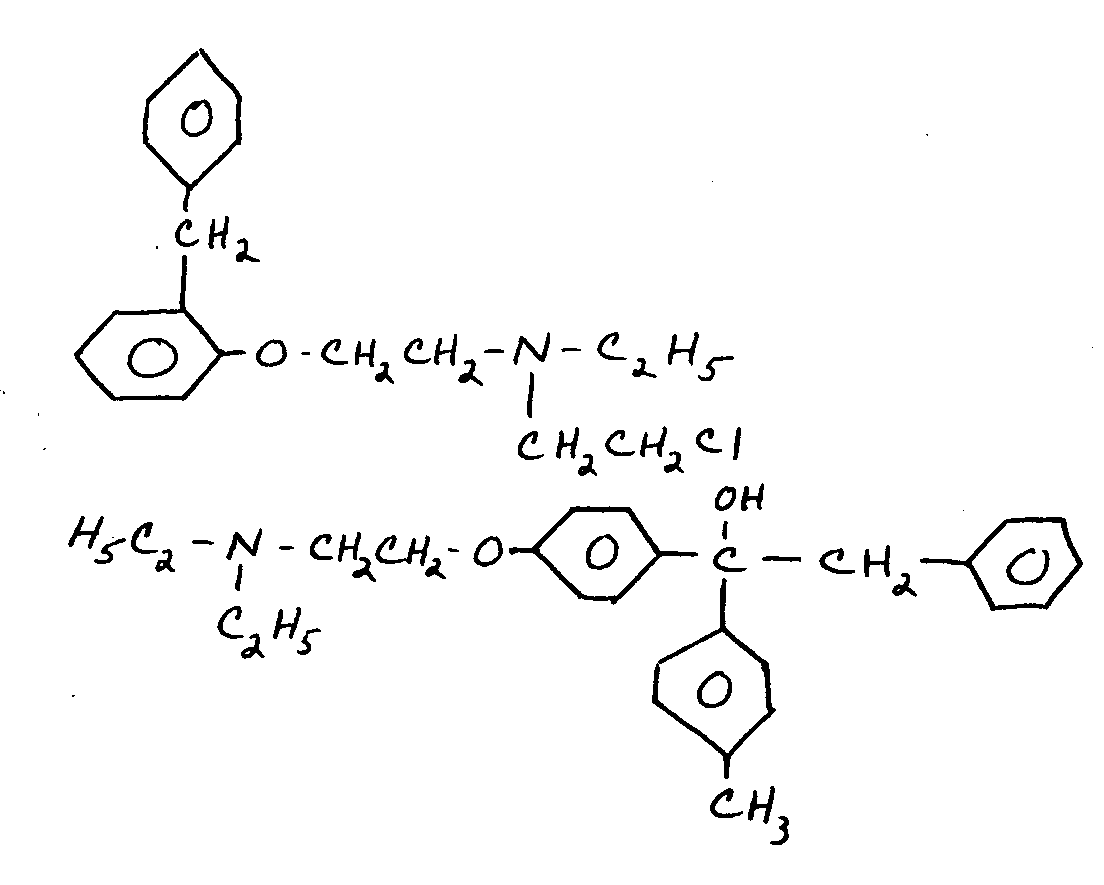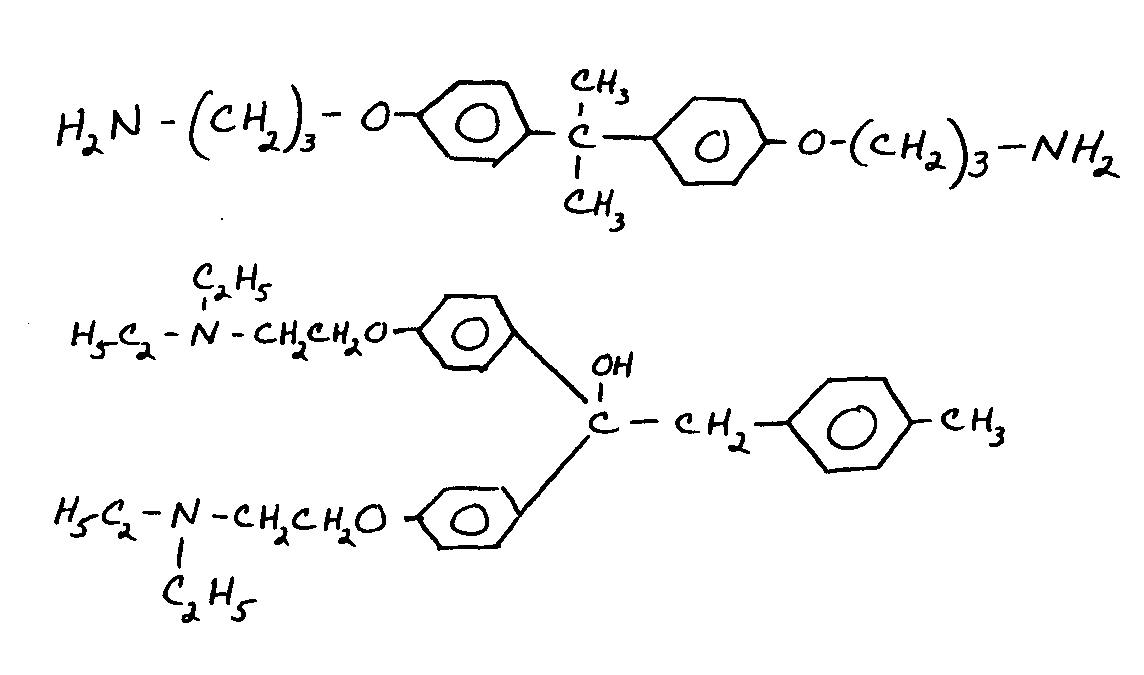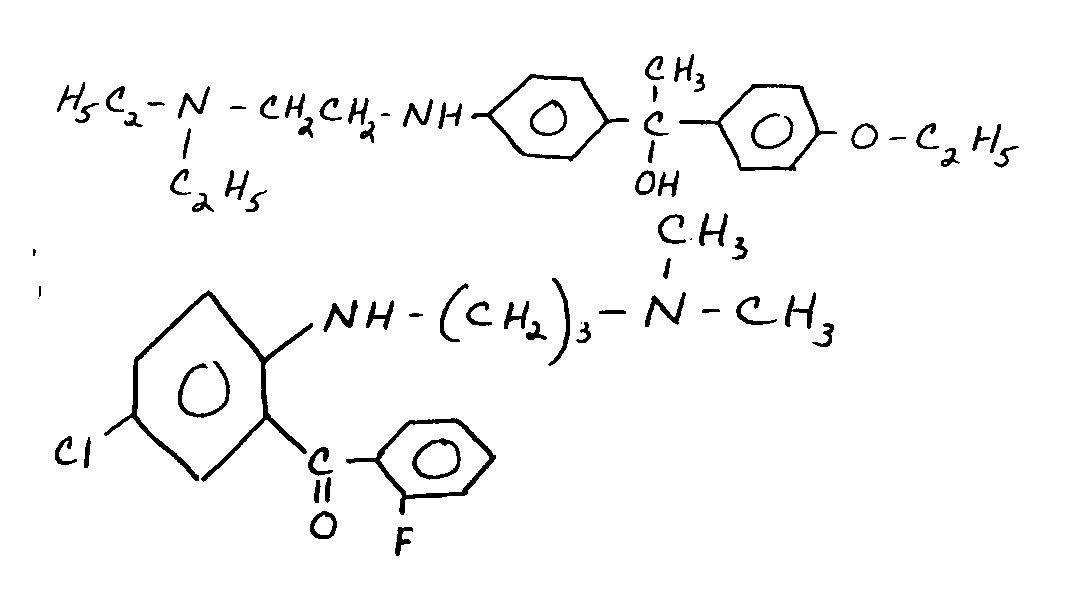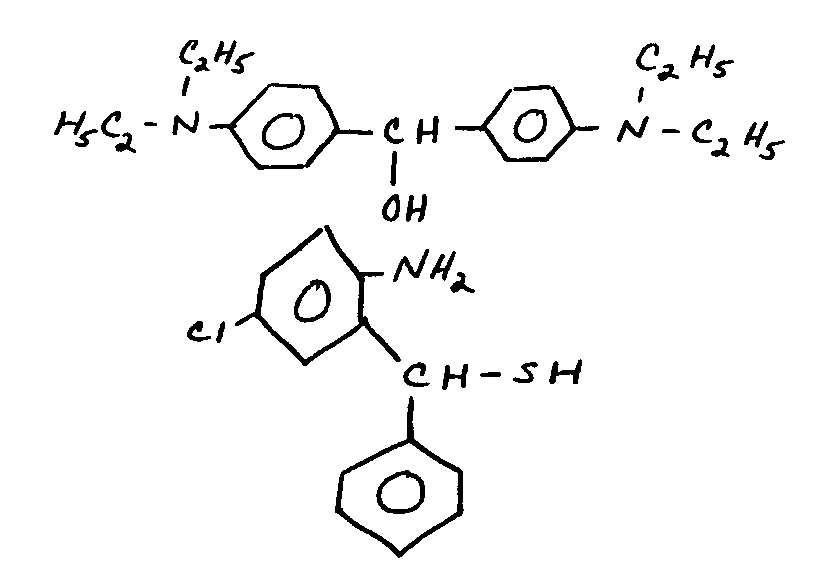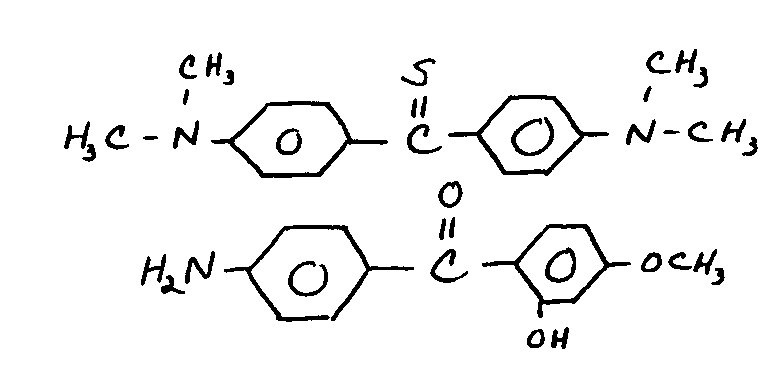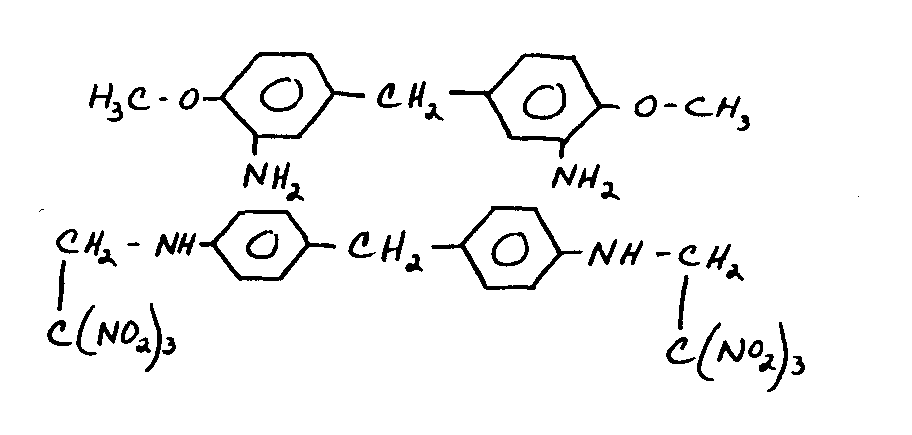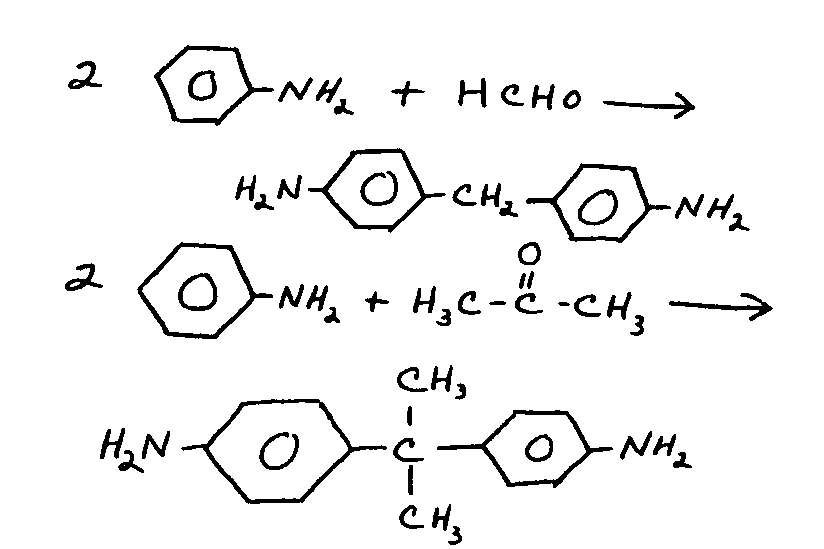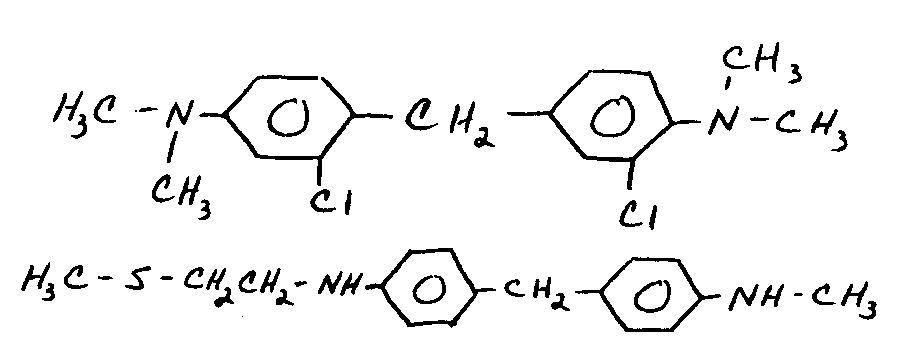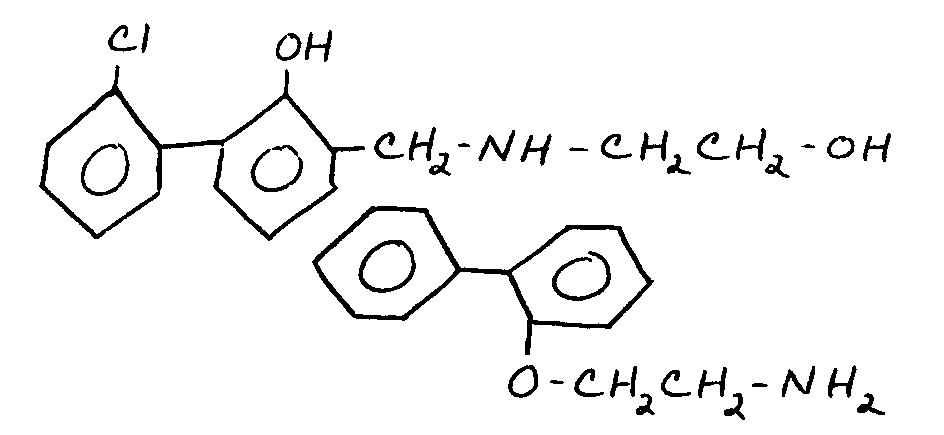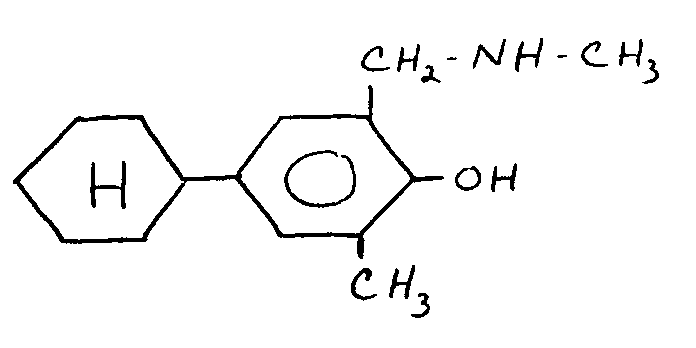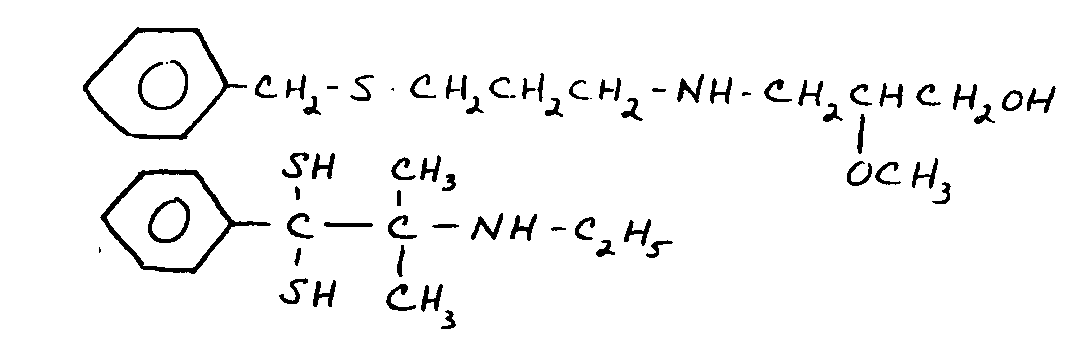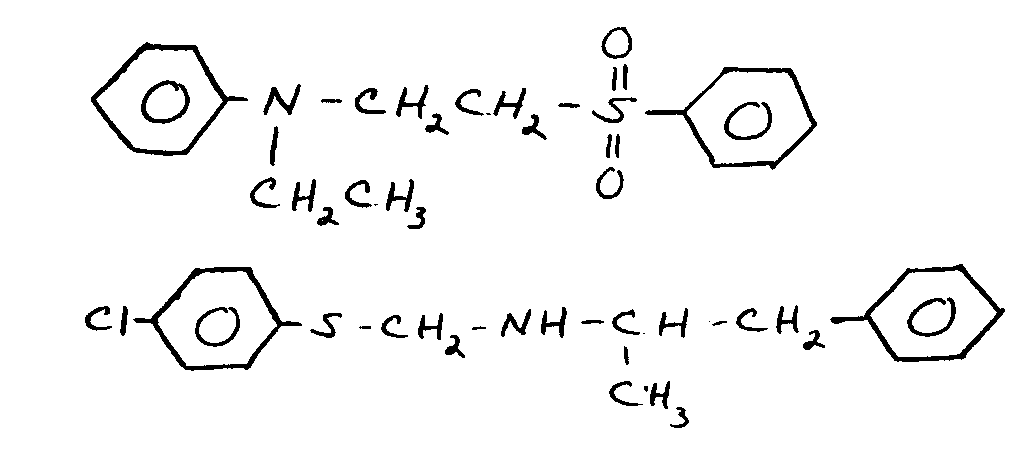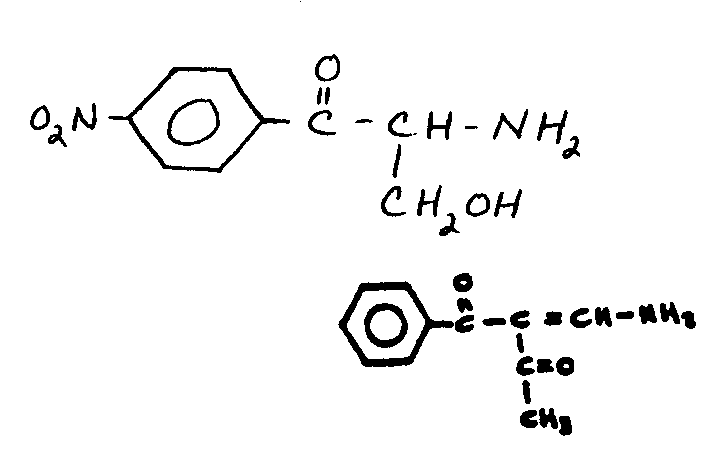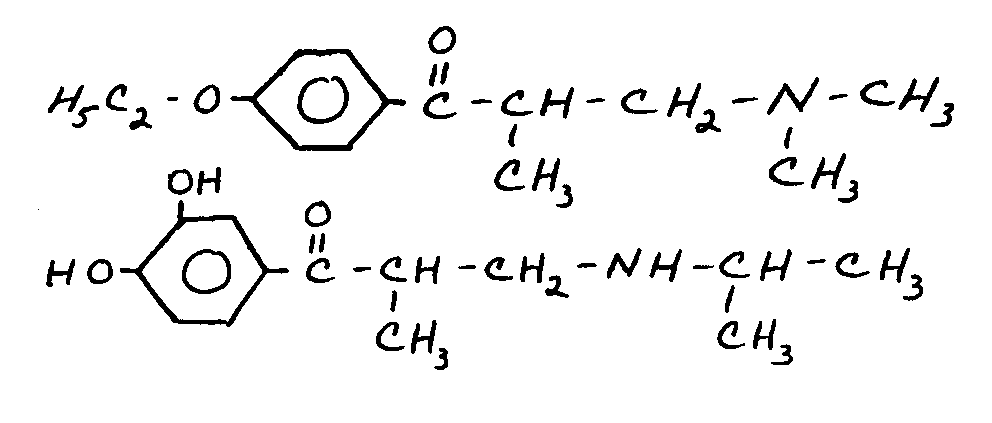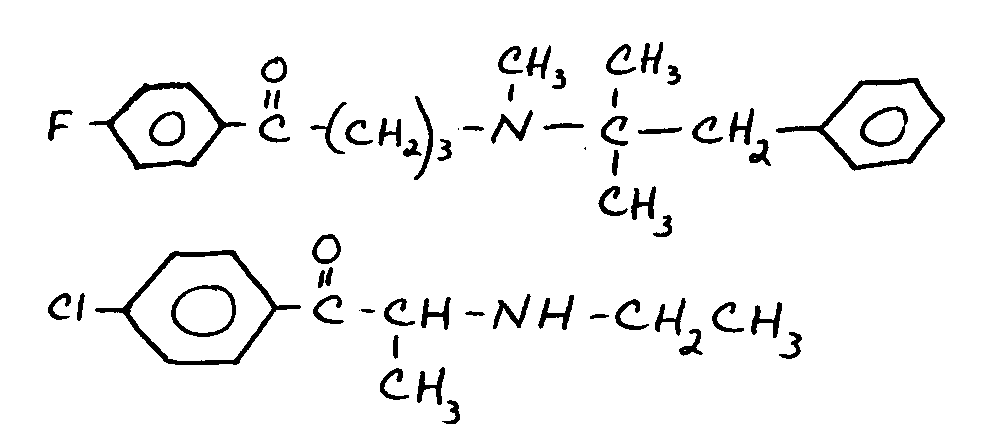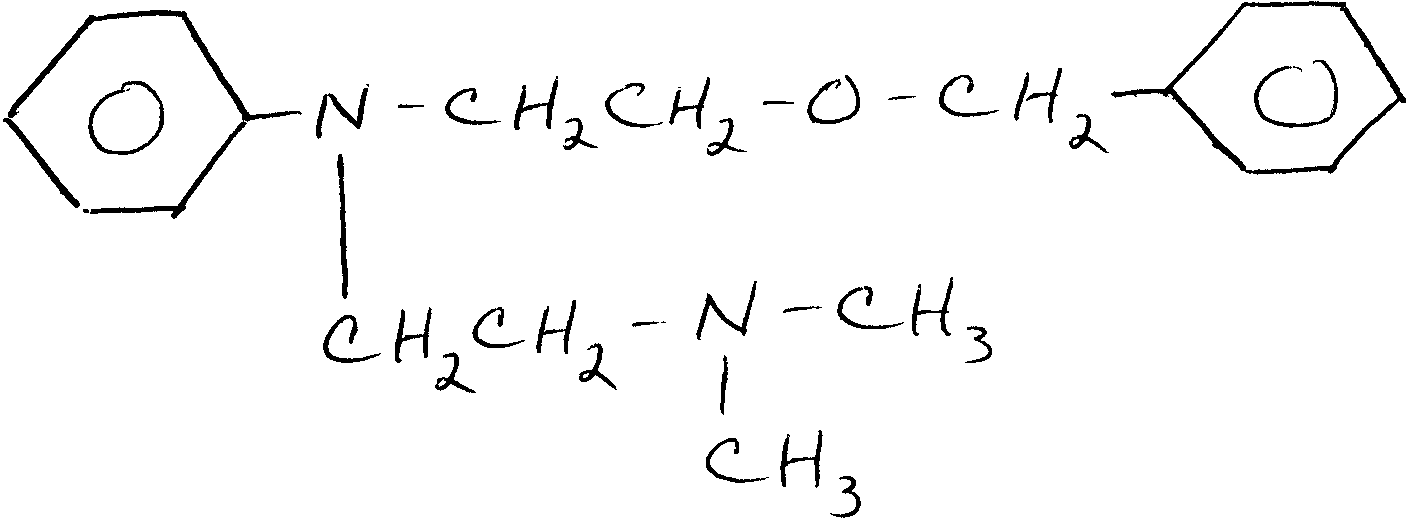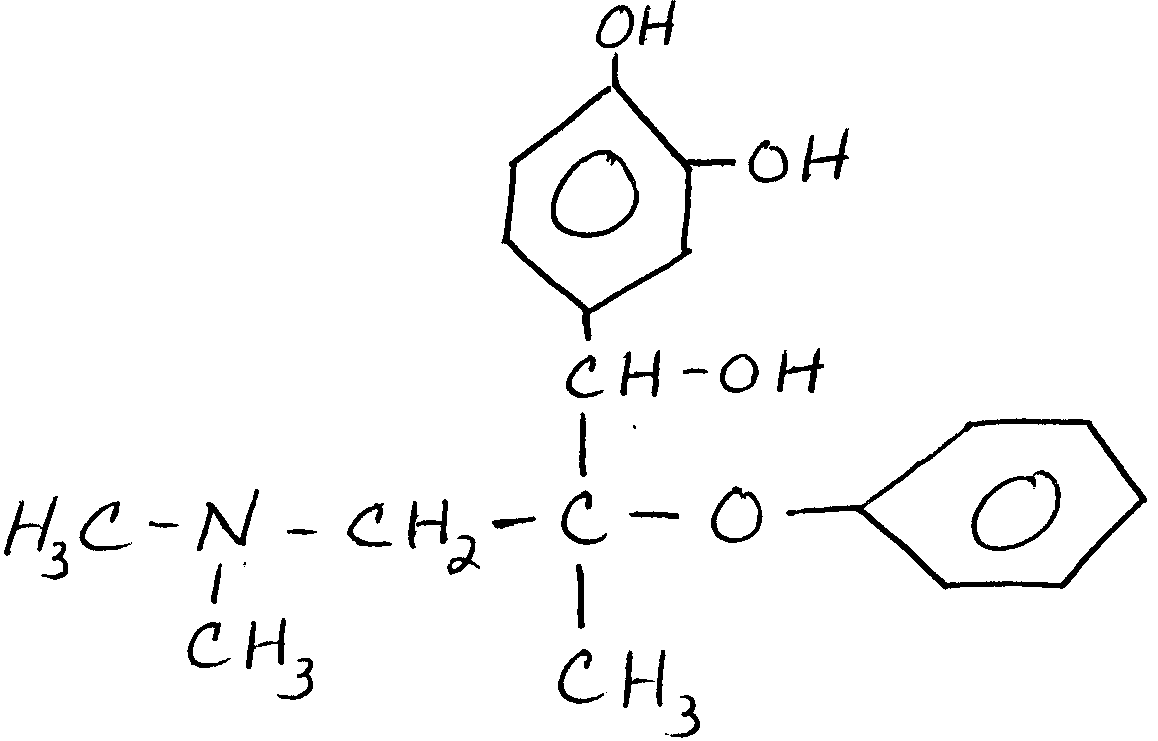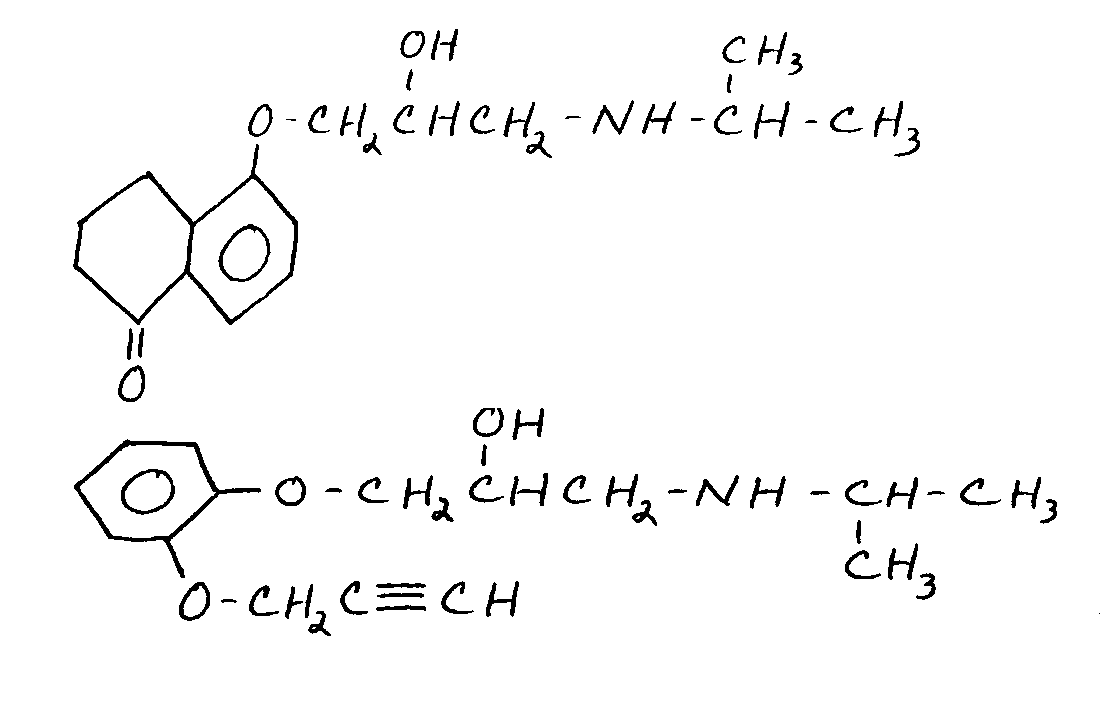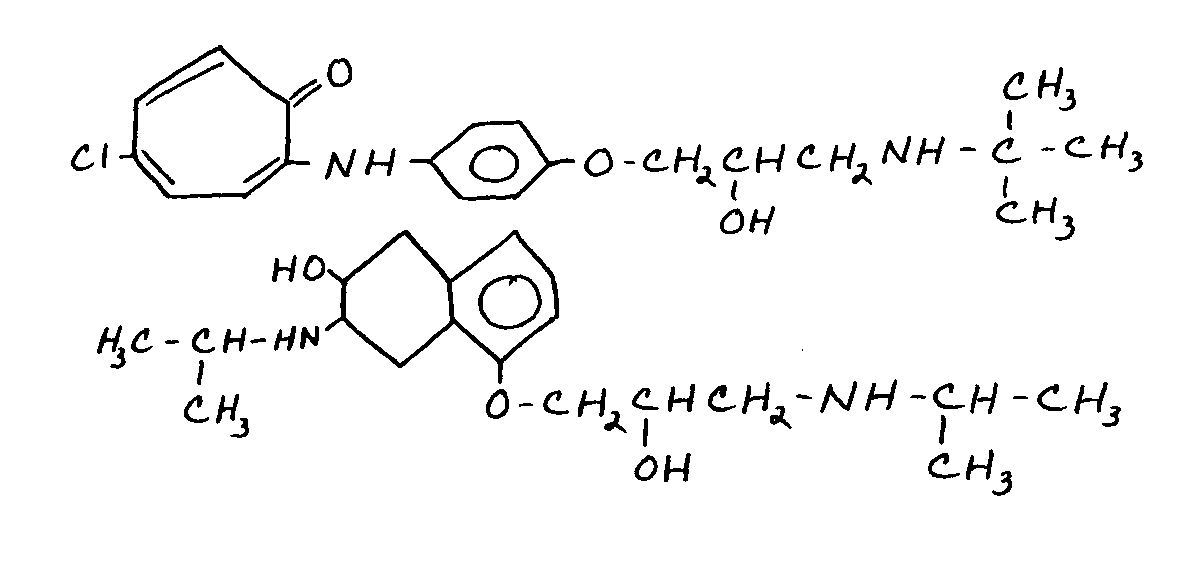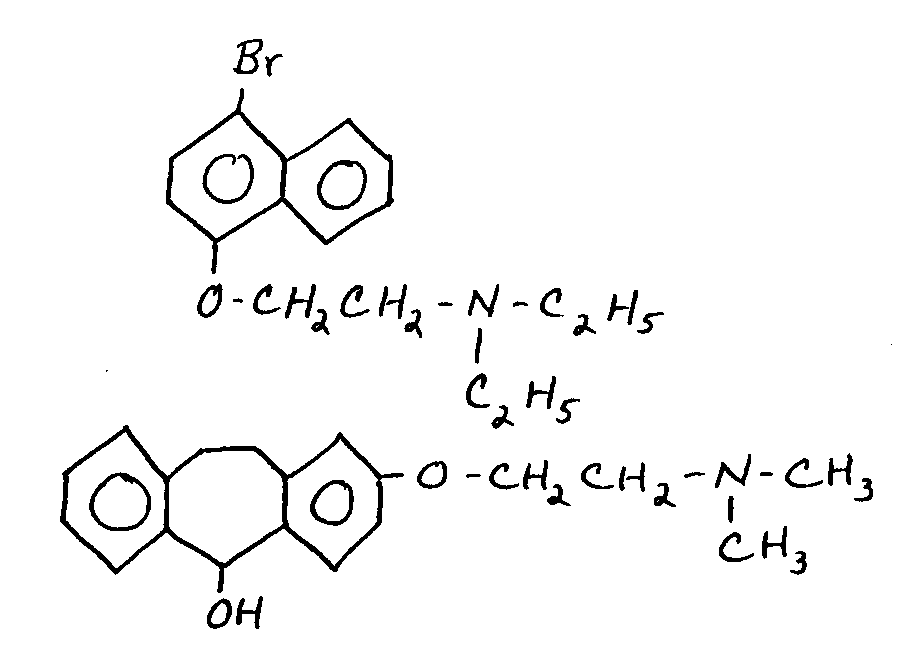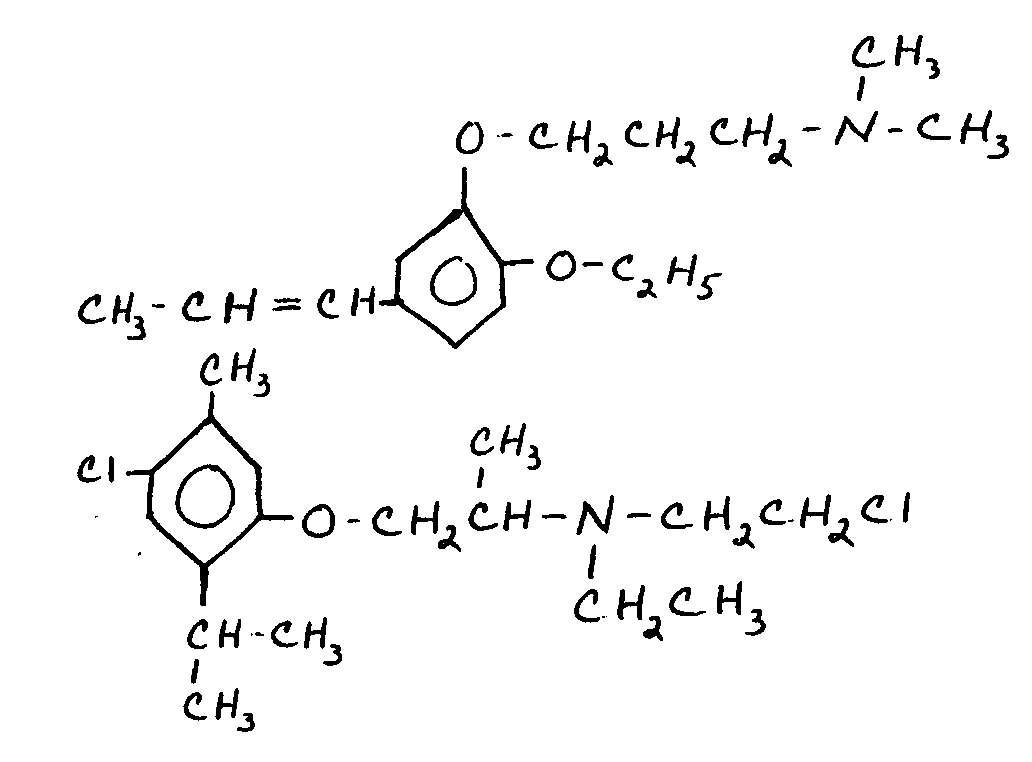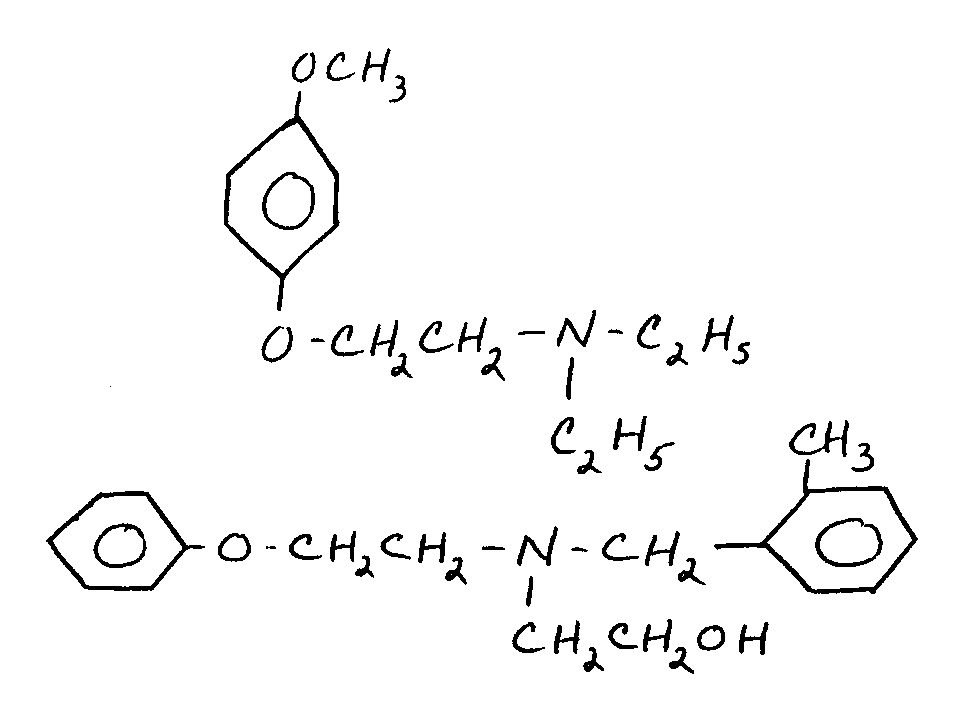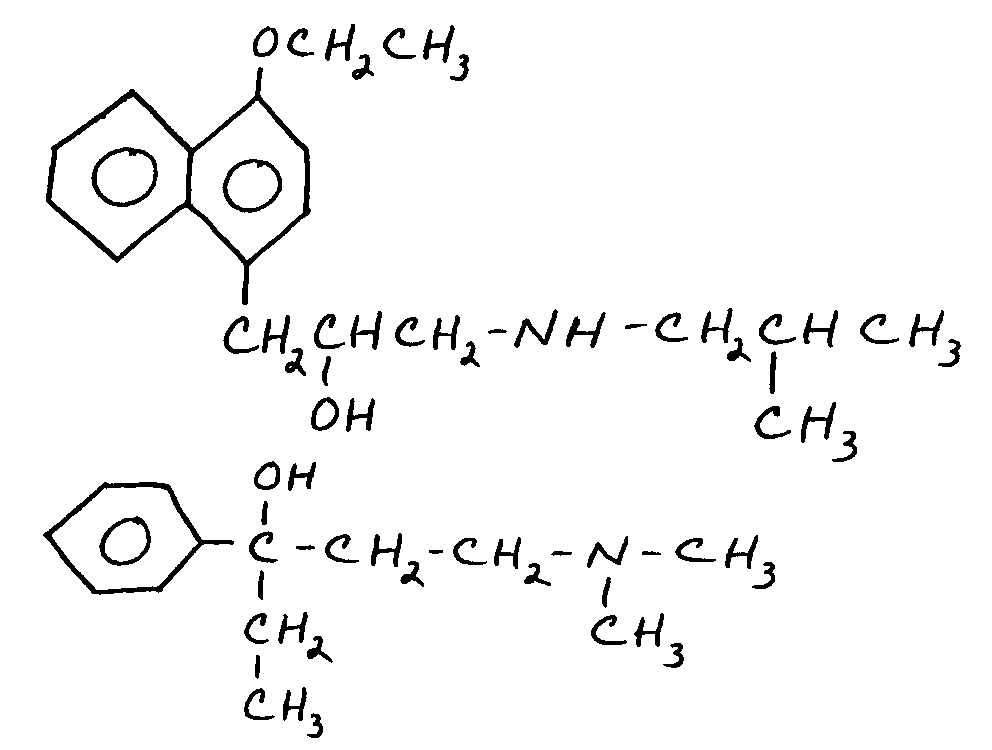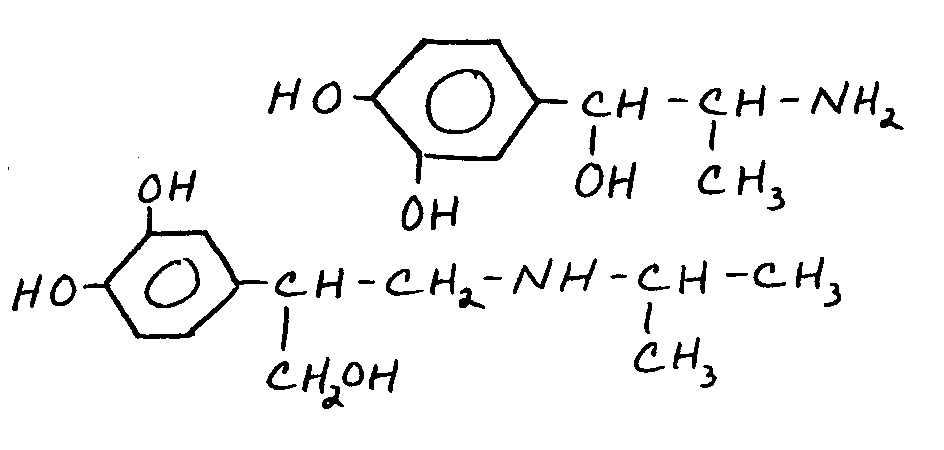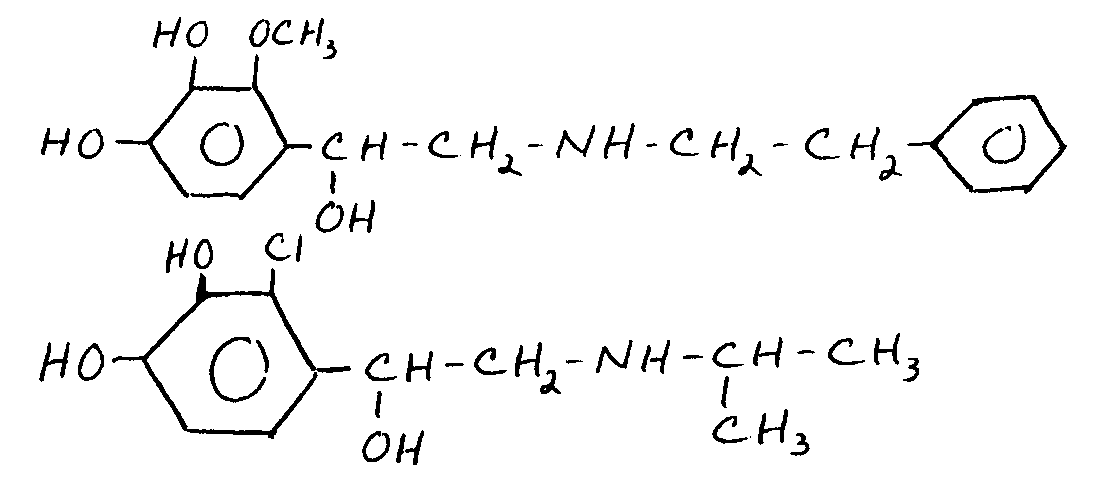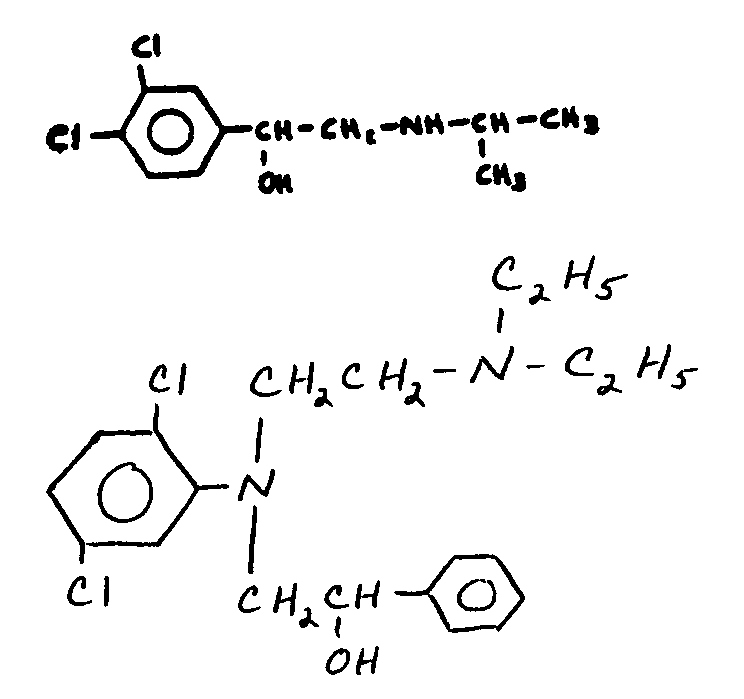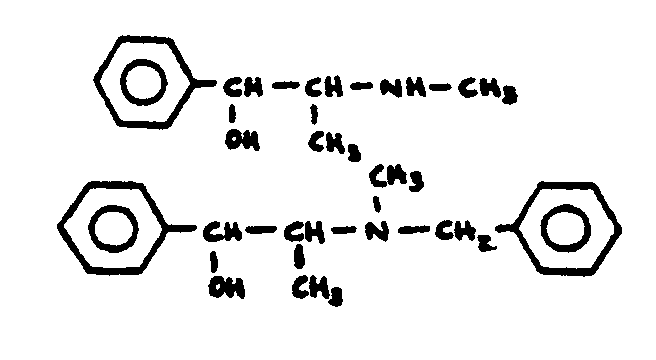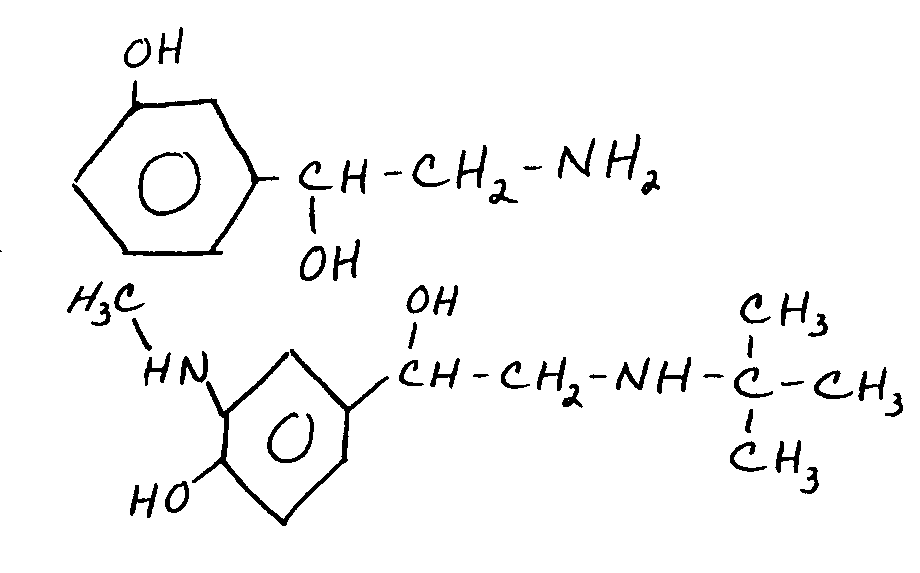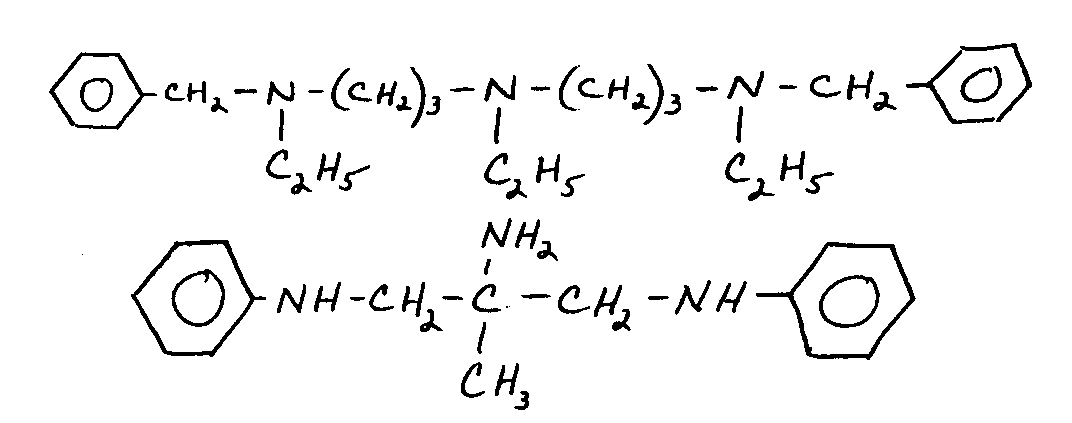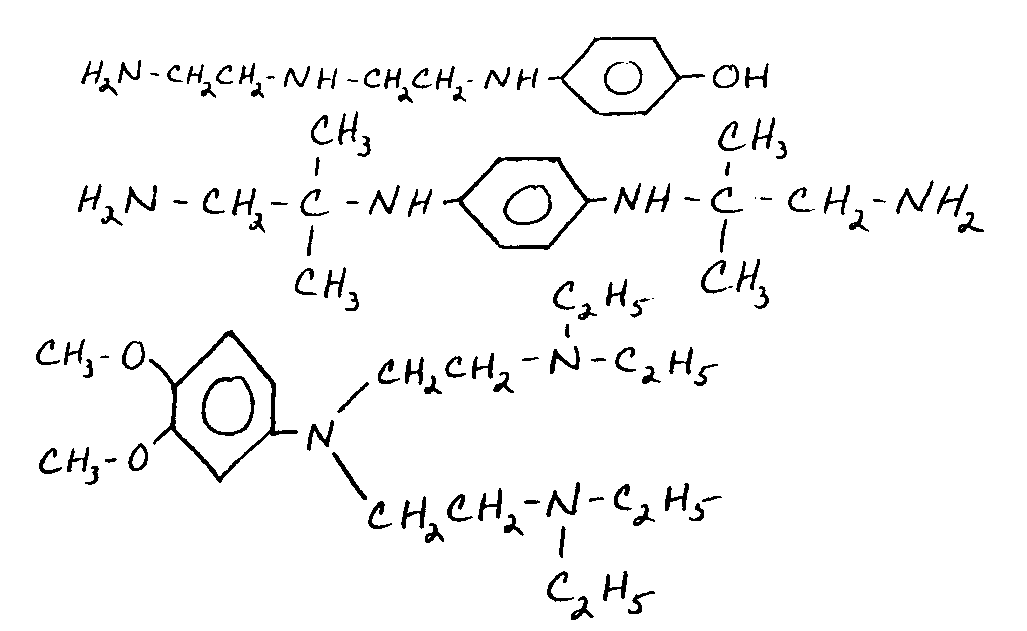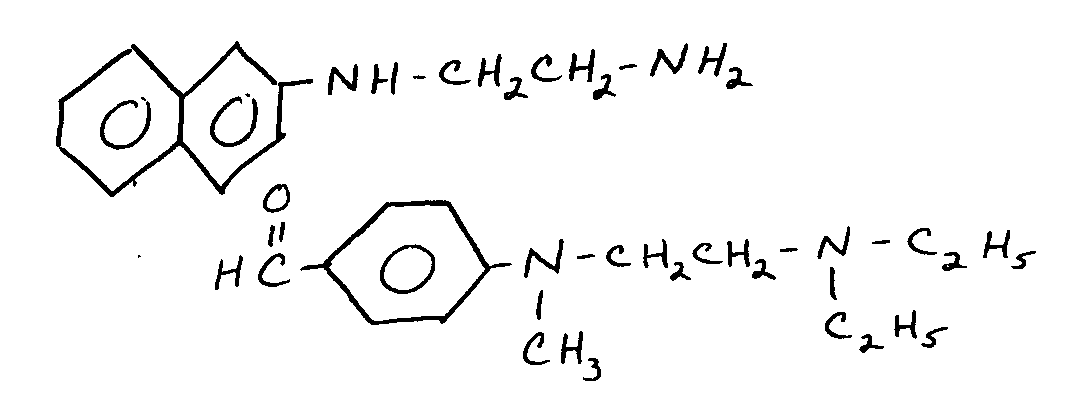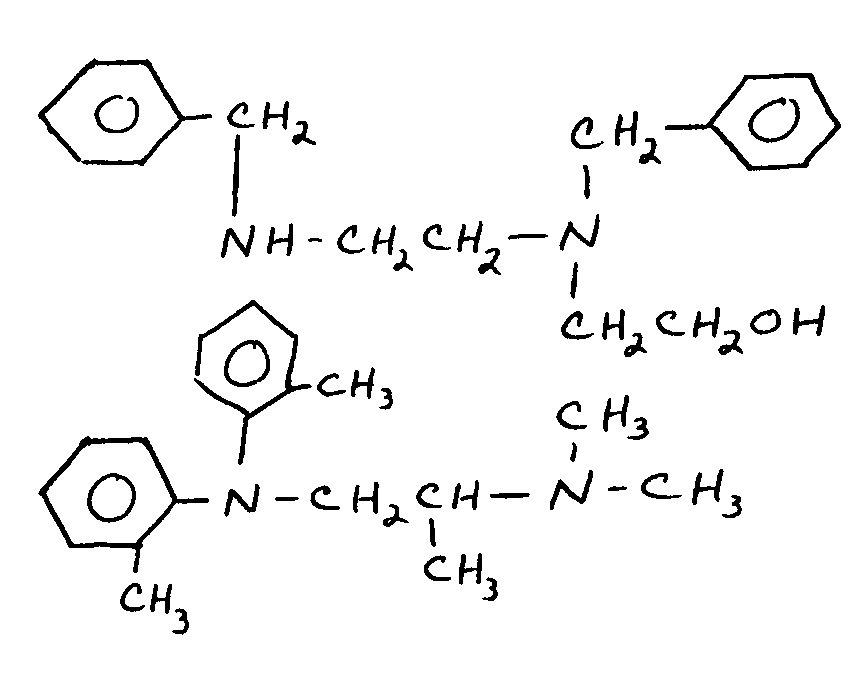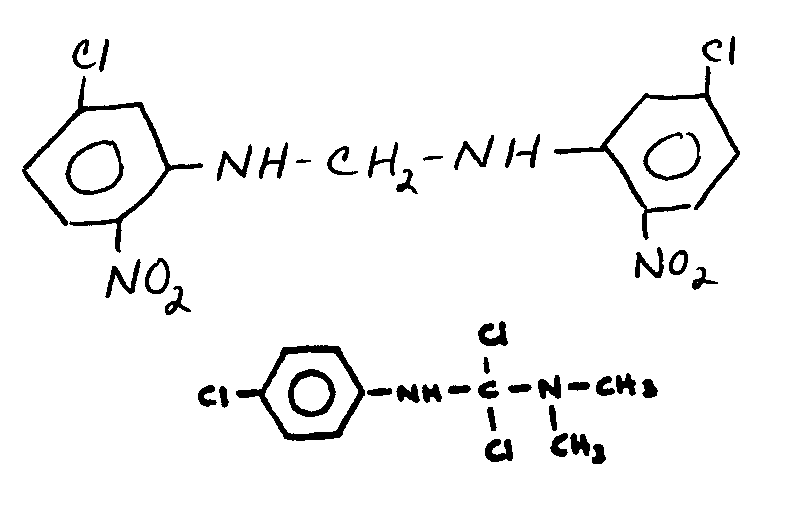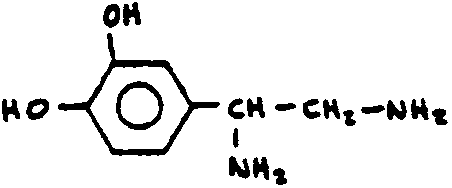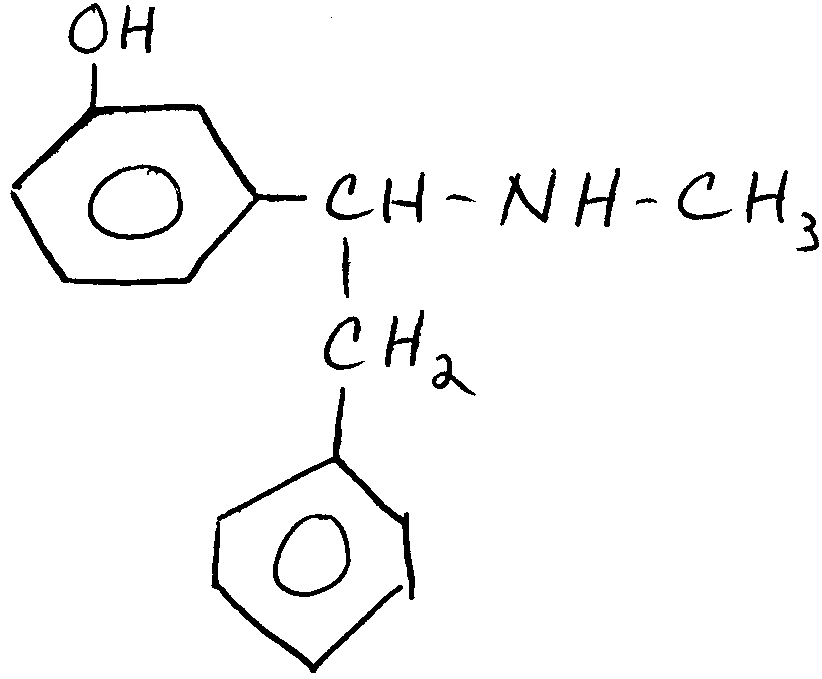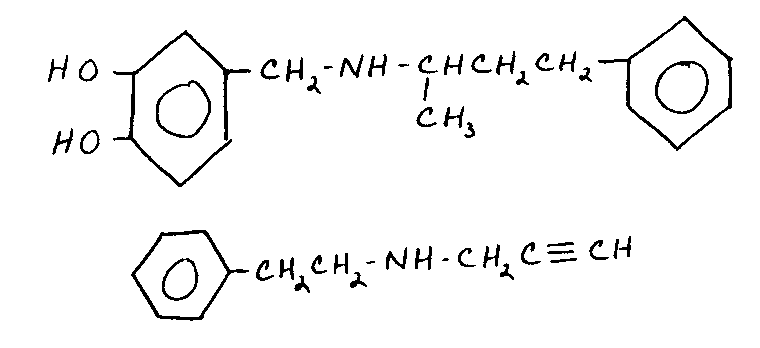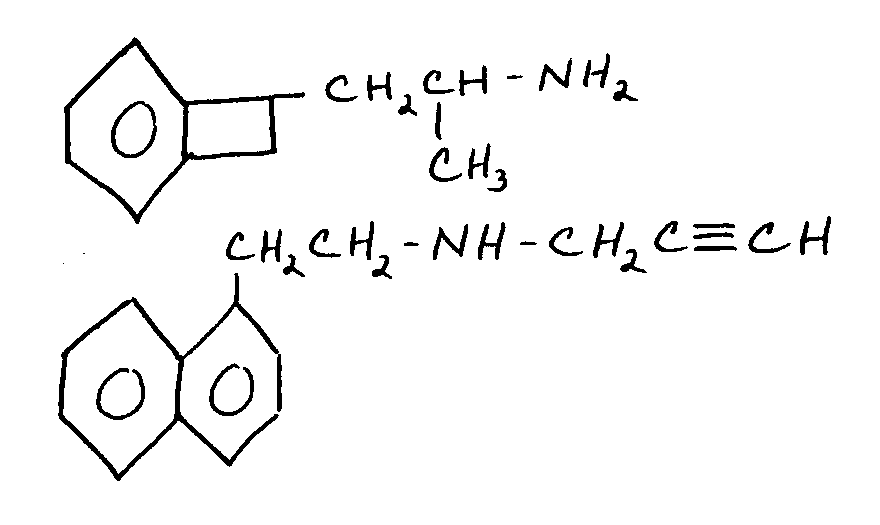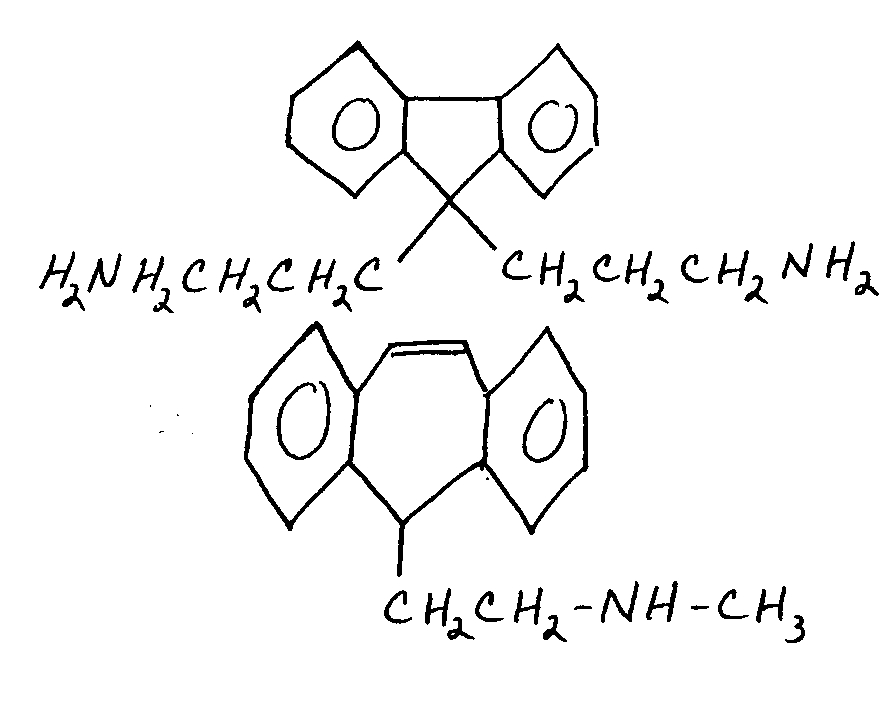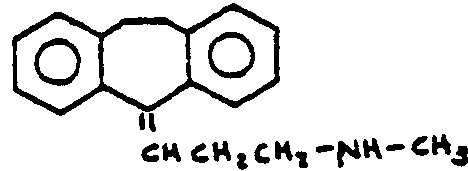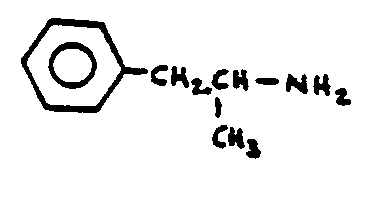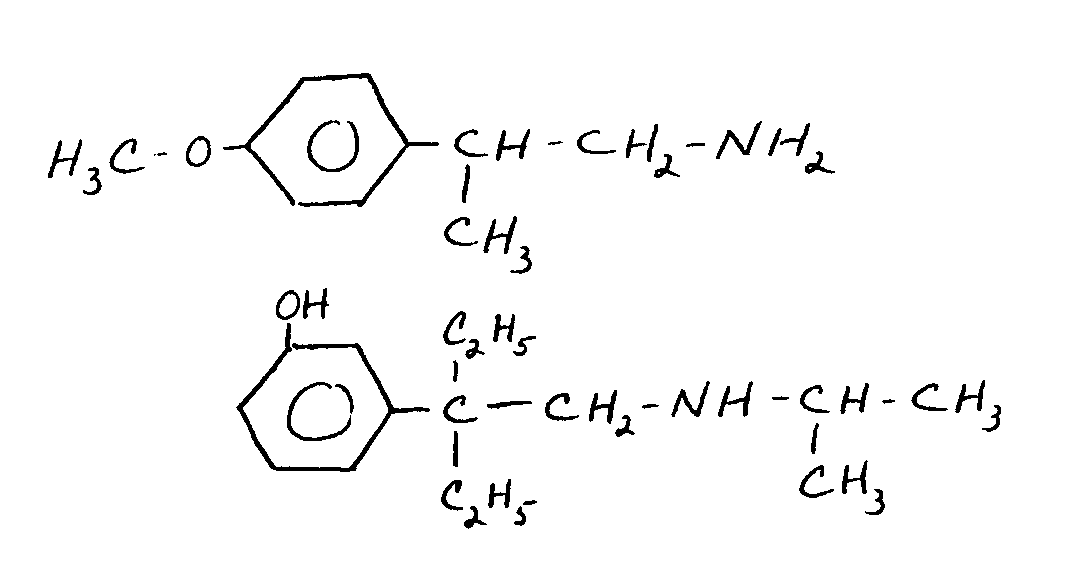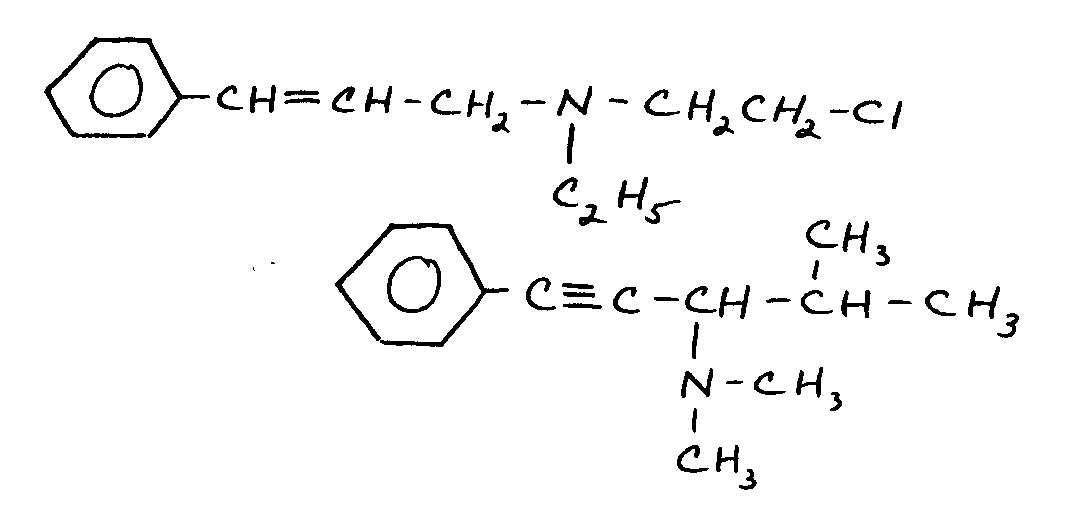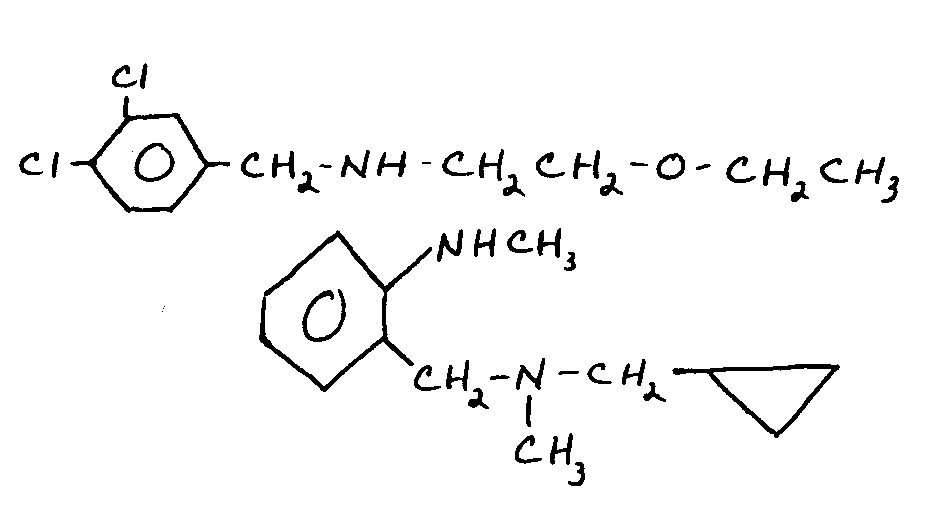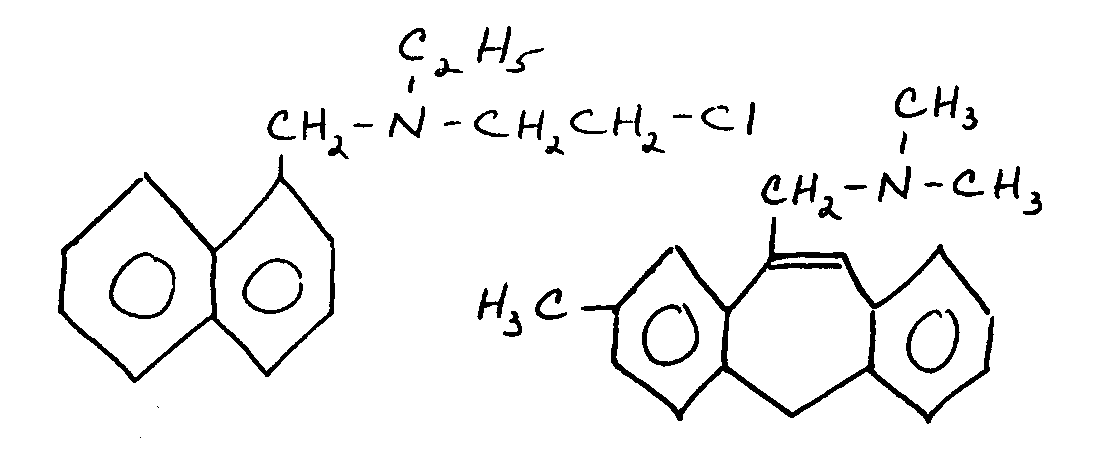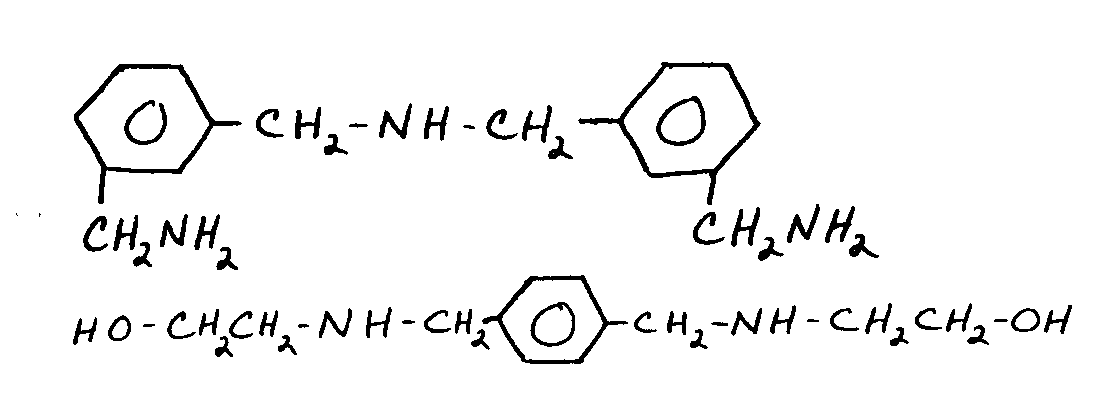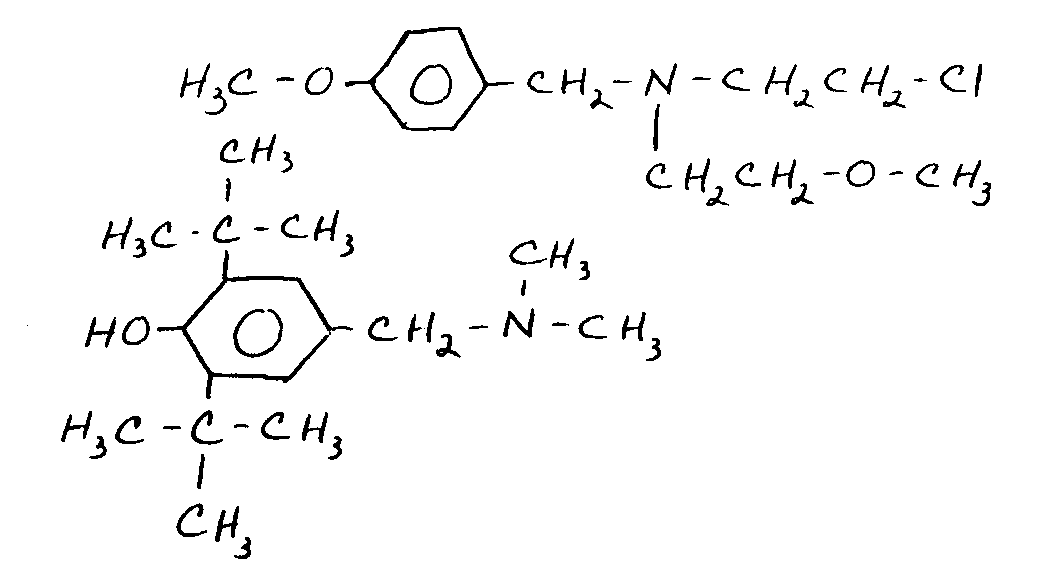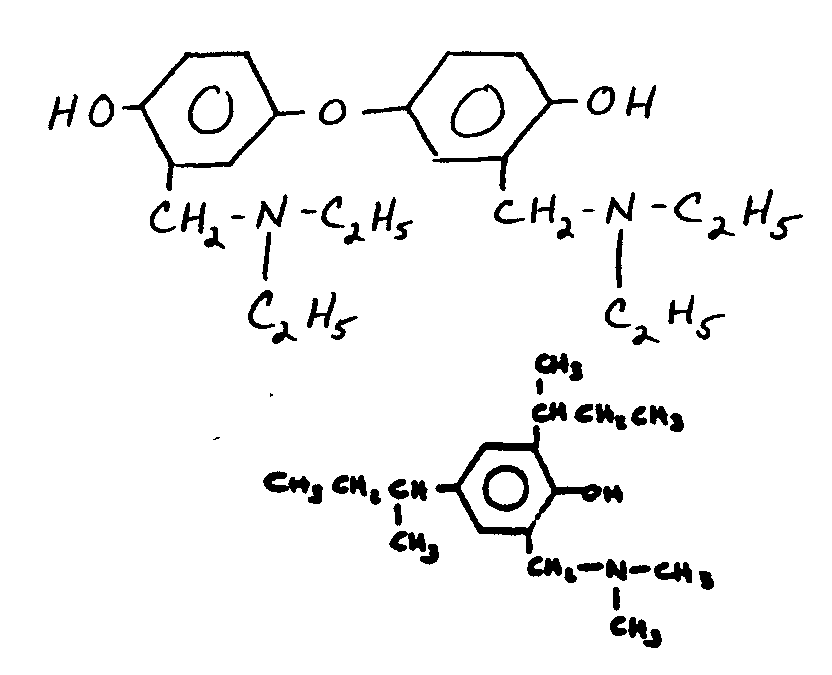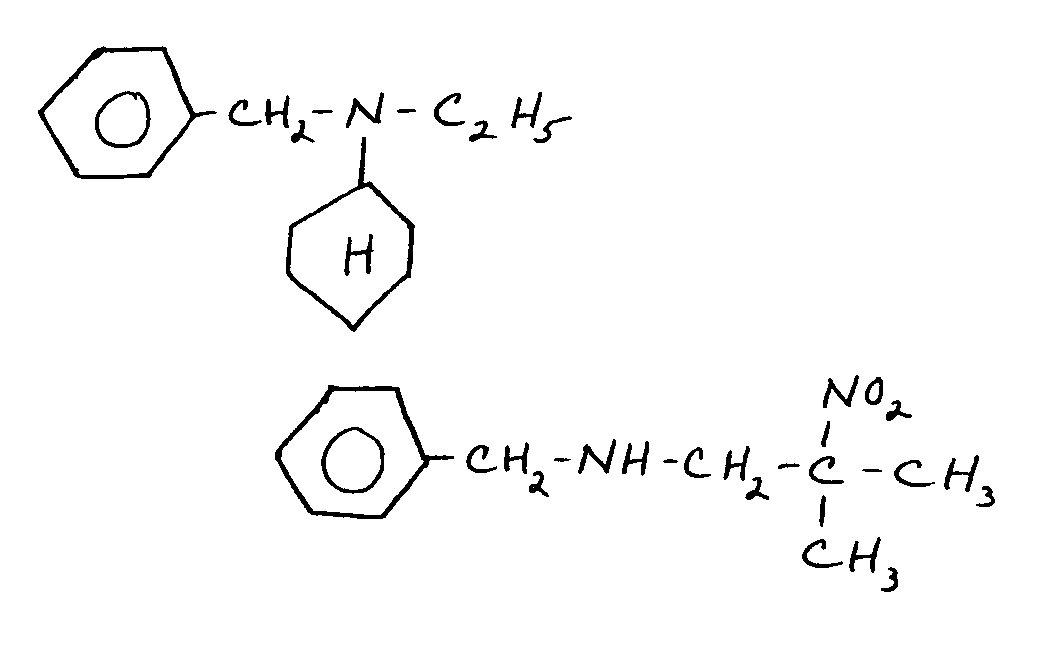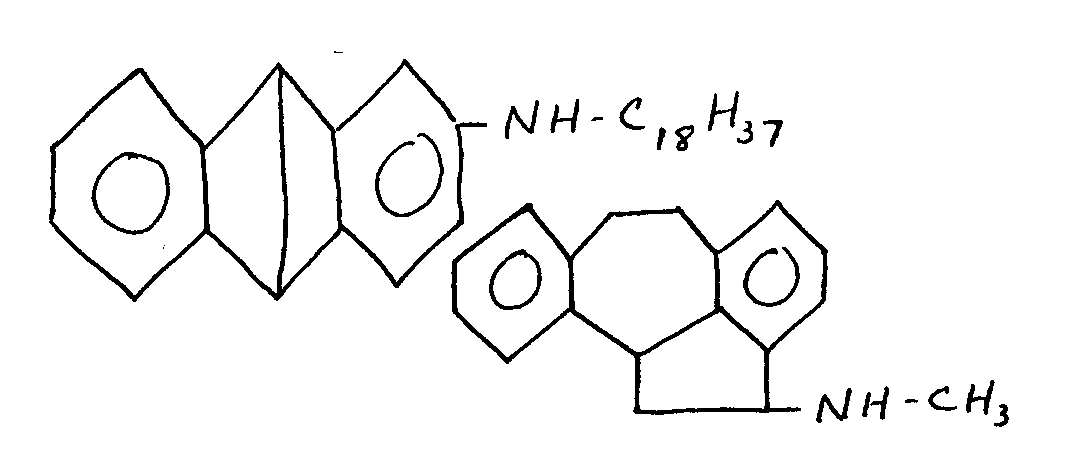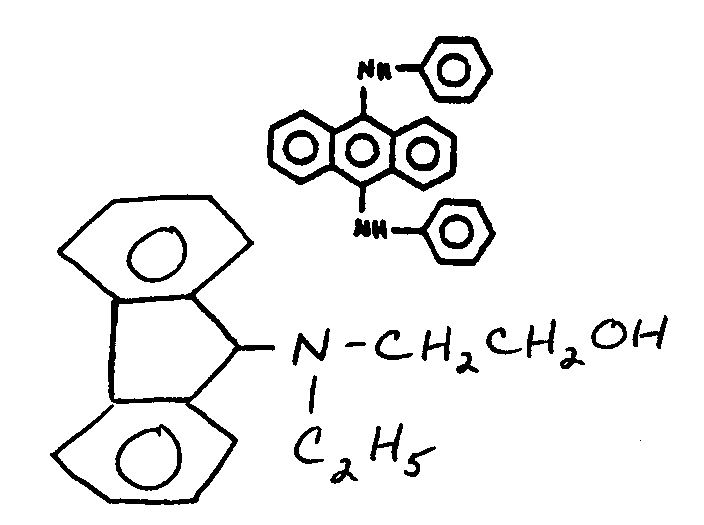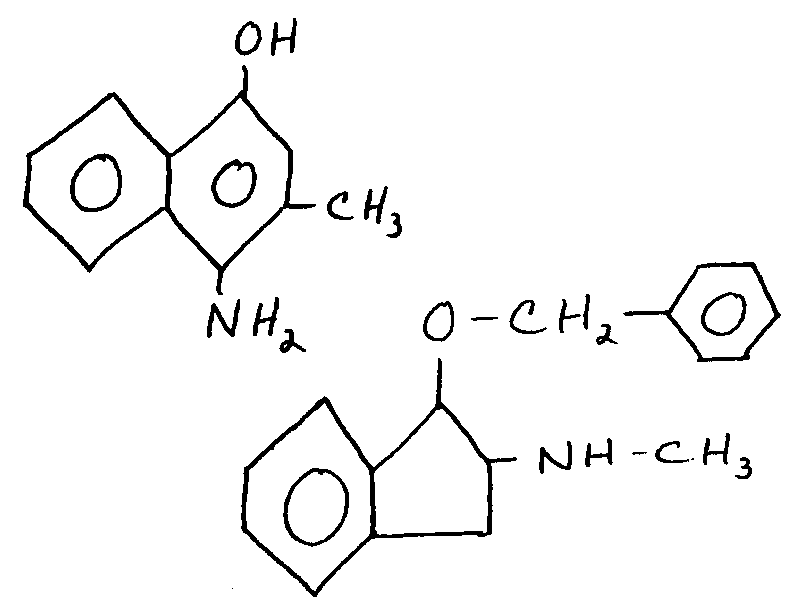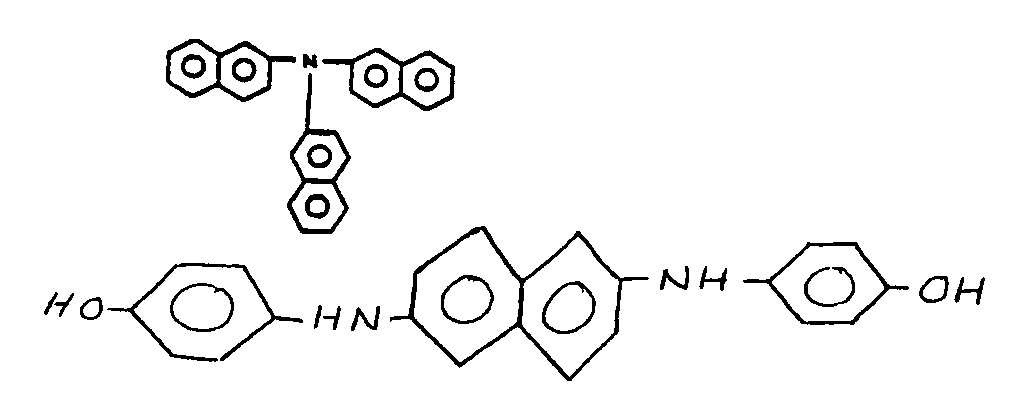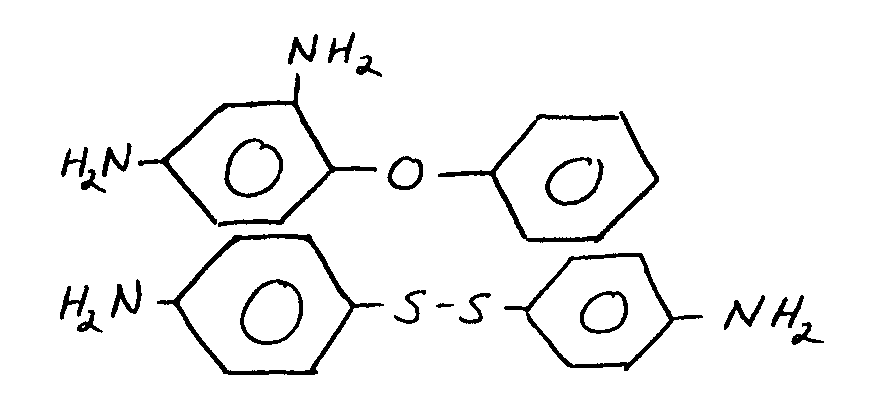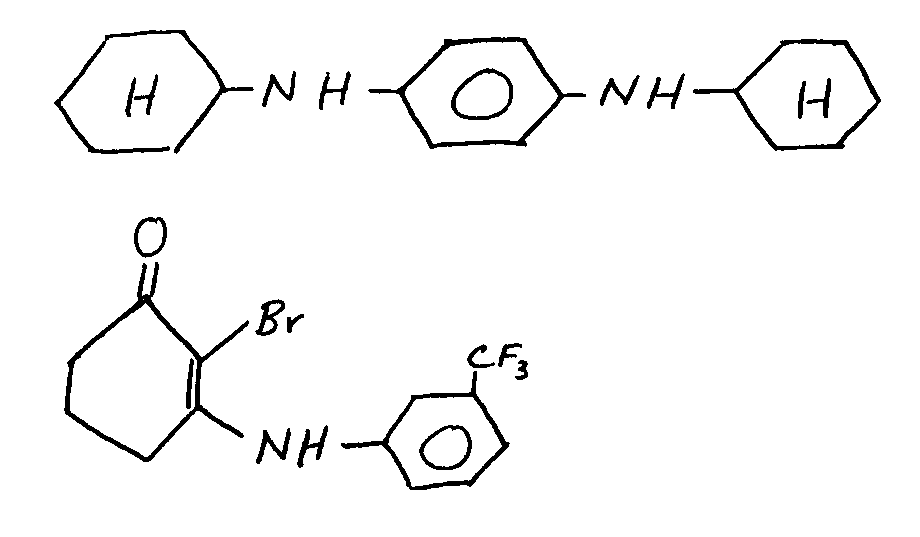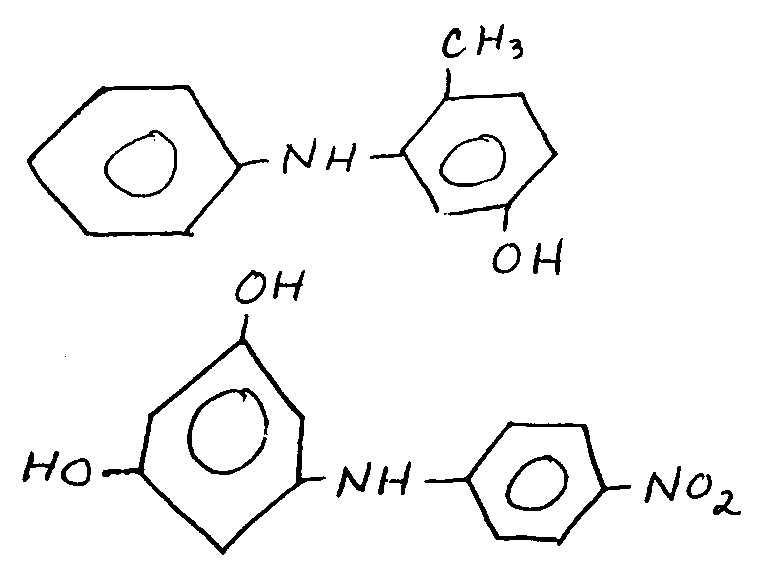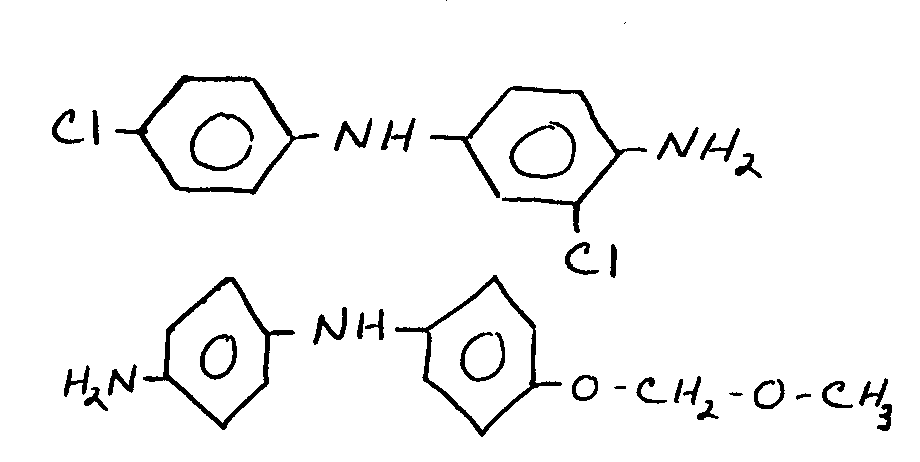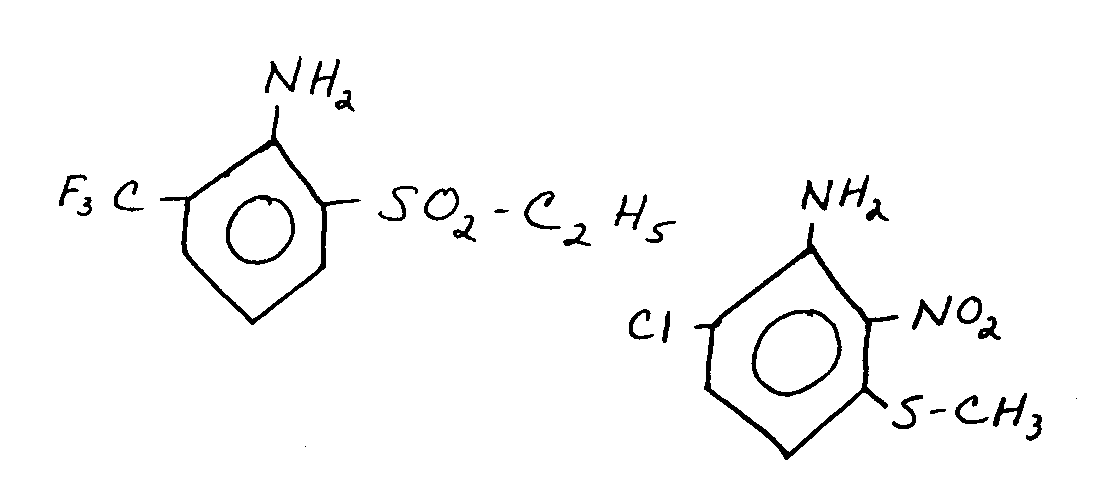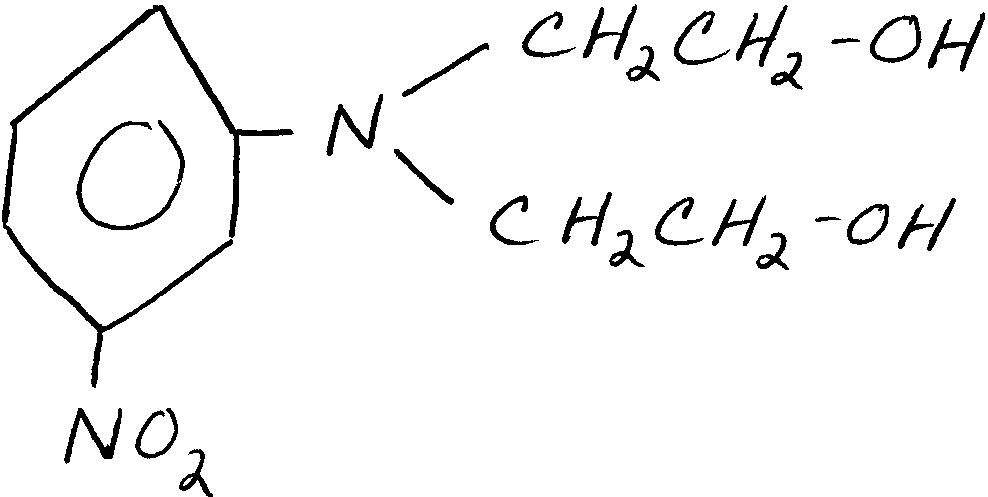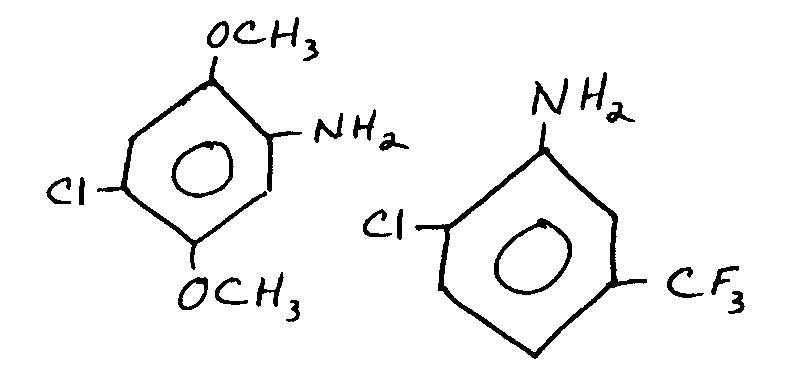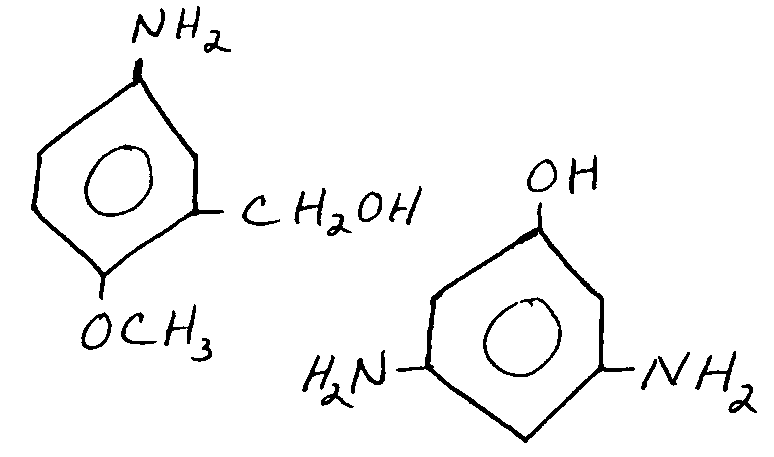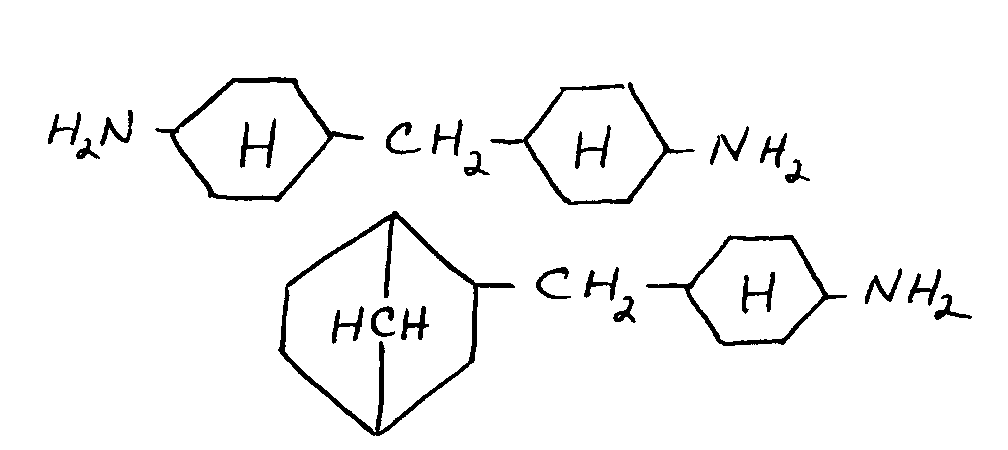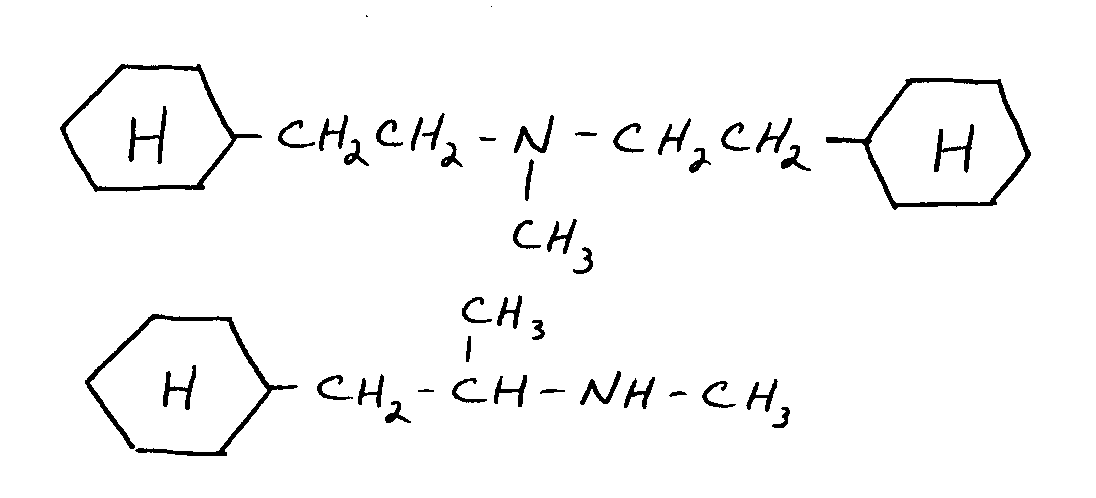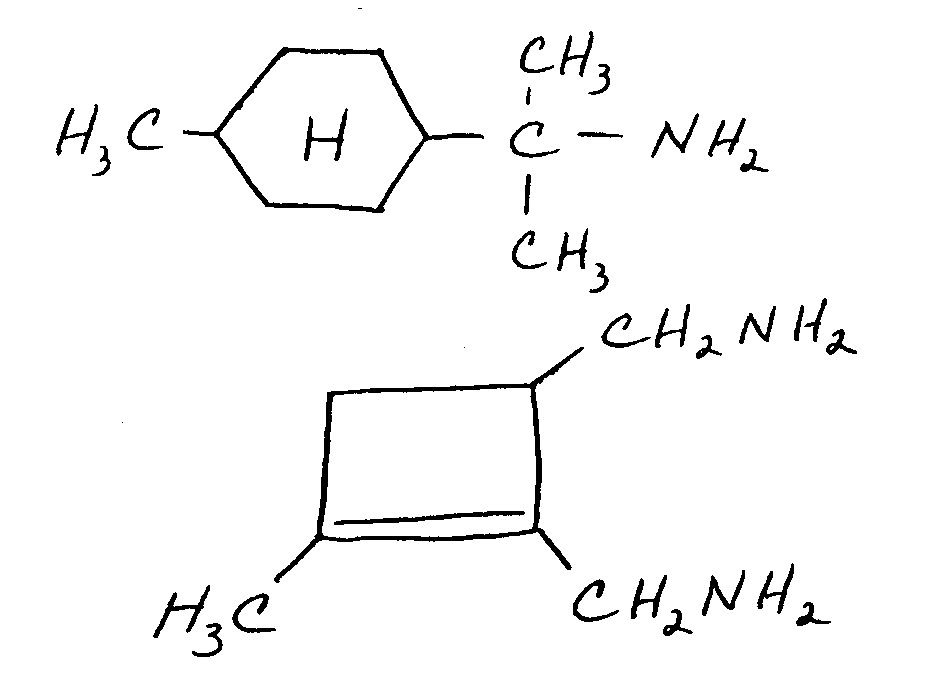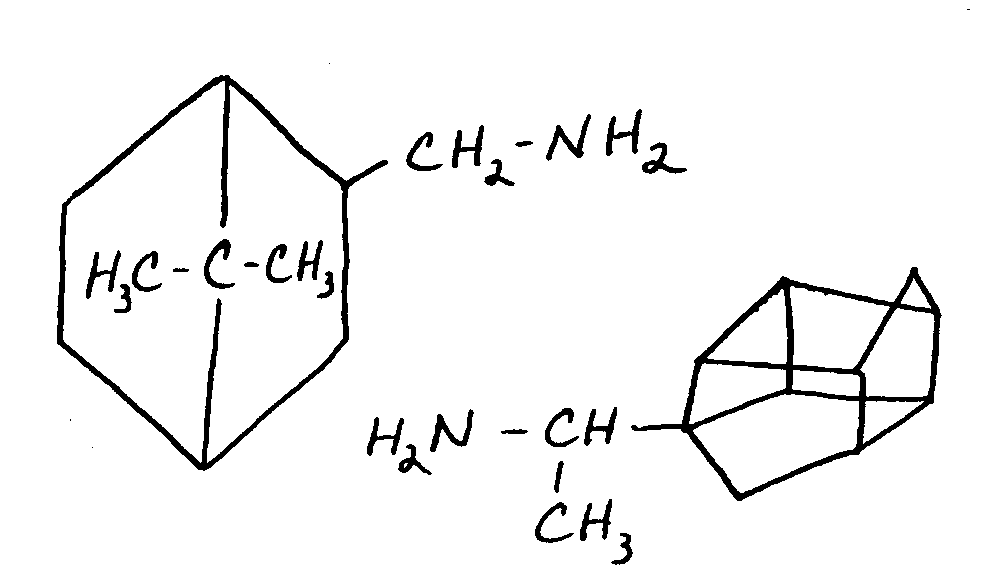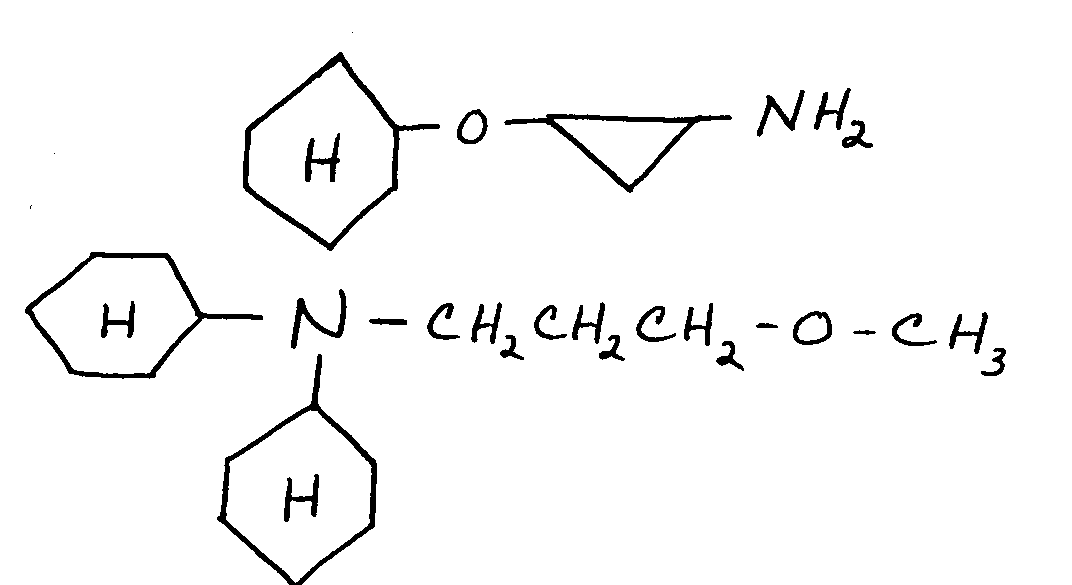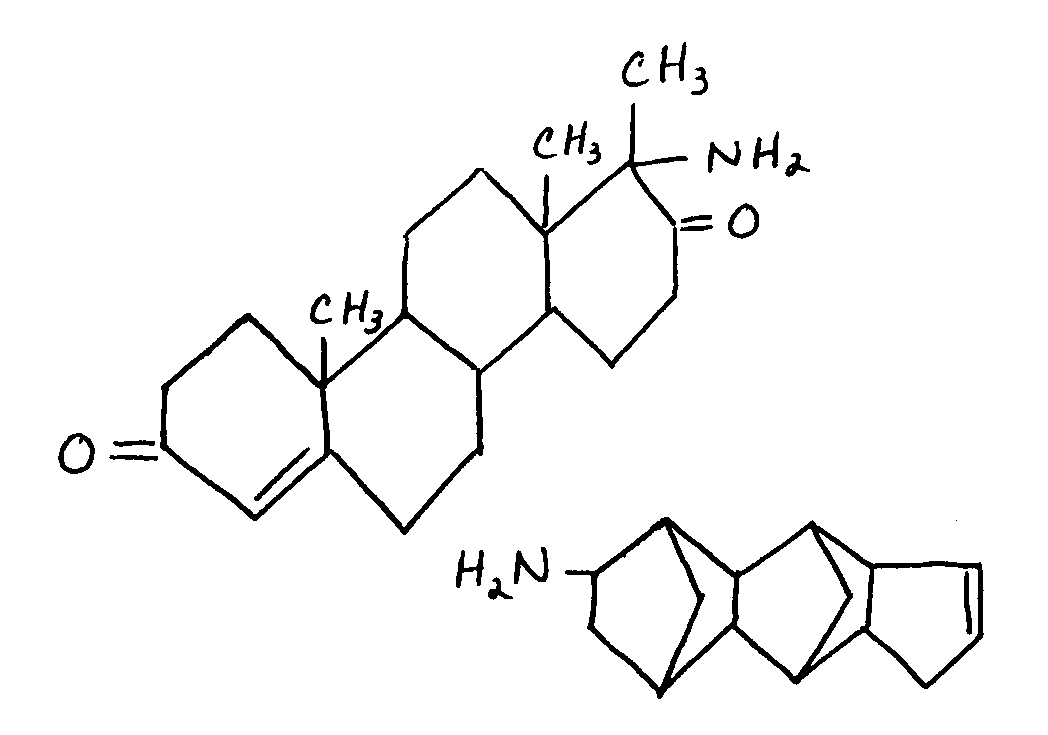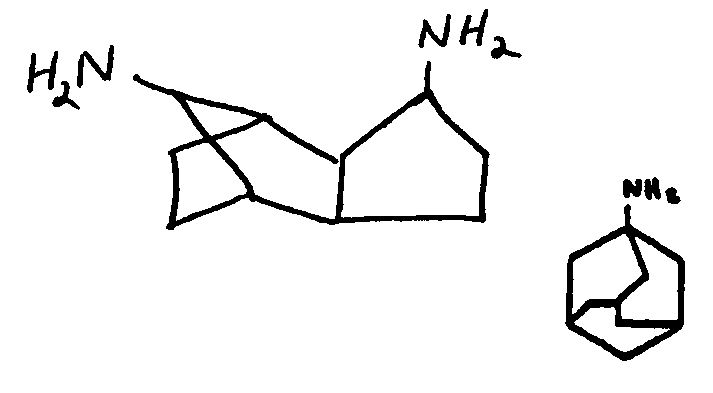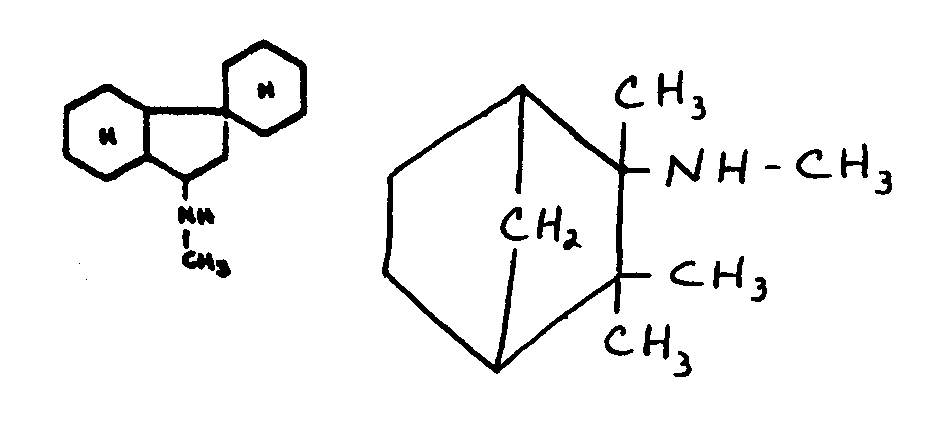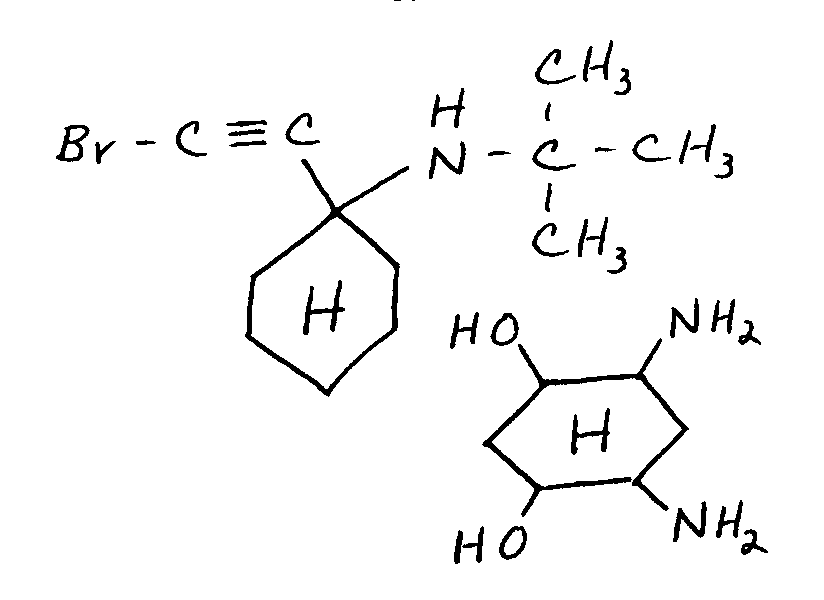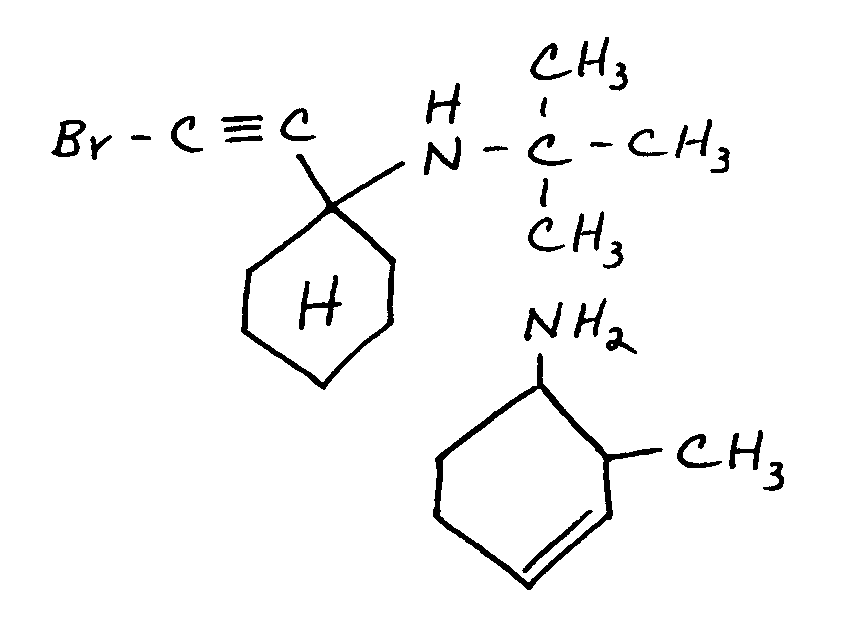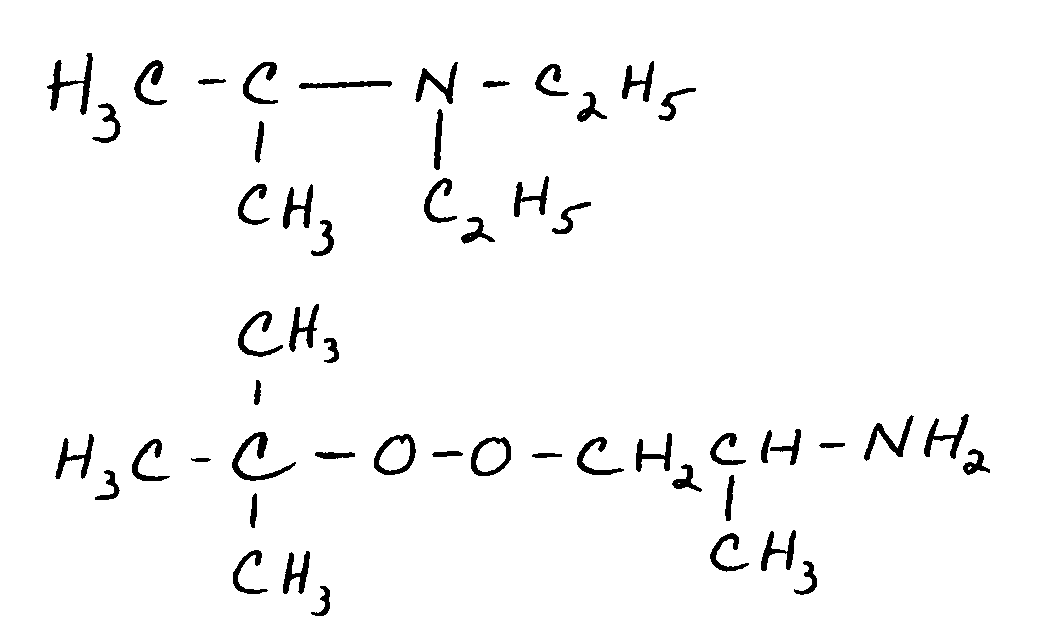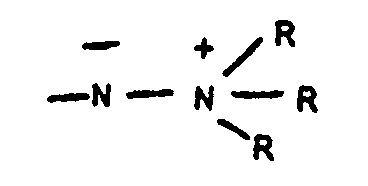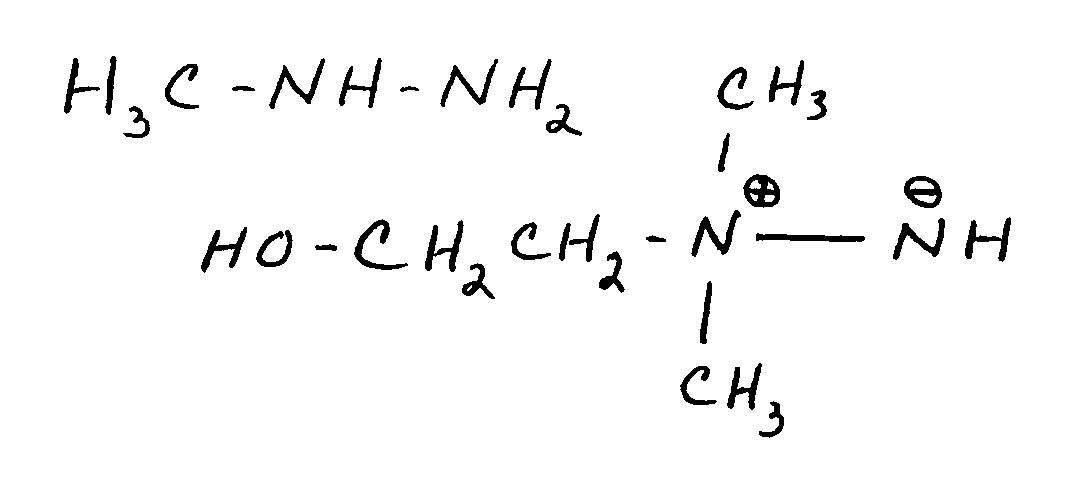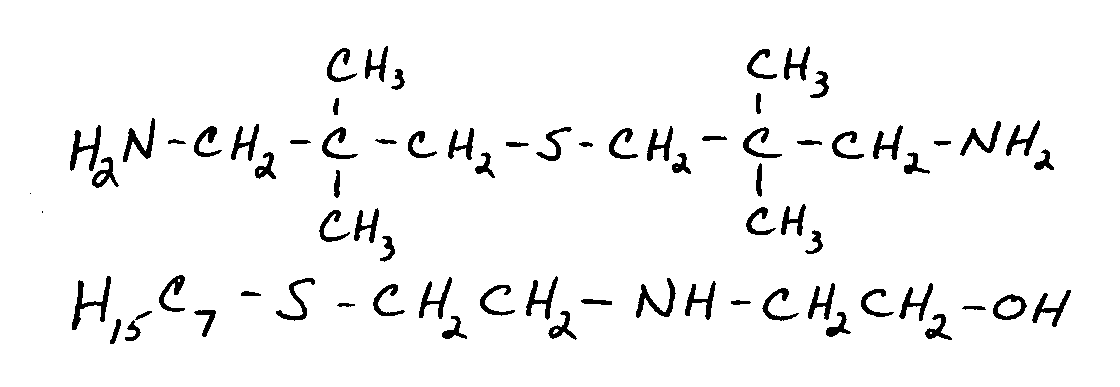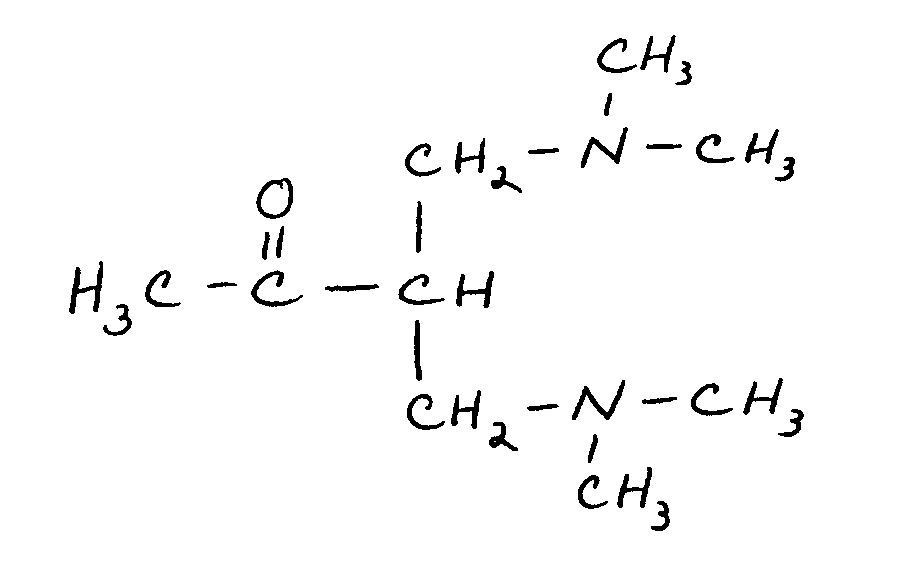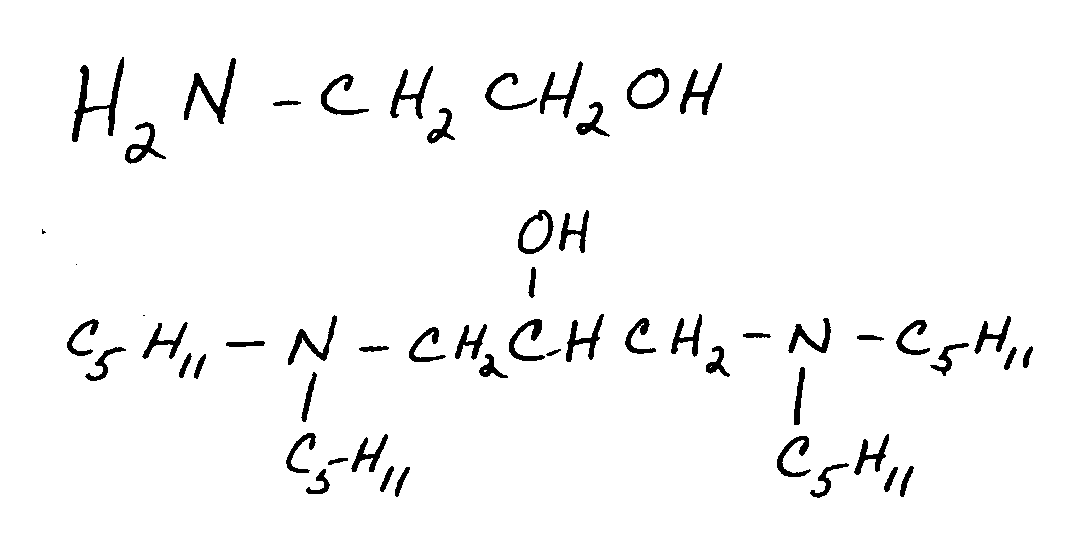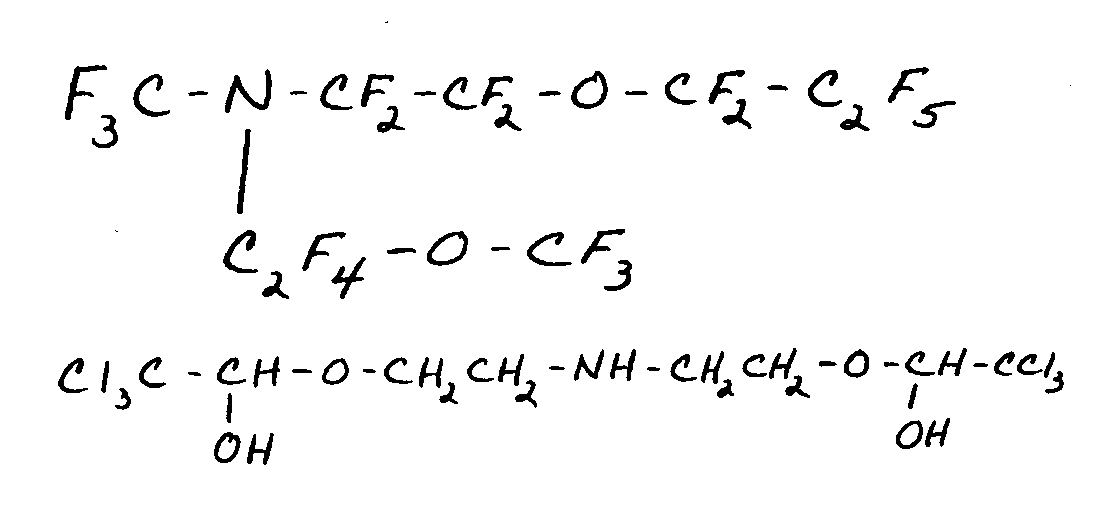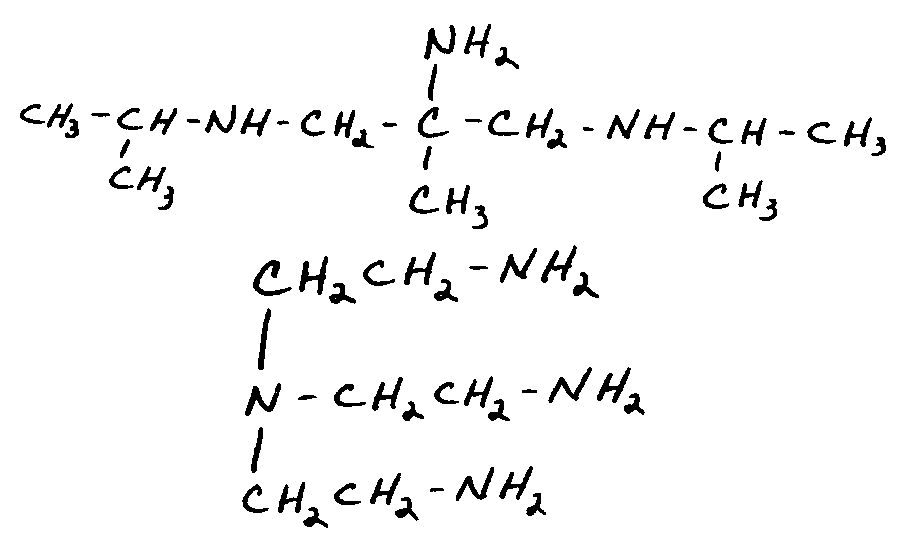![[Search a list of Patent Appplications for class 564]](../as.gif) CLASS 564, CLASS 564, | ORGANIC COMPOUNDS -- PART OF THE CLASS 532-570 SERIES |
| Click here for a printable version of this file | |
SUBCLASSES
![[List of Patents for class 564 subclass 1]](../ps.gif) 1 1 | AMINO NITROGEN CONTAINING (E.G., UREA, SULFONAMIDES, NITROSAMINES, OXYAMINES, ETC., AND SALTS THEREOF) | ||||||||||||
This subclass is indented under subclass 1. Compounds under Class 532, ... which contain nitrogen in
a form other than as nitrogen in an inorganic ion of an addition
salt, nitro, or nitroso.
SEE OR SEARCH CLASS:
| |||||||||||||
![[List of Patents for class 564 subclass 1.5]](../ps.gif) 1.5 1.5 | Adducts or inclusion compounds of urea per se or of of thiourea per se with organic compounds (e.g., urea-alkane inclusion compounds, etc.) | ||||
This subclass is indented under subclass 1. Compounds wherein urea, per se, of thiourea, per se, forms
an adduct or inclusion compound with an organic compound.
| |||||
![[List of Patents for class 564 subclass 2]](../ps.gif) 2 2 | With preservative or stabilizer |
| This subclass is indented under subclass 1. Products wherein the amino nitrogen containing compound is mixed with a preserving agent whose sole function is to prevent physical or chemical change. | |
![[List of Patents for class 564 subclass 3]](../ps.gif) 3 3 | Ureas or thioureas with preservative or stabilizer |
| This subclass is indented under subclass 2. Products wherein the compound stabilized or preserved contains the grouping below, wherein X is O or S. NN | |
![[List of Patents for class 564 subclass 4]](../ps.gif) 4 4 | Carboxamides with preservative or stabilizer |
| This subclass is indented under subclass 2. Products wherein the compound stabilized or preserved is a carboxamide containing the grouping RN | |
![[List of Patents for class 564 subclass 5]](../ps.gif) 5 5 | Benzene ring containing compound with preservative or stabilizer |
| This subclass is indented under subclass 2. Products wherein the compound being preserved contains a benzene ring. | |
![[List of Patents for class 564 subclass 6]](../ps.gif) 6 6 | Inorganic preservative or stabilizer |
| This subclass is indented under subclass 5. Products wherein the preserving or stabilizing agent is inorganic. | |
![[List of Patents for class 564 subclass 7]](../ps.gif) 7 7 | Sulfur or phenol containing preservative or stabilizer |
| This subclass is indented under subclass 5. Products wherein the preserving or stabilizing agent contains sulfur or a phenolic group. | |
![[List of Patents for class 564 subclass 8]](../ps.gif) 8 8 | Boron containing (e.g., boron containing complexes, salts, etc.) | ||||
This subclass is indented under subclass 1. Compounds which contain boron.
| |||||
![[List of Patents for class 564 subclass 9]](../ps.gif) 9 9 | Boron attached directly to amino nitrogen by nonionic bonding | ||
This subclass is indented under subclass 8. Compounds wherein the boron is directly attached to an amino
nitrogen by nonionic bonding.
| |||
![[List of Patents for class 564 subclass 10]](../ps.gif) 10 10 | The boron and amino nitrogen are members of the same ring | ||
This subclass is indented under subclass 9. Compounds wherein the nonionically bonded boron and amino
nitrogen are both members of the same ring.
| |||
![[List of Patents for class 564 subclass 11]](../ps.gif) 11 11 | Polycyclo ring system having the nitrogen and boron containing ring as one of the cyclos | ||
This subclass is indented under subclass 10. Compounds wherein the boron and nitrogen containing ring
is part of a polycyclo ring system.
| |||
![[List of Patents for class 564 subclass 12]](../ps.gif) 12 12 | Phosphorus attached directly to amino nitrogen by nonionic bonding | ||
This subclass is indented under subclass 1. Compounds which contain phosphorus directly attached to
an amino nitrogen by nonionic bonding.
| |||
![[List of Patents for class 564 subclass 13]](../ps.gif) 13 13 | The phosphorus and nitrogen are members of the same ring | ||
This subclass is indented under subclass 12. Compounds wherein the phosphorus and amino nitrogen are
both members of the same ring.
| |||
![[List of Patents for class 564 subclass 14]](../ps.gif) 14 14 | Chalcogen and plural nitrogens bonded directly to the same phosphorus | ||
This subclass is indented under subclass 12. Compounds wherein at least two amino nitrogens and oxygen
or sulfur are bonded to the same phosphorus.
| |||
![[List of Patents for class 564 subclass 15]](../ps.gif) 15 15 | Phosphorus attached indirectly to amino nitrogen by nonionic bonding | ||
This subclass is indented under subclass 1. Compounds which contain phosphorus indirectly attached to
amino nitrogen by nonionic bonding.
| |||
![[List of Patents for class 564 subclass 16]](../ps.gif) 16 16 | The phosphorus is a ring member | ||
This subclass is indented under subclass 15. Compounds wherein the phosphorus is a member of a ring.
| |||
![[List of Patents for class 564 subclass 17]](../ps.gif) 17 17 | Thioureas (i.e., HNH-C(=S)-HNH, wherein substitution may be made for hydrogen only) | ||||
This subclass is indented under subclass 1. Compounds which contain the grouping
NN
SEE OR SEARCH CLASS:
| |||||
![[List of Patents for class 564 subclass 18]](../ps.gif) 18 18 | Thiocarbazides or thiosemicarbazides (i.e. HNH-NH-C(=S)-HNH, wherein the N bonded directly to the thiourea N is an amino N and substitution may be made for hydrogen only) | ||
This subclass is indented under subclass 17. Compounds which contain the thiocarbazide radical wherein
an amino nitrogen is bonded directly to each of the thiorea nitrogens,
or the thiosemicarbazide radical wherein an amino nitrogen is
bonded to one thiourea nitrogen -N- .
| |||
![[List of Patents for class 564 subclass 19]](../ps.gif) 19 19 | Thiocarbazones or thiosemicarbazones (i.e., HCH=N-NH-C(=S)-HNH, wherein substitution may be made for hydrogen only) | ||
| This subclass is indented under subclass 18. Compounds which contain the thiocarbazone radical (Figure
1) or the thiosemicarbazone radical (Fig.2).
FIGURE 1
FIGURE 2
| |||
![[List of Patents for class 564 subclass 20]](../ps.gif) 20 20 | Benzene ring containing | ||
This subclass is indented under subclass 19. Compounds which contain a benzene ring.
| |||
![[List of Patents for class 564 subclass 21]](../ps.gif) 21 21 | Additional nitrogen attached indirectly to the thiocarbonyl by nonionic bonding | ||
This subclass is indented under subclass 20. Compounds which contain nitrogen in addition to that of
the thiocarbazone or thiosemicarbazone.
| |||
![[List of Patents for class 564 subclass 22]](../ps.gif) 22 22 | Thiobiurets (i.e., HNH-C(=S)-NH-C(=X)-HNH, wherein X is S or O and substitution may be made for hydrogen only) | ||
This subclass is indented under subclass 17. Compounds which contain the grouping in the figure below,
wherein X may be oxygen or sulfur, i.e., mono- or dithiobiurets.
--
| |||
![[List of Patents for class 564 subclass 23]](../ps.gif) 23 23 | Carbonyl, sulfur, or cyano attached directly to thiourea nitrogen by nonionic bonding | ||
This subclass is indented under subclass 17. Compounds wherein a thiourea nitrogen has carbonyl, sulfur,
or cyano group directly attached by nonionic bonding.
| |||
![[List of Patents for class 564 subclass 24]](../ps.gif) 24 24 | Processes utilizing carbon disulfide | ||
This subclass is indented under subclass 17. Processes wherein carbon disulfide is utilized in preparing
a thiourea.
| |||
![[List of Patents for class 564 subclass 25]](../ps.gif) 25 25 | Processes utilizing cyano containing compound | ||
This subclass is indented under subclass 17. Processes wherein a cyano compound is utilized in preparing
a thiourea.
| |||
![[List of Patents for class 564 subclass 26]](../ps.gif) 26 26 | Benzene ring containing | ||
This subclass is indented under subclass 17. Compounds which contain a benzene ring.
| |||
![[List of Patents for class 564 subclass 27]](../ps.gif) 27 27 | Nitrogen attached indirectly to the thiocarbonyl by nonionic bonding | ||
This subclass is indented under subclass 26. Compounds which contain nitrogen in addition to the thiourea
nitrogen.
| |||
![[List of Patents for class 564 subclass 28]](../ps.gif) 28 28 | Hydroxy, bonded directly to carbon, or ether containing (H of -OH may be replaced by a substituted or unsubstituted ammonium ion or a Group IA or IIA light metal) | ||
This subclass is indented under subclass 26. Compounds which contain a hydroxyl group bonded directly
to a carbon, or an ether, wherein H of the -OH may be replaced by
a substituted or unsubstituted ammonium ion or a group IA or IIA
light metal.
| |||
![[List of Patents for class 564 subclass 29]](../ps.gif) 29 29 | Halogen attached indirectly to the thiocarbonyl by nonionic bonding | ||
This subclass is indented under subclass 26. Compounds which contain halogen nonionically bonded.
| |||
![[List of Patents for class 564 subclass 30]](../ps.gif) 30 30 | Acyclic | ||
This subclass is indented under subclass 17. Compounds which do not contain any ring.
| |||
![[List of Patents for class 564 subclass 31]](../ps.gif) 31 31 | Thiourea per se or salt thereof |
| This subclass is indented under subclass 30. The compound which is thiourea, or its salts and processes of preparation not provided for above. | |
![[List of Patents for class 564 subclass 32]](../ps.gif) 32 32 | Ureas (i.e., HNH-CO-HNH, wherein substitution may be made for hydrogen only) | ||||||||
This subclass is indented under subclass 1. Compounds which have the grouping
- -
SEE OR SEARCH THIS CLASS, SUBCLASS:
| |||||||||
![[List of Patents for class 564 subclass 33]](../ps.gif) 33 33 | Nitro or nitroso bonded directly to nitrogen | ||
This subclass is indented under subclass 32. Compounds which contain a nitro or nitroso group bonded
directly to an amino nitrogen (i.e., nitramine or nitrosamine containing).
| |||
![[List of Patents for class 564 subclass 34]](../ps.gif) 34 34 | Carbazides or semicarbazides (i.e., HNH-NH-CO-HNH, wherein substitution may be made for hydrogen only) | ||
| This subclass is indented under subclass 32. Compounds which are carbazides or semicarbazides containing
the grouping.
| |||
![[List of Patents for class 564 subclass 35]](../ps.gif) 35 35 | Carbonyl or sulfur attached directly to carbazide or semicarbazide nitrogen by nonionic bonding | ||
This subclass is indented under subclass 34. Compounds wherein a carbonyl group or sulfur is attached
directly to a carbazide or semicarbazide nitrogen by nonionic bonding.
| |||
![[List of Patents for class 564 subclass 36]](../ps.gif) 36 36 | Carbazones or semicarbazones (i.e., HCH=N-NH-CO-HNH, wherein substitution may be made for hydrogen only) | ||
| This subclass is indented under subclass 34. Compounds which contain the carbazone radical (Fig. 1)
or the semicarbazone radical (Fig. 2).
FIGURE 1
FIGURE 2
| |||
![[List of Patents for class 564 subclass 37]](../ps.gif) 37 37 | Acyclic | ||
This subclass is indented under subclass 34. Compounds which do not contain any ring.
| |||
![[List of Patents for class 564 subclass 38]](../ps.gif) 38 38 | Biurets (i.e., HNH-CO-NH-CO-HNH, wherein substitution may be made for hydrogen only) | ||
This subclass is indented under subclass 32. Compounds which are biurets and contain the grouping --
| |||
![[List of Patents for class 564 subclass 39]](../ps.gif) 39 39 | Sulfur attached directly to urea nitrogen by nonionic bonding | ||
This subclass is indented under subclass 32. Compounds which contain sulfur attached directly to urea
nitrogen by nonionic bonding.
| |||
![[List of Patents for class 564 subclass 40]](../ps.gif) 40 40 | The sulfur is part of a substituent which contains nitrogen | ||
This subclass is indented under subclass 39. Compounds wherein the sulfur is part of a group which contains
additional nitrogen.
| |||
![[List of Patents for class 564 subclass 41]](../ps.gif) 41 41 | The substituent nitrogen is the nitrogen of a benzamido group (e.g., Cl benzene-CO-NH-HCH-(O=)S(=O)-, bonded directly to urea nitrogen, etc.) | ||
This subclass is indented under subclass 40. Compounds wherein the additional nitrogen is the nitrogen
of a benzamido group.
| |||
![[List of Patents for class 564 subclass 42]](../ps.gif) 42 42 | The sulfur is part of a monocyclic benzene ring containing substituent | ||
This subclass is indented under subclass 39. Compounds wherein the sulfur is part of a substituent which
is monocyclic and aromatic.
| |||
![[List of Patents for class 564 subclass 43]](../ps.gif) 43 43 | Alicyclic ring bonded directly to urea nitrogen | ||
This subclass is indented under subclass 42. Compounds wherein an alicyclic ring is bonded directly to
a urea nitrogen.
| |||
![[List of Patents for class 564 subclass 44]](../ps.gif) 44 44 | Additional carbonyl bonded directly to urea nitrogen | ||
This subclass is indented under subclass 32. Compounds in which a urea nitrogen has been amidated by
a carboxylic acid.
| |||
![[List of Patents for class 564 subclass 45]](../ps.gif) 45 45 | The additional carbonyl is in a substituent which is acyclic | ||||
This subclass is indented under subclass 44. Compounds wherein the carboxylic acid contains no ring.
SEE OR SEARCH CLASS:
| |||||
![[List of Patents for class 564 subclass 46]](../ps.gif) 46 46 | Carbon to carbon unsaturation in the substituent | ||
This subclass is indented under subclass 45. Compounds wherein the carboxylic acid contains a double
or triple bond.
| |||
![[List of Patents for class 564 subclass 47]](../ps.gif) 47 47 | Benzene ring containing | ||
This subclass is indented under subclass 32. Compounds which contain a benzene ring (i.e., aromatic).
| |||
![[List of Patents for class 564 subclass 48]](../ps.gif) 48 48 | Benzene ring bonded directly to urea nitrogen (i.e., anilides) | ||
This subclass is indented under subclass 47. Compounds which are anilides, wherein a benzene ring is
directly bonded to a urea nitrogen.
| |||
![[List of Patents for class 564 subclass 49]](../ps.gif) 49 49 | The benzene ring is part of a substituent which contains sulfur | ||
This subclass is indented under subclass 48. Compounds wherein the benzene ring is part of a substituent
which contains sulfur
| |||
![[List of Patents for class 564 subclass 50]](../ps.gif) 50 50 | The benzene ring is part of a substituent which contains nitrogen | ||
This subclass is indented under subclass 48. Compounds wherein the benzene ring is part of a substituent
which contains additional nitrogen.
| |||
![[List of Patents for class 564 subclass 51]](../ps.gif) 51 51 | The substituent nitrogen is attached indirectly to the benzene ring by acyclic nonionic bonding | ||
This subclass is indented under subclass 50. Compounds wherein the additional nitrogen is indirectly
bonded to the benzene ring by acyclic nonionic bonding.
| |||
![[List of Patents for class 564 subclass 52]](../ps.gif) 52 52 | The benzene ring is part of a substituent which contains oxygen | ||
This subclass is indented under subclass 48. Compounds wherein the benzene ring is part of a substituent
which contains oxygen.
| |||
![[List of Patents for class 564 subclass 53]](../ps.gif) 53 53 | The benzene ring is part of a substituent which contains halogen bonded directly to carbon | ||
This subclass is indented under subclass 48. Compounds wherein the benzene ring is part of a substituent
which contains halogen bonded directly to carbon.
| |||
![[List of Patents for class 564 subclass 54]](../ps.gif) 54 54 | The halogen is fluorine | ||
This subclass is indented under subclass 53. Compounds wherein the halogen is fluorine.
| |||
![[List of Patents for class 564 subclass 55]](../ps.gif) 55 55 | Plural benzene rings bonded directly to urea nitrogen | ||
This subclass is indented under subclass 48. Compounds wherein more than one benzene ring is bonded directly
to the same urea nitrogen or to different urea nitrogen.
| |||
![[List of Patents for class 564 subclass 56]](../ps.gif) 56 56 | Aralkyl bonded directly to urea nitrogen | ||
This subclass is indented under subclass 47. Compounds wherein an aralkyl group is bonded directly to
a urea nitrogen.
| |||
![[List of Patents for class 564 subclass 57]](../ps.gif) 57 57 | Alicyclic ring containing | ||
This subclass is indented under subclass 32. Compounds which contain an alicyclic group.
| |||
![[List of Patents for class 564 subclass 58]](../ps.gif) 58 58 | Additional carbon bonded directly to urea nitrogen | ||
This subclass is indented under subclass 32. Compounds which contain an alkyl or substituted alkyl group
bonded directly to a urea nitrogen.
| |||
![[List of Patents for class 564 subclass 59]](../ps.gif) 59 59 | The additional carbon is part of a substituent which contains nitrogen | ||
This subclass is indented under subclass 58. Compounds wherein the alkyl group contains an additional
nitrogen.
| |||
![[List of Patents for class 564 subclass 60]](../ps.gif) 60 60 | The additional carbon is part of a substituent which contains oxygen | ||
This subclass is indented under subclass 58. Compounds wherein the alkyl group contains oxygen as a substituent.
| |||
![[List of Patents for class 564 subclass 61]](../ps.gif) 61 61 | Processes |
| This subclass is indented under subclass 58. Processes for the preparation, purification, separation, or recovery of compounds classified therein. | |
![[List of Patents for class 564 subclass 62]](../ps.gif) 62 62 | Preparing directly from compound having carbon to carbon unsaturation |
| This subclass is indented under subclass 61. Processes wherein one of the starting materials contain a double or triple bond between two carbons. | |
![[List of Patents for class 564 subclass 63]](../ps.gif) 63 63 | Urea per se or salt thereof | ||
| This subclass is indented under subclass 32. The compound which is urea or salts thereof.
SEE OR SEARCH THIS CLASS, SUBCLASS:
| |||
![[List of Patents for class 564 subclass 64]](../ps.gif) 64 64 | Preparing directly from cyano containing compound |
| This subclass is indented under subclass 63. Processes which utilize a cyano containing compound, for example, calcium cyanamide in the preparation of urea. | |
![[List of Patents for class 564 subclass 65]](../ps.gif) 65 65 | Preparing directly from ammonia and carbonmonoxide or carbon oxysulfide (e.g., from ammonia and COS, etc.) |
| This subclass is indented under subclass 63. Processes in which urea is prepared by reacting ammonia with carbon monoxide or carbon oxysulfide. | |
![[List of Patents for class 564 subclass 66]](../ps.gif) 66 66 | Preparing directly from ammonium carbamate (i.e., from HNH-COO-HHNHH) | ||
| This subclass is indented under subclass 63. Processes in which urea is prepared directly from ammonium
carbamate.
SEE OR SEARCH THIS CLASS, SUBCLASS:
| |||
![[List of Patents for class 564 subclass 67]](../ps.gif) 67 67 | Preparing directly from ammonia and carbon dioxide |
| This subclass is indented under subclass 63. Processes wherein urea is prepared by the reaction of ammonia with carbon dioxide. | |
![[List of Patents for class 564 subclass 68]](../ps.gif) 68 68 | With corrosion inhibiting of reactor |
| This subclass is indented under subclass 67. Processes which include the prevention of corrosion of the reactor. | |
![[List of Patents for class 564 subclass 69]](../ps.gif) 69 69 | With ammonia synthesis |
| This subclass is indented under subclass 67. Processes which include the step of synthesizing ammonia. | |
![[List of Patents for class 564 subclass 70]](../ps.gif) 70 70 | With decomposition of by-product ammonium carbamate (i.e., decomposition of HNH-COO-HHNHH) | ||
| This subclass is indented under subclass 67. Processes wherein by-product ammonium carbamate is decomposed.
SEE OR SEARCH THIS CLASS, SUBCLASS:
| |||
![[List of Patents for class 564 subclass 71]](../ps.gif) 71 71 | Utilizing indirect heat exchange |
| This subclass is indented under subclass 70. Processes which utilize indirect heat exchange. | |
![[List of Patents for class 564 subclass 72]](../ps.gif) 72 72 | In plural stages |
| This subclass is indented under subclass 70. Processes wherein the decomposition of ammonium carbamate is performed in plural stages. | |
![[List of Patents for class 564 subclass 73]](../ps.gif) 73 73 | Purification or recovery |
| This subclass is indented under subclass 63. Processes directed to the purification, separation, or recovery of urea. | |
![[List of Patents for class 564 subclass 74]](../ps.gif) 74 74 | Thiocarboxamides (i.e., compounds containing -C(=S)-HNH, wherein substitution may be made for hydrogen only) | ||
This subclass is indented under subclass 1. Compounds which are thiocarboxamides containing the grouping
N.
| |||
![[List of Patents for class 564 subclass 75]](../ps.gif) 75 75 | Sulfur bonded directly to the thiocarbonyl | ||
This subclass is indented under subclass 74. Compounds which contain the grouping -S- not provided for
above.
| |||
![[List of Patents for class 564 subclass 76]](../ps.gif) 76 76 | Thiuram sulfides (e.g., HNH-C(=S)-S-S-C(=S)-HN-alkyl, etc.) | ||
| This subclass is indented under subclass 75. Compounds which are thiuram sulfides containing the grouping
below wherein X is a positive integer.
| |||
![[List of Patents for class 564 subclass 77]](../ps.gif) 77 77 | Thiooxamides (i.e., HNH-C(=S)-C(=X)-HNH, wherein X is S or O and substitution may be made for hydrogen only) | ||
This subclass is indented under subclass 74. Compounds which are thioxamides containing the grouping
-- wherein X may be oxygen or sulfur.
| |||
![[List of Patents for class 564 subclass 78]](../ps.gif) 78 78 | Acyclic | ||
This subclass is indented under subclass 74. Compounds which do not contain a ring.
| |||
![[List of Patents for class 564 subclass 79]](../ps.gif) 79 79 | Sulfamides (i.e., HNH-(O=)S(=O)-HNH, wherein substitution may be made for hydrogen only) | ||
| This subclass is indented under subclass 1. Compounds which are diamides of sulfuric acid (i.e., sulfamides)
and contain the grouping
| |||
![[List of Patents for class 564 subclass 80]](../ps.gif) 80 80 | Sulfonamides (i.e., Q-(O=)S(=O)-HNH, wherein Q is a substituent and wherein any substituent replacing one or both hydrogens shown will be referred to as E) | ||
| This subclass is indented under subclass 1. Compounds which are sulfonamides and contain the grouping
below wherein R-SO2- is the residue of a sulfonic
acid and N is the residue of an amino nitrogen containing compound.
| |||
![[List of Patents for class 564 subclass 81]](../ps.gif) 81 81 | Hydrazine containing | ||
This subclass is indented under subclass 80. Compounds which contain a hydrazine group.
| |||
![[List of Patents for class 564 subclass 82]](../ps.gif) 82 82 | Plural sulfonamide groups containing or containing plural sulfonyls bonded directly to the same nitrogen | ||
This subclass is indented under subclass 80. Compounds which contain more than one sulfonamide group
or contain plural sulfonyls bonded directly to the same nitrogen.
| |||
![[List of Patents for class 564 subclass 83]](../ps.gif) 83 83 | Two sulfonamido sulfonyls having no sulfonamido nitrogen between the sulfonyls | ||
This subclass is indented under subclass 82. Compounds wherein the sulfonyls of two sulfonamide groups
contain no sulfonamide nitrogen between them.
| |||
![[List of Patents for class 564 subclass 84]](../ps.gif) 84 84 | Substituent Q contains benzene ring | ||
This subclass is indented under subclass 80. Compounds wherein the sulfonic acid residue is aromatic
(i.e., benzene ring containing).
| |||
![[List of Patents for class 564 subclass 85]](../ps.gif) 85 85 | Sulfur in substituent Q | ||
This subclass is indented under subclass 84. Compounds wherein the aromatic sulfonic acid residue contains
sulfur.
| |||
![[List of Patents for class 564 subclass 86]](../ps.gif) 86 86 | Nitrogen in substituent Q | ||
This subclass is indented under subclass 84. Compounds wherein the residue of the aromatic sulfonic acid
contains nitrogen.
| |||
![[List of Patents for class 564 subclass 87]](../ps.gif) 87 87 | Nitro or nitroso in substituent Q | ||
This subclass is indented under subclass 86. Compounds wherein the residue of the aromatic sulfonic acid
contains a nitro or nitroso group bonded directly to a carbon atom.
| |||
![[List of Patents for class 564 subclass 88]](../ps.gif) 88 88 | Carbonyl in substituent Q | ||
This subclass is indented under subclass 84. Compounds wherein the residue of the aromatic sulfonic acid
contains a carbonyl group.
| |||
![[List of Patents for class 564 subclass 89]](../ps.gif) 89 89 | Hydroxy, bonded directly to carbon, or ether in substituent Q (H of -OH may be replaced by a substituted or unsubstituted ammonium ion or a Group IA or IIA light metal) | ||
This subclass is indented under subclass 84. Compounds wherein the residue of the aromatic sulfonic acid
contains a hydroxyl group bonded directly to carbon or an ether
wherein the H of the OH may be replaced by a substituted or unsubstituted
ammonium ion or a Group IA or IIA light metal.
| |||
![[List of Patents for class 564 subclass 90]](../ps.gif) 90 90 | Substituent Q is monocyclic | ||
This subclass is indented under subclass 84. Compounds wherein the residue of the aromatic sulfonic acid
is monocyclic.
| |||
![[List of Patents for class 564 subclass 91]](../ps.gif) 91 91 | Carbonyl, cyano, nitro, nitroso, halogen, or sulfur attached directly to the sulfonamide nitrogen or to an amino nitrogen in a substituent E by nonionic bonding | ||||
This subclass is indented under subclass 90. Compounds wherein the amino nitrogen compound residue contains
a carbonyl, cyano, nitro, nitroso, halogen, or sulfur attached directly
to the sulfonamido nitrogen or to an amino nitrogen by nonionic
bonding.
| |||||
![[List of Patents for class 564 subclass 92]](../ps.gif) 92 92 | Benzene ring in a substituent E | ||
This subclass is indented under subclass 90. Compounds wherein the amino nitrogen compound residue contains
a benzene ring.
| |||
![[List of Patents for class 564 subclass 93]](../ps.gif) 93 93 | Hydroxy, bonded directly to carbon, or ether in a substituent E (H of -OH may be replaced by a substituted or unsubstituted ammonium ion or a Group IA or IIA light metal) | ||
This subclass is indented under subclass 90. Compounds wherein the amino nitrogen compound residue contains
a hydroxyl bonded directly to carbon, or an ether, wherein the H
of the -OH may be replaced by a substituted or unsubstituted ammonium
ion or by a Group IA or IIA light metal.
| |||
![[List of Patents for class 564 subclass 94]](../ps.gif) 94 94 | Nitrogen in an acyclic substituent E | ||
This subclass is indented under subclass 90. Compounds wherein the amino nitrogen compound residue contains
an additional nitrogen.
| |||
![[List of Patents for class 564 subclass 95]](../ps.gif) 95 95 | Substituent Q is acyclic | ||
This subclass is indented under subclass 80. Compounds wherein the sulfonic acid residue contains no
ring.
| |||
![[List of Patents for class 564 subclass 96]](../ps.gif) 96 96 | Halogen in substituent Q attached indirectly to the sulfonamide sulfur by nonionic bonding | ||||||
This subclass is indented under subclass 95. Compounds wherein the sulfonic acid residue contains halogen
nonionically bonded.
| |||||||
![[List of Patents for class 564 subclass 97]](../ps.gif) 97 97 | Benzene ring in a substituent E | ||
This subclass is indented under subclass 96. Compounds wherein the amino nitrogen compound residue contains
a benzene ring.
| |||
![[List of Patents for class 564 subclass 98]](../ps.gif) 98 98 | Substituent Q is alkyl | ||||
This subclass is indented under subclass 95. Compounds wherein the sulfonic acid residue consists of
unsubstituted alkyl.
| |||||
![[List of Patents for class 564 subclass 99]](../ps.gif) 99 99 | Benzene ring in a substituent E | ||
This subclass is indented under subclass 98. Compounds wherein the amine nitrogen compound residue contains
a benzene ring.
| |||
![[List of Patents for class 564 subclass 100]](../ps.gif) 100 100 | Sulfur and amino nitrogen attached directly to the same sulfur by nonionic bonding | ||
This subclass is indented under subclass 1. Compounds which are thiosulfenamides containing the grouping
-- S - S -
| |||
![[List of Patents for class 564 subclass 101]](../ps.gif) 101 101 | Plural amino nitrogens attached directly to the same sulfur, or oxygen double bonded and amino nitrogen attached directly to the same sulfur, all by nonionic bonding (e.g., sulfinamides, etc.) | ||
This subclass is indented under subclass 1. Compounds which contain two amino nitrogens nonionically
bonded directly to the same sulfur or which contain sulfur doubly
bonded to oxygen and directly attached to an amino nitrogen by nonionic
bonding, as for example, sulfinamides.
| |||
![[List of Patents for class 564 subclass 102]](../ps.gif) 102 102 | Sulfur attached directly to amino nitrogen by nonionic bonding (e.g., sulfenamides, etc.) | ||
This subclass is indented under subclass 1. Compounds which contain sulfur bonded directly to an amino
nitrogen by nonionic bonding, as for example, sulfenamides.
| |||
![[List of Patents for class 564 subclass 103]](../ps.gif) 103 103 | Cyanamides (i.e., compounds containing cyano bonded directly to amino nitrogen) | ||
This subclass is indented under subclass 1. Compounds which are cyanamides wherein a cyano group is
bonded directly to an amino nitrogen.
| |||
![[List of Patents for class 564 subclass 104]](../ps.gif) 104 104 | Cyanoguanidines (i.e., HNH-C(=NH)-HNH, wherein -CN is substituted for one of the hydrogens and substitution may be made for the remaining hydrogens only) | ||
This subclass is indented under subclass 103. Compounds wherein the cyano group is bonded directly to
a nitrogen of a guanidine group.
| |||
![[List of Patents for class 564 subclass 105]](../ps.gif) 105 105 | Benzene ring containing | ||
This subclass is indented under subclass 103. Compounds which contain a benzene ring.
| |||
![[List of Patents for class 564 subclass 106]](../ps.gif) 106 106 | Acyclic | ||
This subclass is indented under subclass 103. Compounds which contains no ring.
| |||
![[List of Patents for class 564 subclass 107]](../ps.gif) 107 107 | Nitramines (i.e., compounds containing nitro bonded directly to amino nitrogen) | ||
This subclass is indented under subclass 1. Compounds which are nitramines wherein a nitro group is
attached directly to an amino nitrogen.
| |||
![[List of Patents for class 564 subclass 108]](../ps.gif) 108 108 | Containing nitrogen double bonded directly to carbon (e.g., nitroguanidines, etc.) | ||
This subclass is indented under subclass 107. Compounds which contain an amino nitrogen doubly bonded
to carbon.
| |||
![[List of Patents for class 564 subclass 109]](../ps.gif) 109 109 | Acyclic | ||
This subclass is indented under subclass 107. Compounds which do not contain a ring.
| |||
![[List of Patents for class 564 subclass 110]](../ps.gif) 110 110 | Containing nitro bonded directly to carbon (i.e., plural nitro groups containing) | ||
This subclass is indented under subclass 109. Compounds which contain a nitro group bonded directly to
carbon.
| |||
![[List of Patents for class 564 subclass 111]](../ps.gif) 111 111 | Hydroxy, bonded directly to carbon, or ether containing (H of -OH may be replaced by a substituted or unsubstituted ammonium ion or a Group IA or IIA light metal) | ||
This subclass is indented under subclass 110. Compounds which contain hydroxy bonded directly to carbon,
or an ether, wherein the H of the -OH may be replaced by a substituted
or unsubstituted ammonium ion or by a Group IA or IIA light metal.
| |||
![[List of Patents for class 564 subclass 112]](../ps.gif) 112 112 | Nitrosamines (i.e., compounds containing nitroso bonded directly to amino nitrogen) | ||
This subclass is indented under subclass 1. Compounds which are nitrosamines, wherein a nitroso group
is attached directly to an amino nitrogen.
| |||
![[List of Patents for class 564 subclass 113]](../ps.gif) 113 113 | Acyclic | ||
This subclass is indented under subclass 112. Compounds which do not contain a ring.
| |||
![[List of Patents for class 564 subclass 114]](../ps.gif) 114 114 | Haloamines (i.e., compounds containing halogen attached directly to amino nitrogen by nonionic bonding) | ||||
This subclass is indented under subclass 1. Compounds which are haloamines, wherein halogen is attached
directly to an amino nitrogen by nonionic bonding.
SEE OR SEARCH CLASS:
| |||||
![[List of Patents for class 564 subclass 115]](../ps.gif) 115 115 | Containing nitrogen double bonded directly to carbon | ||
This subclass is indented under subclass 114. Compounds which contain nitrogen doubly bonded to carbon.
| |||
![[List of Patents for class 564 subclass 116]](../ps.gif) 116 116 | Amidine containing (i.e., containing -C(=N)-HNH, wherein substitution may be made for hydrogen only) | ||
| This subclass is indented under subclass 115. Compounds which contain the amidine group
| |||
![[List of Patents for class 564 subclass 117]](../ps.gif) 117 117 | Alicyclic ring containing | ||
This subclass is indented under subclass 114. Compounds which contain an alicyclic group.
| |||
![[List of Patents for class 564 subclass 118]](../ps.gif) 118 118 | Acyclic | ||
This subclass is indented under subclass 114. Compounds which do not contain a ring.
| |||
![[List of Patents for class 564 subclass 119]](../ps.gif) 119 119 | Hydroxy, bonded directly to carbon, or ether containing (H of -OH may be replaced by a substituted or unsubstituted ammonium ion or a Group IA or IIA light metal) | ||
This subclass is indented under subclass 118. Compounds which contain a hydroxyl bonded directly to carbon,
or an ether, wherein the H of the -OH may be replaced by a substituted
or unsubstituted ammonium ion or by a Group IA or IIA light metal.
| |||
![[List of Patents for class 564 subclass 120]](../ps.gif) 120 120 | Carbon to carbon unsaturation containing | ||
This subclass is indented under subclass 118. Compounds which contain a carbon to carbon double or triple
bond.
| |||
![[List of Patents for class 564 subclass 121]](../ps.gif) 121 121 | Plural difluoramine groups containing | ||
This subclass is indented under subclass 118. Compounds which contain plural difluoramino groups.
| |||
![[List of Patents for class 564 subclass 122]](../ps.gif) 122 122 | Plural difluoramine groups bonded directly to the same carbon | ||
This subclass is indented under subclass 121. Compounds wherein the plural difluoramino groups are bonded
directly to the same carbon.
| |||
![[List of Patents for class 564 subclass 123]](../ps.gif) 123 123 | Carboxamides (i.e., Q-CO-HNH, wherein Q is a substituent having carbon bonded directly to the carbonyl or is hydrogen and wherein any substituent replacing one or both hydrogens shown will be referred to as E) | ||||||||
| This subclass is indented under subclass 1. Compounds which are carboxamides and contain one of the
groupings
SEE OR SEARCH CLASS:
| |||||||||
![[List of Patents for class 564 subclass 124]](../ps.gif) 124 124 | Preparing directly from cyano containing compound | ||
This subclass is indented under subclass 123. Processes wherein a carboxamide is prepared directly from
a cyano containing compound.
| |||
![[List of Patents for class 564 subclass 125]](../ps.gif) 125 125 | From HCN or cyanogen | ||
This subclass is indented under subclass 124. Processes which utilize HCN or cyanogen in the preparation
of a carboxamide.
| |||
![[List of Patents for class 564 subclass 126]](../ps.gif) 126 126 | Catalytic hydration only of nitrile | ||||
This subclass is indented under subclass 124. Processes wherein the sole chemical reaction for amide formation
is the hydrolysis of a nitrile in water in the presence of a catalyst.
| |||||
![[List of Patents for class 564 subclass 127]](../ps.gif) 127 127 | Copper containing catalyst utilized |
| This subclass is indented under subclass 126. Processes which utilize a copper containing catalyst. | |
![[List of Patents for class 564 subclass 128]](../ps.gif) 128 128 | Of acrylonitriles |
| This subclass is indented under subclass 126. Processes wherein acrylonitriles are catalytically hydrated. | |
![[List of Patents for class 564 subclass 129]](../ps.gif) 129 129 | Acid hydrolysis only of nitrile | ||||
This subclass is indented under subclass 124. Processes wherein the sole chemicl reaction for amide formation
is the acid hydrolysis of a nitrile.
SEE OR SEARCH THIS CLASS, SUBCLASS:
| |||||
![[List of Patents for class 564 subclass 130]](../ps.gif) 130 130 | From acyclic nitrile |
| This subclass is indented under subclass 124. Processes wherein a carboxamide is prepared from a nitrile which contains no ring. | |
![[List of Patents for class 564 subclass 131]](../ps.gif) 131 131 | Which contains carbon to carbon unsaturation |
| This subclass is indented under subclass 130. Processes wherein the nitrile contains a double or triple bond between two carbons. | |
![[List of Patents for class 564 subclass 132]](../ps.gif) 132 132 | Preparing directly from carbon monoxide or carbon dioxide | ||
This subclass is indented under subclass 123. Processes wherein a carboxamide is prepared by a reaction
utilizing carbon monoxide or carbon dioxide.
| |||
![[List of Patents for class 564 subclass 133]](../ps.gif) 133 133 | Preparing directly by amidation of -C(=O)X group, where X is O- or halogen |
| This subclass is indented under subclass 123. Processes wherein a carboxamide is formed by reaction of a carboxylic acid, salt, ester, acid halide, or anhydride with ammonia or an amino nitrogen containing compound. | |
![[List of Patents for class 564 subclass 134]](../ps.gif) 134 134 | Of carboxylic acid ester |
| This subclass is indented under subclass 133. Processes wherein a carboxylic acid ester is utilized. | |
![[List of Patents for class 564 subclass 135]](../ps.gif) 135 135 | Having acyclic acid moiety |
| This subclass is indented under subclass 134. Processes wherein the carboxylic acid of the ester does not contain a ring. | |
![[List of Patents for class 564 subclass 136]](../ps.gif) 136 136 | Additional oxygen in the acid moiety |
| This subclass is indented under subclass 135. Processes wherein the carboxylic acid of the ester contains additional oxygen. | |
![[List of Patents for class 564 subclass 137]](../ps.gif) 137 137 | Lower fatty acid |
| This subclass is indented under subclass 135. Processes wherein the carboxylic acid of the ester is a lower fatty acid. | |
![[List of Patents for class 564 subclass 138]](../ps.gif) 138 138 | Of carboxylic acid |
| This subclass is indented under subclass 133. Processes wherein a carboxylic acid is utilized. | |
![[List of Patents for class 564 subclass 139]](../ps.gif) 139 139 | Benzene ring containing |
| This subclass is indented under subclass 138. Processes wherein the carboxylic acid contains a benzene ring. | |
![[List of Patents for class 564 subclass 140]](../ps.gif) 140 140 | Hydroxy naphthoic |
| This subclass is indented under subclass 139. Processes wherein hydroxy naphthoic acid is utilized. | |
![[List of Patents for class 564 subclass 141]](../ps.gif) 141 141 | Lower fatty acid |
| This subclass is indented under subclass 138. Processes wherein a lower fatty acid is utilized. | |
![[List of Patents for class 564 subclass 142]](../ps.gif) 142 142 | Of carboxylic acid halide |
| This subclass is indented under subclass 133. Processes wherein a carboxylic acid halide is utilized. | |
![[List of Patents for class 564 subclass 143]](../ps.gif) 143 143 | Acyclic |
| This subclass is indented under subclass 142. Processes wherein the carboxylic acid halide does not contain a ring. | |
![[List of Patents for class 564 subclass 144]](../ps.gif) 144 144 | Of acyclic carboxylic acid anhydride |
| This subclass is indented under subclass 133. Processes wherein a carboxylic acid anhydride which does not have a ring is utilized. | |
![[List of Patents for class 564 subclass 145]](../ps.gif) 145 145 | Preparing directly by reacting sulfur or sulfur containing compound with ammonia; or directly from ammonium polysulfide |
| This subclass is indented under subclass 123. Processes wherein a carboxamide is prepared by utilizing a mixture of sulfur or a sulfur containing compound with ammonia or by utilizing an ammonium polysulfide, as for example, by the Willgerodt reaction. | |
![[List of Patents for class 564 subclass 146]](../ps.gif) 146 146 | Preparing directly by nitration |
| This subclass is indented under subclass 123. Processes wherein a nitro group is introduced into a carboxamide. | |
![[List of Patents for class 564 subclass 147]](../ps.gif) 147 147 | Aminimine containing | ||
| This subclass is indented under subclass 123. Compounds which are aminimines and contain the grouping
| |||
![[List of Patents for class 564 subclass 148]](../ps.gif) 148 148 | Hydrazine containing | ||
This subclass is indented under subclass 123. Compounds which contain a hydrazine group.
| |||
![[List of Patents for class 564 subclass 149]](../ps.gif) 149 149 | Substituent Q contains benzene ring | ||
This subclass is indented under subclass 148. Compounds wherein the carboxylic acid residue contains a
benzene ring.
| |||
![[List of Patents for class 564 subclass 150]](../ps.gif) 150 150 | Hydroxy, bonded directly to carbon, or ether in substituent Q (H of -OH may be replaced by a substituted or unsubstituted ammonium ion or a Group IA or IIA light metal) | ||
This subclass is indented under subclass 149. Compounds wherein the carboxylic acid residue contains hydroxy
bonded directly to carbon, or an ether, wherein the H of the -OH
may be replaced by a substituted or unsubstituted ammonium ion or
a Group IA or IIA light metal.
| |||
![[List of Patents for class 564 subclass 151]](../ps.gif) 151 151 | Substituent Q is acyclic | ||
This subclass is indented under subclass 148. Compounds wherein the carboxylic acid residue does not contain
a ring.
| |||
![[List of Patents for class 564 subclass 152]](../ps.gif) 152 152 | Plural carboxamide groups containing or containing plural carbonyls bonded directly to the same nitrogen | ||
This subclass is indented under subclass 123. Compounds which contain more than one carboxamide group
or contain plural carbonyls bonded directly to the same nitrogen.
| |||
![[List of Patents for class 564 subclass 153]](../ps.gif) 153 153 | Three or more carboxamide groups | ||
This subclass is indented under subclass 152. Compounds which contain three or more carboxamides.
| |||
![[List of Patents for class 564 subclass 154]](../ps.gif) 154 154 | Sulfur containing | ||
This subclass is indented under subclass 152. Compounds which contain nonionically bonded sulfur.
| |||
![[List of Patents for class 564 subclass 155]](../ps.gif) 155 155 | Benzene ring containing | ||
This subclass is indented under subclass 152. Compounds which contain a benzene ring.
| |||
![[List of Patents for class 564 subclass 156]](../ps.gif) 156 156 | Two carboxamido carbonyls having benzene ring between the carbonyls and no carboxamido nitrogen between the carbonyls | ||
This subclass is indented under subclass 155. Compounds wherein the carbonyls of two carboxamides have
a benzene ring between them and no carboxamide nitrogen between
them.
| |||
![[List of Patents for class 564 subclass 157]](../ps.gif) 157 157 | Amino nitrogen, not bonded directly to carbonyl, containing | ||
This subclass is indented under subclass 155. Compounds which contain a noncarboxamide amino nitrogen.
| |||
![[List of Patents for class 564 subclass 158]](../ps.gif) 158 158 | Hydroxy, bonded directly to carbon, or ether containing (H of -OH may be replaced by a substituted or unsubstituted ammonium ion or a Group IA or IIA light metal) | ||
This subclass is indented under subclass 155. Compounds which contain a hydroxyl bonded directly to carbon,
or ether, wherein the H of -OH may be replaced by a substituted
or unsubstitued ammonium ion or by a Group IA or IIA light metal.
| |||
![[List of Patents for class 564 subclass 159]](../ps.gif) 159 159 | Acyclic | ||
This subclass is indented under subclass 152. Compounds which contain no ring.
| |||
![[List of Patents for class 564 subclass 160]](../ps.gif) 160 160 | Two carboxamido carbonyls having no carboxamido nitrogen between the carbonyls | ||
This subclass is indented under subclass 159. Compounds wherein the carbonyls of two carboxamides have
no carboxamide nitrogen between them.
| |||
![[List of Patents for class 564 subclass 161]](../ps.gif) 161 161 | Substituent Q contains benzene ring | ||
This subclass is indented under subclass 123. Compounds wherein the residue of the carboxylic acid contains
a benzene ring.
| |||
![[List of Patents for class 564 subclass 162]](../ps.gif) 162 162 | Sulfur in substituent Q | ||||
This subclass is indented under subclass 161. Compounds wherein the residue of the carboxylic acid contains
sulfur.
SEE OR SEARCH THIS CLASS, SUBCLASS:
| |||||
![[List of Patents for class 564 subclass 163]](../ps.gif) 163 163 | Nitrogen in substituent Q | ||
This subclass is indented under subclass 161. Compounds wherein the carboxylic acid residue contains nitrogen.
| |||
![[List of Patents for class 564 subclass 164]](../ps.gif) 164 164 | The substituent nitrogen is an amino nitrogen attached indirectly to a ring by acyclic nonionic bonding | ||
This subclass is indented under subclass 163. Compounds wherein the carboxylic acid residue contains an
amine nitrogen indirectly attached to a ring through a carbon or
through an acyclic chain.
| |||
![[List of Patents for class 564 subclass 165]](../ps.gif) 165 165 | Hydroxy, bonded directly to carbon, or ether in substituent Q (H of -OH may be replaced by a substituted or unsubstituted ammonium ion or a Group IA or IIA light metal) | ||
This subclass is indented under subclass 164. Compounds wherein the carboxylic acid residue contains a
hydroxyl bonded directly to carbon or an ether, wherein the H of
the -OH may be replaced by a substituted or unsubstituted ammonium
ion or by a Group IA or IIA light metal.
| |||
![[List of Patents for class 564 subclass 166]](../ps.gif) 166 166 | Nitro in substituent Q | ||
This subclass is indented under subclass 163. Compounds wherein the residue of the carboxylic acid contains
a nitro group.
| |||
![[List of Patents for class 564 subclass 167]](../ps.gif) 167 167 | Hydroxy, bonded directly to carbon, or ether in substituent Q (H of -OH may be replaced by a substituted or unsubstituted ammonium ion or a Group IA or IIA light metal) | ||
This subclass is indented under subclass 163. Compounds wherein the carboxylic acid residue contains a
hydroxyl bonded directly to carbon or an ether, wherein the H of
the -OH may be replaced by a substituted or unsubstituted ammonium
ion or by a Group IA or IIA light metal.
| |||
![[List of Patents for class 564 subclass 168]](../ps.gif) 168 168 | Ring in a substituent E | ||
This subclass is indented under subclass 163. Compounds wherein the amino nitrogen containing residue
contains a ring.
| |||
![[List of Patents for class 564 subclass 169]](../ps.gif) 169 169 | Carbonyl in substituent Q | ||
This subclass is indented under subclass 161. Compounds wherein the carboxylic acid residue contains an
aldehyde or ketone group.
| |||
![[List of Patents for class 564 subclass 170]](../ps.gif) 170 170 | Hydroxy, bonded directly to carbon, or ether in substituent Q (H of -OH may be replaced by a substituted or unsubstituted ammonium ion or a Group IA or IIA light metal) | ||
This subclass is indented under subclass 161. Compounds wherein the carboxylic acid residue contains a
hydroxyl bonded directly to carbon or an ether, wherein the H of
the -OH may be replaced by a substituted or unsubstituted ammonium
ion or by a Group IA or IIA light metal.
| |||
![[List of Patents for class 564 subclass 171]](../ps.gif) 171 171 | Plural rings in substituent Q | ||
This subclass is indented under subclass 170. Compounds wherein the carboxylic acid residue contains more
than one ring.
| |||
![[List of Patents for class 564 subclass 172]](../ps.gif) 172 172 | Polycyclo ring system in substituent Q | ||
This subclass is indented under subclass 171. Compounds wherein the carboxylic acid residue contains a
polycyclo ring system.
| |||
![[List of Patents for class 564 subclass 173]](../ps.gif) 173 173 | Q contains an ortho-hydroxy naphthyl bicyclo ring system, or its partially hydrogenated form, bonded directly to the carbonyl (H of -OH may be replaced by a substituted or unsubstituted ammonium ion or a Group IA or IIA light metal) | ||
This subclass is indented under subclass 172. Compounds wherein the carboxylic acid residue is an ortho-hydroxy
naphthoic acid or a partially hydrogenated form thereof.
| |||
![[List of Patents for class 564 subclass 174]](../ps.gif) 174 174 | Ring in a substituent E | ||
This subclass is indented under subclass 171. Compounds wherein the amino nitrogen residue contains a
ring.
| |||
![[List of Patents for class 564 subclass 175]](../ps.gif) 175 175 | Oxygen, bonded directly to the benzene ring, is part of an acyclic chain between the benzene ring and the carbonyl | ||
This subclass is indented under subclass 170. Compounds wherein the carboxylic acid residue contains oxygen
which is directly bonded to a benzene ring and is part of an acyclic
chain which also contains the acid carbonyl group.
| |||
![[List of Patents for class 564 subclass 176]](../ps.gif) 176 176 | Benzene ring bonded directly to the carbonyl | ||
This subclass is indented under subclass 170. Compounds wherein the carboxylic acid residue contains a
benzene ring bonded directly to the acid carbonyl group.
| |||
![[List of Patents for class 564 subclass 177]](../ps.gif) 177 177 | Hydroxy bonded directly to the benzene ring (H of -OH may be replaced by a substituted or unsubstituted ammonium ion or a Group IA or IIA light metal) | ||
This subclass is indented under subclass 176. Compounds wherein the carboxylic acid residue contains a
hydroxy group or its Group IA or IIA light metal or ammonium derivative bonded
directly to a benzene ring.
| |||
![[List of Patents for class 564 subclass 178]](../ps.gif) 178 178 | Preparing directly by halogenation |
| This subclass is indented under subclass 177. Processes wherein the compounds are prepared directly by halogenation. | |
![[List of Patents for class 564 subclass 179]](../ps.gif) 179 179 | Benzene ring in a substituent E | ||
This subclass is indented under subclass 177. Compounds wherein the amino nitrogen containing residue
has a benzene ring.
| |||
![[List of Patents for class 564 subclass 180]](../ps.gif) 180 180 | Polycyclo ring system in substituent Q | ||
This subclass is indented under subclass 161. Compounds wherein the carboxylic acid residue contains a
polycyclo ring system.
| |||
![[List of Patents for class 564 subclass 181]](../ps.gif) 181 181 | Two rings bonded directly to the same carbon in substituent Q | ||
This subclass is indented under subclass 161. Compounds wherein the carboxylic acid residue contains two
rings bonded directly to the same carbon.
| |||
![[List of Patents for class 564 subclass 182]](../ps.gif) 182 182 | Substituent Q is monocyclic | ||
This subclass is indented under subclass 161. Compounds wherein the carboxylic acid residue contains only
one ring.
| |||
![[List of Patents for class 564 subclass 183]](../ps.gif) 183 183 | The ring is bonded directly to the carbonyl | ||
This subclass is indented under subclass 182. Compounds wherein the carboxylic acid residue contains a
benzene ring bonded directly to the acid carbonyl.
| |||
![[List of Patents for class 564 subclass 184]](../ps.gif) 184 184 | Benzene ring in a substituent E | ||
This subclass is indented under subclass 183. Compounds wherein the amino nitrogen containing residue
contains a benzene ring.
| |||
![[List of Patents for class 564 subclass 185]](../ps.gif) 185 185 | Ring or polycyclo ring system in substituent E is attached indirectly to the carboxamide nitrogen or to an amino nitrogen in substituent E by acyclic nonionic bonding | ||
This subclass is indented under subclass 184. Compounds wherein the amino nitrogen containing residue
contains a ring or a polycyclo ring system which is attached indirectly
to the carboxamido nitrogen or to an additional amino nitrogen in
the amino nitrogen containing residue by acyclic nonionic bonding.
| |||
![[List of Patents for class 564 subclass 186]](../ps.gif) 186 186 | Oxygen in a substituent E | ||
This subclass is indented under subclass 183. Compounds wherein the amino nitrogen containing residue
contains oxygen.
| |||
![[List of Patents for class 564 subclass 187]](../ps.gif) 187 187 | Acyclic carbon to carbon unsaturation in a substituent E | ||
This subclass is indented under subclass 183. Compounds wherein the amino nitrogen containing residue
contains a double or triple bond between two carbons.
| |||
![[List of Patents for class 564 subclass 188]](../ps.gif) 188 188 | Plural alicyclic rings in substituent Q | ||
This subclass is indented under subclass 123. Compounds wherein the carboxylic acid residue contains more
than one alicyclic ring.
| |||
![[List of Patents for class 564 subclass 189]](../ps.gif) 189 189 | Five-membered ring in substituent Q | ||
This subclass is indented under subclass 123. Compounds wherein the carboxylic acid residue contains a
five-membered ring.
| |||
![[List of Patents for class 564 subclass 190]](../ps.gif) 190 190 | Three-membered ring in substituent Q | ||
This subclass is indented under subclass 123. Compounds wherein the carboxylic acid residue contains a
three-membered ring.
| |||
![[List of Patents for class 564 subclass 191]](../ps.gif) 191 191 | Alicyclic ring and an atom other than oxygen, carbon, or hydrogen in substituent Q | ||
This subclass is indented under subclass 123. Compounds wherein the carboxylic acid residue contains an
alicyclic ring and an atom other than carbon, hydrogen, or oxygen.
| |||
![[List of Patents for class 564 subclass 192]](../ps.gif) 192 192 | Substituent Q is acyclic | ||
This subclass is indented under subclass 123. Compounds wherein the carboxylic acid residue does not contain
a ring.
| |||
![[List of Patents for class 564 subclass 193]](../ps.gif) 193 193 | Nitrogen in substituent Q | ||
This subclass is indented under subclass 192. Compounds wherein the carboxylic acid residue contains nitrogen.
| |||
![[List of Patents for class 564 subclass 194]](../ps.gif) 194 194 | Benzene ring in a substituent E | ||
This subclass is indented under subclass 193. Compounds wherein the amino nitrogen containing residue
contains a benzene ring.
| |||
![[List of Patents for class 564 subclass 195]](../ps.gif) 195 195 | Two rings bonded directly to the same carbon in a substituent E | ||
This subclass is indented under subclass 194. Compounds wherein the amino nitrogen containing residue
contains two rings bonded directly to the same carbon.
| |||
![[List of Patents for class 564 subclass 196]](../ps.gif) 196 196 | A ring or polycyclo ring system in a substituent E is attached indirectly to the carboxamide nitrogen or to an amino nitrogen in substituent E by acyclic nonionic bonding | ||
This subclass is indented under subclass 194. Compounds wherein the amino nitrogen containing residue
contains a ring or a polycyclo ring system which is attached indirectly
to the carboxamido nitrogen or to an additional amino nitrogen in
the amino nitrogen containing residue by acyclic nonionic bonding.
| |||
![[List of Patents for class 564 subclass 197]](../ps.gif) 197 197 | The compound is acyclic | ||
This subclass is indented under subclass 193. Compounds wherein the amino nitrogen containing residue
does not contain a ring.
| |||
![[List of Patents for class 564 subclass 198]](../ps.gif) 198 198 | The carboxamide nitrogen is unsubstituted | ||
This subclass is indented under subclass 197. Compounds wherein the amino nitrogen containing residue
is unsubstituted.
| |||
![[List of Patents for class 564 subclass 199]](../ps.gif) 199 199 | Carbonyl in substituent Q | ||
This subclass is indented under subclass 192. Compounds wherein the carboxylic acid residue contains an
aldehyde or keto group.
| |||
![[List of Patents for class 564 subclass 200]](../ps.gif) 200 200 | Benzene ring in a substituent E | ||
This subclass is indented under subclass 199. Compounds wherein the amino nitrogen containing residue
contains a benzene ring.
| |||
![[List of Patents for class 564 subclass 201]](../ps.gif) 201 201 | Hydroxy, bonded directly to carbon, or ether in substituent Q (H of -OH may be replaced by a substituted or unsubstituted ammonium ion or a Group IA or IIA light metal) | ||
This subclass is indented under subclass 192. Compounds wherein the carboxylic acid residue contains a
hydroxyl bonded directly to carbon, or an ether, wherein the H of
the -OH may be replaced by a substituted or unsubstituted ammonium
ion or by a Group IA or IIA light metal.
| |||
![[List of Patents for class 564 subclass 202]](../ps.gif) 202 202 | Benzene ring in a substituent E | ||
This subclass is indented under subclass 201. Compounds wherein the amino nitrogen containing residue
contains a benzene ring.
| |||
![[List of Patents for class 564 subclass 203]](../ps.gif) 203 203 | Hydroxy, bonded directly to carbon, or ether in an acyclic substituent E (Hof -OH may be replaced by a substituted or unsubstututed ammonium ion or a Group IA or IIA light metal) | ||
This subclass is indented under subclass 201. Compounds wherein the amino nitrogen containing residue
does not have a ring and contains a hydroxyl bonded directly to
carbon, or an ether, wherein the H of the -OH may be replaced by
a substituted or unsubstituted ammonium ion or by a Group IA or
IIA light metal.
| |||
![[List of Patents for class 564 subclass 204]](../ps.gif) 204 204 | Carbon to carbon unsaturation in substituent Q | ||
This subclass is indented under subclass 192. Compounds wherein the carboxylic acid residue contains a
double or triple bond between two carbons.
| |||
![[List of Patents for class 564 subclass 205]](../ps.gif) 205 205 | Process which includes forming the unsaturation |
| This subclass is indented under subclass 204. Processes wherein unsaturation is introduced into the carboxylic acid residue of a carboxamide, as for example, by pyrolyzing an alkoxy or acetoxy alkanoic acid amide to split off the alkoxy or acetoxy groups, respectively. | |
![[List of Patents for class 564 subclass 206]](../ps.gif) 206 206 | Purification or recovery |
| This subclass is indented under subclass 204. Processes directed to the purification, separation, or recovery of unsaturated carboxylic acid amides. | |
![[List of Patents for class 564 subclass 207]](../ps.gif) 207 207 | Benzene ring in a substituent E | ||
This subclass is indented under subclass 204. Compounds wherein the amino nitrogen containing residue
contains a benzene ring.
| |||
![[List of Patents for class 564 subclass 208]](../ps.gif) 208 208 | Hydroxy, bonded directly to carbon, or ether in an acyclic substituent E (H of -OH may be replaced by a substituted or unsubstituted ammonium ion or a Group IA or IIA light metal) | ||
This subclass is indented under subclass 204. Compounds wherein the amino nitrogen containing residue
does not have a ring and contains a hydroxyl bonded directly to
carbon, or an ether, wherein the H of the -OH may be replaced by
a substituted or unsubstituted ammonium ion or by a Group IA or
IIA light metal.
| |||
![[List of Patents for class 564 subclass 209]](../ps.gif) 209 209 | Halogen, bonded directly to carbon, in substituent Q | ||
This subclass is indented under subclass 192. Compounds wherein the carboxylic acid residue contains halogen
bonded directly to carbon.
| |||
![[List of Patents for class 564 subclass 210]](../ps.gif) 210 210 | Ring in a substituent E | ||
This subclass is indented under subclass 209. Compounds wherein the amino nitrogen containing residue
contains a ring.
| |||
![[List of Patents for class 564 subclass 211]](../ps.gif) 211 211 | Benzene ring in a substituent E | ||
This subclass is indented under subclass 210. Compounds wherein the amino nitrogen containing residue
contains a benzene ring.
| |||
![[List of Patents for class 564 subclass 212]](../ps.gif) 212 212 | A ring or polycyclo ring system in a substituent E is attached indirectly to the carboxamide nitrogen or to an amino nitrogen in substituent E by acyclic nonionic bonding | ||
This subclass is indented under subclass 211. Compounds wherein the amino nitrogen containing residue
contains a ring or a polycyclo ring system which is attached indirectly
to the carboxamido nitrogen or to an additional amino nitrogen in
the amino nitrogen containing residue by acyclic nonionic bonding.
| |||
![[List of Patents for class 564 subclass 213]](../ps.gif) 213 213 | Nitro and hydroxy, bonded directly to carbon, or ether in the substituent E (H of -OH may be replaced by a substituted or unsubstituted ammonium ion or a Group IA or IIA light metal) | ||
This subclass is indented under subclass 212. Compounds wherein the amino nitrogen containing residue
contains a nitro group and an ether, or contains a nitro group an
a hydroxyl, which hydroxyl is bonded directly to carbon and wherein
the H of the -OH may be replaced by a substituted or unsubstituted
ammonium or a Group IA or IIA light metal.
| |||
![[List of Patents for class 564 subclass 214]](../ps.gif) 214 214 | The compound is monocyclic | ||
This subclass is indented under subclass 211. Compounds wherein the amino nitrogen containing residue
contains only one ring.
| |||
![[List of Patents for class 564 subclass 215]](../ps.gif) 215 215 | Q is hydrogen or a lower saturated alkyl substituent | ||
This subclass is indented under subclass 192. Compounds wherein the carboxylic acid residue is from a
lower fatty acid.
| |||
![[List of Patents for class 564 subclass 216]](../ps.gif) 216 216 | Purification or recovery |
| This subclass is indented under subclass 215. Processes directed to the purification, separation, or recovery of lower fatty acid amides. | |
![[List of Patents for class 564 subclass 217]](../ps.gif) 217 217 | Ring in a substituent E | ||
This subclass is indented under subclass 215. Compounds wherein the amino nitrogen containing residue
contains a ring.
| |||
![[List of Patents for class 564 subclass 218]](../ps.gif) 218 218 | Benzene ring in a substituent E | ||
This subclass is indented under subclass 217. Compounds wherein the amino nitrogen containing residue
contains a benzene ring.
| |||
![[List of Patents for class 564 subclass 219]](../ps.gif) 219 219 | A ring or polycyclo ring system in a substituent E is attached indirectly to the carboxamide nitrogen or to an amino nitrogen in substituent E by acyclic nonionic bonding | ||
This subclass is indented under subclass 218. Compounds wherein the amino nitrogen containing residue
contains a ring or a polycyclo ring system which is attached indirectly
to the carboxamido nitrogen or to an additional amino nitrogen in
the amino nitrogen containing residue by acyclic nonionic bonding.
| |||
![[List of Patents for class 564 subclass 220]](../ps.gif) 220 220 | Amino nitrogen in the substituent E (i.e.,plural amino nitrogens containing) | ||
This subclass is indented under subclass 219. Compounds wherein the amino nitrogen containing residue
contains an additional amino nitrogen.
| |||
![[List of Patents for class 564 subclass 221]](../ps.gif) 221 221 | Plural rings in a substituent E | ||
This subclass is indented under subclass 218. Compounds wherein the amino nitrogen containing residue
contains more than one ring.
| |||
![[List of Patents for class 564 subclass 222]](../ps.gif) 222 222 | Polycyclo ring system in a substituent E | ||
This subclass is indented under subclass 221. Compounds wherein the amino nitrogen containing residue
contains a polycyclo ring system.
| |||
![[List of Patents for class 564 subclass 223]](../ps.gif) 223 223 | Hydroxy, bonded directly to carbon, or ether in a substituent E (H of -OH may be replaced by a substituted or unsubstituted ammonium ion or a Group IA or IIA light metal) | ||
This subclass is indented under subclass 218. Compounds wherein the amino nitrogen containing residue
contains a hydroxyl bonded directly to carbon, or an ether, where
H of the -OH may be replaced by a substituted or unsubstituted
ammonium ion or by a Group IA or IIA light metal.
| |||
![[List of Patents for class 564 subclass 224]](../ps.gif) 224 224 | Hydroxy, bonded directly to carbon, ether or nitrogen in a substituent E (H of -OH may be replaced by a substituted or unsubstituted ammonium ion or a Group IA or IIA light metal) | ||
This subclass is indented under subclass 215. Compounds wherein the amino nitrogen residue contains a
hydroxyl bonded directly to carbon, or an ether or an additional
nitrogen, wherein the H of the -OH may be replaced by a substituted
or unsubstituted ammonium ion or a Group IA and IIA light metal.
| |||
![[List of Patents for class 564 subclass 225]](../ps.gif) 225 225 | Amidines (i.e., HN=CH-HNH, wherein substition may be made for hydrogen only) | ||||
| This subclass is indented under subclass 1. Compounds which are amidines and contains the grouping
| |||||
![[List of Patents for class 564 subclass 226]](../ps.gif) 226 226 | Amidino hydrazines or hydrazones (i.e., HNH-N=CH-HNH or HN=CH-NH-HNH, wherein substitution may be made for hydrogen only) | ||
| This subclass is indented under subclass 225. Compounds which are amidino hydrazine containing the grouping
in Fig. 1 or amidino hydrazones containing the grouping in Fig.
2.
FIGURE 1
FIGURE 2
| |||
![[List of Patents for class 564 subclass 227]](../ps.gif) 227 227 | Guanyl hydrazines or hydrozones (i.e., HNH-N=C(-HNH)-HNH or HN=C(-HNH)-NH HNH, wherein substitution may be made for hydrogen only) | ||||
| This subclass is indented under subclass 226. Compounds which are guanylhydrazines containing the grouping
in Fig. 1 below, or guanylhydrazones containing the grouping in
Fig. 2.
FIGURE 1
FIGURE 2
| |||||
![[List of Patents for class 564 subclass 228]](../ps.gif) 228 228 | Benzene ring containing | ||
This subclass is indented under subclass 227. Compounds which contain a benzene ring.
| |||
![[List of Patents for class 564 subclass 229]](../ps.gif) 229 229 | Amidoximes (i.e., HON=CH-HNH, wherein substitution may be made for hydrogen only) | ||
| This subclass is indented under subclass 225. Compounds which are amidoximes containing the grouping below,
wherein R may be H, an ester forming group or an ether forming group.
| |||
![[List of Patents for class 564 subclass 230]](../ps.gif) 230 230 | Guanidines (i.e., HN=C(-HNH)-HNH, wherein substitution may be made for hydrogen only) | ||
| This subclass is indented under subclass 225. Compounds which are guanidines, containing the grouping
| |||
![[List of Patents for class 564 subclass 231]](../ps.gif) 231 231 | Preparing from thioureas |
| This subclass is indented under subclass 230. Processes wherein a guanidine is prepared from a thiourea, as for example, by reaction with ammonia or an amino nitrogen containing compound in the presence of a desulfurizing agent. | |
![[List of Patents for class 564 subclass 232]](../ps.gif) 232 232 | Preparing by reacting cyanogen halide with amino nitrogen containing compound |
| This subclass is indented under subclass 230. Processes wherein a guanidine is prepared by reaction of
a cyanogen halide and an amino nitrogen containing compound, as
for example:
| |
![[List of Patents for class 564 subclass 233]](../ps.gif) 233 233 | Biguanides (i.e., HN=C(-HNH)-NH-(HNH-)C=NH, wherein substitution may be made for hydrogen only) | ||
| This subclass is indented under subclass 230. Compounds which are biguanides, containing the grouping
| |||
![[List of Patents for class 564 subclass 234]](../ps.gif) 234 234 | Benzene ring containing | ||
This subclass is indented under subclass 233. Compounds wherein a biguanide contains a benzene ring.
| |||
![[List of Patents for class 564 subclass 235]](../ps.gif) 235 235 | Plural rings containing | ||
This subclass is indented under subclass 234. Compounds wherein a biguanide contains more than one ring.
| |||
![[List of Patents for class 564 subclass 236]](../ps.gif) 236 236 | Polyguanidines | ||
This subclass is indented under subclass 230. Compounds wherein there are at least two guanidine groups.
| |||
![[List of Patents for class 564 subclass 237]](../ps.gif) 237 237 | Benzene ring containing | ||
This subclass is indented under subclass 230. Compounds wherein a guanidine contains a benzene ring.
| |||
![[List of Patents for class 564 subclass 238]](../ps.gif) 238 238 | Benzene ring bonded directly to guanidine nitrogen | ||
This subclass is indented under subclass 237. Compounds wherein a guanidine contains a benzene ring bonded
directly to a guanidine nitrogen.
| |||
![[List of Patents for class 564 subclass 239]](../ps.gif) 239 239 | Hydroxy, bonded directly to carbon, or ether containing (H of -OH may be replaced by a substituted or unsubstituted ammonium ion or a Group IA or IIA light metal) | ||
This subclass is indented under subclass 238. Compounds wherein a guanidine contains a hydroxyl bonded
directly to carbon, or an ether, wherein the H of the -OH may be replaced
by a substituted or unsubstituted ammonium ion or by a Group IA
or IIA light metal.
| |||
![[List of Patents for class 564 subclass 240]](../ps.gif) 240 240 | Acyclic | ||
This subclass is indented under subclass 230. Compounds wherein a guanidine does not contain a ring.
| |||
![[List of Patents for class 564 subclass 241]](../ps.gif) 241 241 | Guanidine per se or salt thereof |
| This subclass is indented under subclass 240. The compound which is guanidine or its salts and processes of preparation not provided for above. | |
![[List of Patents for class 564 subclass 242]](../ps.gif) 242 242 | Guanidine nitrate |
| This subclass is indented under subclass 241. The compound which is guanidine nitrate and processes of preparation not provided for above. | |
![[List of Patents for class 564 subclass 243]](../ps.gif) 243 243 | Polyamidines | ||
This subclass is indented under subclass 225. Compounds wherein there is more than one amidine group.
| |||
![[List of Patents for class 564 subclass 244]](../ps.gif) 244 244 | Benzene ring containing | ||
This subclass is indented under subclass 225. Compounds wherein an amidine contains a benzene ring.
| |||
![[List of Patents for class 564 subclass 245]](../ps.gif) 245 245 | N(prime)-aryl formimidines (i.e., benzene-N=CH-HNH, wherein substitution may be made for hydrogen, including those bonded directly to the benzene ring only) | ||
| This subclass is indented under subclass 244. Compounds which are N (prime)-aryl formamidines containing
the grouping
| |||
![[List of Patents for class 564 subclass 246]](../ps.gif) 246 246 | Additional nitrogen attached indirectly to amidine nitrogen by nonionic bonding | ||
This subclass is indented under subclass 244. Compounds wherein an amidine contains an additional nitrogen
which is nonionically bonded.
| |||
![[List of Patents for class 564 subclass 247]](../ps.gif) 247 247 | Hydroxy, bonded directly to carbon, or ether containing (H of -OH may be replaced by a substituted or unsubstituted ammonium ion or a Group IA or IIA light metal) | ||
This subclass is indented under subclass 244. Compounds wherein an amidine contains a hydroxyl bonded
directly to carbon, or an ether, wherein the H of the -OH may be replaced
by a substituted or unsubstituted ammonium ion or by a Group IA
or IIA light metal.
| |||
![[List of Patents for class 564 subclass 248]](../ps.gif) 248 248 | Containing nitrogen double bonded directly to carbon | ||
| This subclass is indented under subclass 1. Compounds which are characterized by the presence of the
grouping below and correspond in constitution to those formed by
reacting an aldehyde or ketone with ammonia or an amino nitrogen
containing compound.
| |||
![[List of Patents for class 564 subclass 249]](../ps.gif) 249 249 | Azines (i.e., HCH=N-N=HCH, wherein substitution may be made for hydrogen) | ||
| This subclass is indented under subclass 248. Compounds which are azines and contain the grouping below.
| |||
![[List of Patents for class 564 subclass 250]](../ps.gif) 250 250 | Hydrazones (i.e., HCH=N-HNH, wherein substitution may be made for hydrogen only) | ||
| This subclass is indented under subclass 248. Compounds which are hydrazones containing the grouping below.
| |||
![[List of Patents for class 564 subclass 251]](../ps.gif) 251 251 | Benzene ring containing | ||
This subclass is indented under subclass 250. Compounds wherein the hydrazone contains a benzene ring.
| |||
![[List of Patents for class 564 subclass 252]](../ps.gif) 252 252 | Carbodiimides (i.e., HN=C=NH, wherein substitution may be made for hydrogen only) | ||
| This subclass is indented under subclass 248. Compounds which are carbodiimides containing the grouping
below.
| |||
![[List of Patents for class 564 subclass 253]](../ps.gif) 253 253 | Oximes (HCH=N-OH, i.e., wherein substitution may be made for hydrogen only) | ||
| This subclass is indented under subclass 248. Compounds which are oximes containing the grouping below
wherein X may be hydrogen, the carbon of an ether forming group
or the residue of an ester forming compound not provided for above.
| |||
![[List of Patents for class 564 subclass 254]](../ps.gif) 254 254 | O-esters (i.e., H of oxime -OH replaced by ester forming group) | ||||
This subclass is indented under subclass 253. Compounds which are O-esters of oximes wherein X is the
residue of an ester forming compound.
SEE OR SEARCH THIS CLASS, SUBCLASS:
| |||||
![[List of Patents for class 564 subclass 255]](../ps.gif) 255 255 | O-carbamoyl | ||
This subclass is indented under subclass 254. Compounds wherein the residue of the ester forming group
is that of a carbamic acid.
| |||
![[List of Patents for class 564 subclass 256]](../ps.gif) 256 256 | O-ethers (i.e., H of oxime -OH replaced by ether forming group) | ||
This subclass is indented under subclass 253. Compounds which are O-ethers of oximes wherein X is the
carbon of an ether forming group.
| |||
![[List of Patents for class 564 subclass 257]](../ps.gif) 257 257 | Polycyclo ring system | ||
This subclass is indented under subclass 256. Compounds wherein the O-ether oxime contains a polycyclo
ring system.
| |||
![[List of Patents for class 564 subclass 258]](../ps.gif) 258 258 | Oxygen double bonded, or hydroxy or ether oxygen bonded directly to an alpha carbon (H of -OH may be replaced by a substituted or unsubstituted ammonium ion or a Group Ia or IIA light metal) | ||
This subclass is indented under subclass 253. Compounds wherein a carbon atom in a position alpha to the
oxime group is substituted by a double-bonded oxygen or an -OX,
wherein X may be H, C, or a substituted or unsubstituted ammonium
ion or a Group IA or IIA light metal.
| |||
![[List of Patents for class 564 subclass 259]](../ps.gif) 259 259 | Preparing directly by reacting carbonyl with hydroxylamine or salt thereof |
| This subclass is indented under subclass 253. Processes wherein an oxime is produced directly by reaction of an aldehyde or ketone with hydroxyl amine or a salt thereof. | |
![[List of Patents for class 564 subclass 260]](../ps.gif) 260 260 | Preparing directly by reducing nitronic acid salt |
| This subclass is indented under subclass 253. Processes wherein an oxime is produced directly by reduction of a nitronic acid salt, as for example, an alkali metal salt of a nitroparaffin. | |
![[List of Patents for class 564 subclass 261]](../ps.gif) 261 261 | Preparing directly by reducing nitro group |
| This subclass is indented under subclass 253. Processes wherein an oxime is produced directly by reduction of a nitro group, as for example, with hydrogen or carbon monoxide. | |
![[List of Patents for class 564 subclass 262]](../ps.gif) 262 262 | Preparing directly by oxidizing a hydroxyl amine |
| This subclass is indented under subclass 253. Processes wherein an oxime is produced directly by oxidation of a hydroxyl amine group. | |
![[List of Patents for class 564 subclass 263]](../ps.gif) 263 263 | Preparing directly by nitrosation of olefin |
| This subclass is indented under subclass 253. Processes wherein an oxime is produced directly by reaction of an olefinic compound with a nitrosating agent such as, for example, nitrous acid or nitrosyl chloride. | |
![[List of Patents for class 564 subclass 264]](../ps.gif) 264 264 | Purification or recovery |
| This subclass is indented under subclass 253. Processes which are directed to the purification, separation, or recovery of oximes. | |
![[List of Patents for class 564 subclass 265]](../ps.gif) 265 265 | Benzene ring containing | ||
This subclass is indented under subclass 253. Compounds wherein an oxime contains a benzene ring.
| |||
![[List of Patents for class 564 subclass 266]](../ps.gif) 266 266 | The oxime carbon is acyclic and has two rings bonded directly thereto | ||
This subclass is indented under subclass 265. Compounds wherein two rings are bonded directly to the carbon
of an oxime group.
| |||
![[List of Patents for class 564 subclass 267]](../ps.gif) 267 267 | Six-membered alicyclic ring double bonded directly to the oxime nitrogen | ||
This subclass is indented under subclass 253. Compounds wherein a carbon of a cyclohexyl group is bonded
directly to the oxime nitrogen.
| |||
![[List of Patents for class 564 subclass 268]](../ps.gif) 268 268 | Acyclic | ||||
This subclass is indented under subclass 253. Compounds wherein an oxime does not contain a ring.
| |||||
![[List of Patents for class 564 subclass 269]](../ps.gif) 269 269 | Nitrogen double bonded and two rings bonded directly to the same acyclic carbon (e.g., auramines, etc.) | ||
This subclass is indented under subclass 248. Compounds wherein two rings are directly bonded to the same
carbon which, in turn, is double bonded to an amino nitrogen, e.g., auramines.
| |||
![[List of Patents for class 564 subclass 270]](../ps.gif) 270 270 | Polycyclo ring system | ||
This subclass is indented under subclass 248. Compounds wherein an aldimine or ketimine containing compound
contains a polycyclo ring system.
| |||
![[List of Patents for class 564 subclass 271]](../ps.gif) 271 271 | Aldimines or ketimines which contain benzene ring (i.e., HCH=NH, wherein substitution may be made for hydrogen only but a hydrogen or carbon must be bonded directly to the carbon) | ||
This subclass is indented under subclass 248. Compounds which are aldimines or ketimines and contain a
benzene ring.
| |||
![[List of Patents for class 564 subclass 272]](../ps.gif) 272 272 | Benzylidene imines (i.e., Q-benzene-CH=NH, wherein Q is a substituent or hydrogen and substitution may be made for hydrogen only) | ||
| This subclass is indented under subclass 271. Compounds which are benzylideneimines containing the grouping
below.
| |||
![[List of Patents for class 564 subclass 273]](../ps.gif) 273 273 | Substituent Q contains nitrogen bonded directly to carbon | ||
This subclass is indented under subclass 272. Compounds wherein a substituent attached to the ring of
the benzylidene group contains a nitrogen which is directly bonded
to carbon.
| |||
![[List of Patents for class 564 subclass 274]](../ps.gif) 274 274 | Substituent Q contains hydroxy, bonded directly to carbon, or ether (H of -OH may be replaced by a substituted or unsubstituted ammonium ion or a Group IA or IIA light metal) | ||
This subclass is indented under subclass 272. Compounds wherein a substituent attached to the ring of
the benzylidene group contains an OH bonded directly to carbon,
or an ether, wherein the H of the -OH may be replaced by a substituted
or unsubstituted ammonium ion or by a Group IA or IIA light metal.
| |||
![[List of Patents for class 564 subclass 275]](../ps.gif) 275 275 | Q is hydrogen only | ||
This subclass is indented under subclass 272. Compounds wherein the benzene of the benzylidene group is
unsubstituted.
| |||
![[List of Patents for class 564 subclass 276]](../ps.gif) 276 276 | Hydroxy, bonded diretly to carbon, or ether containing (H of -OH may be replaced by a substituted or unsubstituted ammonium ion or a Group IA or IIA light metal) | ||
This subclass is indented under subclass 271. Compounds wherein the aldimine or ketimine contains hydroxyl
bonded directly to carbon, or an ether, wherein the H of the -OH
may be replaced by a substituted or unsubstituted ammonium ion or
by a Group IA or IIA light metal.
| |||
![[List of Patents for class 564 subclass 277]](../ps.gif) 277 277 | Unsubstituted phenyl bonded directly to the aldimine or ketimine nitrogen | ||
This subclass is indented under subclass 271. Compounds wherein an unsubstituted benzene is directly attached
to the imino nitrogen.
| |||
![[List of Patents for class 564 subclass 278]](../ps.gif) 278 278 | Aldimines or ketimines which are acyclic | ||
This subclass is indented under subclass 248. Compounds wherein an aldimine or ketimine does not contain
a ring.
| |||
![[List of Patents for class 564 subclass 279]](../ps.gif) 279 279 | Carbon to carbon unsaturation containing | ||||
This subclass is indented under subclass 278. Compounds wherein the aldimine or ketimine contains a double
or triple bond between two carbons.
| |||||
![[List of Patents for class 564 subclass 280]](../ps.gif) 280 280 | Phenol or thiophenol addition salts |
| This subclass is indented under subclass 1. Compounds which are formed by addition of a phenol or thiophenol to an amino nitrogen containing compound, as for example: RNH2 . HOC6H5. | |
![[List of Patents for class 564 subclass 281]](../ps.gif) 281 281 | Quaternary ammonium containing | ||
This subclass is indented under subclass 1. Compounds which are quaternary ammonium compounds wherein
a pentavalent nitrogen is bonded by four valences to carbon.
| |||
![[List of Patents for class 564 subclass 282]](../ps.gif) 282 282 | Benzene ring containing | ||
This subclass is indented under subclass 281. Compounds wherein the quaternary ammonium compound contains
a benzene ring.
| |||
![[List of Patents for class 564 subclass 283]](../ps.gif) 283 283 | Two rings bonded directly to the same carbon | ||
This subclass is indented under subclass 282. Compounds wherein the quaternary ammonium contains two rings
bonded directly to the same carbon.
| |||
![[List of Patents for class 564 subclass 284]](../ps.gif) 284 284 | Nitro or nitroso, bonded directly to carbon containing | ||
This subclass is indented under subclass 282. Compounds wherein the quaternary ammonium contains a nitro
or nitroso group directly bonded to carbon.
| |||
![[List of Patents for class 564 subclass 285]](../ps.gif) 285 285 | Hydroxy, bonded directly to carbon, or ether containing (H of -OH may be replaced by a substituted or unsubstituted ammonium ion or a Group IA or IIA light metal) | ||
This subclass is indented under subclass 282. Compounds wherein the quaternary ammonium contains an OH
bonded directly to carbon, or an ether group, wherein the H of the
-OH may be replaced by a substituted or unsubstituted ammonium
ion or by a Group IA or IIA light metal.
| |||
![[List of Patents for class 564 subclass 286]](../ps.gif) 286 286 | Polyquaternary ammonium | ||
This subclass is indented under subclass 285. Compounds which contain more than one quaternary ammonium
group.
| |||
![[List of Patents for class 564 subclass 287]](../ps.gif) 287 287 | The hydroxy or ether oxygen is bonded directly to a ring | ||
This subclass is indented under subclass 285. Compounds wherein the quaternary ammonium contains an -OX
group bonded directly to a ring carbon, where X may be H, C, a substituted
or unsubstituted ammonium ion or a Group IA or IIA light metal.
| |||
![[List of Patents for class 564 subclass 288]](../ps.gif) 288 288 | Acyclic carbon to carbon unsaturation containing | ||
This subclass is indented under subclass 282. Compounds wherein the quaternary ammonium contains a double
or triple bond between two acyclic carbons.
| |||
![[List of Patents for class 564 subclass 289]](../ps.gif) 289 289 | Halogen attached indirectly to the ammonium nitrogen by nonionic bonding | ||
This subclass is indented under subclass 282. Compounds wherein the quaternary ammonium contains nonionically
bonded halogen.
| |||
![[List of Patents for class 564 subclass 290]](../ps.gif) 290 290 | Polyquaternary ammonium | ||
This subclass is indented under subclass 282. Compounds which contain more than one quaternary ammonium
group.
| |||
![[List of Patents for class 564 subclass 291]](../ps.gif) 291 291 | Acyclic | ||
This subclass is indented under subclass 281. Compounds wherein a quaternary ammonium compound does not
contain a ring.
| |||
![[List of Patents for class 564 subclass 292]](../ps.gif) 292 292 | Hydroxy, bonded directly to carbon, or ether containing (H of -OH may be replaced by a substituted or unsubstituted ammonium ion or a Group IA or IIA light metal) | ||
This subclass is indented under subclass 291. Compounds which contain an OH bonded directly to carbon,
or an ether group, wherein the H of the -OH may be replaced by a
substituted or unsubstituted ammonium ion or by a Group IA or IIA
light metal.
| |||
![[List of Patents for class 564 subclass 293]](../ps.gif) 293 293 | Choline, beta-alkylcholines, ethers thereof, and salts thereof | ||
| This subclass is indented under subclass 292. Compounds which are choline, beta-alkyl cholines, or ethers
thereof and their salts having the structure below wherein X and
Y are H or C.
| |||
![[List of Patents for class 564 subclass 294]](../ps.gif) 294 294 | Polyoxyalkylene | ||
| This subclass is indented under subclass 292. Compounds wherein a quaternary ammonium contains the grouping
below where n and m are positive integers and m is greater than
one.
| |||
![[List of Patents for class 564 subclass 295]](../ps.gif) 295 295 | Polyquaternary ammonium | ||
This subclass is indented under subclass 291. Compounds which contain more than one quaternary ammounium
group.
| |||
![[List of Patents for class 564 subclass 296]](../ps.gif) 296 296 | Processes |
| This subclass is indented under subclass 291. Processes for the preparation, purification, separation, or recovery of quaternary ammonium compounds classifiable only in that subclass. | |
![[List of Patents for class 564 subclass 297]](../ps.gif) 297 297 | Amine oxides | ||
| This subclass is indented under subclass 1. Compounds which are amine oxides characterized by the structure
below.
| |||
![[List of Patents for class 564 subclass 298]](../ps.gif) 298 298 | Processes |
| This subclass is indented under subclass 297. Processes for the preparation, purification, separation, or recovery of amine oxides. | |
![[List of Patents for class 564 subclass 299]](../ps.gif) 299 299 | Benzene ring containing | ||||
This subclass is indented under subclass 297. Compounds wherein the amine oxide contains a benzene ring.
| |||||
![[List of Patents for class 564 subclass 300]](../ps.gif) 300 300 | Nitroxides, oxyamines or hydroxylamines (i.e., HNH-O or HNH-OH, wherein substitution may be made for hydrogen only, including O-ether and O-ester derivatives) | ||||
| This subclass is indented under subclass 1. Compounds which are nitroxides, free radicals, containing
the structure in Fig. 1, or hydroxyl amines or their O-ethers or
O- esters containing the structure in Fig. 2 wherein X is H, C,
or the residue of an esterifying acid group.
FIGURE 1
FIGURE 2
| |||||
![[List of Patents for class 564 subclass 301]](../ps.gif) 301 301 | Acyclic | ||
This subclass is indented under subclass 300. Compounds which are nitroxides, hydroxylamines, or their
O-ethers or O-esters which do not contain a ring.
| |||
![[List of Patents for class 564 subclass 302]](../ps.gif) 302 302 | Racemization per se or with resolution of optical isomers |
| This subclass is indented under subclass 1. Processes for the formation of a racemic mixture from an amino nitrogen containing enantiomer (optical isomer), per se, or together with the separation of the enantiomers of the racemic mixture. | |
![[List of Patents for class 564 subclass 303]](../ps.gif) 303 303 | Resolution per se of optical isomers |
| This subclass is indented under subclass 1. Processes which are directed to the resolution (separation) of optical isomers, which may be diastereomers or enantiomers. | |
![[List of Patents for class 564 subclass 304]](../ps.gif) 304 304 | Of benzene ring containing compounds |
| This subclass is indented under subclass 303. Processes wherein the optical isomers being separated contain a benzene ring. | |
![[List of Patents for class 564 subclass 305]](../ps.gif) 305 305 | Benzene ring containing | ||||
This subclass is indented under subclass 1. Compounds not provided for above, which contain a benzene
ring.
| |||||
![[List of Patents for class 564 subclass 306]](../ps.gif) 306 306 | Alicyclic ring or ring system, having plural amino nitrogens attached directly or indirectly thereto by acyclic nonionic bonding, attached indirectly to an aryl ring or ring system by acyclic nonionic bonding | ||
This subclass is indented under subclass 305. Compounds wherein a benzene ring or benzene containing polycyclo
is bonded to an alicyclic ring or ring system through a single atom
or an acyclic chain and the alicyclic group contains more than one
amino nitrogen attached to it either directly or through a single
atom or acyclic chain.
| |||
![[List of Patents for class 564 subclass 307]](../ps.gif) 307 307 | Amino nitrogen and a ring bonded directly to the same ring, and any other amino nitrogen in the compound is bonded directly to one of the rings | ||
This subclass is indented under subclass 305. Compounds wherein a benzene ring is bonded directly to another
ring and one or more amino nitrogens are bonded directly only to
either ring or both rings.
| |||
![[List of Patents for class 564 subclass 308]](../ps.gif) 308 308 | Polycyclo ring system | ||
This subclass is indented under subclass 307. Compounds which contain a polycyclo ring system.
| |||
![[List of Patents for class 564 subclass 309]](../ps.gif) 309 309 | Benzidines | ||
| This subclass is indented under subclass 307. Compounds which are benzidines containing the grouping below.
| |||
![[List of Patents for class 564 subclass 310]](../ps.gif) 310 310 | Hydrazines | ||
This subclass is indented under subclass 305. Compounds which are hydrazines containing the radical -NHNH-
or its hydrogen substitution products.
| |||
![[List of Patents for class 564 subclass 311]](../ps.gif) 311 311 | Symmetrical diaryl hydrazines | ||
This subclass is indented under subclass 310. Compounds wherein each nitrogen of the hydrazine radical
is bonded directly to a benzene ring.
| |||
![[List of Patents for class 564 subclass 312]](../ps.gif) 312 312 | Preparing directly by reducing nitrogen containing group with metal and metallic hydroxide |
| This subclass is indented under subclass 311. Processes wherein the compound is formed by reducing a nitrogen containing group with metal and metallic hydroxide. | |
![[List of Patents for class 564 subclass 313]](../ps.gif) 313 313 | Aralkyl hydrazines | ||
This subclass is indented under subclass 310. Compounds wherein an aralkyl group is bonded directly to
the nitrogen of a hydrazine radical.
| |||
![[List of Patents for class 564 subclass 314]](../ps.gif) 314 314 | Processes |
| This subclass is indented under subclass 310. Processes for the preparation, purification, separation or recovery of a hydrazine group containing compound. | |
![[List of Patents for class 564 subclass 315]](../ps.gif) 315 315 | Two aryl rings or ring systems bonded directly to the same carbon | ||||
This subclass is indented under subclass 305. Compounds wherein two benzene rings or benzene containing
polycyclos are bonded to the same carbon.
SEE OR SEARCH CLASS:
| |||||
![[List of Patents for class 564 subclass 316]](../ps.gif) 316 316 | Amino nitrogen attached to the carbon by an acyclic carbon or chain | ||
This subclass is indented under subclass 315. Compounds wherein an amino nitrogen is indirectly bonded
to the inter aryl carbon through a single atom or an acyclic chain.
| |||
![[List of Patents for class 564 subclass 317]](../ps.gif) 317 317 | Oxygen or sulfur is bonded directly to the carbon and is part of the chain | ||
This subclass is indented under subclass 316. Compounds wherein oxygen or sulfur is directly bonded to
the inter aryl carbon and is part of the acyclic chain which contains
the amino nitrogen.
| |||
![[List of Patents for class 564 subclass 318]](../ps.gif) 318 318 | Processes |
| This subclass is indented under subclass 317. Processes for the preparation, purification, separation or recovery of compounds classified in that subclass. | |
![[List of Patents for class 564 subclass 319]](../ps.gif) 319 319 | Oxygen, carbonyl or carbon to carbon unsaturation in the chain; or ether, carbonyl, carbon to carbon unsaturation or hydroxy, bonded directly to carbon, is part of a substituent bonded directly to the acyclic carbon or chain (H of -OH may be replaced by a substituted or unsubstituted ammonium ion or a Group IA or IIA light metal) |
| This subclass is indented under subclass 361. Compounds which contain oxygen, carbonyl, a double bond
or a triple bond in the chain; or wherein ether, carbonyl, a double
bond, a triple bond or a hydroxyl, which hydroxyl is bonded directly
to carbon, is part of a substituent, which substituent is bonded
directly to theacyclic carbon or chain, wherein the H of the - OH may
be replaced by a substituted or unsubstituted ammoniom ion or a
Group IA or IIA light metal.
| |
![[List of Patents for class 564 subclass 320]](../ps.gif) 320 320 | Hydroxy or ether oxygen bonded directly to the carbon (H of -OH may be replaced by a substituted or unsubstituted ammonium ion or a Group IA or IIA light metal) | ||
This subclass is indented under subclass 316. Compounds wherein an -OX is bonded directly to the inter
aryl carbon where X may be H, C, a substituted or unsubstituted
ammonium ion or a Group IA or IIA light metal.
| |||
![[List of Patents for class 564 subclass 321]](../ps.gif) 321 321 | Amino nitrogen bonded directly to the carbon | ||
This subclass is indented under subclass 315. Compounds wherein an amino nitrogen is bonded directly to
the inter aryl carbon.
| |||
![[List of Patents for class 564 subclass 322]](../ps.gif) 322 322 | The carbon is a ring member of an alicyclic ring or ring system | ||
This subclass is indented under subclass 315. Compounds wherein the inter aryl carbon is a ring member
of an alicyclic ring or ring system.
| |||
![[List of Patents for class 564 subclass 323]](../ps.gif) 323 323 | Amino nitrogen attached to aryl ring or ring system by an acyclic carbon or chain | ||
This subclass is indented under subclass 315. Compounds wherein an amino nitrogen is indirectly attached
to the benzene ring or benzene containing polycyclo through a single
atom or an acyclic chain.
| |||
![[List of Patents for class 564 subclass 324]](../ps.gif) 324 324 | Oxygen or sulfur is bonded directly to the aryl ring or ring system and is part of the chain | ||
This subclass is indented under subclass 323. Compounds wherein oxygen or sulfur bonded directly to the
benzene ring or ring system is part of the acyclic chain which
contains the amino nitrogen.
| |||
![[List of Patents for class 564 subclass 325]](../ps.gif) 325 325 | Additional similar chain | ||
This subclass is indented under subclass 324. Compounds which contain more than one of the chains described
therein.
| |||
![[List of Patents for class 564 subclass 326]](../ps.gif) 326 326 | Amino nitrogen is bonded directly to the aryl ring or ring system and is part of the chain | ||
This subclass is indented under subclass 323. Compounds wherein an amino nitrogen bonded directly to the
benzene ring or ring system is part of the acyclic chain which includes
the indirectly attached amino nitrogen.
| |||
![[List of Patents for class 564 subclass 327]](../ps.gif) 327 327 | Benzhydrols or benzthiols (i.e., -OH or -SH bonded directly to the carbon) | ||||
This subclass is indented under subclass 315. Compounds which are benzhydrols or benzthiols wherein an
-OH or -SH group is bonded directly to the inter aryl carbon.
| |||||
![[List of Patents for class 564 subclass 328]](../ps.gif) 328 328 | Benzophenones or benzothiophenones (i.e., the carbon is part of a carbonyl or thiocarbonyl) | ||
This subclass is indented under subclass 315. Compounds which are benzophenones or benzothiophenones wherein
the inter aryl carbon is part of a carbonyl or thiocarbonyl group.
| |||
![[List of Patents for class 564 subclass 329]](../ps.gif) 329 329 | Processes |
| This subclass is indented under subclass 328. Processes for the preparation, purification, separation, recovery of benzophenones or benzothiophenones. | |
![[List of Patents for class 564 subclass 330]](../ps.gif) 330 330 | Diamino diphenyl methanes (i.e., two phenyls, each having amino nitrogen bonded directly thereto, bonded directly to the carbon) | ||
This subclass is indented under subclass 315. Compounds wherein two phenyl groups, each having an amino
nitrogen directly attached, are directly bonded to the same carbon
(i.e., diamino diphenyl methanes).
| |||
![[List of Patents for class 564 subclass 331]](../ps.gif) 331 331 | Preparing by reacting carbonyl containing compound with amino nitrogen containing compound | ||
This subclass is indented under subclass 330. Processes wherein an amino nitrogen containing compound
is condensed with an aldehyde or ketone, as for example, the condensation
of formaldehyde or acetone with aniline.
| |||
![[List of Patents for class 564 subclass 332]](../ps.gif) 332 332 | Solid catalyst utilized |
| This subclass is indented under subclass 331. Processes wherein the reaction is carried out in the presence of a solid catalyst. | |
![[List of Patents for class 564 subclass 333]](../ps.gif) 333 333 | Hydrochloric acid utilized |
| This subclass is indented under subclass 331. Processes wherein the reaction is carried out in the presence of hydrochloric acid. | |
![[List of Patents for class 564 subclass 334]](../ps.gif) 334 334 | Purification or recovery |
| This subclass is indented under subclass 330. Processes directed to the purification, separation, or recovery of diamino diphenyl methanes. | |
![[List of Patents for class 564 subclass 335]](../ps.gif) 335 335 | Halogen or sulfur attached directly or indirectly to the carbon by nonionic bonding | ||
This subclass is indented under subclass 330. Compounds which contain halogen or sulfur nonionically bonded
to carbon.
| |||
![[List of Patents for class 564 subclass 336]](../ps.gif) 336 336 | Amino nitrogen attached to aryl ring or ring system by an acyclic carbon or chain | ||
This subclass is indented under subclass 305. Compounds wherein an amino nitrogen is indirectly bonded
to an aryl ring or ring system through a single acyclic carbon or
through an acyclic chain.
| |||
![[List of Patents for class 564 subclass 337]](../ps.gif) 337 337 | The aryl ring or ring system is bonded directly to another ring | ||||
This subclass is indented under subclass 336. Compounds wherein the aryl ring or ring system is bonded
directly to another ring.
SEE OR SEARCH THIS CLASS, SUBCLASS:
| |||||
![[List of Patents for class 564 subclass 338]](../ps.gif) 338 338 | The other ring is alicyclic | ||
This subclass is indented under subclass 337. Compounds wherein the other ring is alicyclic.
| |||
![[List of Patents for class 564 subclass 339]](../ps.gif) 339 339 | Double bonded oxygen, ether or hydroxy, bonded directly to carbon, is attached directly or indirectly to the alicyclic ring by acyclic nonionic bonding (H of -OH may be replaced by a substituted or unsubstituted ammonium ion or a Group IA or IIA light metal) |
| This subclass is indented under subclass 338. Compounds wherein the alicyclic ring contains an -OH bonded to carbon wherein the H of the -OH may be replaced by a substituted or unsubstituted ammonium ion or by a Group IA or IIA light metal or an ether or carbonyl group. | |
![[List of Patents for class 564 subclass 340]](../ps.gif) 340 340 | Sulfur is part of the chain or is attached directly or indirectly to the acyclic carbon or chain by acyclic nonionic bonding with no amino nitrogen between the sulfur and the aryl ring or ring system | ||
This subclass is indented under subclass 336. Compounds wherein the chain contains sulfur or has an acyclic
sulfur substituent and there is no amino nitrogen between the sulfur
and the ring.
| |||
![[List of Patents for class 564 subclass 341]](../ps.gif) 341 341 | The sulfur is bonded directly to the aryl ring or ring system | ||
This subclass is indented under subclass 340. Compounds wherein the sulfur is part of the chain and is
bonded directly to the aryl ring or ring system.
| |||
![[List of Patents for class 564 subclass 342]](../ps.gif) 342 342 | Carbonyl is part of the chain or is attached directly or indirectly to the acyclic carbon or chain by acyclic nonionic bonding with no amino nitrogen between the carbonyl and the aryl ring or ring system | ||
This subclass is indented under subclass 336. Compounds wherein the chain contains a carbonyl or has an
acyclic carbonyl substituent and there is no amino nitrogen between
the carbonyl and the ring or ring system.
| |||
![[List of Patents for class 564 subclass 343]](../ps.gif) 343 343 | Processes |
| This subclass is indented under subclass 342. Processes for the preparation, purification, separation, or recovery of compounds defined therein and in its dependent subclasses. | |
![[List of Patents for class 564 subclass 344]](../ps.gif) 344 344 | Hydroxy or ether oxygen bonded directly to the aryl ring or ring system | ||
This subclass is indented under subclass 342. Compounds wherein the aryl ring or ring system contains
an -OX group bonded directly to a ring carbon and X may be H or
C or a substituted or unsubstituted ammonium ion or a Group IA or
IIA light metal.
| |||
![[List of Patents for class 564 subclass 345]](../ps.gif) 345 345 | Halogen bonded directly to the aryl ring or ring system | ||
This subclass is indented under subclass 342. Compounds wherein the aryl ring or ring system contains
halogen bonded directly to a ring carbon.
| |||
![[List of Patents for class 564 subclass 346]](../ps.gif) 346 346 | Ether oxygen is part of the chain | ||
This subclass is indented under subclass 336. Compounds wherein oxygen is part of the chain.
| |||
![[List of Patents for class 564 subclass 347]](../ps.gif) 347 347 | The ether oxygen is bonded directly to the aryl ring or ring system | ||
This subclass is indented under subclass 346. Compounds wherein oxygen which is part of the chain is bonded
directly to the aryl ring or ring system.
| |||
![[List of Patents for class 564 subclass 348]](../ps.gif) 348 348 | Hydroxy, bonded directly to carbon, or ether oxygen is attached directly or indirectly to the chain by acyclic nonionic bonding with no amino nitrogen between the hydroxy or attached ether oxygen and the aryl ring or ring system (H of -OH may be replaced by a substituted or unsubstituted ammonium ion or a Group IA or IIA light metal) | ||
This subclass is indented under subclass 347. Compounds wherein the chain contains an - OH bonded
to carbon wherein the H of the - OH may be replaced by a substituted
or unsubstituted ammonium ion by a Group IA or IIA light metal or
an ether group as substituted and there in no amino nitrogen between
this group and the ring or ring system.
| |||
![[List of Patents for class 564 subclass 349]](../ps.gif) 349 349 | Alkanol group only between the amino nitrogen and the ether oxygen which is bonded directly to the aryl ring or ring system (i.e., aryloxy alkanol amines) | ||
This subclass is indented under subclass 348. Compounds which are phenoxy alkanol amines wherein the additional
substituent is a hydroxyl group bonded directly to a chain carbon between
the amino nitrogen and the aryl ring or ring system.
| |||
![[List of Patents for class 564 subclass 350]](../ps.gif) 350 350 | Nitrogen bonded directly to the aryl ring or ring system | ||
This subclass is indented under subclass 349. Compounds wherein the nitrogen is bonded directly to a ring
carbon of the aryl ring or ring system.
| |||
![[List of Patents for class 564 subclass 351]](../ps.gif) 351 351 | Halogen bonded directly to the aryl ring oring system | ||
This subclass is indented under subclass 349. Compounds wherein halogen is bonded directly to a ring carbon
of the aryl ring or ring system.
| |||
![[List of Patents for class 564 subclass 352]](../ps.gif) 352 352 | The aryl ring or ring system is polycyclo | ||
This subclass is indented under subclass 347. Compounds wherein the ring system is polycyclo.
| |||
![[List of Patents for class 564 subclass 353]](../ps.gif) 353 353 | Hydrogen or acyclic hydrocarbyl substituents only bonded directly to the part of the chain between the ether oxygen and amino nitrogen | ||
This subclass is indented under subclass 347. Compounds wherein the part of the chain between the amino
nitrogen and oxygen is unsubstituted or substituted by acyclic hydrocarbon
groups.
| |||
![[List of Patents for class 564 subclass 354]](../ps.gif) 354 354 | The part of the chain between the ether oxygen and amino nitrogen consists of two unsubstituted saturated carbons | ||
This subclass is indented under subclass 353. Compounds which are aryloxyethlamines, wherein the part
of the chain between the amino nitrogen and the oxygen contains
two carbons and is unsubstituted.
| |||
![[List of Patents for class 564 subclass 355]](../ps.gif) 355 355 | Hydroxy, bonded directly to carbon, or ether oxygen attached directly or indirectly to the acyclic carbon or chain by acyclic nonionic bonding with no amino nitrogen between the hydroxy or ether oxygen and the aryl ring or ring system (H of -OH may be replaced by a substituted or unsubstituted ammonium ion or a Group IA or IIA light metal) | ||
This subclass is indented under subclass 336. Compounds which contain hydroxyl, which is bonded directly
to carbon, or an ether oxygen attached directly or indirectly to
the acyclic carbon or chain by acyclic nonionic bonding, with no
amino nitrogen between the hydroxyl or ether oxygen and the aryl
ring or ring system, wherein the H of the -OH may be replaced by
a substituted or unsubstituted ammonium ion or a Group IA or IIA
light metal.
| |||
![[List of Patents for class 564 subclass 356]](../ps.gif) 356 356 | Preparing directly by reduction, other than by reductive amination | ||
This subclass is indented under subclass 355. Processes wherein the compounds are prepared directly by
reduction.
| |||
![[List of Patents for class 564 subclass 357]](../ps.gif) 357 357 | By direct hydrogenation |
| This subclass is indented under subclass 356. Processes wherein the reduction is by direct hydrogenation. | |
![[List of Patents for class 564 subclass 358]](../ps.gif) 358 358 | Group VIII noble metal containing catalyst utilized |
| This subclass is indented under subclass 357. Processes wherein a Group VIII noble metal containing catalyst is utilized in the hydrogenation. | |
![[List of Patents for class 564 subclass 359]](../ps.gif) 359 359 | Preparing directly by hydrolysis |
| This subclass is indented under subclass 355. Processes wherein the compounds are prepared directly by hydrolysis, as for examples of an amide. | |
![[List of Patents for class 564 subclass 360]](../ps.gif) 360 360 | Additional hydroxy, bonded directly to carbon, or ether oxygen attached directly or indirectly to the acyclic carbon or chain by acyclic nonionic bonding with no amino nitrogen between the additional hydroxy or ether oxygen and the aryl ring or ring system (H of -OH may be replaced by a substituted or unsubstitited ammonium ion or a Group IA or IIA light metal) | ||
This subclass is indented under subclass 355. Compounds wherein an additional hydroxyl or an ether wherein
the H of the - OH may be replaced by a substituted or unsubstituted ammonium
ion or by a Group IA or IIA light metal is bonded to the carbon
or the chain between the amino nitrogen and the aryl ring or ring
system.
| |||
![[List of Patents for class 564 subclass 361]](../ps.gif) 361 361 | Plural hydroxy groups bonded directly to the aryl ring or ring system (H of -OH may be replaced by a substituted or unsubstituted ammonium ion or a Group IA or IIA light metal) | ||
This subclass is indented under subclass 355. Compounds wherein the aryl ring or ring system has more
than one hydroxy group wherein the H of the -OH may be replaced
by a substituted or unsubstituted ammonium ion or by a Group IA
or IIA light metal bonded directly to a ring carbon.
| |||
![[List of Patents for class 564 subclass 362]](../ps.gif) 362 362 | Four or more substituents on the aryl ring or ring system | ||
This subclass is indented under subclass 361. Compounds wherein the aryl ring or ring system contains
at least four substituents bonded directly to ring carbons.
| |||
![[List of Patents for class 564 subclass 363]](../ps.gif) 363 363 | Beta hydroxy phenethylamines (i.e., hydroxy and the benzene ring are bonded directly to the same carbon of the chain which consists of two carbons; H of -OH may be replaced by a substituted or unsubstituted ammonium ion or a Group IA or IIA light metal) | ||
This subclass is indented under subclass 355. Compounds which are beta - OX phenethylamines wherein the
chain contains two carbon atoms and a benzene ring and - OX group
are bonded directly to the carbon beta to the amino nitrogen, wherein
the X may be H, a substituted or unsubstituted ammonium ion or a Group
IA or IIA light metal.
| |||
![[List of Patents for class 564 subclass 364]](../ps.gif) 364 364 | Acyclic hydrocarbyl alpha substituent | ||
This subclass is indented under subclass 363. Compounds wherein there is an acyclic hydrocarbyl substituent
bonded directly to the chain carbon which is in a position alpha
to the amino nitrogen.
| |||
![[List of Patents for class 564 subclass 365]](../ps.gif) 365 365 | Hydroxy or ether oxygen bonded directly to the aryl ring or ring system (H of -OH may be replaced by a substituted or unsubstituted ammonium ion or a Group IA or IIA light metal) | ||
This subclass is indented under subclass 363. Compounds wherein the aryl ring or ring system contains
an -OX group bonded directly to a ring carbon where X is H, C, a
substituted or unsubstituted ammonium ion or a Group IA or IIA light
metal.
| |||
![[List of Patents for class 564 subclass 366]](../ps.gif) 366 366 | Halogen attached directly or indirectly to the acyclic carbon or chain by acyclic nonionic bonding with no amino nitrogen between the halogen and the aryl ring or ring system |
| This subclass is indented under subclass 336. Compounds wherein a halogen is attached directly or indirectly to the acyclic carbon or chain by acyclic nonionic bonding, and there is no amino nitrogen between the halogen and the aryl ring or ring system. | |
![[List of Patents for class 564 subclass 367]](../ps.gif) 367 367 | The chain contains nitrogen between the aryl ring or ring system and amino nitrogen | ||
This subclass is indented under subclass 336. Compounds wherein an additional amino nitrogen is part of
the chain between the amino nitrogen and the aryl ring or ring system.
| |||
![[List of Patents for class 564 subclass 368]](../ps.gif) 368 368 | Ethylene diamines | ||
This subclass is indented under subclass 367. Compounds wherein the chain contains an ethylene diamine
group wherein the ethylene carbons may be substituted by alkyl substituents only.
| |||
![[List of Patents for class 564 subclass 369]](../ps.gif) 369 369 | Mono ethylene diamines | ||
This subclass is indented under subclass 368. Compounds wherein there is only one ethylene diamine group.
| |||
![[List of Patents for class 564 subclass 370]](../ps.gif) 370 370 | Plural aryl rings, which are not part of the same polycyclo ring system, or ring systems containing | ||
This subclass is indented under subclass 369. Compounds wherein there are plural discrete benzene ring
or ring systems.
| |||
![[List of Patents for class 564 subclass 371]](../ps.gif) 371 371 | Methylene diamines | ||
This subclass is indented under subclass 367. Compounds wherein the chain contains a methylene diamine
group.
| |||
![[List of Patents for class 564 subclass 372]](../ps.gif) 372 372 | Additional amino nitrogen attached directly or indirectly to the acyclic carbon or chain by acyclic nonionic bonding | ||
This subclass is indented under subclass 336. Compounds wherein an additional nonionic amino nitrogen
is bonded to the carbon or the chain either directly or as part
of an acyclic substituent.
| |||
![[List of Patents for class 564 subclass 373]](../ps.gif) 373 373 | Alpha aralkyl benzyl amines | ||
This subclass is indented under subclass 336. Compounds wherein an aralkyl group is bonded directly to
the alpha carbon of a benzyl amine.
| |||
![[List of Patents for class 564 subclass 374]](../ps.gif) 374 374 | The chain consists of two or more carbons which are unsubstituted or have acyclic hydrocarbyl substituents only | ||
This subclass is indented under subclass 336. Compounds wherein the chain consists of two or more carbons
which are unsubstituted or substituted by acyclic hydrocarbon groups.
| |||
![[List of Patents for class 564 subclass 375]](../ps.gif) 375 375 | Forming amine group directly by reduction, other than by reductive amination | ||
This subclass is indented under subclass 374. Processes wherein the amine group is formed directly by
reduction.
| |||
![[List of Patents for class 564 subclass 376]](../ps.gif) 376 376 | Forming directly by amination which replaces halogen |
| This subclass is indented under subclass 374. Processes wherein the compounds are formed by amination by replacing a halogen by an amino nitrogen or ammonia. | |
![[List of Patents for class 564 subclass 377]](../ps.gif) 377 377 | Preparing directly by hydrolysis |
| This subclass is indented under subclass 374. Processes wherein the compounds are prepared directly by hydrolysis. | |
![[List of Patents for class 564 subclass 378]](../ps.gif) 378 378 | The aryl ring or ring system is polycyclo | ||||
This subclass is indented under subclass 374. Compounds wherein the aryl ring system is a polycyclo ring
system.
| |||||
![[List of Patents for class 564 subclass 379]](../ps.gif) 379 379 | Tricyclo ring system | ||
This subclass is indented under subclass 378. Compounds wherein the polycyclo ring system is tricyclo.
| |||
![[List of Patents for class 564 subclass 380]](../ps.gif) 380 380 | The chain contains carbon to carbon unsaturation | ||
This subclass is indented under subclass 379. Compounds wherein the chain contains a double or triple
bond between two carbons.
| |||
![[List of Patents for class 564 subclass 381]](../ps.gif) 381 381 | Phenethylamines having alpha alkyl substituent | ||
This subclass is indented under subclass 374. Compounds which are phenethylamines, having two carbons
in the chain between the amino nitrogen and a benzene ring and an
alkyl substituent on the carbon alpha to the amino nitrogen.
| |||
![[List of Patents for class 564 subclass 382]](../ps.gif) 382 382 | Phenethylamines having beta alkyl substituent | ||
This subclass is indented under subclass 374. Compounds which are phenethylamines, having two carbons
in the chain between the amine nitrogen and a benzene ring and an
alkyl substituent on the carbon beta to the amino nitrogen.
| |||
![[List of Patents for class 564 subclass 383]](../ps.gif) 383 383 | The chain contains carbon to carbon unsaturation | ||
This subclass is indented under subclass 374. Compounds wherein the chain contains a double or triple
bond between two carbons.
| |||
![[List of Patents for class 564 subclass 384]](../ps.gif) 384 384 | The aryl ring or ring system and amino nitrogen are bonded directly to the same acyclic carbon, which carbon additionally has only hydrogen or acyclic hydrocarbyl substituents bonded directly thereto | ||
This subclass is indented under subclass 336. Compounds wherein an aryl ring or ring system and an amino
nitrogen are both directly bonded to the same acyclic carbon, which
carbon additionally has only hydrogen or acyclic hydrocarbyl substituents
bonded directly thereto.
| |||
![[List of Patents for class 564 subclass 385]](../ps.gif) 385 385 | Forming amine group directly by reduction, other than by reductive amination | ||
This subclass is indented under subclass 384. Processes wherein the amine group is formed directly by
reduction.
| |||
![[List of Patents for class 564 subclass 386]](../ps.gif) 386 386 | Forming directly by amination which replaces halogen or forming amine group directly by hydrolysis |
| This subclass is indented under subclass 384. Processes wherein the compounds are formed directly by an amination process by replacing a halogen by an amino nitrogen or ammonia or wherein the compounds are formed directly by hydrolysis. | |
![[List of Patents for class 564 subclass 387]](../ps.gif) 387 387 | The aryl ring or ring system is polycyclo | ||
This subclass is indented under subclass 384. Compounds wherein the aryl ring system is a polycyclo ring
system.
| |||
![[List of Patents for class 564 subclass 388]](../ps.gif) 388 388 | Plural amino methylene groups bonded directly to the same benzene ring | ||
This subclass is indented under subclass 384. Compounds wherein each of at least two amino nethylene groups
are bonded directly to a benzene ring carbon.
| |||
![[List of Patents for class 564 subclass 389]](../ps.gif) 389 389 | Benzyl amines having hydroxy or ether oxygen bonded directly to the benzene ring (H of -OH may be replaced by a substituted or unsubstituted ammonium ion or a Group IA or IIA light metal) | ||
This subclass is indented under subclass 384. Compounds wherein the aryl ring has an -OX bonded directly
to a ring carbon and X is H or C, or a substituted or unsubstituted
ammonium ion or a Group IA or IIA light metal.
| |||
![[List of Patents for class 564 subclass 390]](../ps.gif) 390 390 | Ortho hydroxy benzyl amines | ||
This subclass is indented under subclass 389. Compounds which are ortho hydroxy benzylamines.
| |||
![[List of Patents for class 564 subclass 391]](../ps.gif) 391 391 | Benzyl amines wherein the benzene ring has no other substituents | ||
This subclass is indented under subclass 384. Compounds which are benzylamines where the benzene ring
has no other substituent.
| |||
![[List of Patents for class 564 subclass 392]](../ps.gif) 392 392 | Acyclic hydrocarbyl group bonded directly to the methylene carbon | ||
This subclass is indented under subclass 391. Compounds wherein an acyclic hydrocarbyl group is bonded
directly to the methylene carbon.
| |||
![[List of Patents for class 564 subclass 393]](../ps.gif) 393 393 | Preparing directly from ester other than by reduction of nitrile | ||
| This subclass is indented under subclass 305. Processes wherein a benzene containing amino nitrogen compound
is prepared directly from an ester.
SEE OR SEARCH THIS CLASS, SUBCLASS:
| |||
![[List of Patents for class 564 subclass 394]](../ps.gif) 394 394 | Preparing directly from organic acid, acid halide or salt |
| This subclass is indented under subclass 305. Processes wherein abenzene containing amino nitrogen compound is prepared directly from an organic acid, acid halide, or salt. | |
![[List of Patents for class 564 subclass 395]](../ps.gif) 395 395 | Preparing directly by amination | ||
| This subclass is indented under subclass 305. Processes wherein a benzene containing amine nitrogen compound
is prepared directly by reacting an organic compound with ammonia or
an amino nitrogen containing compound replacing a hydrogen thereof
or another organic radical bonded to nitrogen to form a carbon to
nitrogen bond.
SEE OR SEARCH THIS CLASS, SUBCLASS:
| |||
![[List of Patents for class 564 subclass 396]](../ps.gif) 396 396 | Of carbonyl containing compound |
| This subclass is indented under subclass 395. Processes wherein an aldehyde or ketone compound is aminated. | |
![[List of Patents for class 564 subclass 397]](../ps.gif) 397 397 | By reductive amination | ||||
This subclass is indented under subclass 396. Processes wherein an aldehyde or ketone is aminated to form
an aldimine or ketimine which is then reduced to an amino nitrogen form.
| |||||
![[List of Patents for class 564 subclass 398]](../ps.gif) 398 398 | Group VIII noble metal containing catalyst utilized |
| This subclass is indented under subclass 397. Processes which utilize a Group VIII noble metal containing catalyst in a reductive amination process. | |
![[List of Patents for class 564 subclass 399]](../ps.gif) 399 399 | Of ether or alkylene oxide |
| This subclass is indented under subclass 395. Processes wherein the compound aminated is an ether or an alkylene oxide. | |
![[List of Patents for class 564 subclass 400]](../ps.gif) 400 400 | Of halohydrin |
| This subclass is indented under subclass 395. Processes wherein the compound aminated is a halohydrin. | |
![[List of Patents for class 564 subclass 401]](../ps.gif) 401 401 | Of acyclic hydroxy containing compound |
| This subclass is indented under subclass 395. Processes wherein the compound aminated is an acyclic alcohol. | |
![[List of Patents for class 564 subclass 402]](../ps.gif) 402 402 | By replacing hydroxy |
| This subclass is indented under subclass 395. Processes wherein a hydroxyl is replaced in the amination reaction. | |
![[List of Patents for class 564 subclass 403]](../ps.gif) 403 403 | In compound having plural hydroxys bonded directly to benzene ring |
| This subclass is indented under subclass 402. Processes wherein the compound aminated contains two or more hydroxyl groups bonded directly to a benzene ring. | |
![[List of Patents for class 564 subclass 404]](../ps.gif) 404 404 | Of halogen containing compound |
| This subclass is indented under subclass 395. Processes wherein the compound which is aminated contains halogen bonded direclty to carbon. | |
![[List of Patents for class 564 subclass 405]](../ps.gif) 405 405 | Which also contains benzene ring |
| This subclass is indented under subclass 404. Processes wherein the halogen containing compound contains a benzene ring. | |
![[List of Patents for class 564 subclass 406]](../ps.gif) 406 406 | And nitro |
| This subclass is indented under subclass 405. Processes wherein the compound aminated also contais a nitro group bonded directly to carbon. | |
![[List of Patents for class 564 subclass 407]](../ps.gif) 407 407 | Preparing primary amines |
| This subclass is indented under subclass 405. Processes wherein a primary amine is formed. | |
![[List of Patents for class 564 subclass 408]](../ps.gif) 408 408 | Of hydrocarbon |
| This subclass is indented under subclass 395. Processes wherein the compound aminated is a hydrocarbon. | |
![[List of Patents for class 564 subclass 409]](../ps.gif) 409 409 | Preparing directly by ring alkylation or dealkylaton |
| This subclass is indented under subclass 305. Processes wherein an alkyl side chain is directly introduced to a ring or directly removed from a ring. | |
![[List of Patents for class 564 subclass 410]](../ps.gif) 410 410 | Preparing directly by nitrosation |
| This subclass is indented under subclass 305. Processes of directly introducing a nitroso group bonded to a carbon. | |
![[List of Patents for class 564 subclass 411]](../ps.gif) 411 411 | Preparing directly by nitration |
| This subclass is indented under subclass 305. Processes of directly introducing a nitro group bonded to carbon. | |
![[List of Patents for class 564 subclass 412]](../ps.gif) 412 412 | Preparing of halogen containing compound directly by halogenation or dehalogenation |
| This subclass is indented under subclass 305. Processes wherein a halogenated benzene containing amino nitrogen compound is prepared directly by halogenating or dehalogenating. | |
![[List of Patents for class 564 subclass 413]](../ps.gif) 413 413 | Preparing directly from hetero ring containing compound |
| This subclass is indented under subclass 305. Processes wherein the compounds are prepared directly from a heterocyclic compound. | |
![[List of Patents for class 564 subclass 414]](../ps.gif) 414 414 | Preparing directly from an amide (e.g., preparing directly from a sulfenamide, nitrosamine, carboxamide, thiourea, etc.) |
| This subclass is indented under subclass 305. Processes wherein the compounds are prepared directly from an amide. | |
![[List of Patents for class 564 subclass 415]](../ps.gif) 415 415 | Forming amine group directly by reduction |
| This subclass is indented under subclass 305. Processes wherein an amine group is formed directly by reducing a nitrogen containing group. | |
![[List of Patents for class 564 subclass 416]](../ps.gif) 416 416 | Of nitro or nitroso |
| This subclass is indented under subclass 415. Processes wherein the group which is reduced is a nitro or nitroso. | |
![[List of Patents for class 564 subclass 417]](../ps.gif) 417 417 | Preparing compound which contains halogen bonded directly to carbon |
| This subclass is indented under subclass 416. Processes wherein the compound produced by reduction of the nitro or nitroso group contains halogen directly bonded to carbon. | |
![[List of Patents for class 564 subclass 418]](../ps.gif) 418 418 | Preparing compound which contains hydroxy, bonded directly to carbon, or ether |
| This subclass is indented under subclass 416. Processes wherein the compound produced by reduction of a nitro or nitroso group contains a hydroxyl bonded to carbon or an ether group. | |
![[List of Patents for class 564 subclass 419]](../ps.gif) 419 419 | With initial nitration step |
| This subclass is indented under subclass 416. Processes wherein the compounds are produced by first nitrating and then reducing the nitro group. | |
![[List of Patents for class 564 subclass 420]](../ps.gif) 420 420 | By direct hydrogenation |
| This subclass is indented under subclass 416. Processes wherein the nitro or nitroso group is reduced by addition of hydrogen. | |
![[List of Patents for class 564 subclass 421]](../ps.gif) 421 421 | Group VI metal containing catalyst utilized |
| This subclass is indented under subclass 420. Processes wherein a Group VI metal containing catalyst is utilized in the hydrogenation. | |
![[List of Patents for class 564 subclass 422]](../ps.gif) 422 422 | Group VIII metal containing catalyst utilized |
| This subclass is indented under subclass 420. Processes wherein a Group VIII metal containing catalyst is utilized in the hydrogenation. | |
![[List of Patents for class 564 subclass 423]](../ps.gif) 423 423 | Group VIII noble metal containing catalyst utilized |
| This subclass is indented under subclass 422. Processes wherein a Group VIII noble metal containing catalyst is utilized in the hydrogenation. | |
![[List of Patents for class 564 subclass 424]](../ps.gif) 424 424 | Separating isomers | ||
| This subclass is indented under subclass 305. Processes which are directed to the separation of isomers.
SEE OR SEARCH THIS CLASS, SUBCLASS:
| |||
![[List of Patents for class 564 subclass 425]](../ps.gif) 425 425 | By salt formation |
| This subclass is indented under subclass 424. Processes wherein the separation of the isomers is effected by salt formation. | |
![[List of Patents for class 564 subclass 426]](../ps.gif) 426 426 | Polycyclo ring system | ||
This subclass is indented under subclass 305. Compounds which contains a polycyclo ring system.
| |||
![[List of Patents for class 564 subclass 427]](../ps.gif) 427 427 | Tricyclo ring system | ||
This subclass is indented under subclass 426. Compounds wherein the polycyclo ring system is a tricyclo.
| |||
![[List of Patents for class 564 subclass 428]](../ps.gif) 428 428 | Bicyclo ring system | ||
This subclass is indented under subclass 426. Compounds wherein the polycyclo ring system is bicyclo.
| |||
![[List of Patents for class 564 subclass 429]](../ps.gif) 429 429 | Naphthyl ring system and benzene ring bonded directly to the same nitrogen | ||
This subclass is indented under subclass 428. Compounds wherein a naphthyl group and a benzene are both
bonded directly to the same nitrogen.
| |||
![[List of Patents for class 564 subclass 430]](../ps.gif) 430 430 | Two benzene rings bonded directly to the same oxygen, sulfur, or polysulfide chain | ||
This subclass is indented under subclass 305. Compounds which are diphenyl ethers or diphenyl sulfides
wherein both benzene rings are bonded directly to oxygen, sulfur,
or a polysulfide group.
| |||
![[List of Patents for class 564 subclass 431]](../ps.gif) 431 431 | Two carbocyclic rings, at least one of which is benzene, bonded directly to the same nitrogen | ||
This subclass is indented under subclass 305. Compounds wherein two rings at least one of which is benzene
are bonded directly to the same nitrogen.
| |||
![[List of Patents for class 564 subclass 432]](../ps.gif) 432 432 | Condensation products and processes of acyclic ketone and compound which contains two benzene rings bonded directly to the same nitrogen |
| This subclass is indented under subclass 431. Compounds and processes for preparing them wherein an acyclic ketone is condensed with a diarylamine. | |
![[List of Patents for class 564 subclass 433]](../ps.gif) 433 433 | Two benzene rings bonded directly to the same nitrogen | ||
This subclass is indented under subclass 431. Compounds which are diphenylamines wherein two benzene rings
are bonded directly to the same nitrogen.
| |||
![[List of Patents for class 564 subclass 434]](../ps.gif) 434 434 | Additional amino nitrogen containing | ||
This subclass is indented under subclass 433. Compounds which contain an additional amino nitrogen.
| |||
![[List of Patents for class 564 subclass 435]](../ps.gif) 435 435 | Preparing directly by condensing a primary amine |
| This subclass is indented under subclass 433. Processes wherein the compounds classified therein are produced by the condensation of a primary amine. | |
![[List of Patents for class 564 subclass 437]](../ps.gif) 437 437 | Purification or recovery | ||
| This subclass is indented under subclass 305. Processes directed to the purification, separation, or recovery
of moncyclic amine nitrogen containing compounds.
SEE OR SEARCH THIS CLASS, SUBCLASS:
| |||
![[List of Patents for class 564 subclass 438]](../ps.gif) 438 438 | By salt formation |
| This subclass is indented under subclass 437. Processes which utilize a salt formation prior to purifying, separating, or recovering. | |
![[List of Patents for class 564 subclass 439]](../ps.gif) 439 439 | Of compound having amino nitrogen and hydroxy bonded directly to the benzene ring (H of -OH may be replaced by a substituted or unsubstituted ammonium ion or a Group IA or IIA light metal) |
| This subclass is indented under subclass 437. Processes for the purification, separation or recovery of compounds having an amino group and a hydroxyl bonded directly to the benzene ring, wherein the H of the -OH may be replaced by a substituted or unsubstituted ammonium ion or a Group IA or IIA light metal (i.e., aminophenols). | |
![[List of Patents for class 564 subclass 440]](../ps.gif) 440 440 | Sulfur attached indirectly to the amino nitrogen by nonionic bonding | ||
This subclass is indented under subclass 305. Compounds which contain sulfur nonionically bonded.
| |||
![[List of Patents for class 564 subclass 441]](../ps.gif) 441 441 | Nitro or nitroso, bonded directly to carbon, containing | ||
This subclass is indented under subclass 305. Compounds which contain a nitro or nitorso group bonded
directly to carbon.
| |||
![[List of Patents for class 564 subclass 442]](../ps.gif) 442 442 | Halogen, bonded directly to carbon, containing | ||
This subclass is indented under subclass 305. Compounds which contain halogen bonded directly to carbon.
| |||
![[List of Patents for class 564 subclass 443]](../ps.gif) 443 443 | Hydroxy, bonded directly to carbon, or ether containing (H of -OH may be replaced by a substituted or unsubstituted ammonium ion or a Group IA or IIA light metal) | ||
This subclass is indented under subclass 305. Compounds which contain a hydroxyl bonded directly to carbon
or an ether group, wherein the H or the -OH may be replaced by a
substituted or unsubstituted ammonium ion or by a Group IA or IIA
light metal.
| |||
![[List of Patents for class 564 subclass 444]](../ps.gif) 444 444 | Preparing alicyclic ring containing compound directly by isomerization |
| This subclass is indented under subclass 1. Processes wherein an amino nitrogen containing alicyclic compound is prepared directly by isomerization. | |
![[List of Patents for class 564 subclass 445]](../ps.gif) 445 445 | Preparing alicyclic ring containing compound directly by amination |
| This subclass is indented under subclass 1. Processes wherein amino nitrogen containing alicyclic compounds are produced by reacting an organic compound with ammonia or an amine to replace an unreacted hydrogen or another organic radical bonded to nitrogen to form a carbon to nitrogen bond. | |
![[List of Patents for class 564 subclass 446]](../ps.gif) 446 446 | Of aldehyde or ketone containing compound |
| This subclass is indented under subclass 445. Processes wherein the compound reacted is an aldehyde or ketone. | |
![[List of Patents for class 564 subclass 447]](../ps.gif) 447 447 | Of hydroxy containing compound |
| This subclass is indented under subclass 445. Processes wherein the compound reacted is one containing a hydroxyl bonded to a noncarbonylic carbon. | |
![[List of Patents for class 564 subclass 448]](../ps.gif) 448 448 | Forming amine group of alicyclic ring containing compound directly by reduction |
| This subclass is indented under subclass 1. Processes wherein an amino nitrogen containing alicyclic compound is formed directly by reduction of a nitrogen containing group. | |
![[List of Patents for class 564 subclass 449]](../ps.gif) 449 449 | Including hydrogenating benzene ring |
| This subclass is indented under subclass 448. Processes which include the hydrogenation of a benzene ring. | |
![[List of Patents for class 564 subclass 450]](../ps.gif) 450 450 | Preparing alicyclic ring containing compound directly by hydrogenating benzene ring |
| This subclass is indented under subclass 1. Processes wherein an amine nitrogen containing alicyclic compound is prepared directly by hydrogenation of a benzene ring. | |
![[List of Patents for class 564 subclass 451]](../ps.gif) 451 451 | Plural amino nitrogens containing |
| This subclass is indented under subclass 450. Processes wherein the compound prepared contains more than one amine nitrogen. | |
![[List of Patents for class 564 subclass 452]](../ps.gif) 452 452 | Plural alicyclic rings, which are not part of the same polycyclo ring system, or ring systems bonded directly to the same carbon | ||
This subclass is indented under subclass 1. Compounds wherein two discrete alicyclic rings or ring systems
are bonded directly to the same carbon.
| |||
![[List of Patents for class 564 subclass 453]](../ps.gif) 453 453 | Alicyclic ring or ring system and amino nitrogen are attached indirectly by an acyclic carbon or chain | ||
This subclass is indented under subclass 1. Compounds wherein an amino nitrogen is indirectly bonded
to an alicyclic ring or ring system through a single acyclic carbon
or through an acyclic chain.
| |||
![[List of Patents for class 564 subclass 454]](../ps.gif) 454 454 | The chain consists of two or more carbons which are unsubstituted or have acyclic hydrocarbyl substituents only | ||
This subclass is indented under subclass 453. Compounds wherein the chain contains at least two carbons
and is either unsubstituted or substituted only by acyclic hydrocarbon
groups.
| |||
![[List of Patents for class 564 subclass 455]](../ps.gif) 455 455 | The alicyclic ring and amino nitrogen are bonded directly to the same acyclic carbon, which carbon additionally has only hydrogen or acyclic hydrocarbyl substituents bonded directly thereto | ||
This subclass is indented under subclass 453. Compounds wherein the amino nitrogen is indirectly bonded
to the alicyclic ring or ring system through a single acyclic carbon
which is unsubstituted or may be substituted by acyclic hydrocarbon
groups.
| |||
![[List of Patents for class 564 subclass 456]](../ps.gif) 456 456 | Polycyclo ring system | ||
This subclass is indented under subclass 455. Compounds wherein the alicyclic ring system is a polycyclo.
| |||
![[List of Patents for class 564 subclass 457]](../ps.gif) 457 457 | Plural alicyclic rings | ||
This subclass is indented under subclass 1. Compounds wherein there is more than one alicyclic ring.
| |||
![[List of Patents for class 564 subclass 458]](../ps.gif) 458 458 | Polycyclo ring system | ||
This subclass is indented under subclass 457. Compounds wherein the plural rings are in the form of a
polycyclo ring system.
| |||
![[List of Patents for class 564 subclass 459]](../ps.gif) 459 459 | Tricyclo ring system | ||
This subclass is indented under subclass 458. Compounds wherein the polycyclo ring system is a tricyclo.
| |||
![[List of Patents for class 564 subclass 460]](../ps.gif) 460 460 | Bicyclo ring system | ||
This subclass is indented under subclass 458. Compounds wherein the polycyclo ring system is bicyclo.
| |||
![[List of Patents for class 564 subclass 461]](../ps.gif) 461 461 | Alicyclic ring and plural amino nitrogens containing | ||
This subclass is indented under subclass 1. Compounds which contain an alicyclic ring an more than one
amino nitrogen.
| |||
![[List of Patents for class 564 subclass 462]](../ps.gif) 462 462 | Cyclohexyl ring containing | ||
This subclass is indented under subclass 1. Compounds which contain a cyclohexyl ring.
| |||
![[List of Patents for class 564 subclass 463]](../ps.gif) 463 463 | Acyclic | ||
This subclass is indented under subclass 1. Compounds which contain no ring.
| |||
![[List of Patents for class 564 subclass 464]](../ps.gif) 464 464 | Aminimine or hydrazine containing | ||
| This subclass is indented under subclass 463. Compounds which contain a hydrazine group -NHNH- or its
hydrogen substitution products; or aminimines containing the grouping
below.
| |||
![[List of Patents for class 564 subclass 465]](../ps.gif) 465 465 | Preparing directly by reducing a nitrosamine |
| This subclass is indented under subclass 464. Processes wherein the compounds are prepared directly by reducing a nitrosamine. | |
![[List of Patents for class 564 subclass 466]](../ps.gif) 466 466 | Preparing directly by condensing a haloamine |
| This subclass is indented under subclass 464. Processes wherein the compounds are produced by the condensation of a haloamine. | |
![[List of Patents for class 564 subclass 467]](../ps.gif) 467 467 | Preparing directly utilizing carbon monoxide |
| This subclass is indented under subclass 463. Processes wherein the compounds are prepared by the direct utilization of carbon monoxide. | |
![[List of Patents for class 564 subclass 468]](../ps.gif) 468 468 | Preparing directly from ester, organic acid or salt, other than by reduction of nitrile | ||
| This subclass is indented under subclass 463. Processes wherein the compounds are prepared directly from
an ester or an organic acid or salt.
SEE OR SEARCH THIS CLASS, SUBCLASS:
| |||
![[List of Patents for class 564 subclass 469]](../ps.gif) 469 469 | Preparing directly by amination |
| This subclass is indented under subclass 463. Processes wherein an acyclic amino nitrogen compound is prepared directly by reacting an organic compound with ammonia or an amino nitrogen containing compound replacing an hydrogen thereof or another organic radical bonded to nitrogen to form a carbon to nitrogen bond. | |
![[List of Patents for class 564 subclass 470]](../ps.gif) 470 470 | By transamination |
| This subclass is indented under subclass 469. Processes wherein a radical bonded to amino nitrogen by a carbon to nitrogen bond is replaced by a different radical similarly bonded to another amino nitrogen or another radical to form a carbon to nitrogen bond. | |
![[List of Patents for class 564 subclass 471]](../ps.gif) 471 471 | Of aldehyde or ketone containing compound |
| This subclass is indented under subclass 469. Processes wherein the organic compound reacted is an aldehyde or ketone. | |
![[List of Patents for class 564 subclass 472]](../ps.gif) 472 472 | By reductive amination | ||||
This subclass is indented under subclass 471. Processes wherein the aldehyde or ketone is aminated to
form an aldimine or ketimine which is then reduced to an amino nitrogen form.
SEE OR SEARCH THIS CLASS, SUBCLASS:
| |||||
![[List of Patents for class 564 subclass 473]](../ps.gif) 473 473 | Of aldehyde containing compound |
| This subclass is indented under subclass 472. Processes wherein an aldehyde is subjected to reductive amination. | |
![[List of Patents for class 564 subclass 474]](../ps.gif) 474 474 | Of ether containing compound |
| This subclass is indented under subclass 469. Processes wherein the organic compound contains an ether group. | |
![[List of Patents for class 564 subclass 475]](../ps.gif) 475 475 | Of an alkylene oxide |
| This subclass is indented under subclass 474. Processes wherein the organic compound is an alkylene oxide. | |
![[List of Patents for class 564 subclass 476]](../ps.gif) 476 476 | Of an epihalohydrin |
| This subclass is indented under subclass 475. Processes wherein the organic compound is an epihalohydrin. | |
![[List of Patents for class 564 subclass 477]](../ps.gif) 477 477 | Producing monohydroxy alkyl amines |
| This subclass is indented under subclass 475. Processes wherein the compounds produced are monohydroxy alkyl amines (i.e., HO-alkyl)x-N-(H)3-x). | |
![[List of Patents for class 564 subclass 478]](../ps.gif) 478 478 | Of hydroxy containing compound |
| This subclass is indented under subclass 469. Processes wherein the organic compound contains a hydroxyl bonded to carbon. | |
![[List of Patents for class 564 subclass 479]](../ps.gif) 479 479 | Catalyst utilized |
| This subclass is indented under subclass 478. Processes wherein a catalyst is utilized. | |
![[List of Patents for class 564 subclass 480]](../ps.gif) 480 480 | Group VI or VIII metal containing catalyst utilized |
| This subclass is indented under subclass 479. Processes wherein the catalyst is a Group VI or Group VIII metal containing compound. | |
![[List of Patents for class 564 subclass 481]](../ps.gif) 481 481 | Of halogen containing compound |
| This subclass is indented under subclass 469. Processes wherein the organic compound contains halogen bonded directly to carbon. | |
![[List of Patents for class 564 subclass 482]](../ps.gif) 482 482 | Of an alkylene dihalide |
| This subclass is indented under subclass 481. Processes wherein the organic compound is an alkylene dihalide. | |
![[List of Patents for class 564 subclass 483]](../ps.gif) 483 483 | Of compound which contains an atom other than carbon, hydrogen, and halogen |
| This subclass is indented under subclass 481. Processes wherein the organic compound contains a nonionically bonded element other than carbon, hydrogen, or halogen and not provided for above. | |
![[List of Patents for class 564 subclass 484]](../ps.gif) 484 484 | Of compound which contains carbon to carbon unsaturation |
| This subclass is indented under subclass 481. Processes wherein the organic compound also contains a double or triple bond between two carbons. | |
![[List of Patents for class 564 subclass 485]](../ps.gif) 485 485 | Of compound which contains carbon to carbon unsaturation |
| This subclass is indented under subclass 469. Processes wherein the organic compound contains a double or triple bond between two carbons. | |
![[List of Patents for class 564 subclass 486]](../ps.gif) 486 486 | Preparing directly by dealkylation |
| This subclass is indented under subclass 463. Processes wherein an organic radical bonded directly to an amino nitrogen through carbon is replaced directly by hydrogen. | |
![[List of Patents for class 564 subclass 487]](../ps.gif) 487 487 | Preparing directly from hetero ring containing compound |
| This subclass is indented under subclass 463. Processes wherein the compounds are produced directly from a heterocyclic compound. | |
![[List of Patents for class 564 subclass 488]](../ps.gif) 488 488 | Preparing directly from an amide (e.g., preparing directly from a carboxamide, etc.) |
| This subclass is indented under subclass 463. Processes wherein the compounds are produced directly from an amide such as, for example, a carboxamide or a sulfonamide. | |
![[List of Patents for class 564 subclass 489]](../ps.gif) 489 489 | Forming amine group directly by reduction |
| This subclass is indented under subclass 463. Processes wherein the amine group is formed directly by reduction of a nitrogen containing group. | |
![[List of Patents for class 564 subclass 490]](../ps.gif) 490 490 | Of cyano | ||
This subclass is indented under subclass 489. Processes wherein the group reduced is a cyano group.
| |||
![[List of Patents for class 564 subclass 491]](../ps.gif) 491 491 | Of plural cyanos |
| This subclass is indented under subclass 490. Processes wherein more than one cyano group is reduced. | |
![[List of Patents for class 564 subclass 492]](../ps.gif) 492 492 | Preparing hexamethylene diamine |
| This subclass is indented under subclass 491. Processes wherein hexamethylene diamine is produced. | |
![[List of Patents for class 564 subclass 493]](../ps.gif) 493 493 | Preparing a primary monoamine |
| This subclass is indented under subclass 490. Processes wherein a primary mono amine is produced. | |
![[List of Patents for class 564 subclass 494]](../ps.gif) 494 494 | Of nitro or nitroso |
| This subclass is indented under subclass 489. Processes wherein the nitrogen containing group which is reduced is a nitro or nitroso group. | |
![[List of Patents for class 564 subclass 495]](../ps.gif) 495 495 | The nitro or nitroso is in a compound which contains hydroxy, bonded directly to carbon, or ether |
| This subclass is indented under subclass 494. Processes wherein a compound containing a nitro or nitroso group which is reduced also contains a hydroxyl group bonded directly to carbon or an ether group. | |
![[List of Patents for class 564 subclass 496]](../ps.gif) 496 496 | Preparing directly by halogenation |
| This subclass is indented under subclass 463. Processes wherein the acyclic amino nitrogen compounds are produced by introducing halogen to form a direct bond to carbon. | |
![[List of Patents for class 564 subclass 497]](../ps.gif) 497 497 | Purification or recovery |
| This subclass is indented under subclass 463. Processes directed to the purification, separation, or recovery of acyclic amino nitrogen containing compounds. | |
![[List of Patents for class 564 subclass 498]](../ps.gif) 498 498 | Of an alkylene polyamine |
| This subclass is indented under subclass 497. Processes wherein the compounds prepared are alkylene polyamines. | |
![[List of Patents for class 564 subclass 499]](../ps.gif) 499 499 | Separating primary, secondary, or tertiary amines from each other |
| This subclass is indented under subclass 497. Processes wherein mixtures of primary, secondary, or tertiary amines are separated from each other. | |
![[List of Patents for class 564 subclass 500]](../ps.gif) 500 500 | Sulfur attached indirectly to the amino nitrogen by nonionic bonding | ||
This subclass is indented under subclass 463. Compounds which contain nonionically bonded sulfur.
| |||
![[List of Patents for class 564 subclass 501]](../ps.gif) 501 501 | Thioether containing | ||
This subclass is indented under subclass 500. Compounds wherein the sulfur is present in the form of a
thioether.
| |||
![[List of Patents for class 564 subclass 502]](../ps.gif) 502 502 | Aldehyde or ketone containing | ||
This subclass is indented under subclass 463. Compounds which contain an aldehyde or ketone group.
| |||
![[List of Patents for class 564 subclass 503]](../ps.gif) 503 503 | Hydroxy, bonded directly to carbon, or ether containing (H of -OH may be replaced by a substituted or unsubstituted ammonium ion or a Group IA or IIA light metal) | ||
This subclass is indented under subclass 463. Compounds which contain a hydroxyl group bonded directly
to carbon, or an ether, wherein the H of the -OH Group may be replaced
by a substituted or unsubstituted ammonium ion or by a Group IA
or IIA light metal.
| |||
![[List of Patents for class 564 subclass 504]](../ps.gif) 504 504 | Polyether | ||
This subclass is indented under subclass 503. Compounds which contain more than one ether group.
| |||
![[List of Patents for class 564 subclass 505]](../ps.gif) 505 505 | Polyoxyalkylene | ||
This subclass is indented under subclass 504. Compounds which contain the grouping -O- (CnH2nO)m where
m and n are positive integers and m is greater than one.
| |||
![[List of Patents for class 564 subclass 506]](../ps.gif) 506 506 | Polyhydroxy (H of -OH may be replaced by a substituted or unsubstituted ammonium ion or a Group IA or IIA light metal) | ||
This subclass is indented under subclass 503. Compounds which contain more than one hydroxyl bonded to
carbon.
| |||
![[List of Patents for class 564 subclass 507]](../ps.gif) 507 507 | Plural hydroxys in the same substituent on the amino nitrogen (H of -OH may be replaced by a substituted or unsubstituted ammonium ion or a Group IA or IIA light metal) | ||
This subclass is indented under subclass 506. Compounds which contain more than one hydroxyl bonded to
carbon on the same amino nitrogen substituent.
| |||
![[List of Patents for class 564 subclass 508]](../ps.gif) 508 508 | Monoether | ||
This subclass is indented under subclass 503. Compounds which contain only one ether group.
| |||
![[List of Patents for class 564 subclass 509]](../ps.gif) 509 509 | Carbon to carbon unsaturation containing | ||
This subclass is indented under subclass 463. Compounds which contain a double or triple bond between
two carbons.
| |||
![[List of Patents for class 564 subclass 510]](../ps.gif) 510 510 | Halogen, bonded directly to carbon, containing | ||
This subclass is indented under subclass 463. Compounds which contain halogen bonded directly to carbon.
| |||
![[List of Patents for class 564 subclass 511]](../ps.gif) 511 511 | Plural amino nitrogens containing | ||
This subclass is indented under subclass 463. Compounds which contain more than one amino nitrogen.
| |||
![[List of Patents for class 564 subclass 512]](../ps.gif) 512 512 | Three or more amino nitrogens containing | ||
This subclass is indented under subclass 511. Compounds which contain three or more amino nitrogens.
| |||
